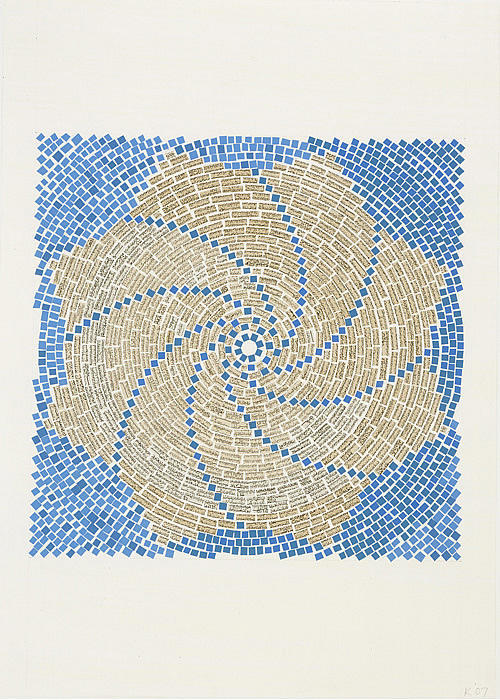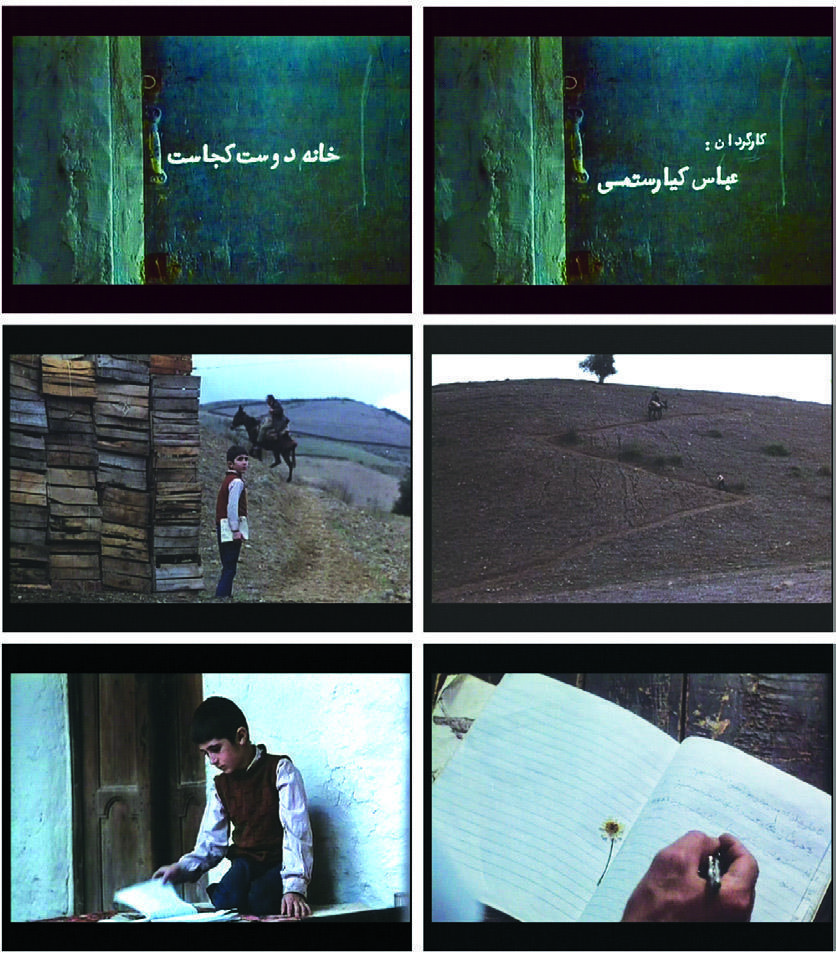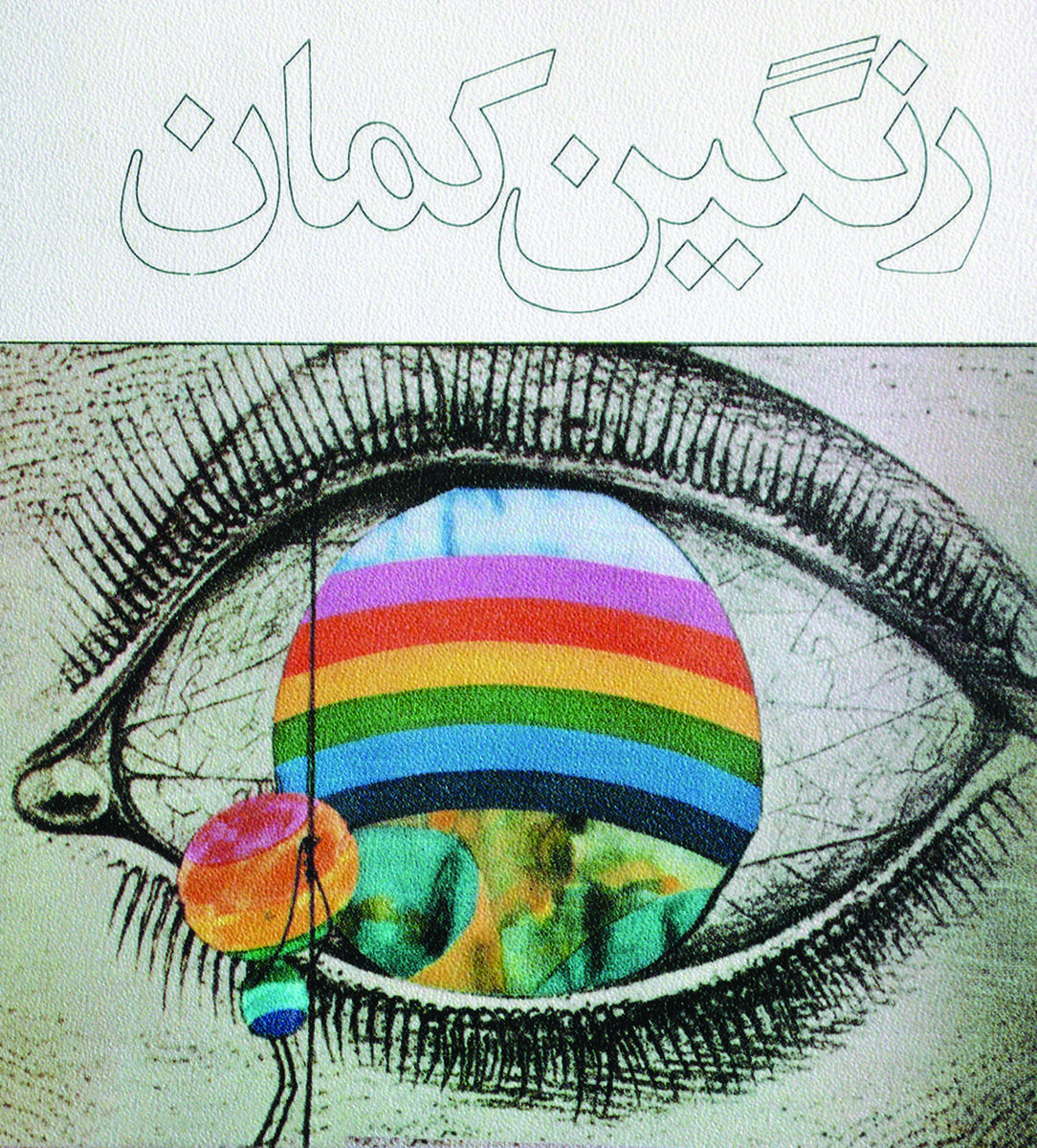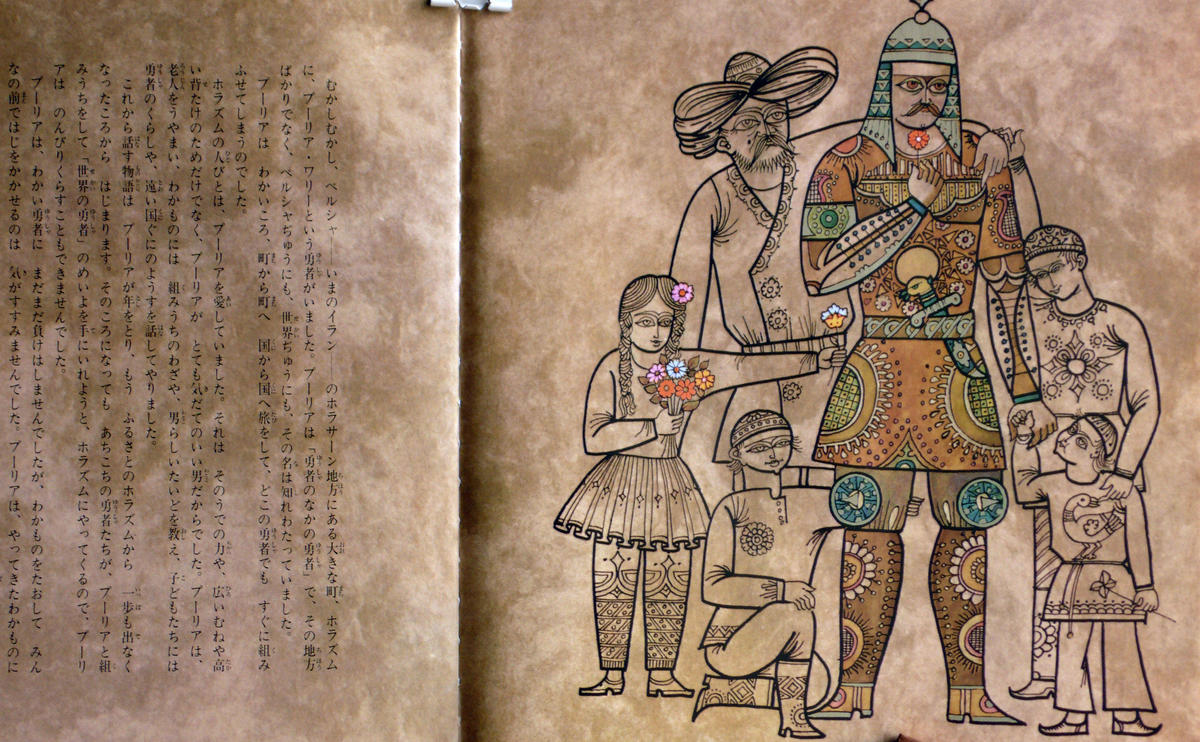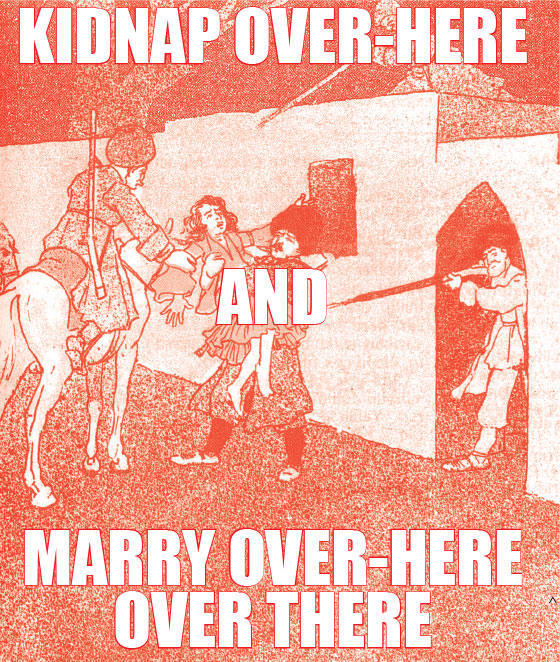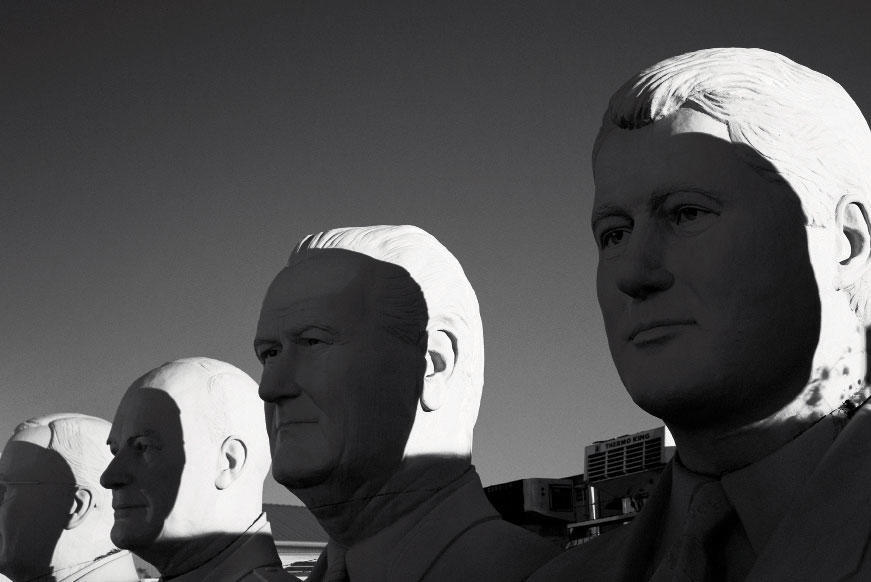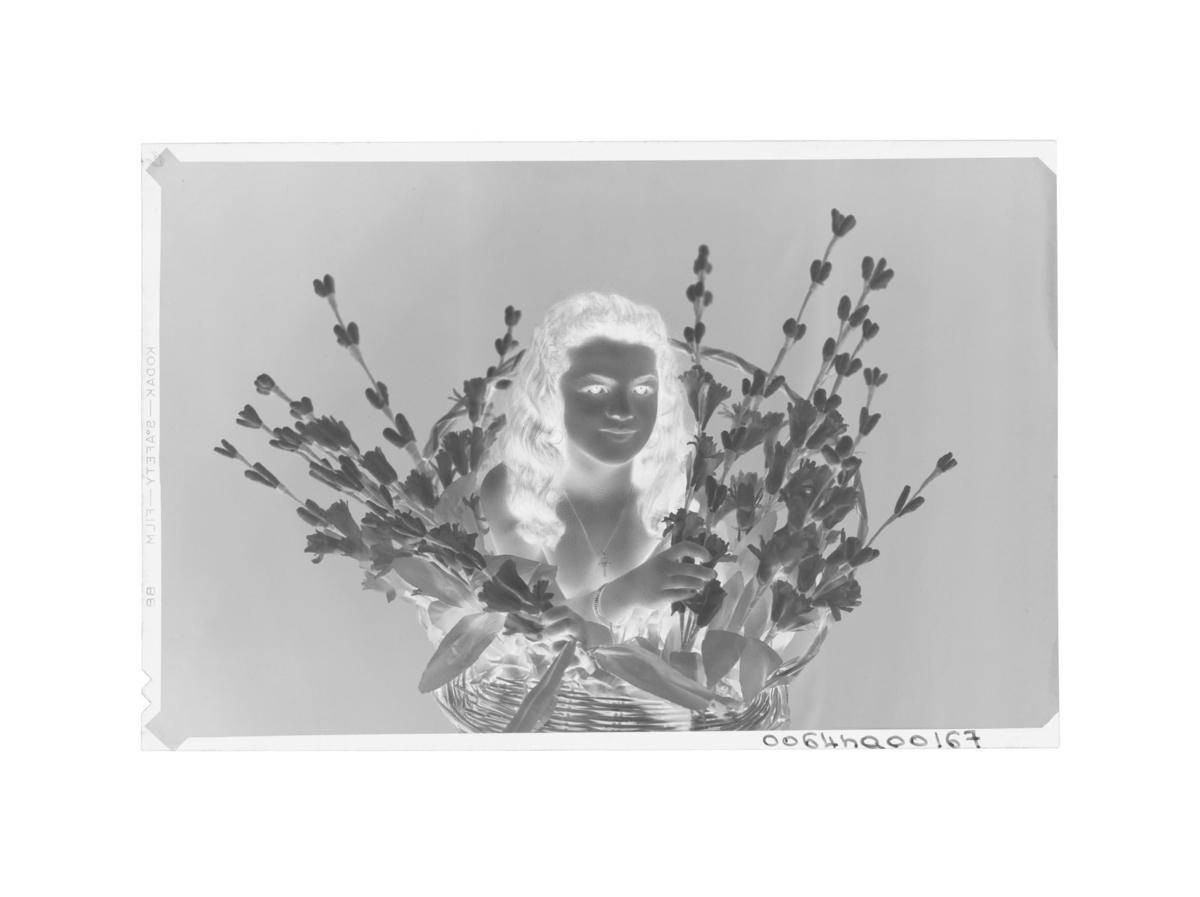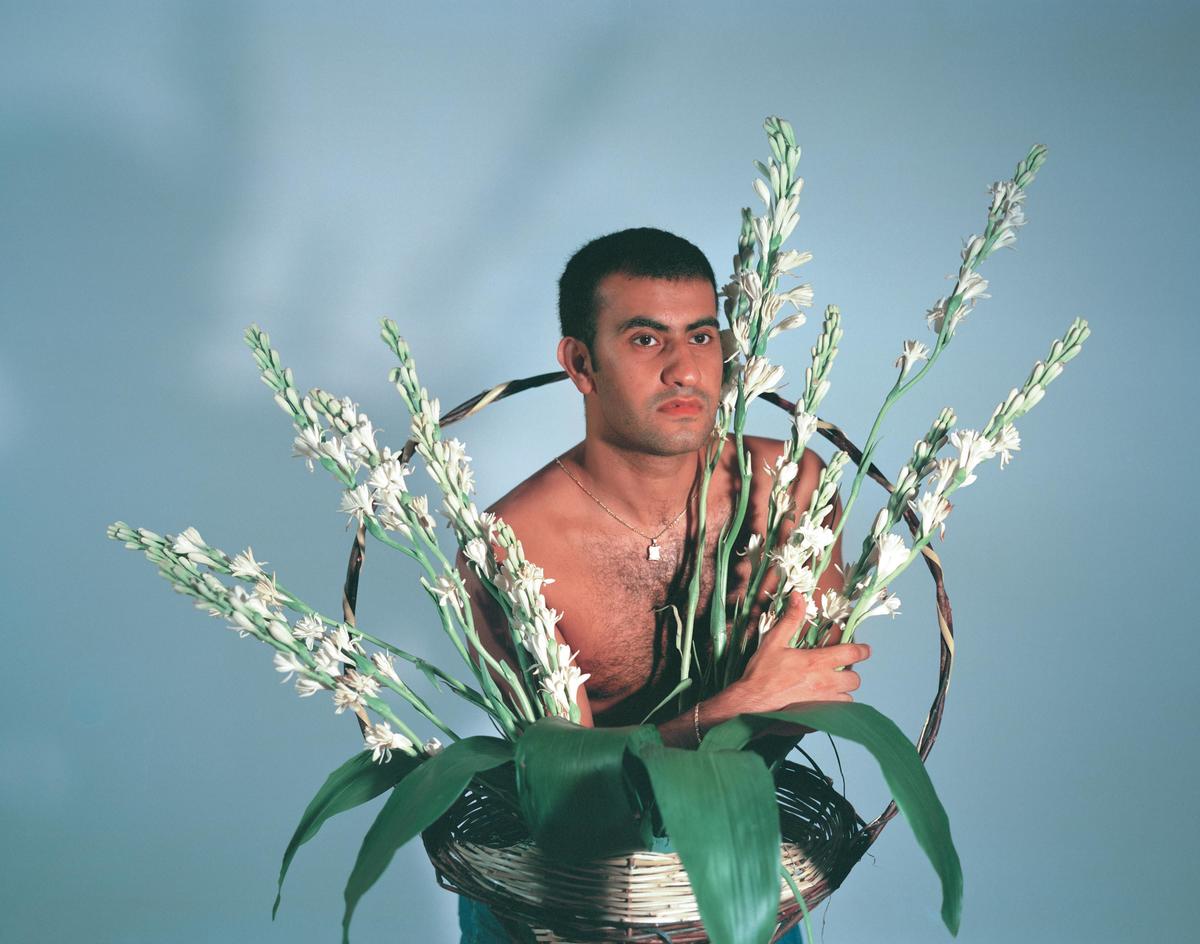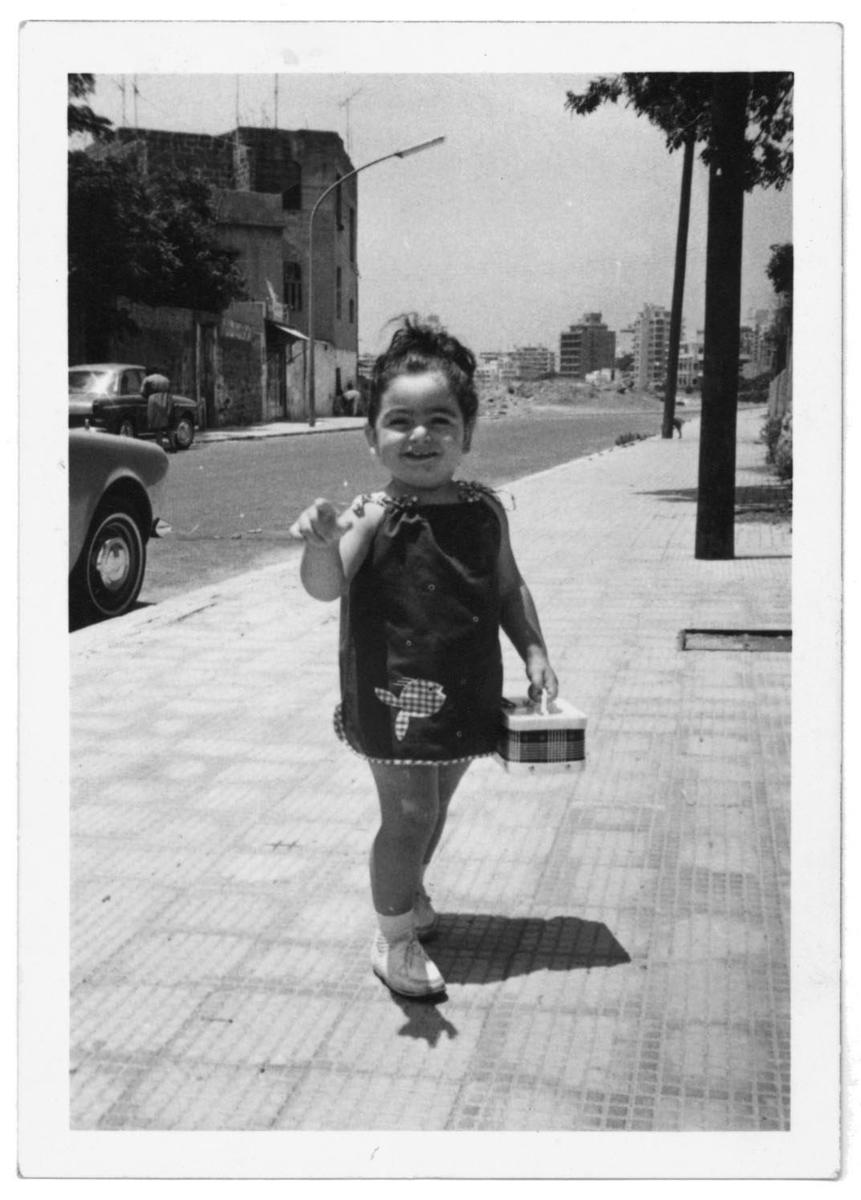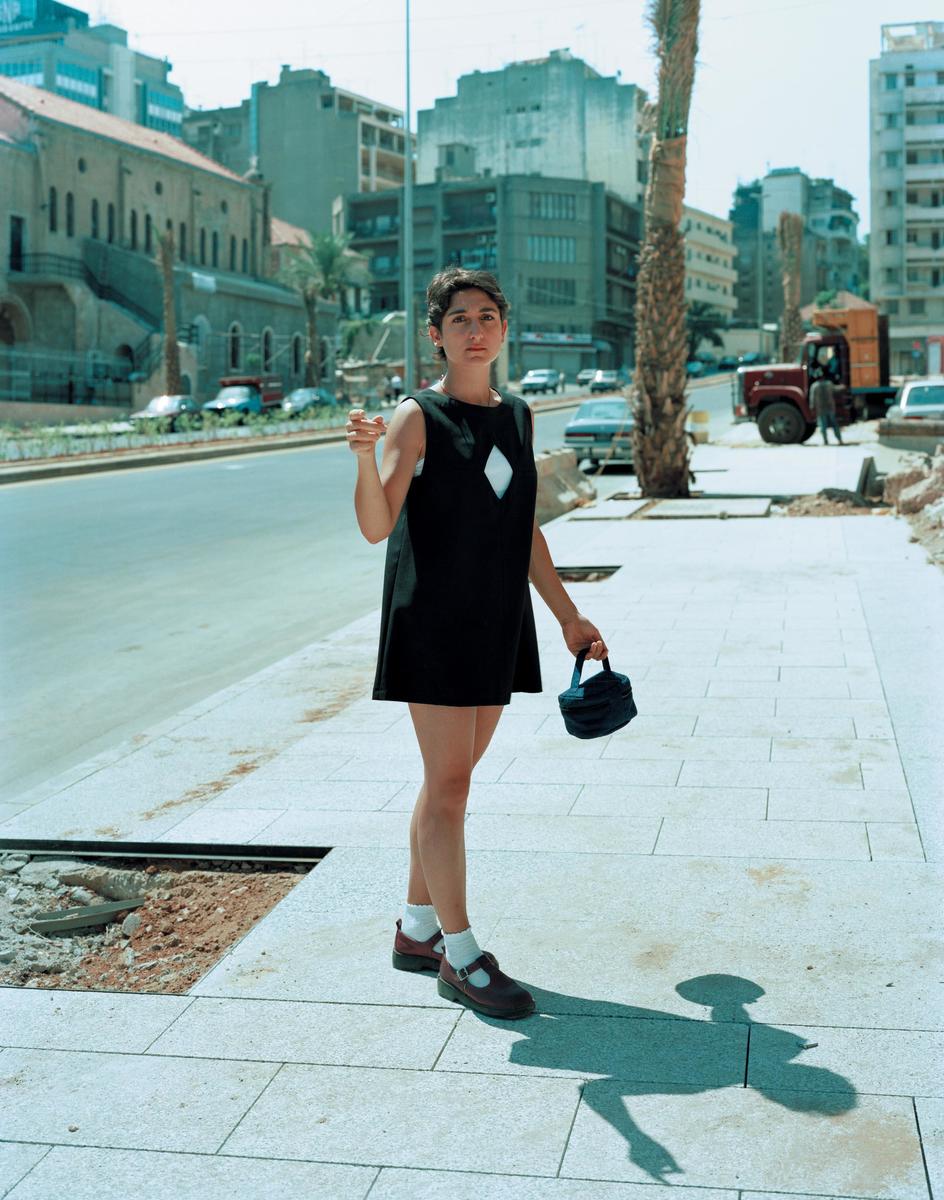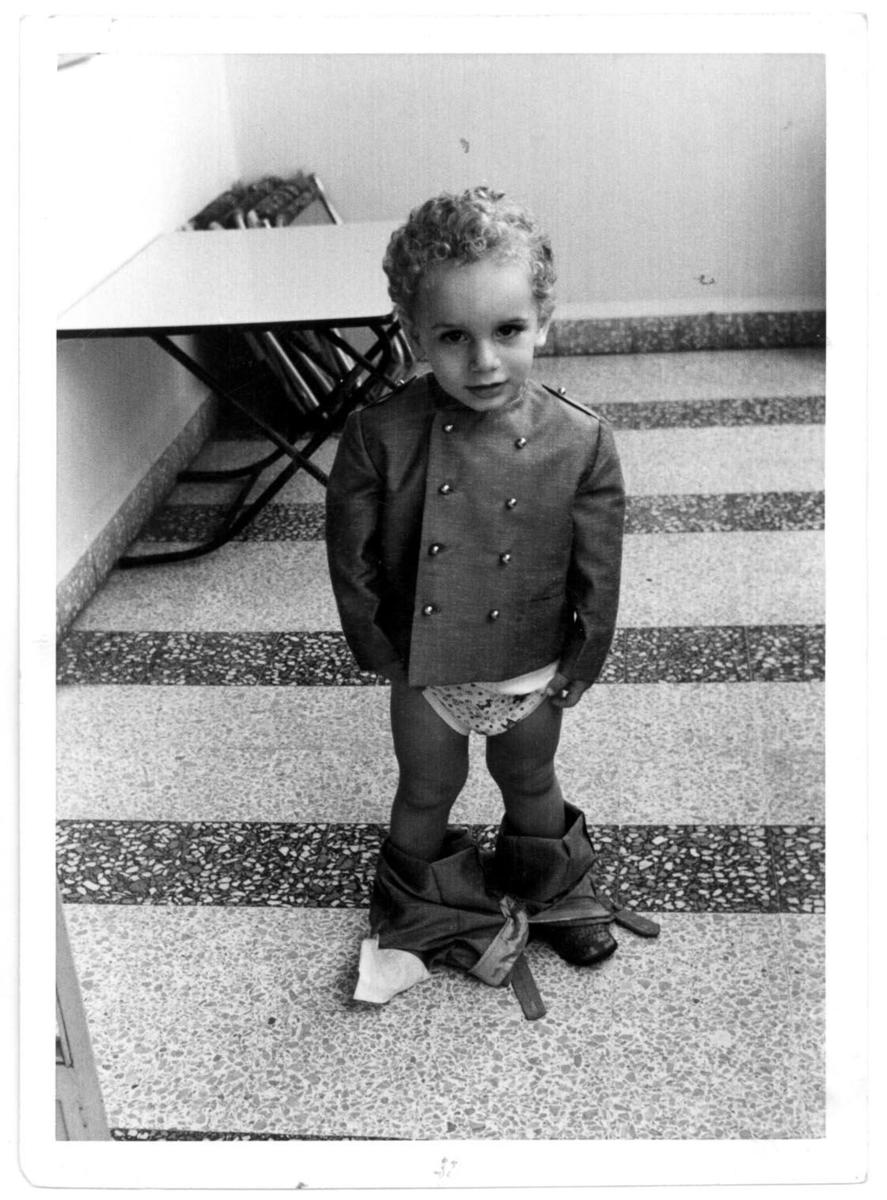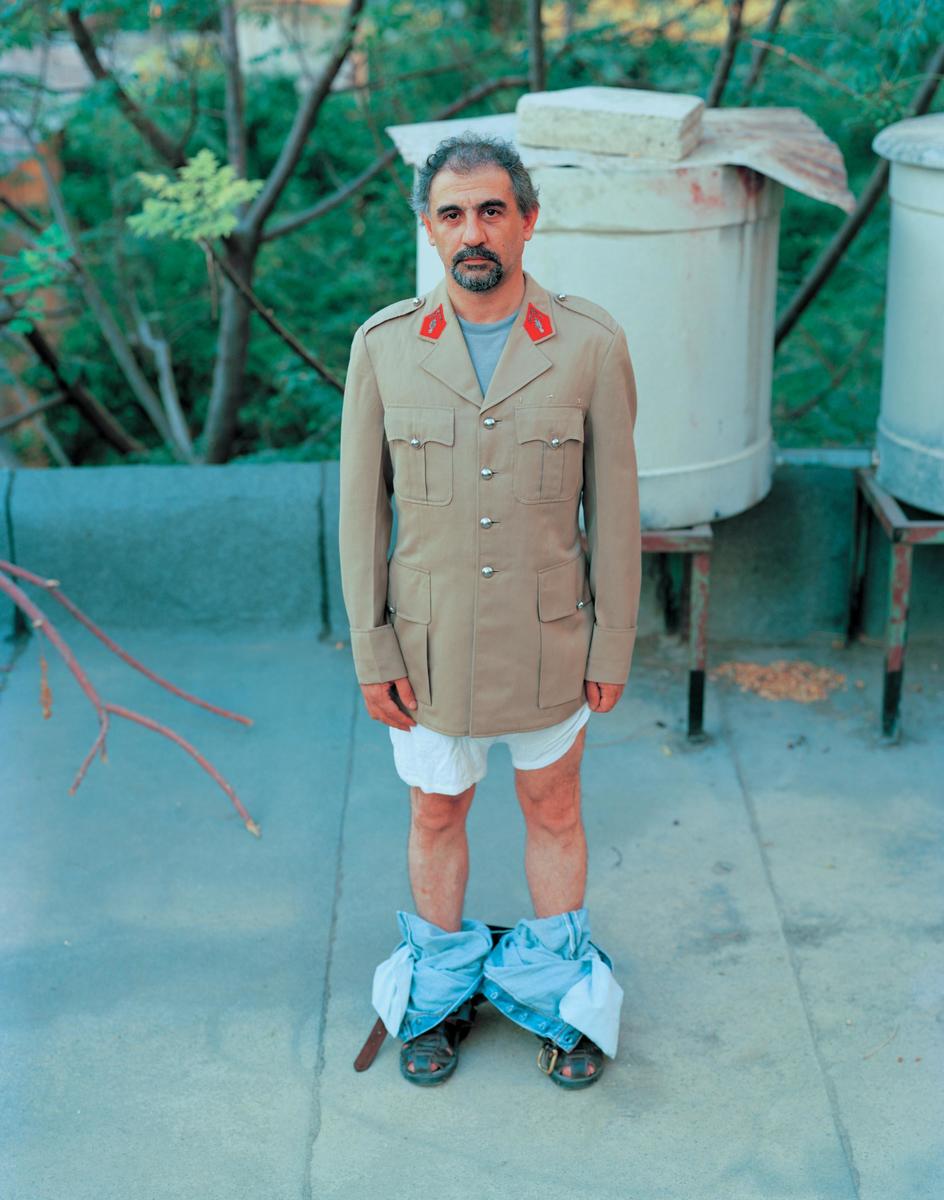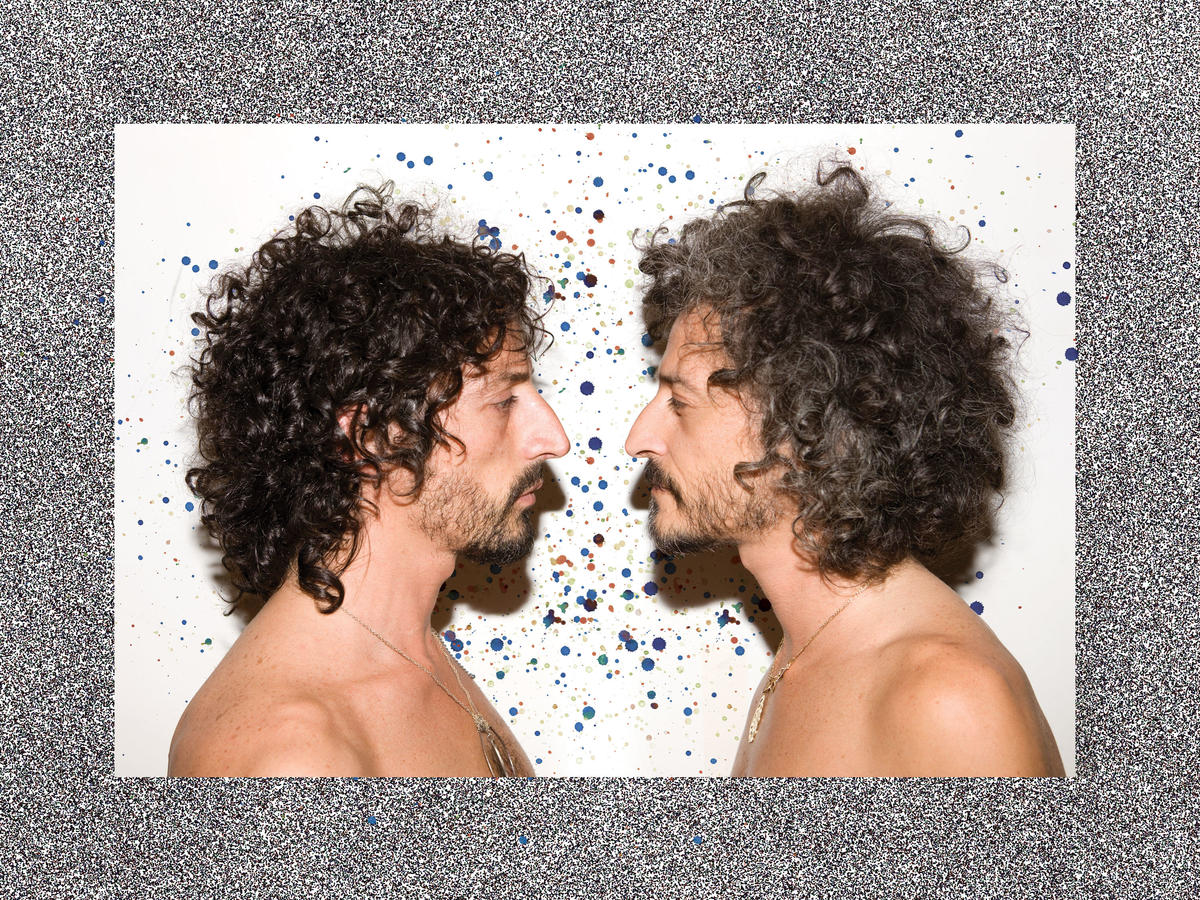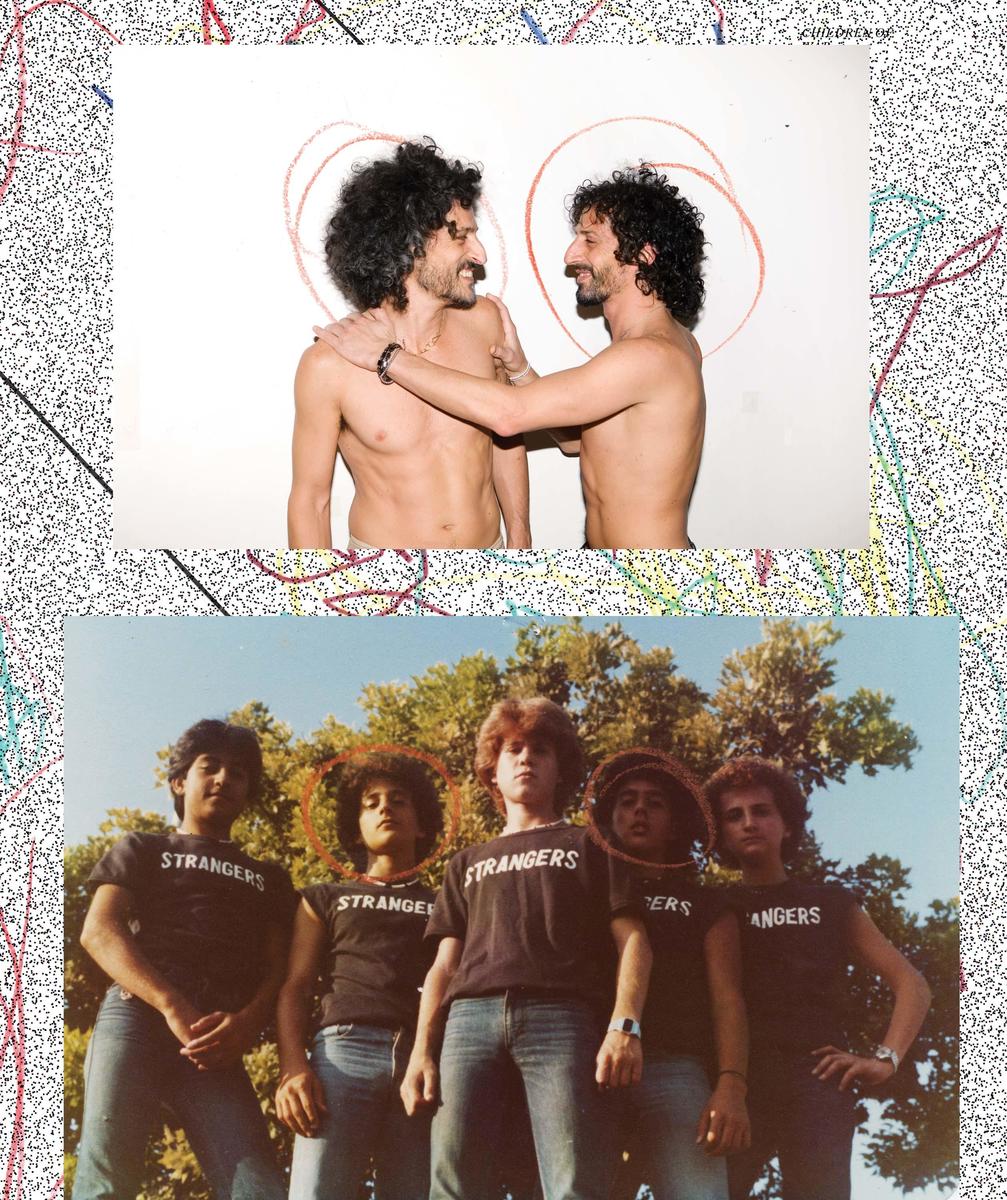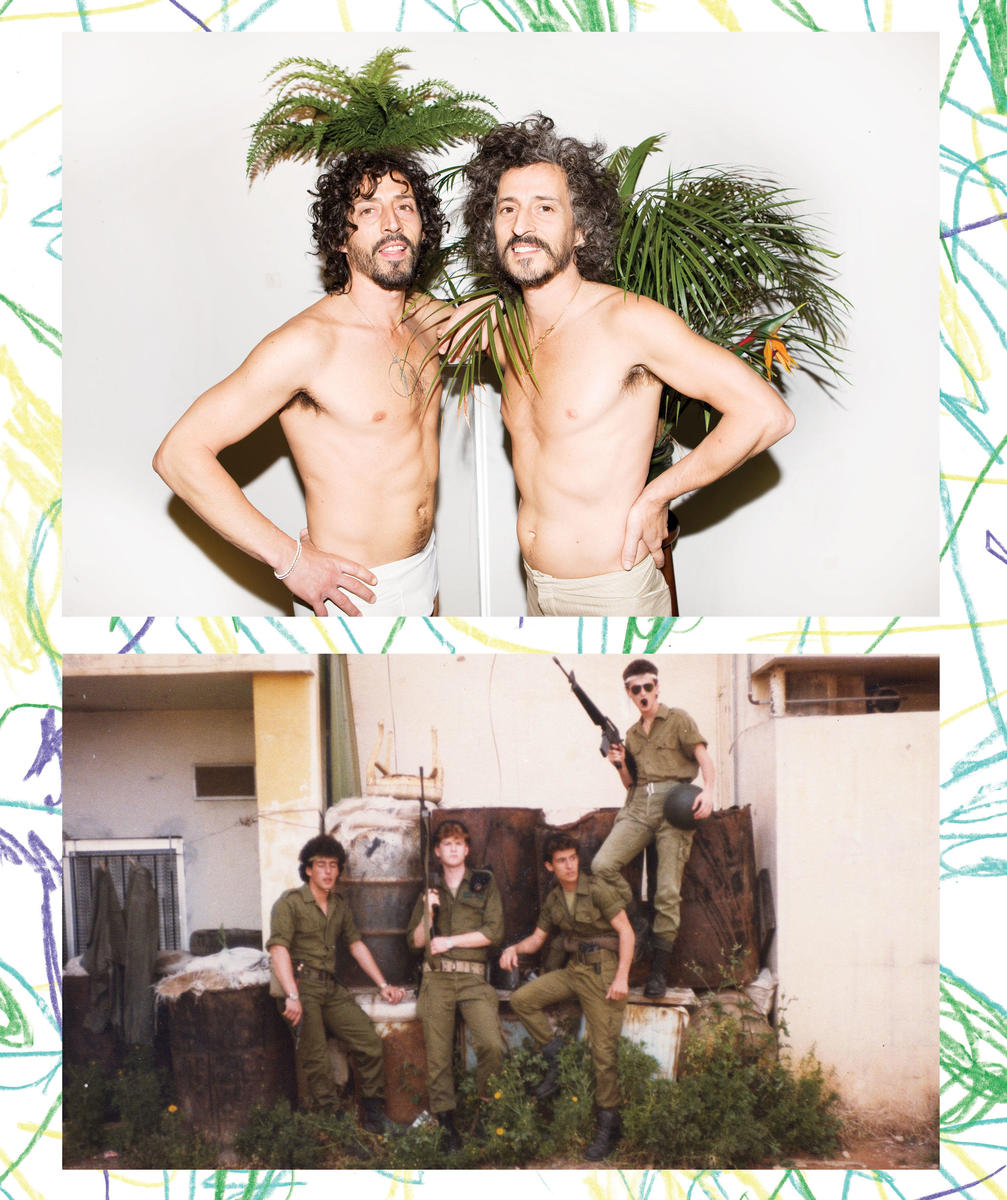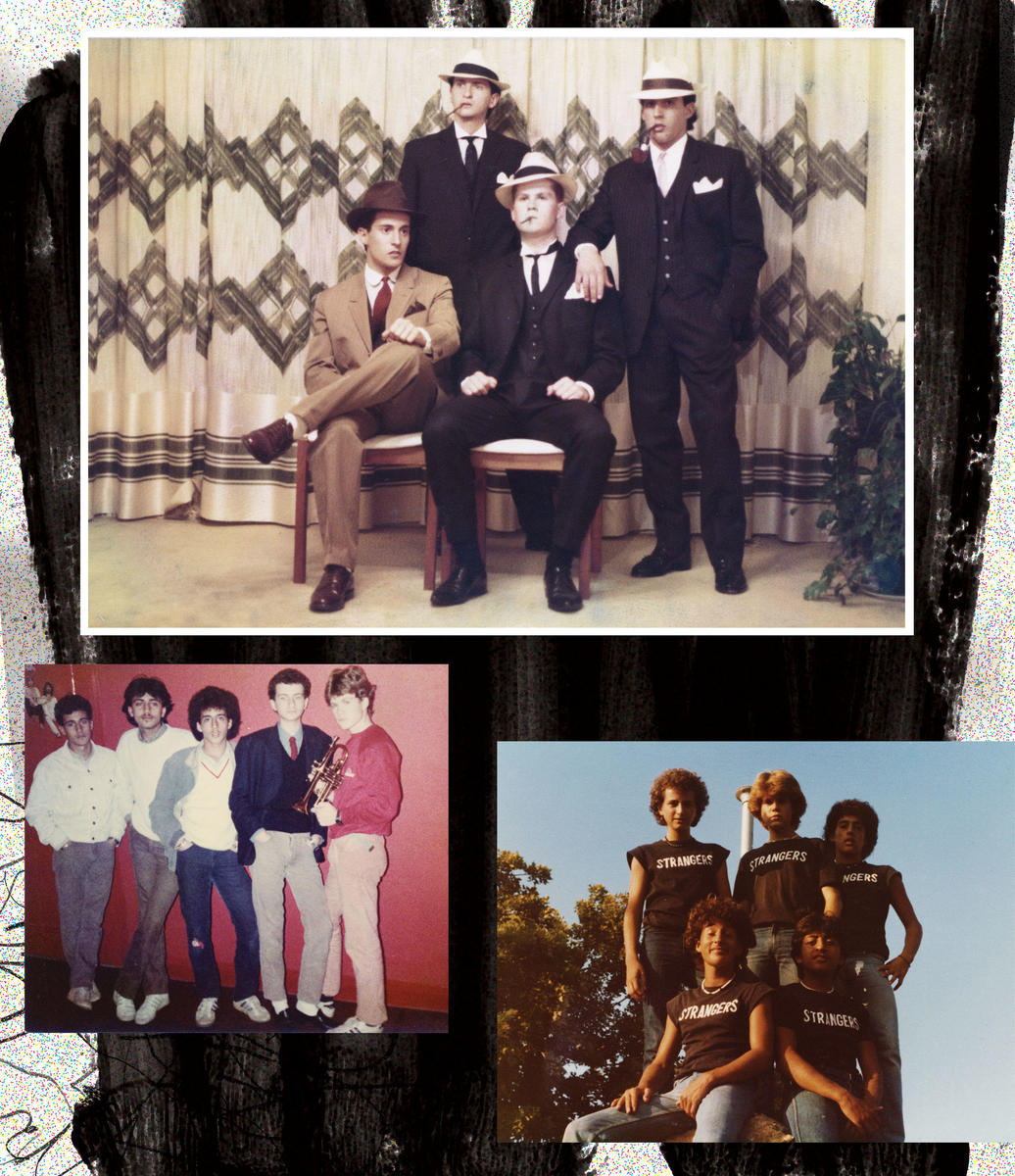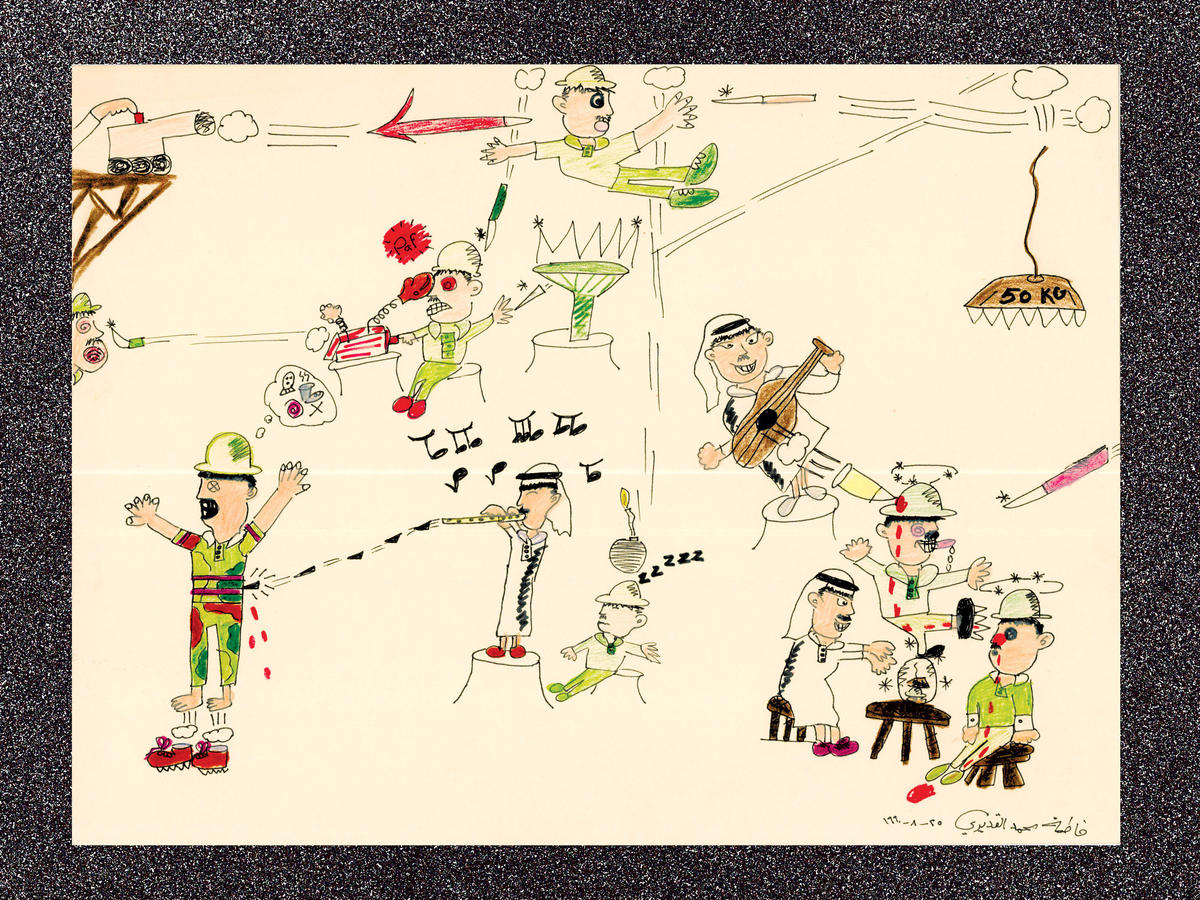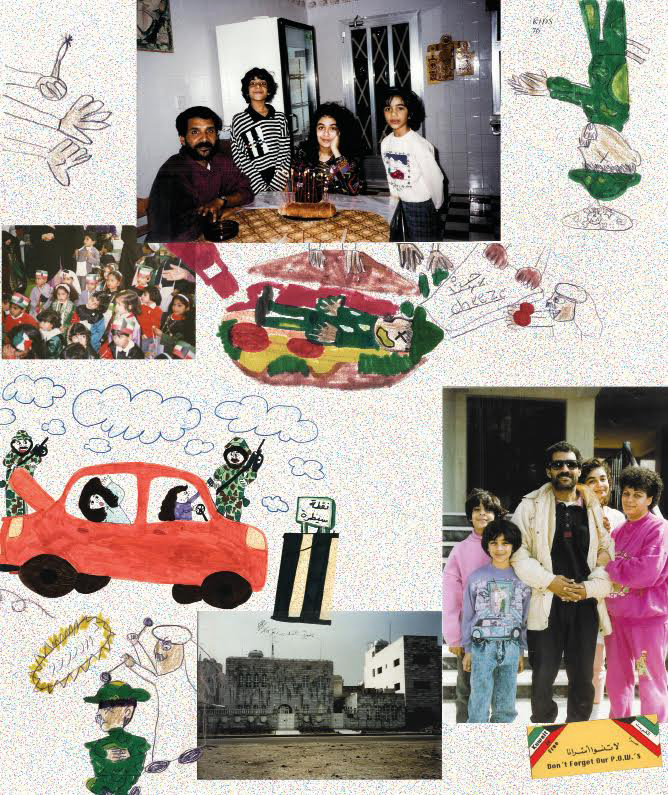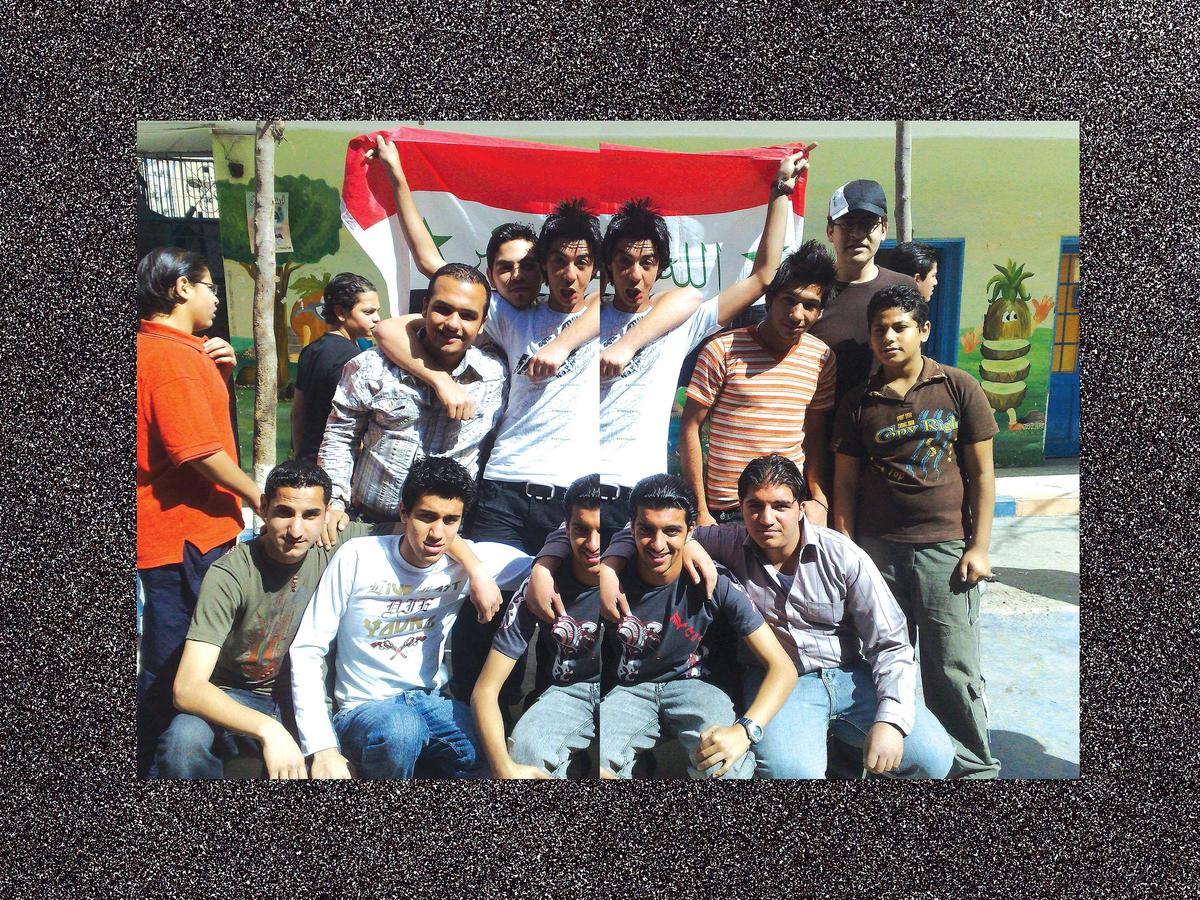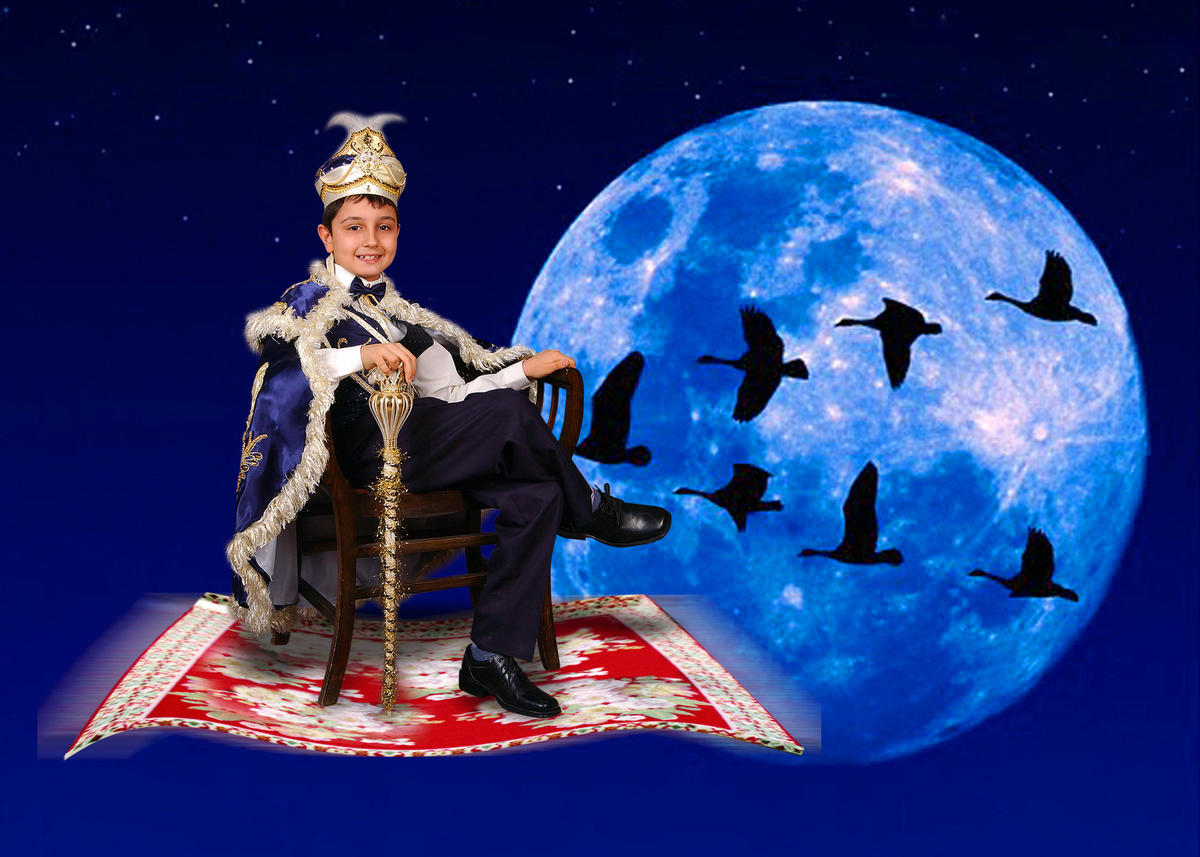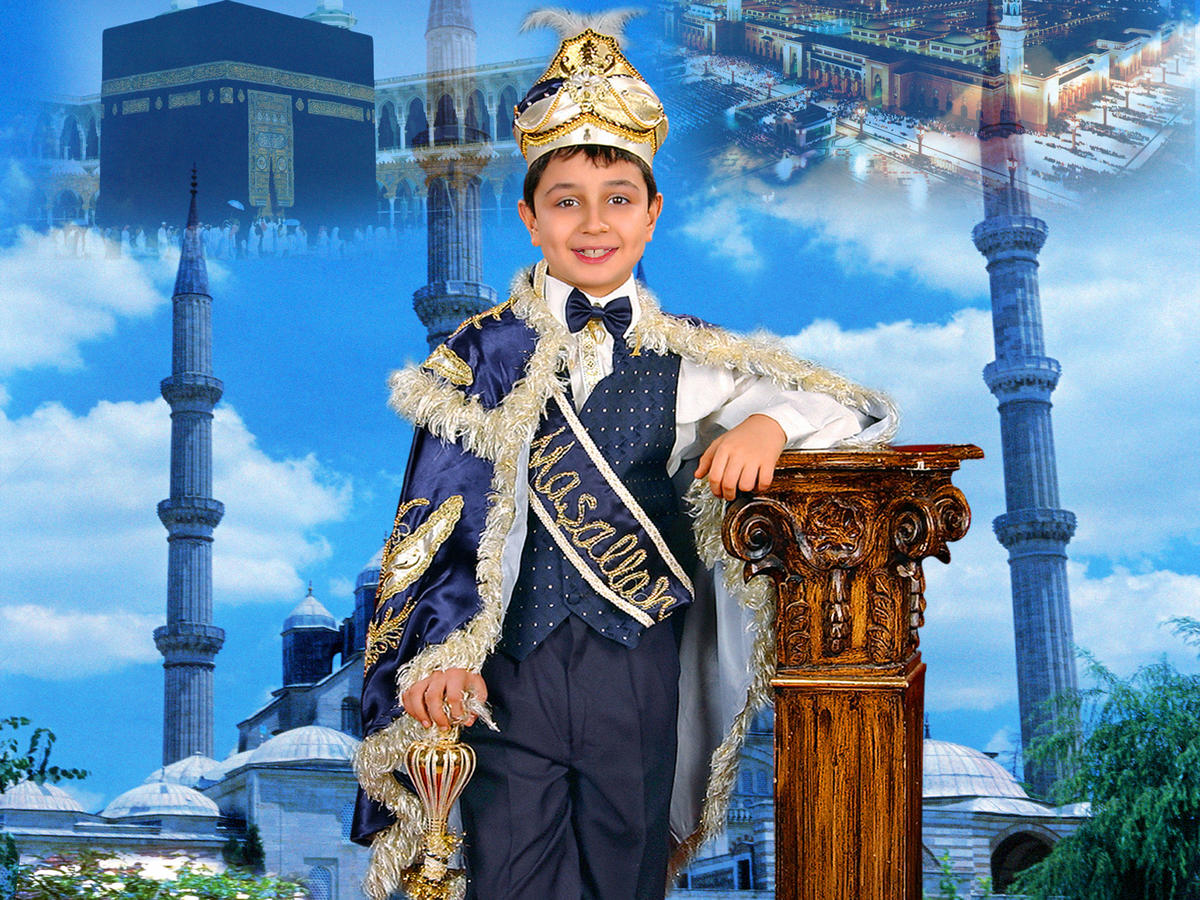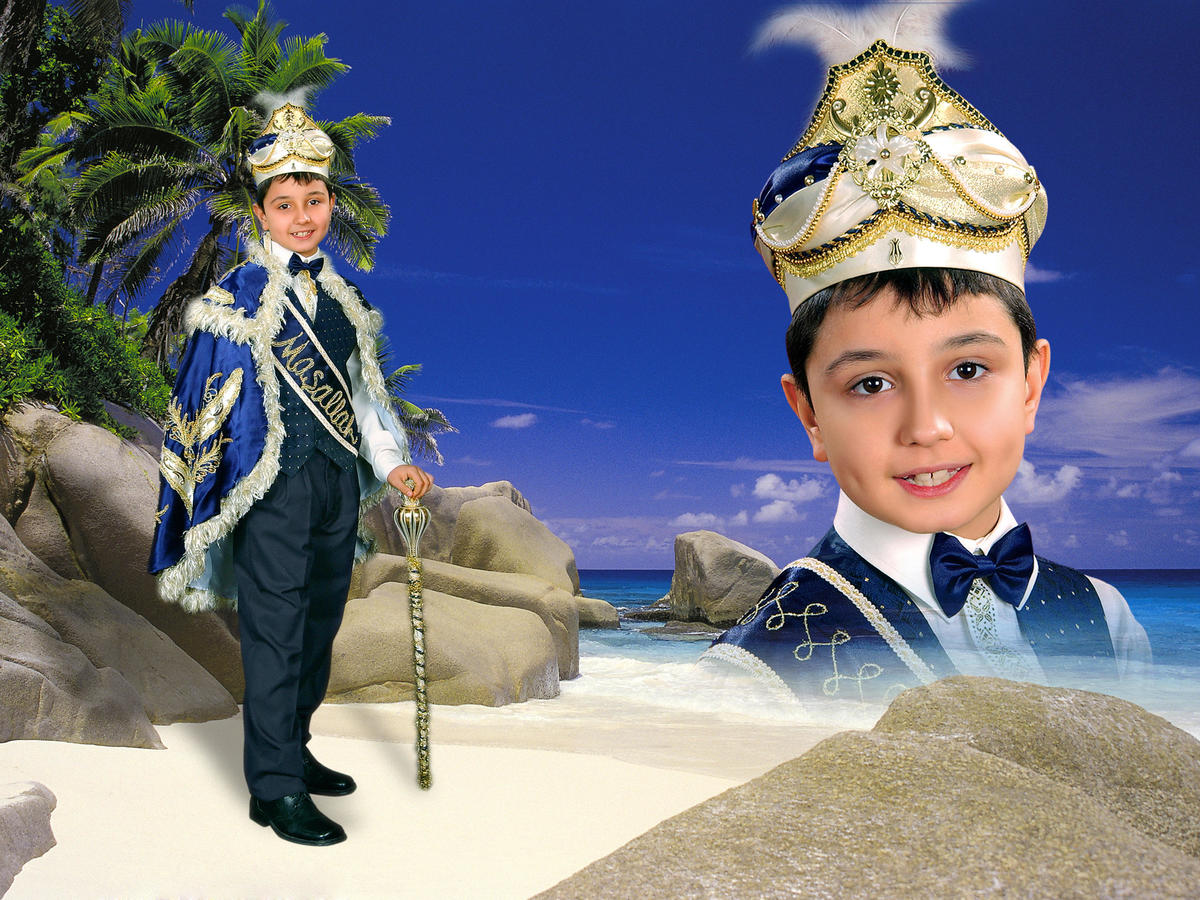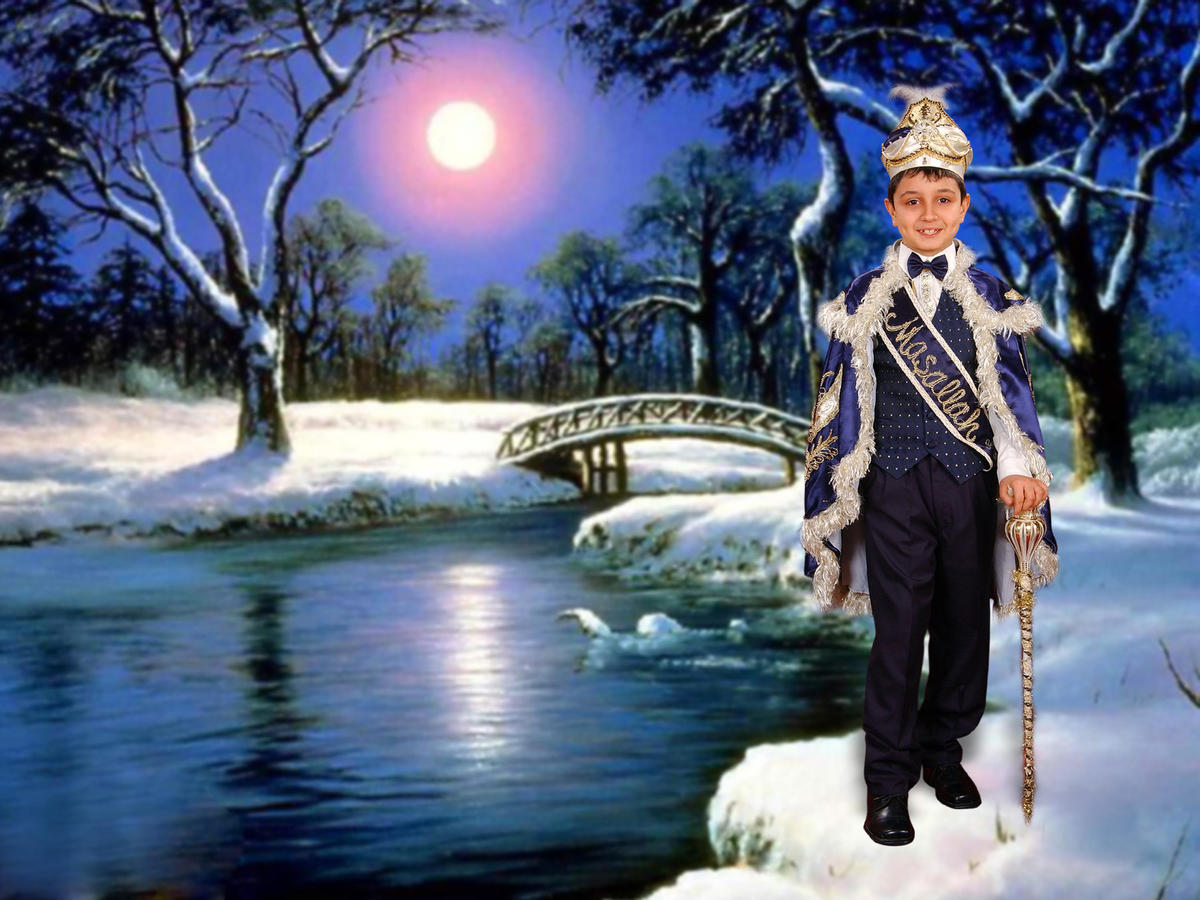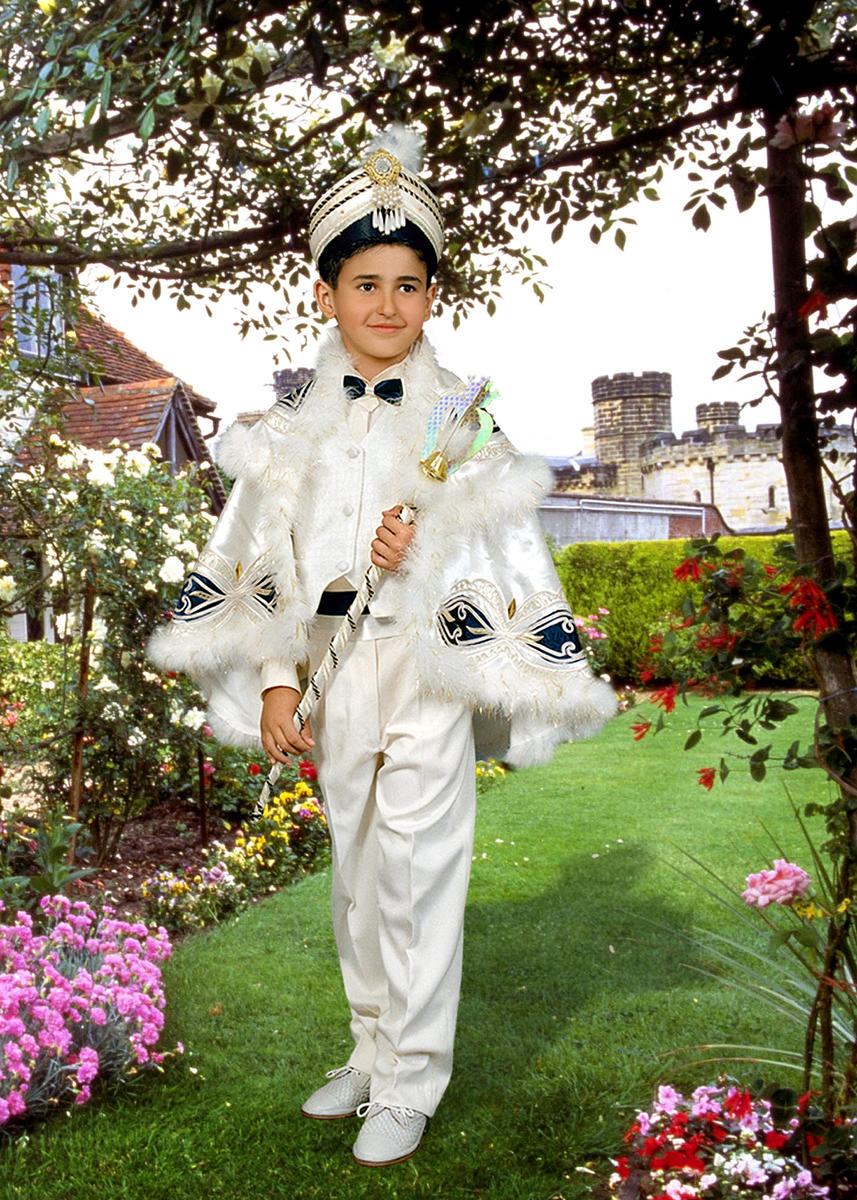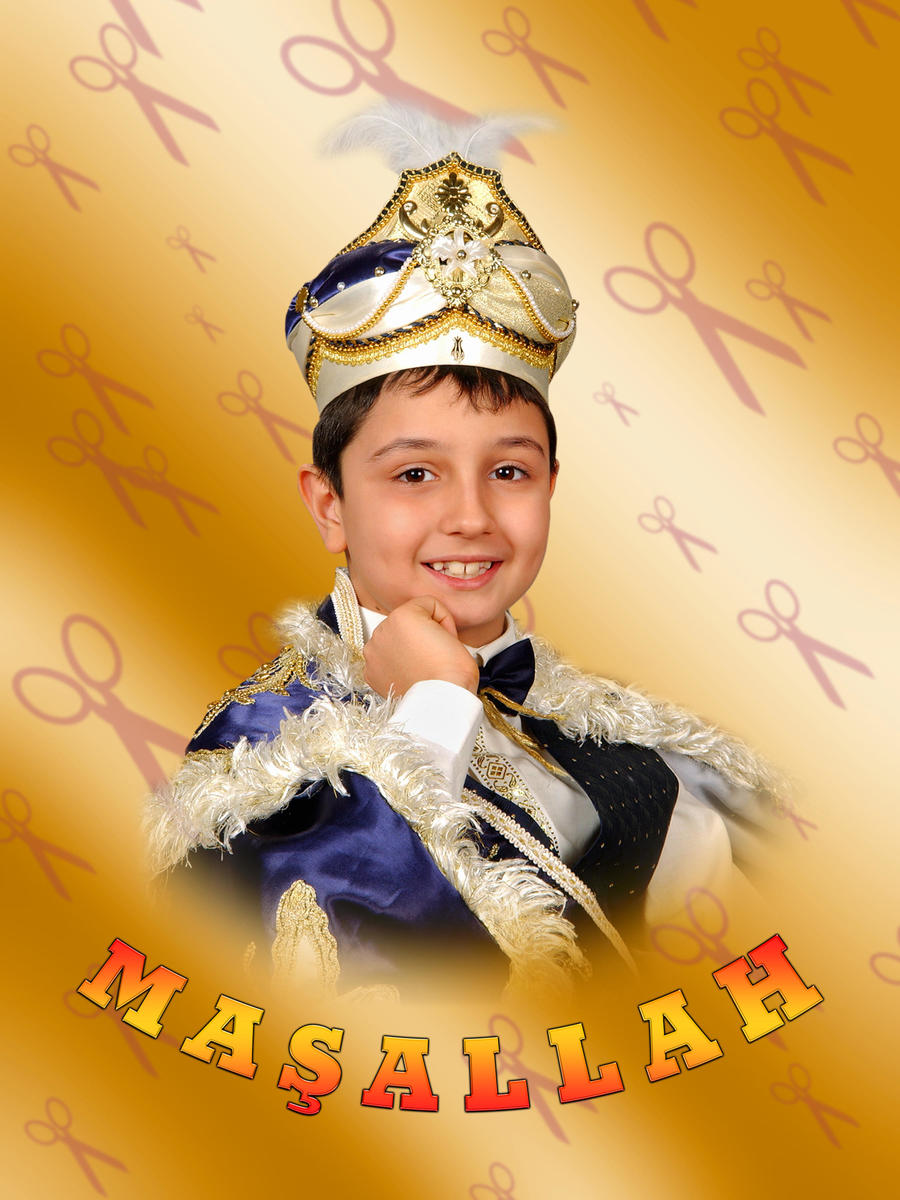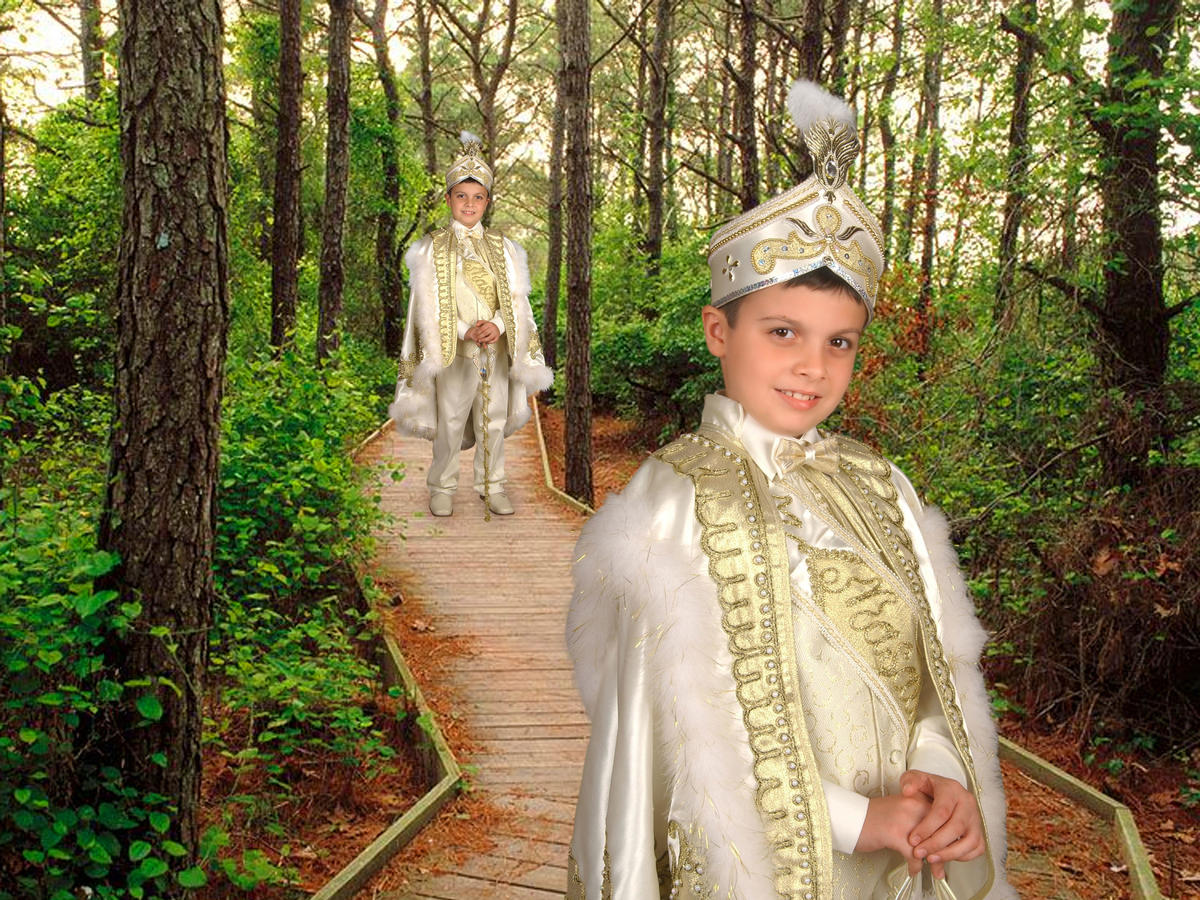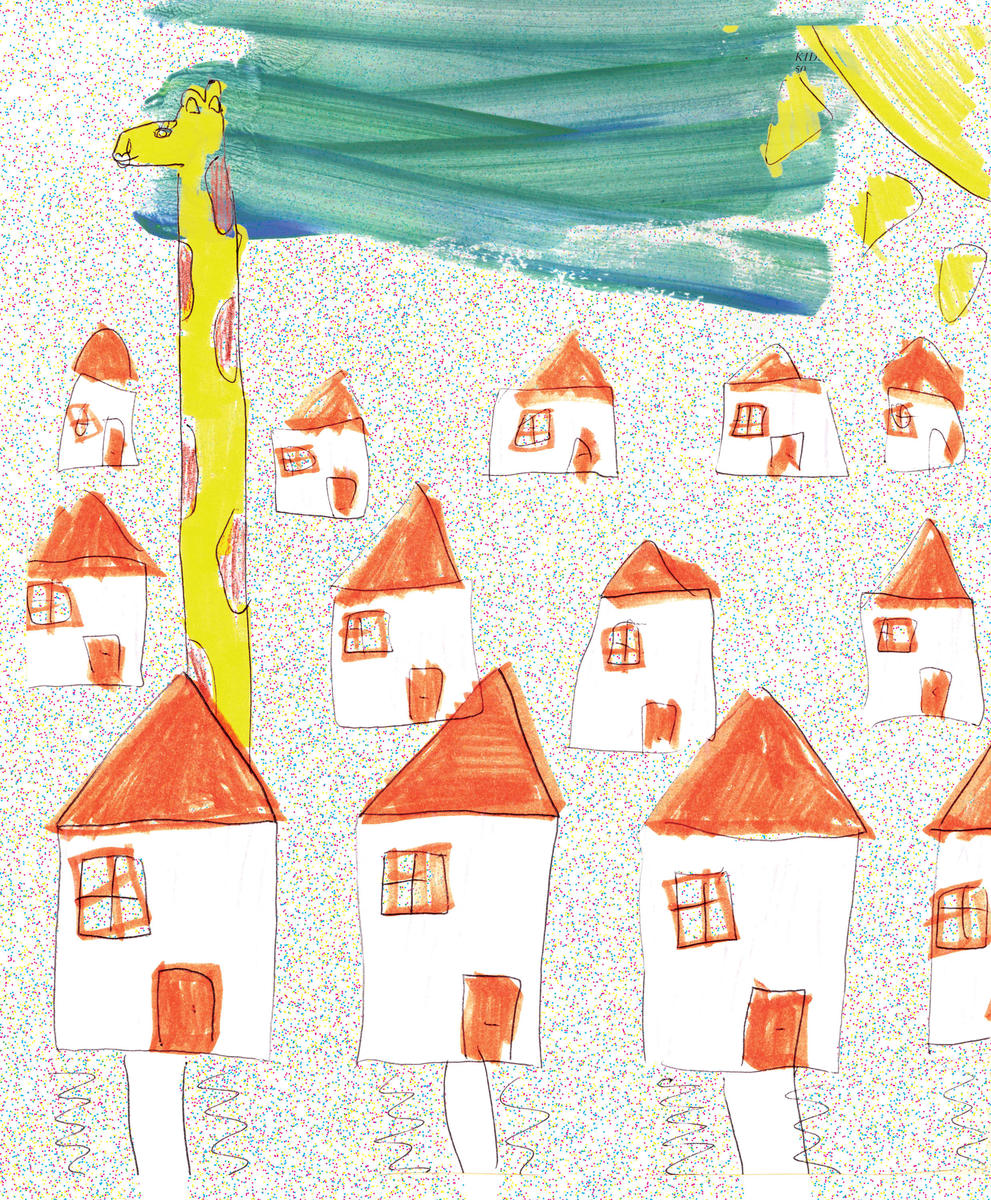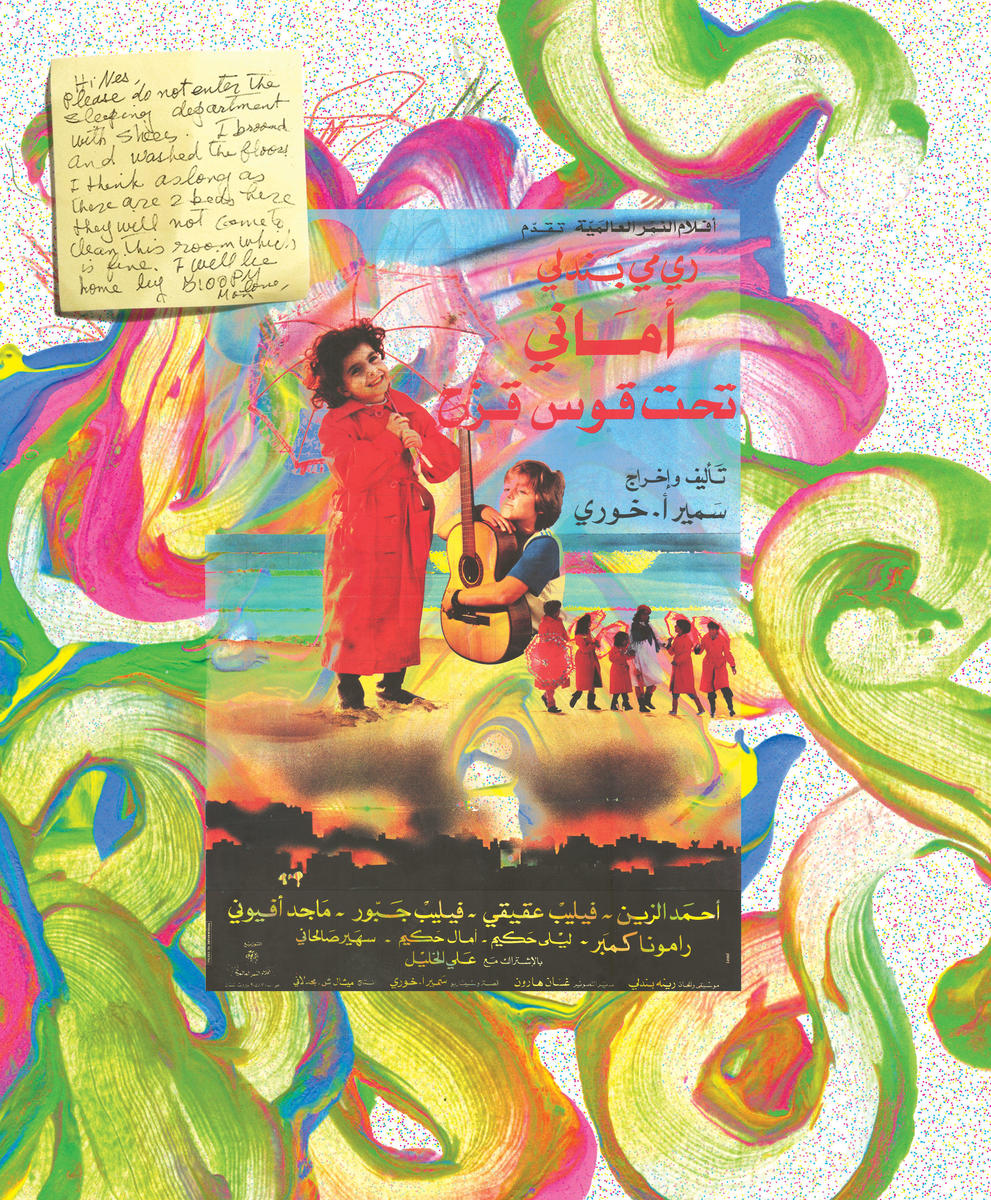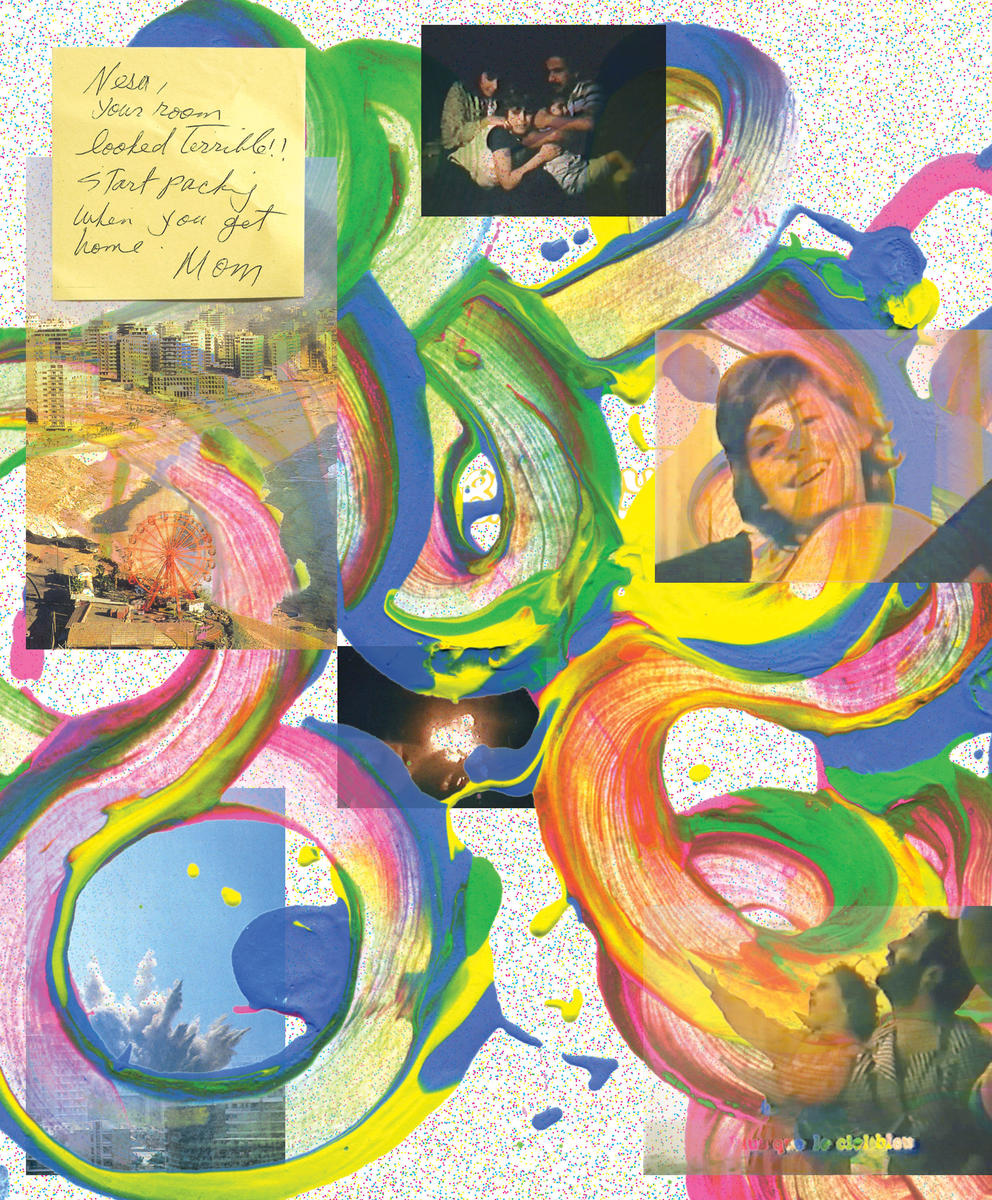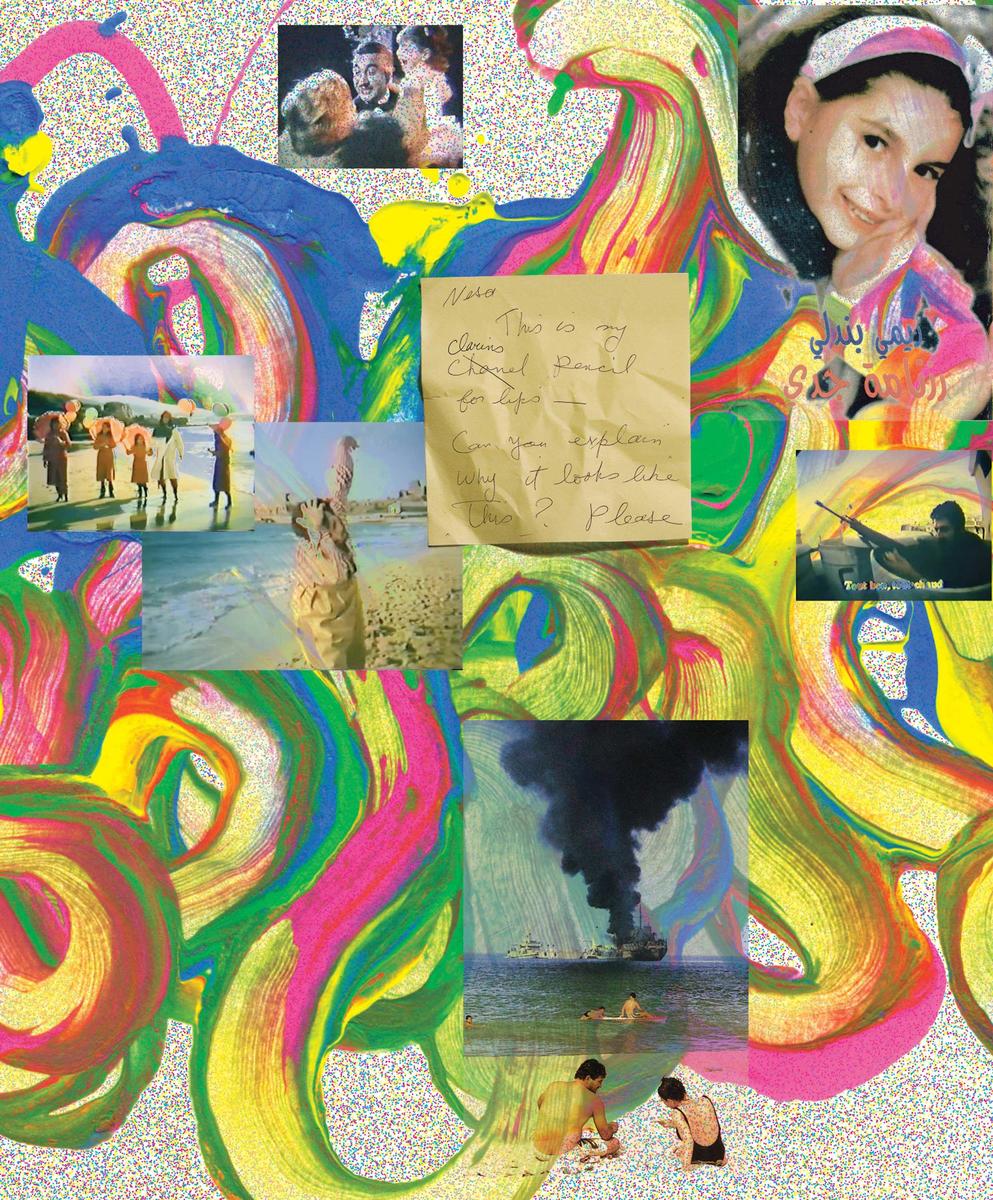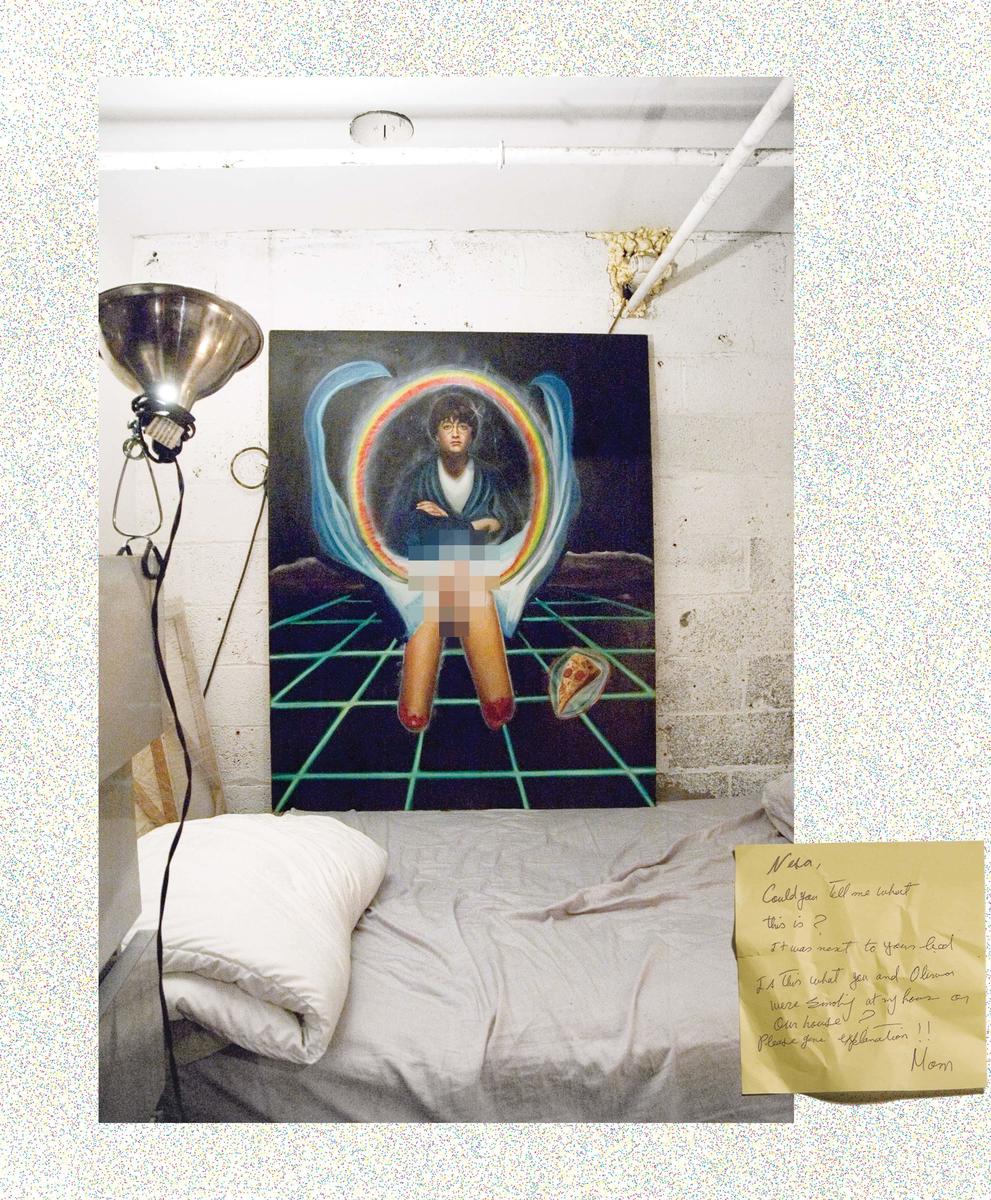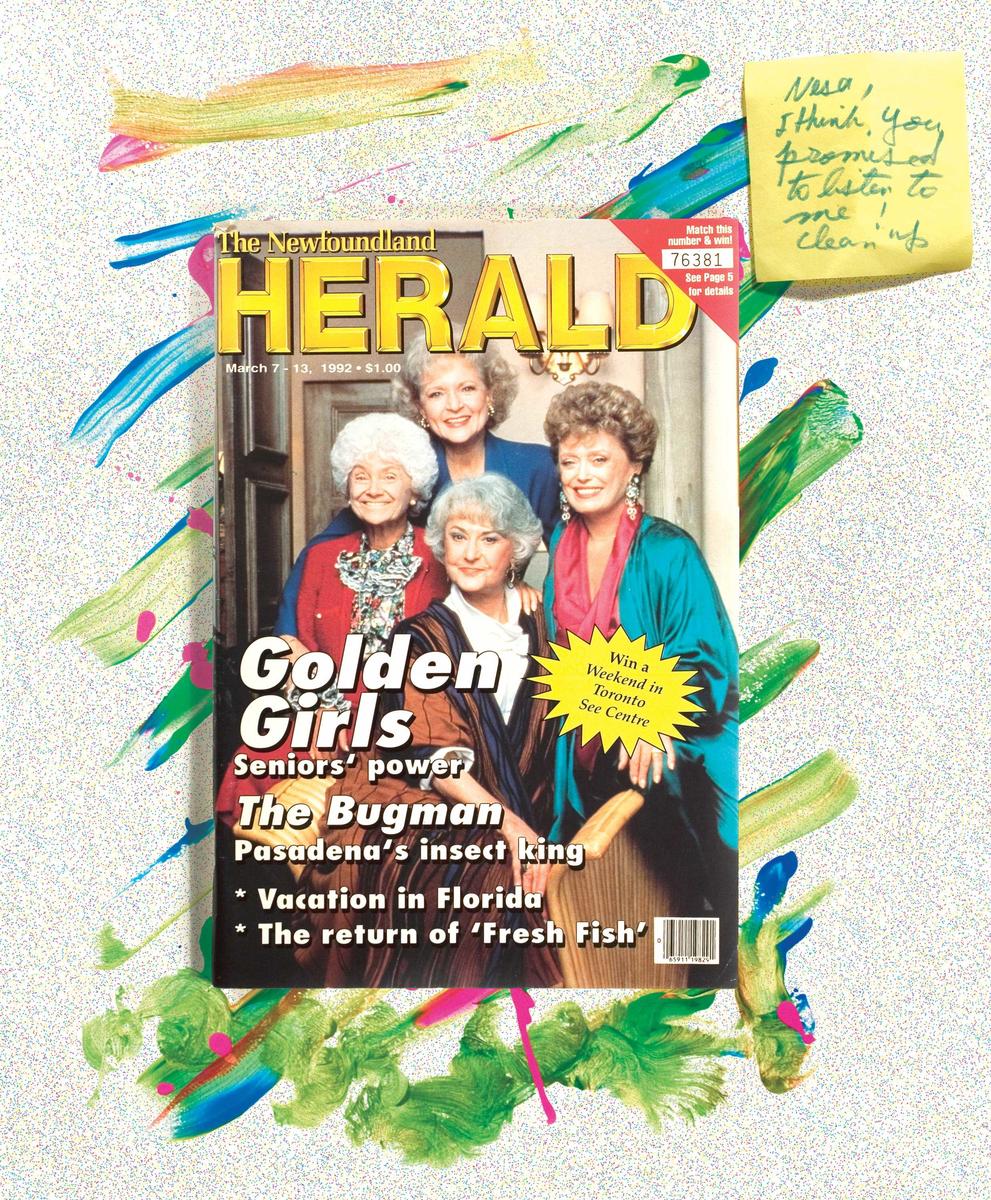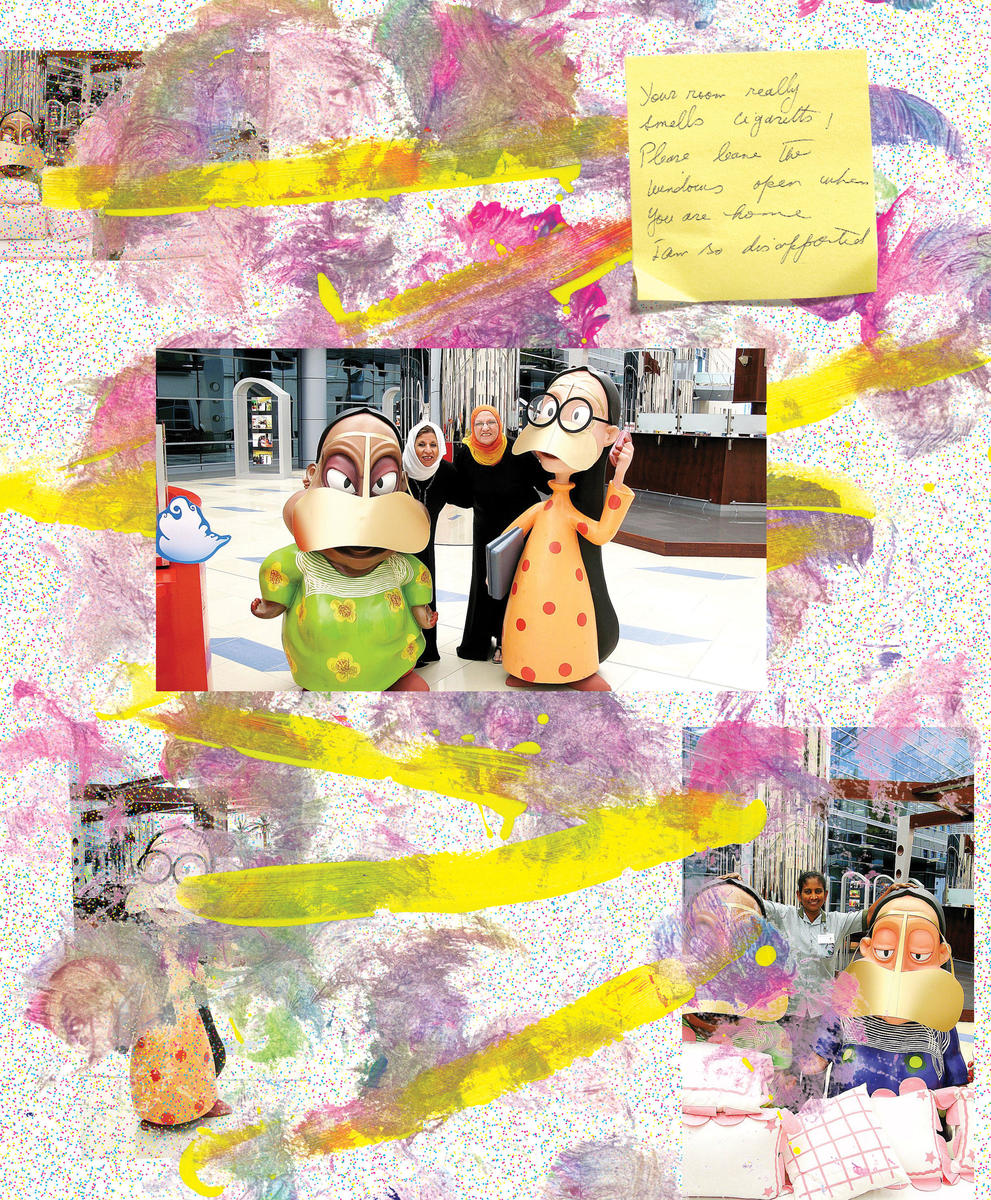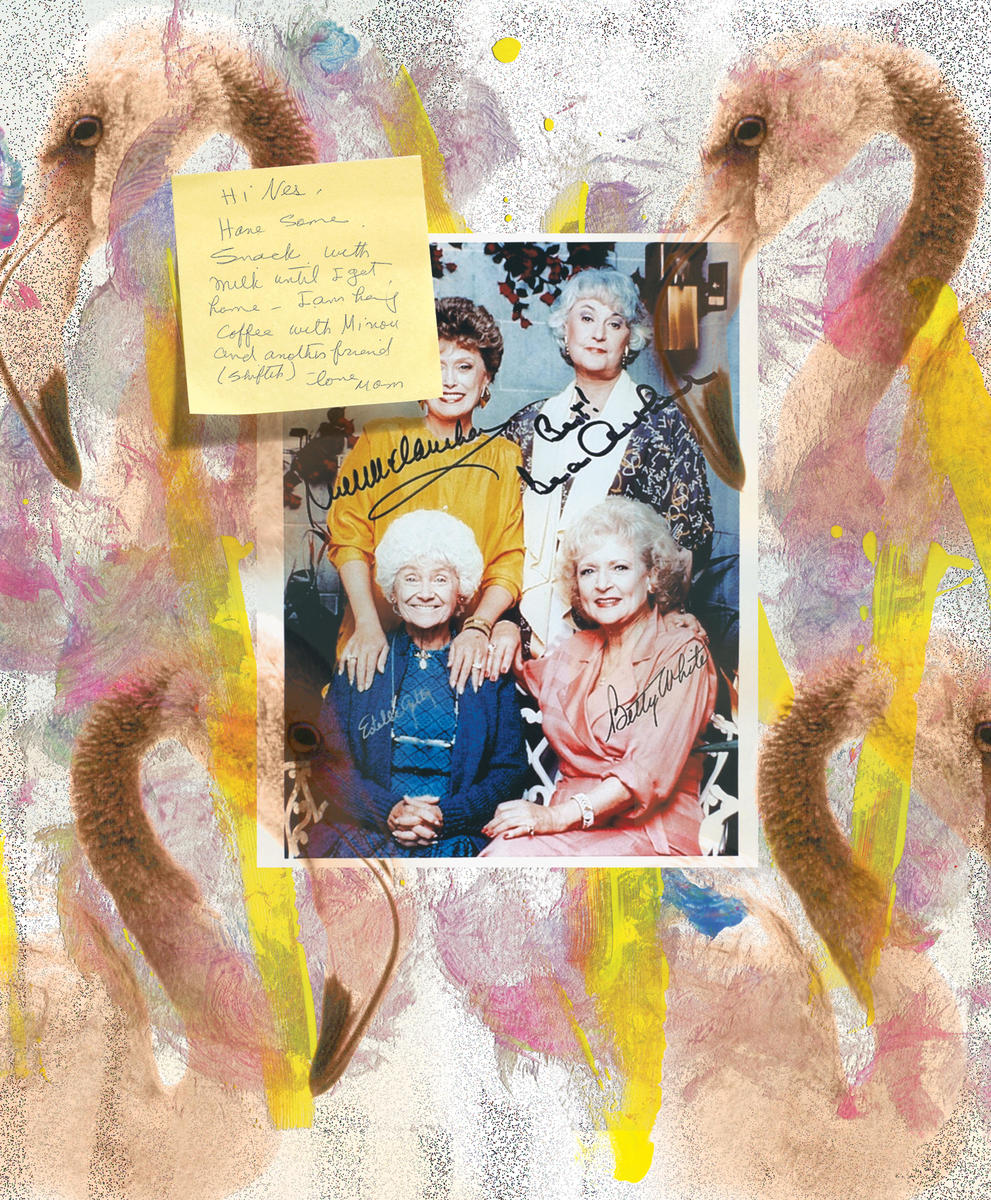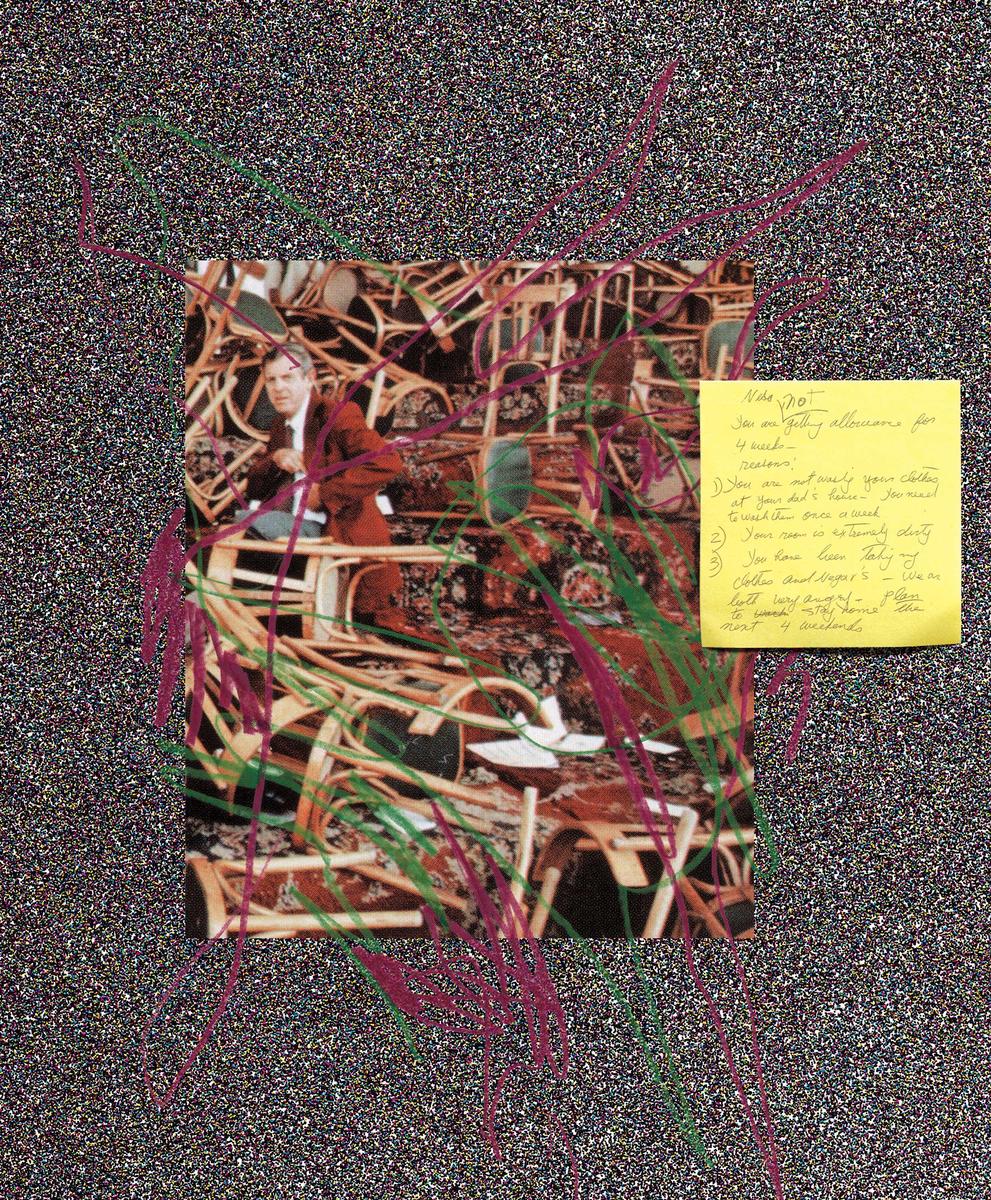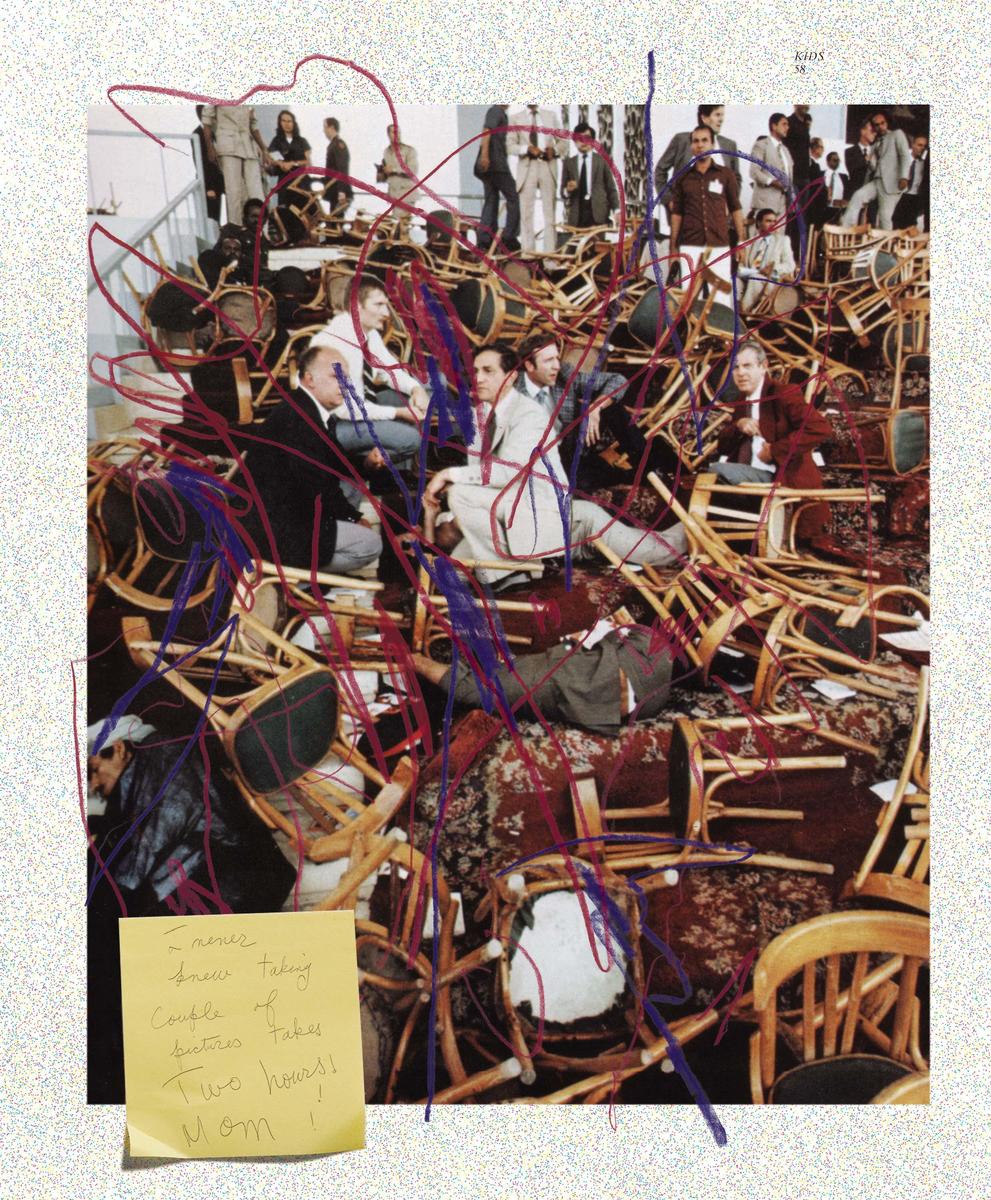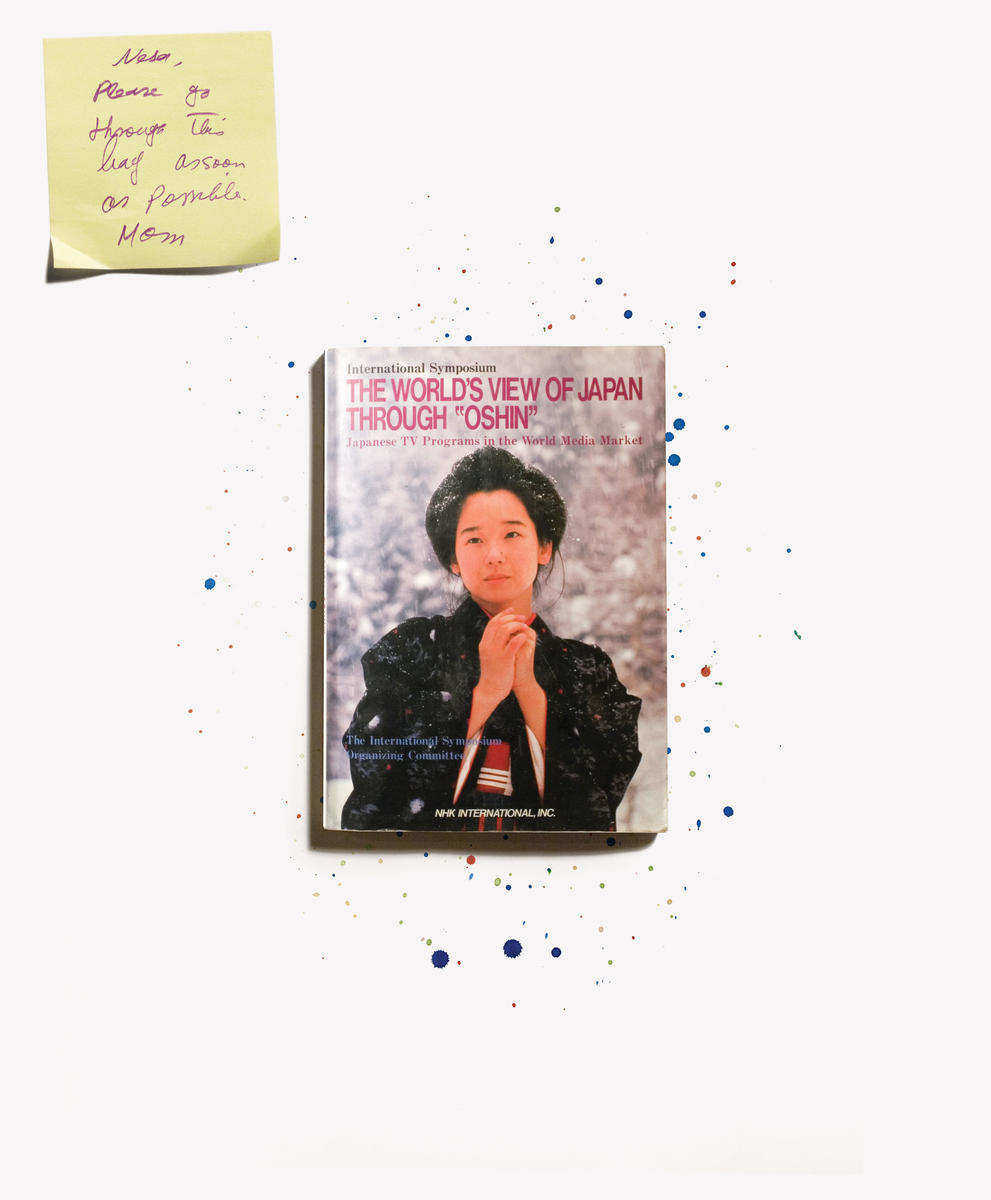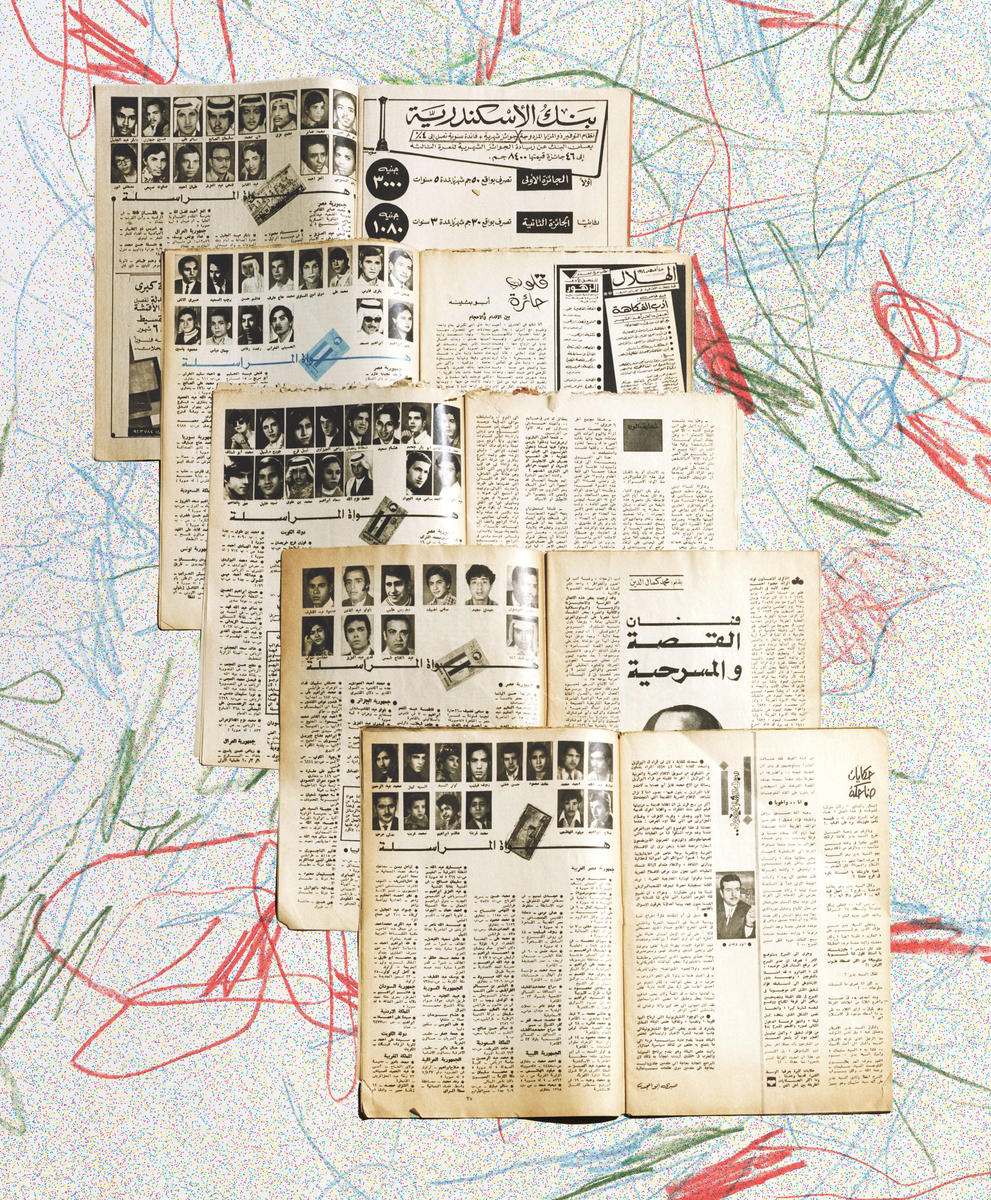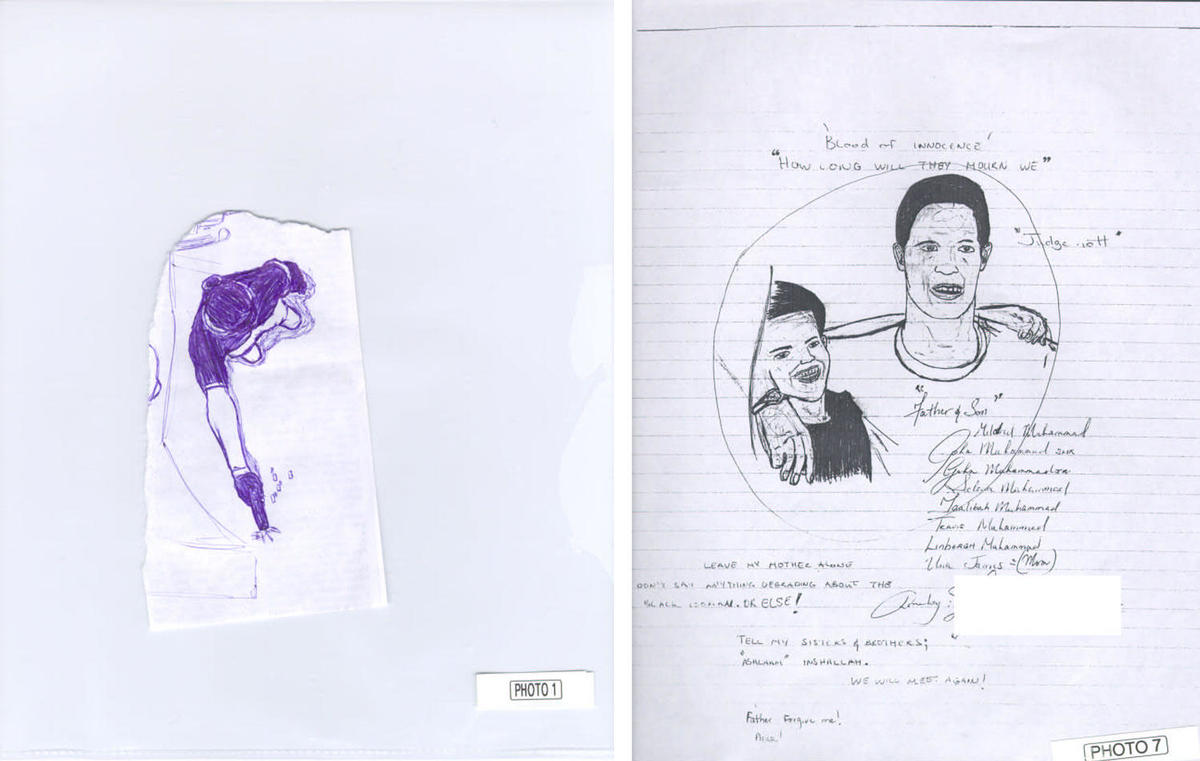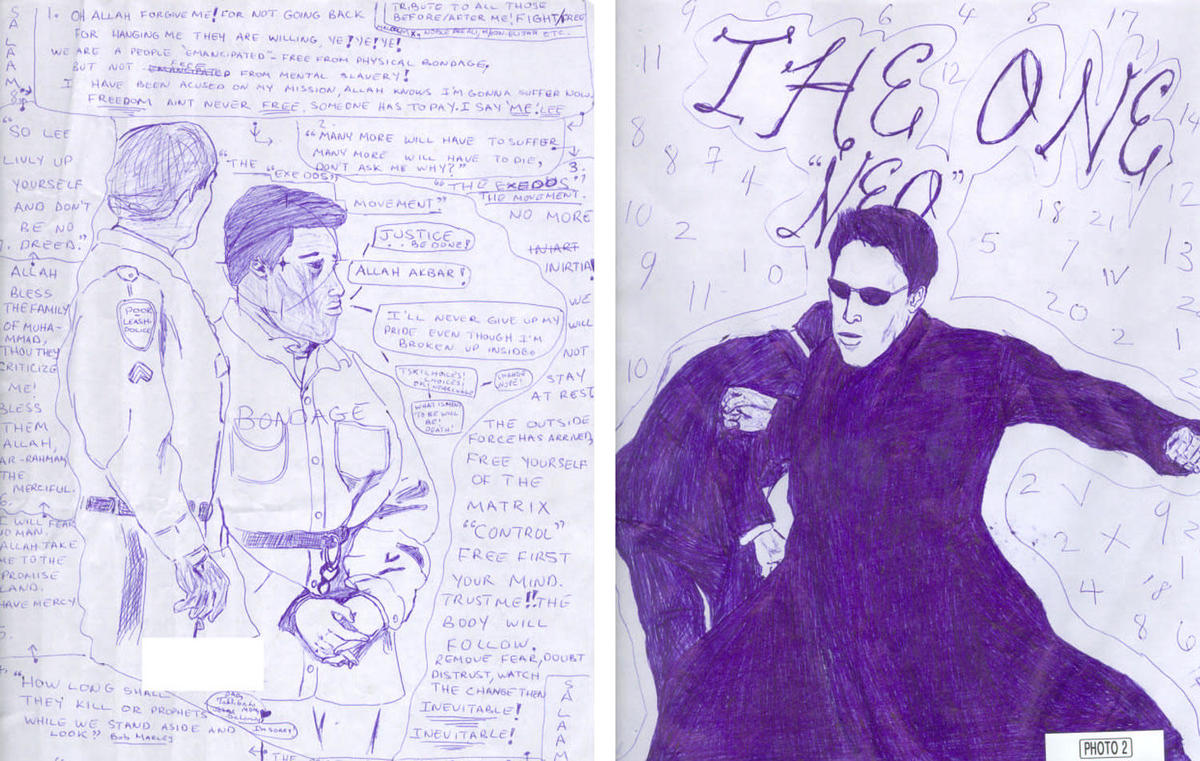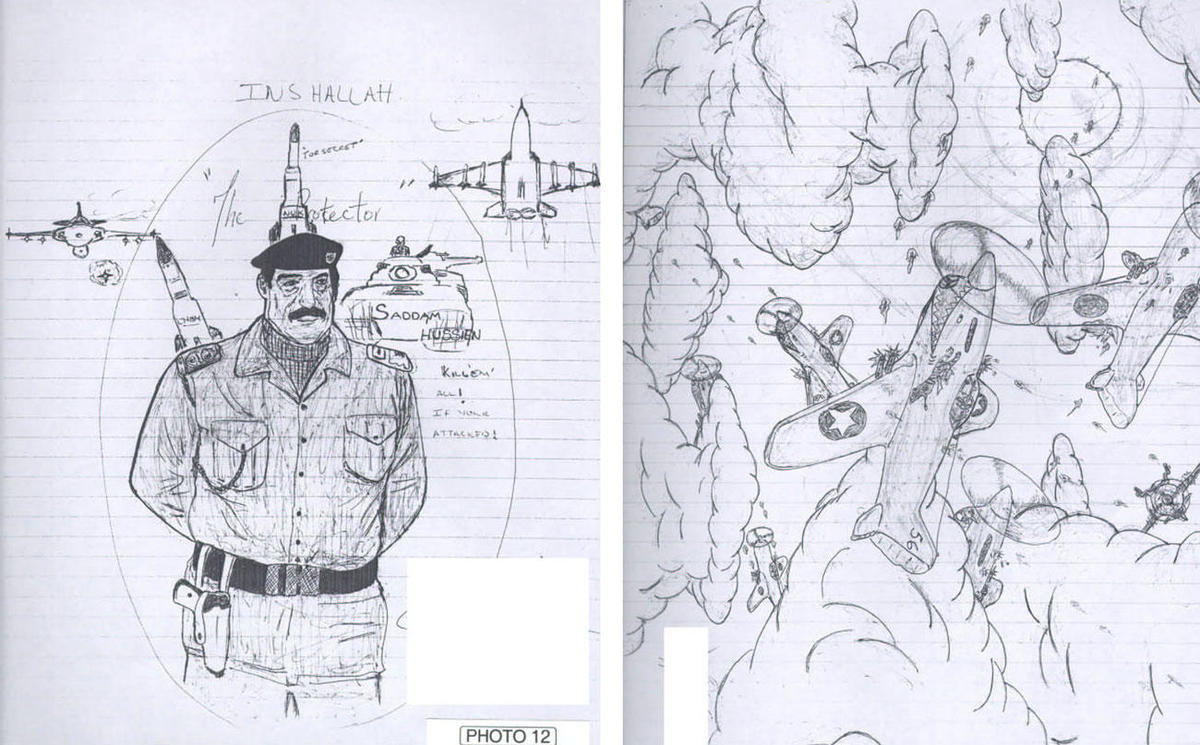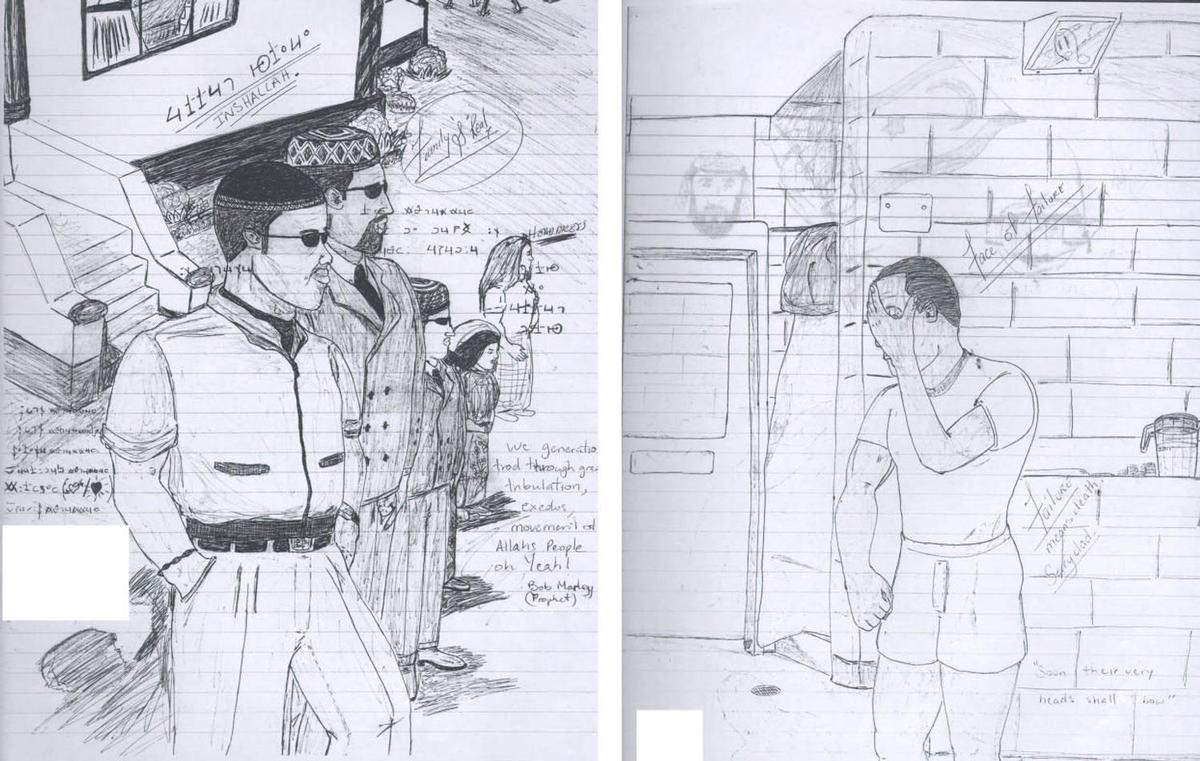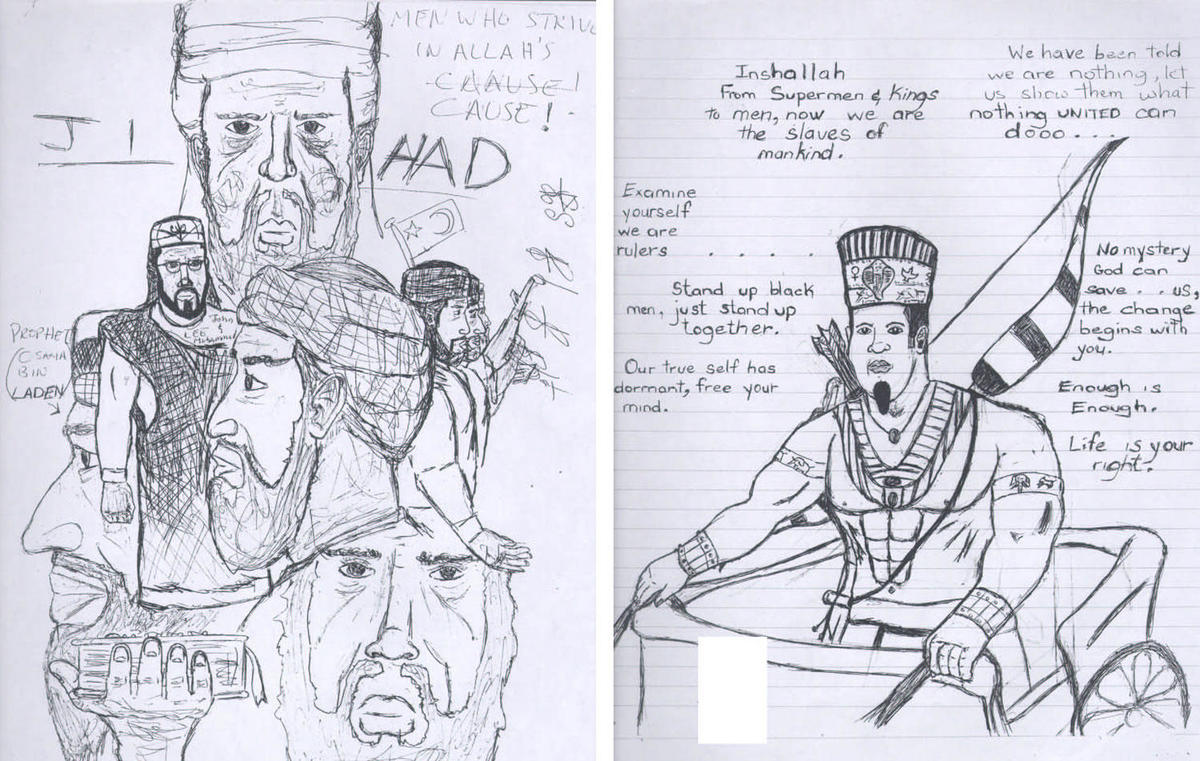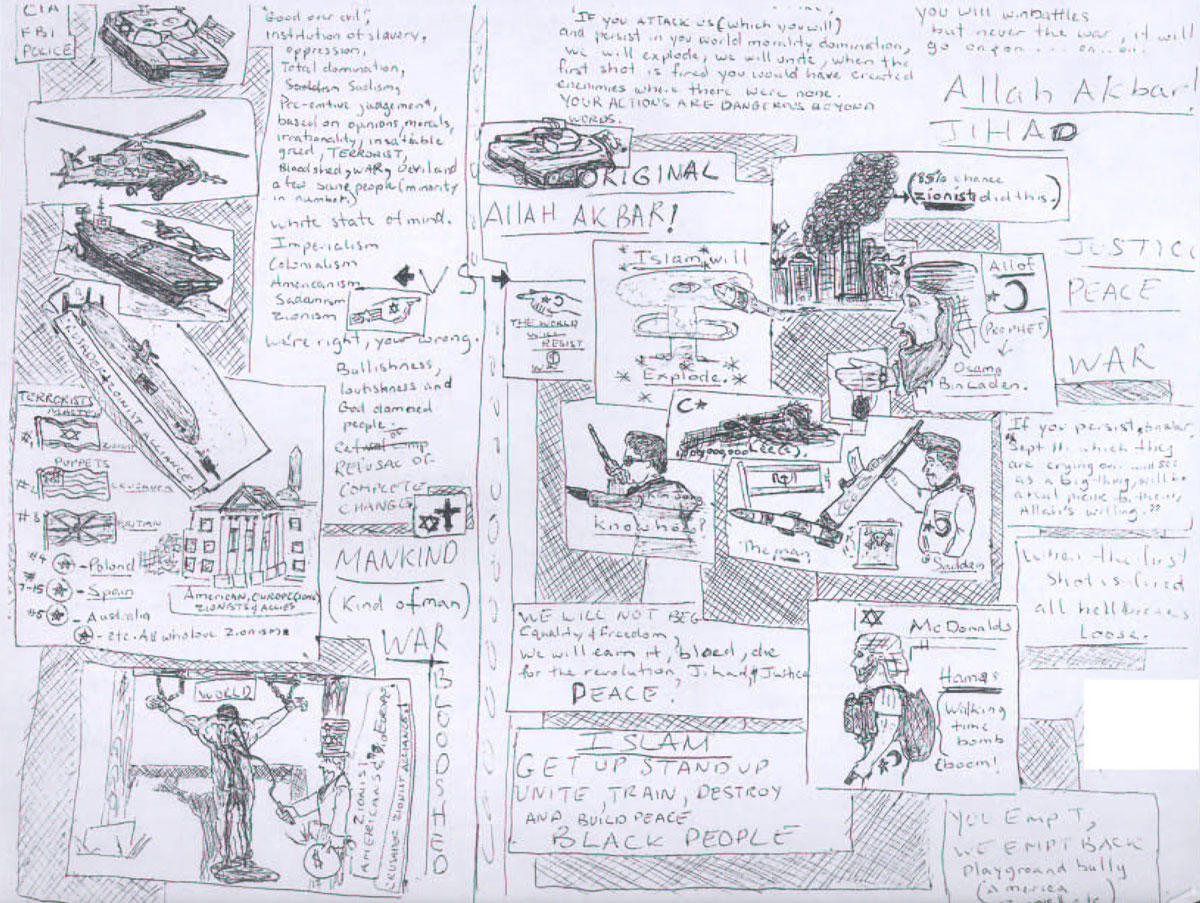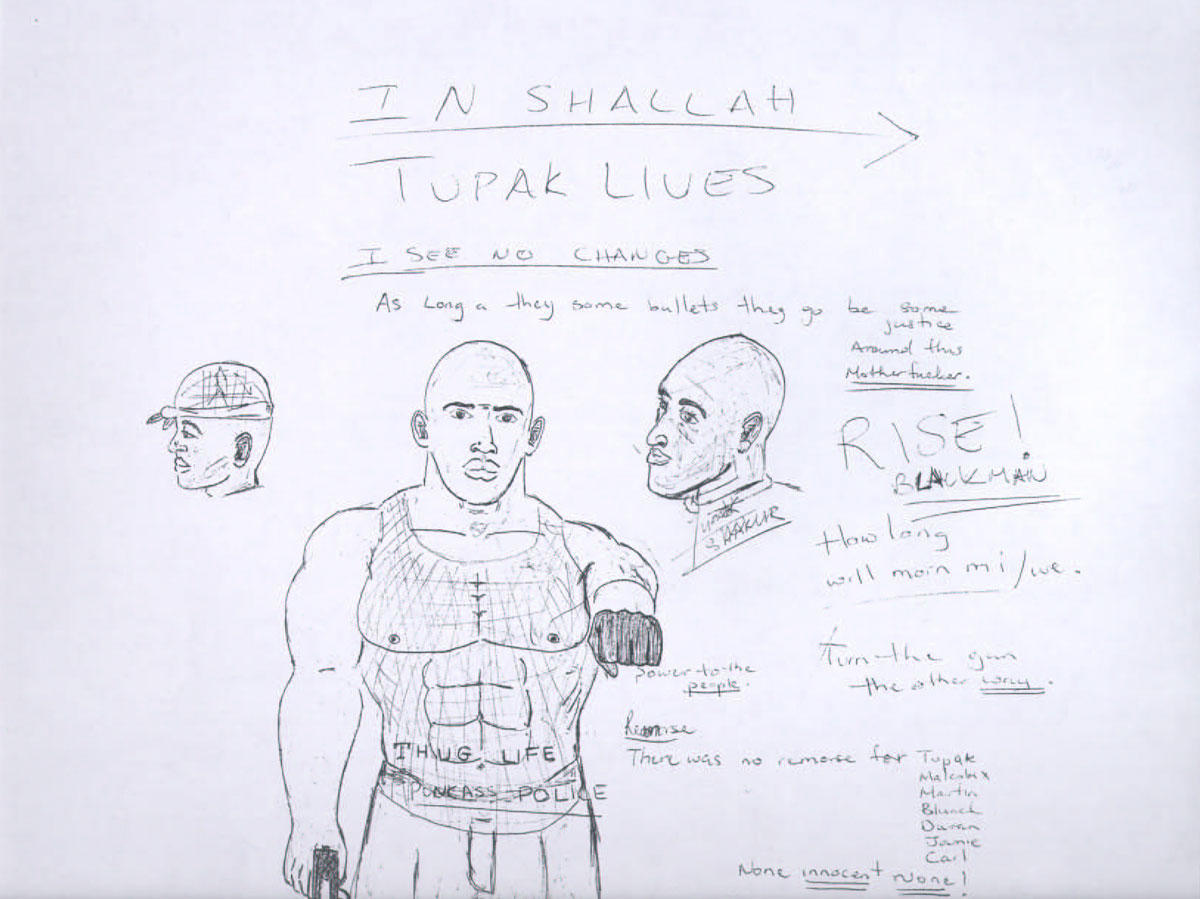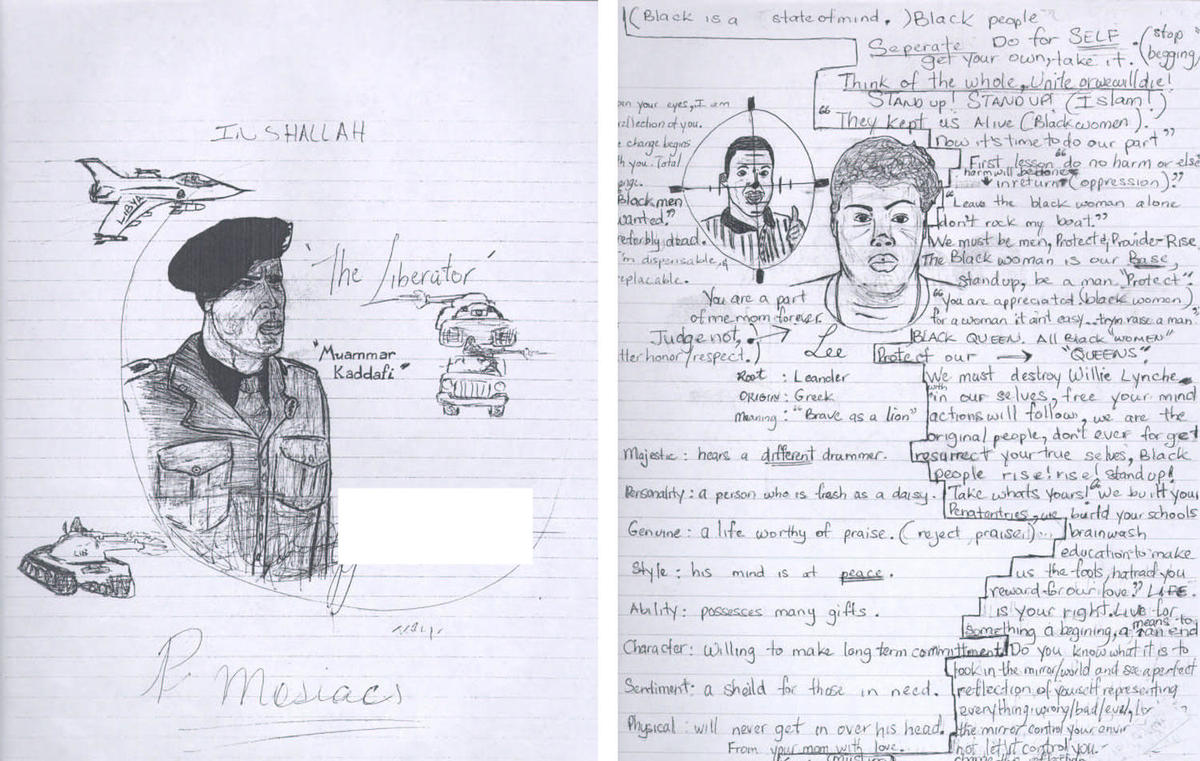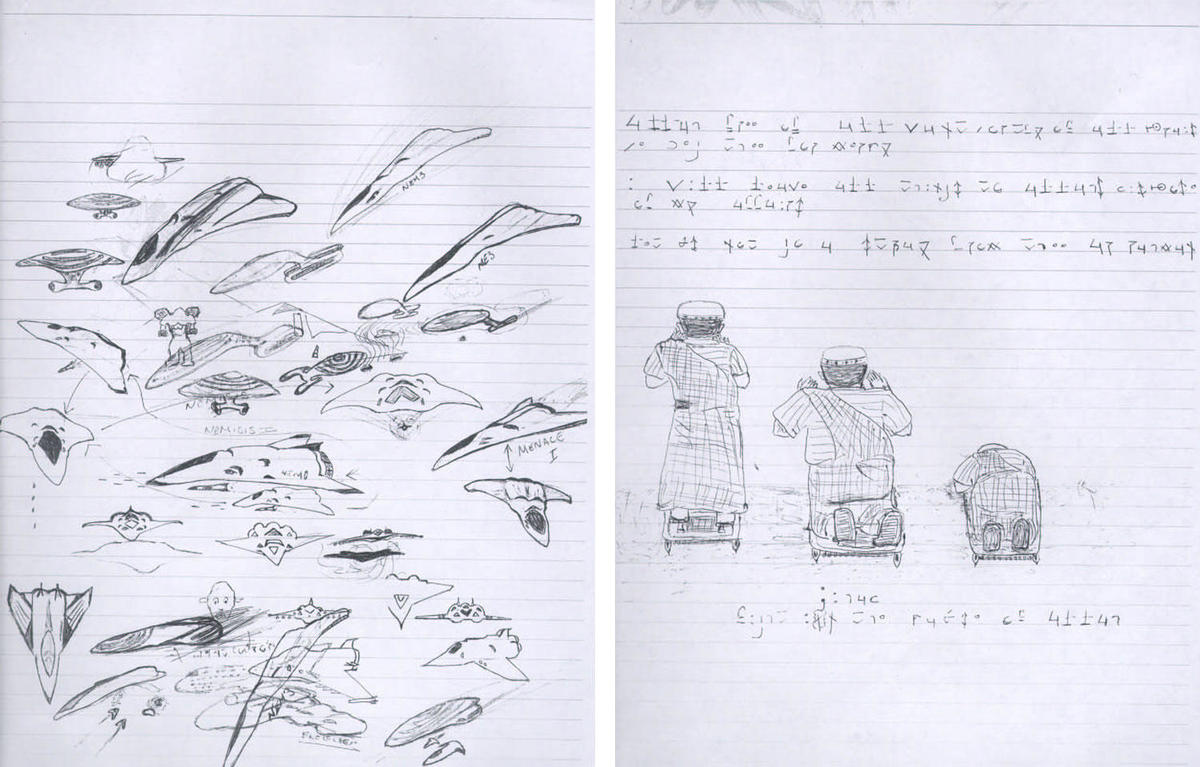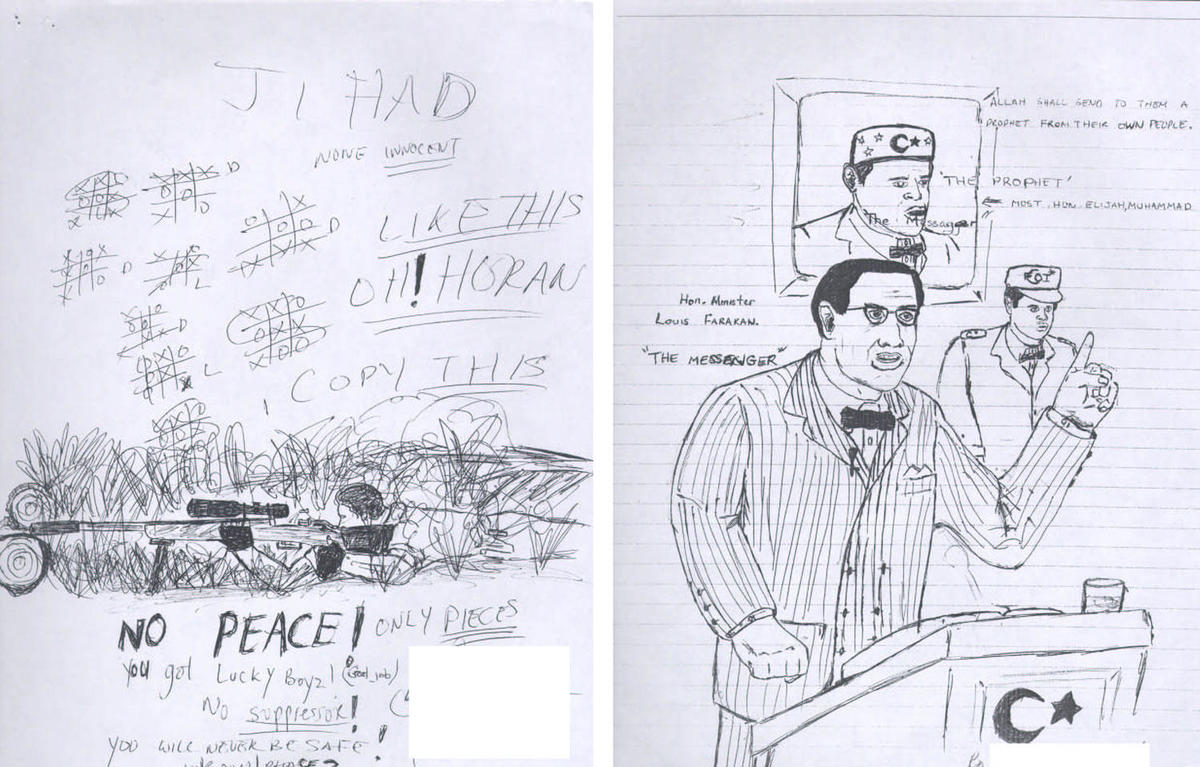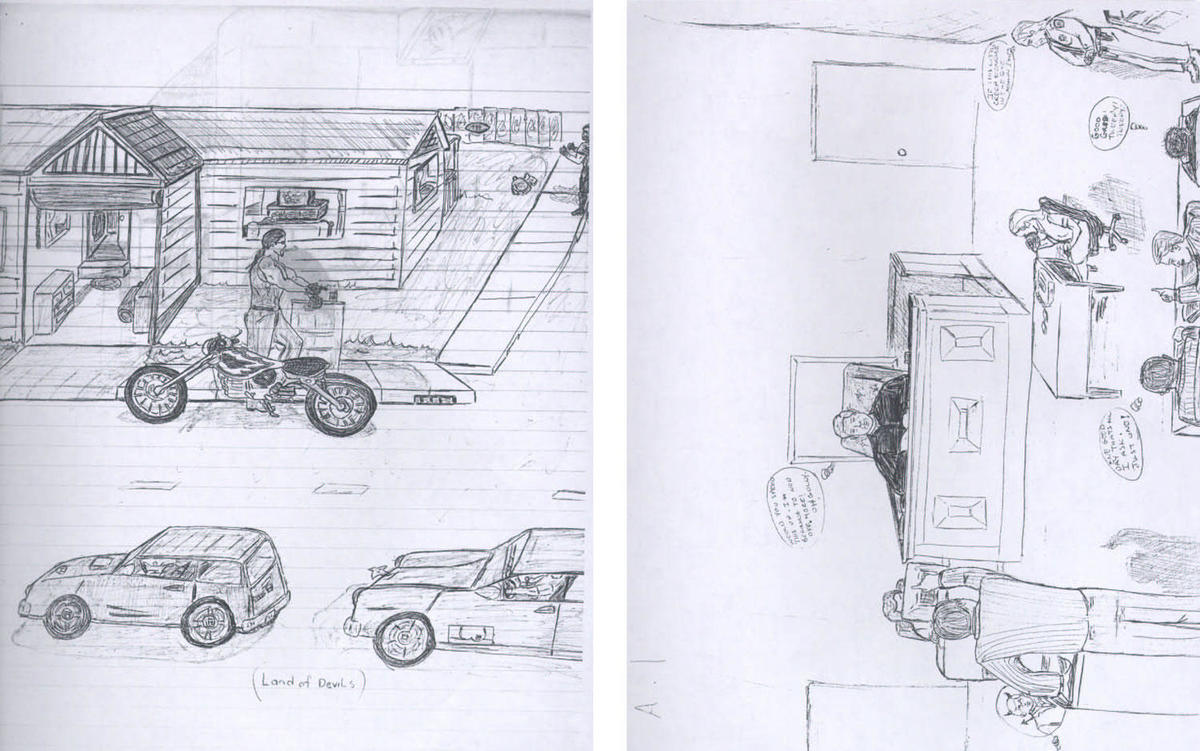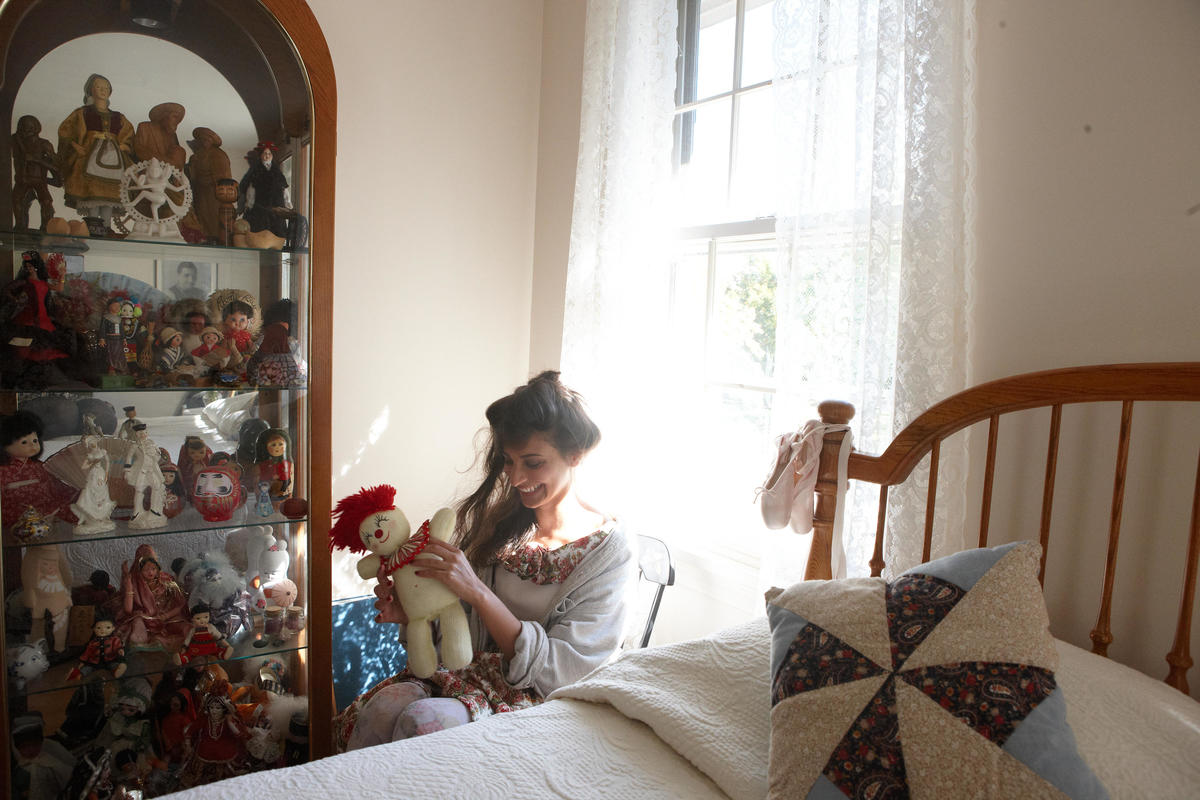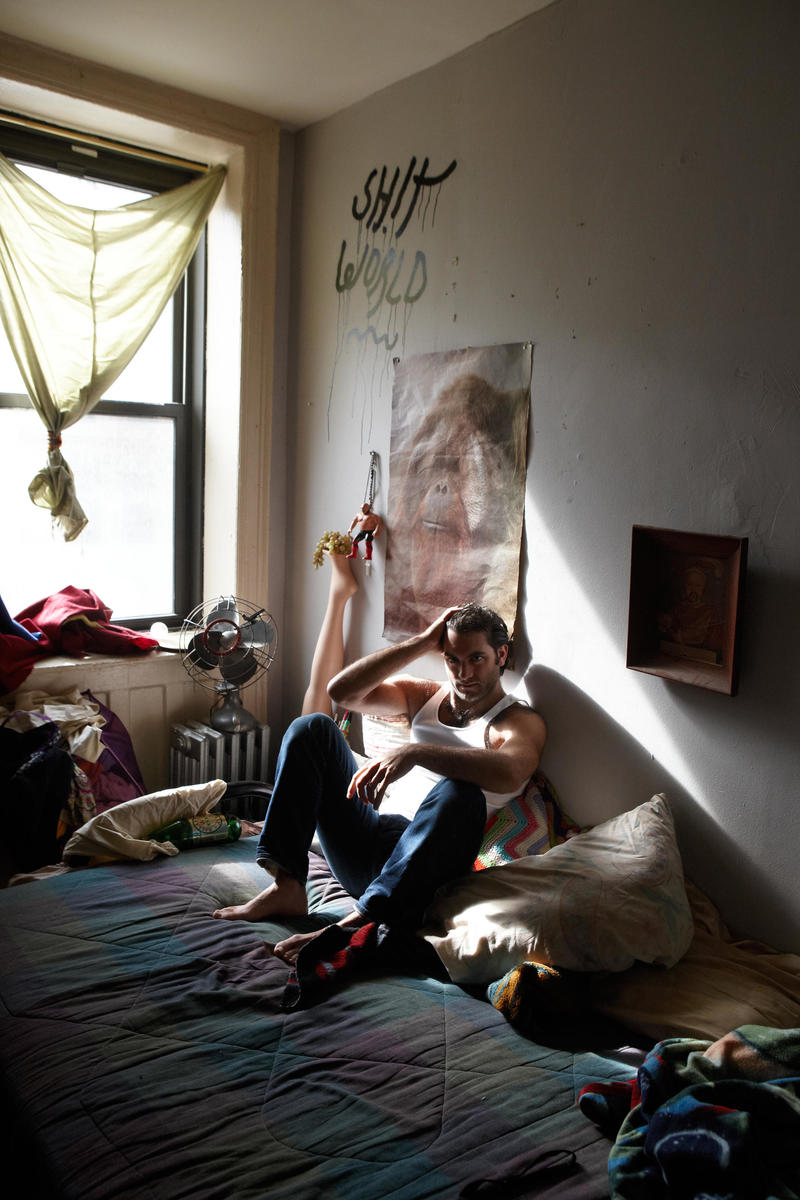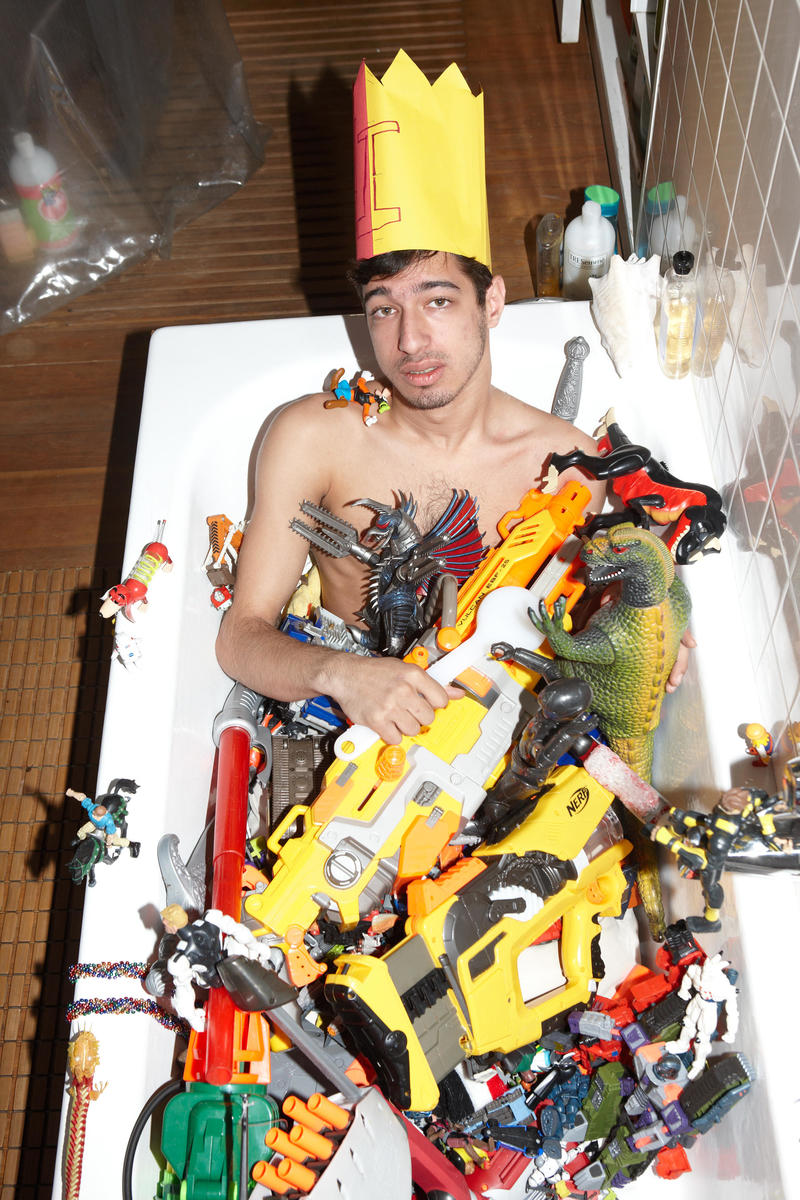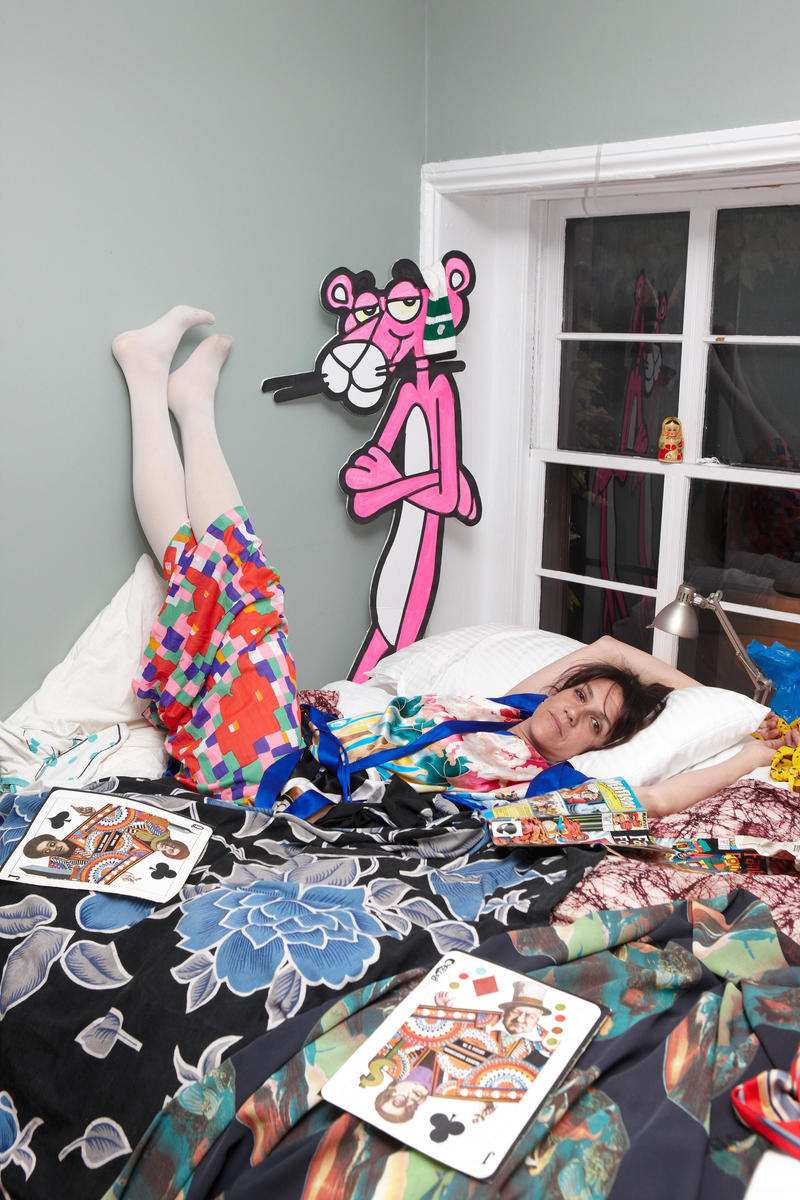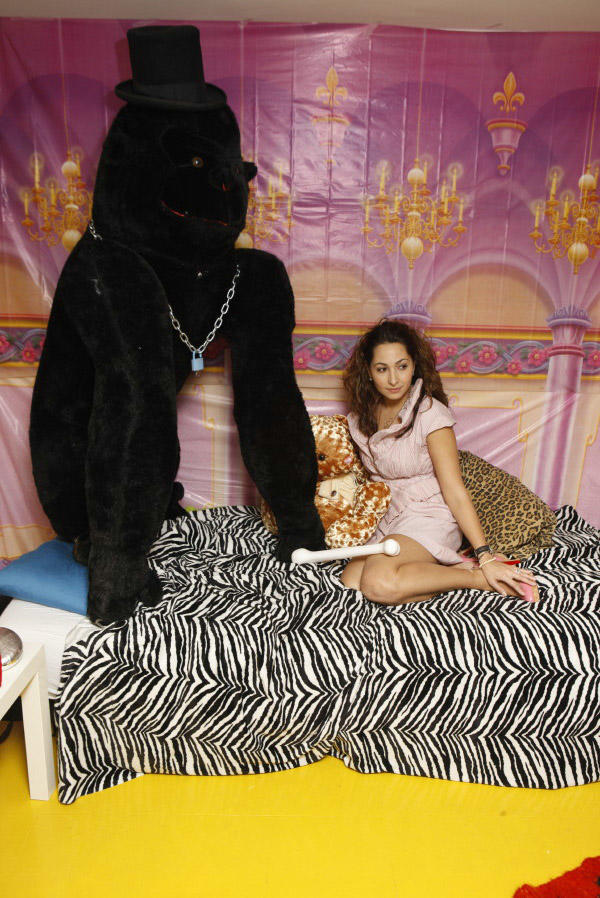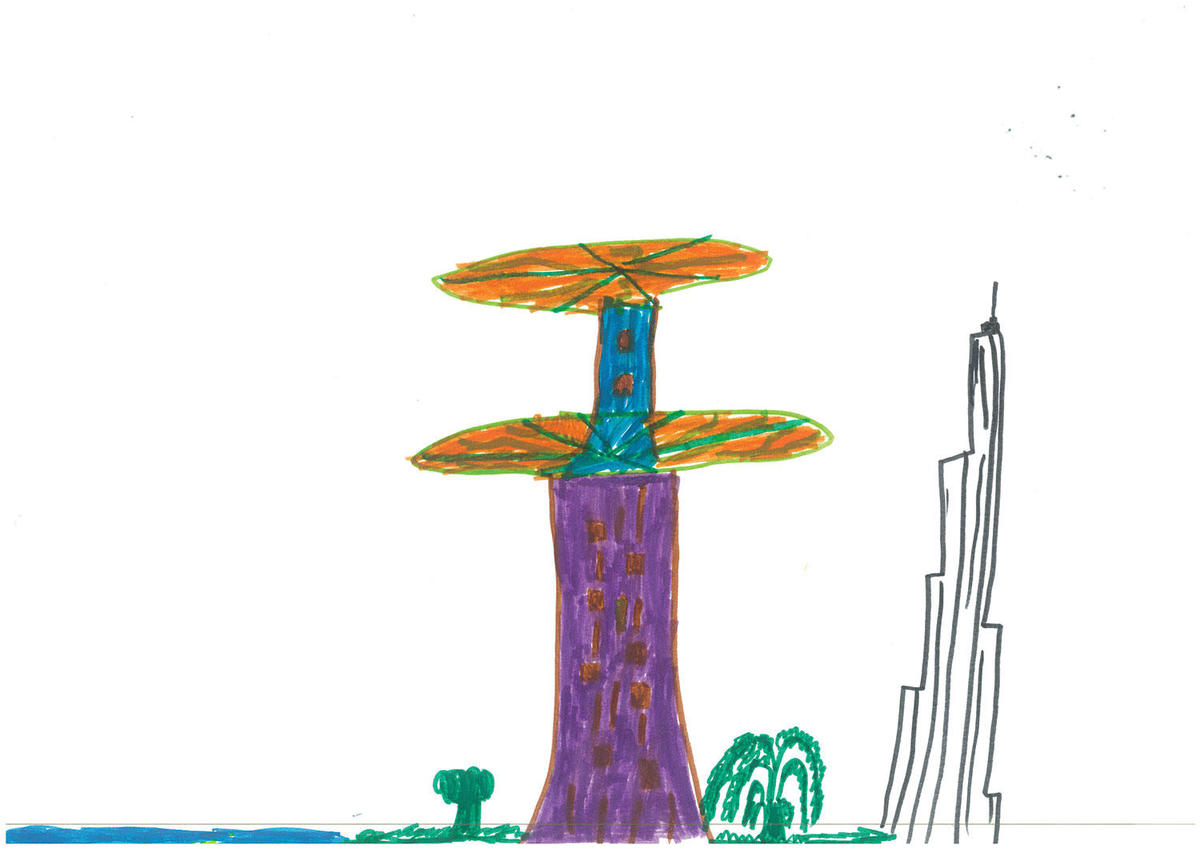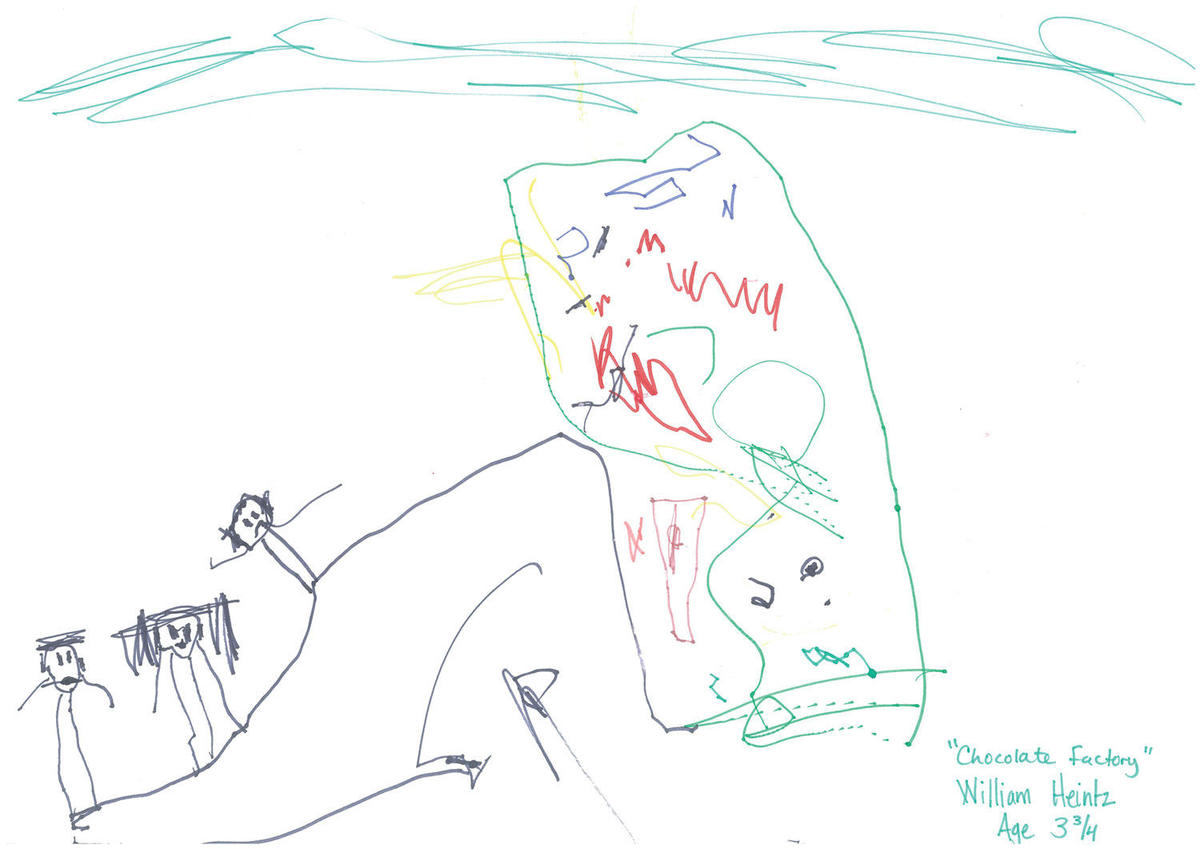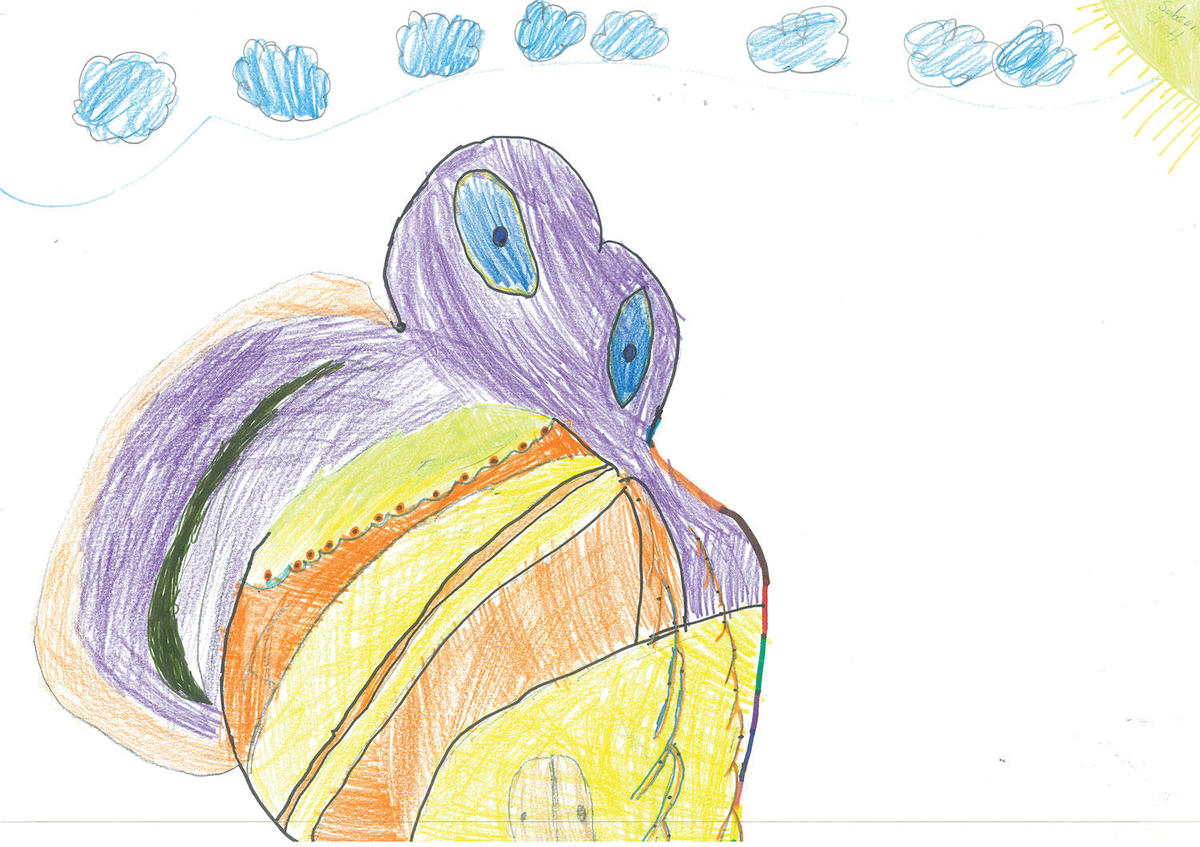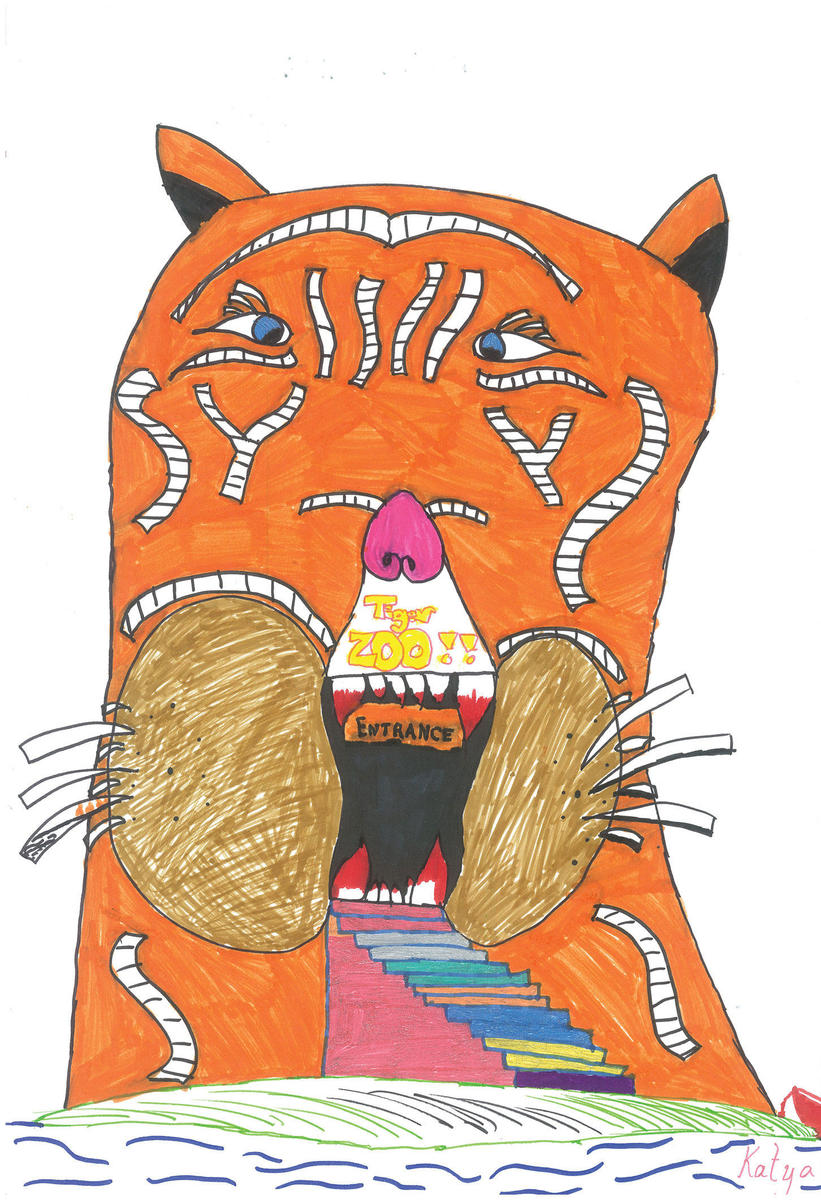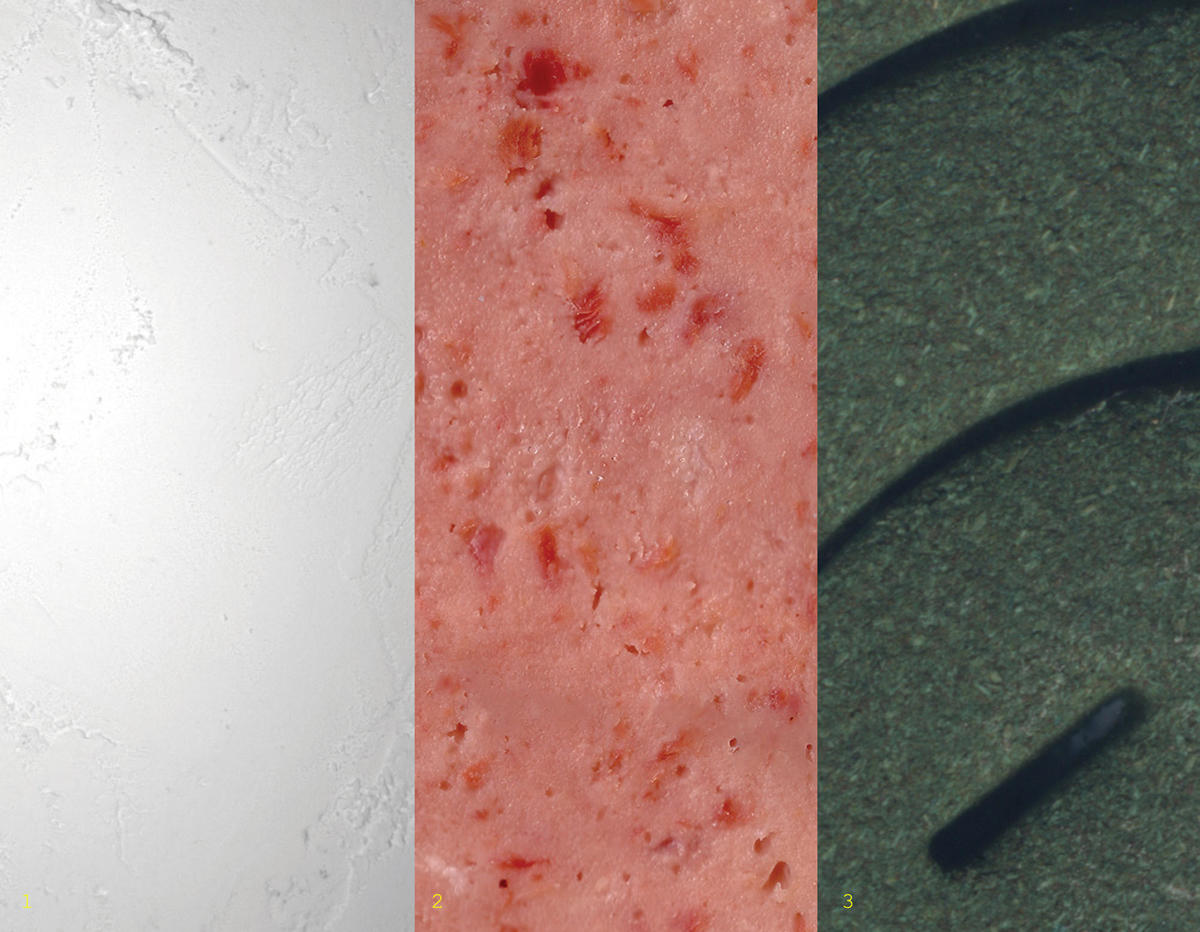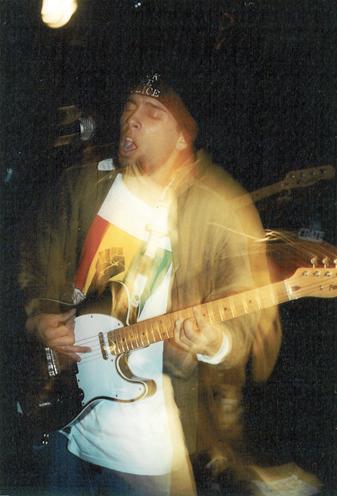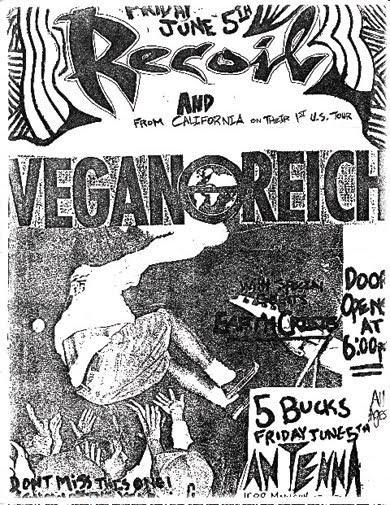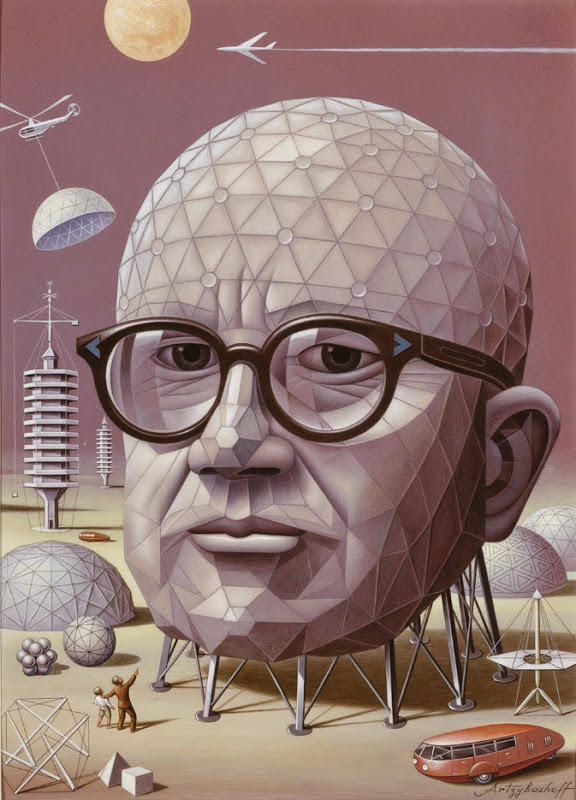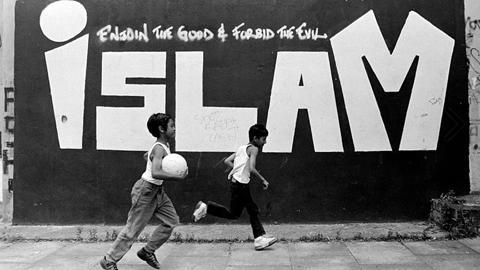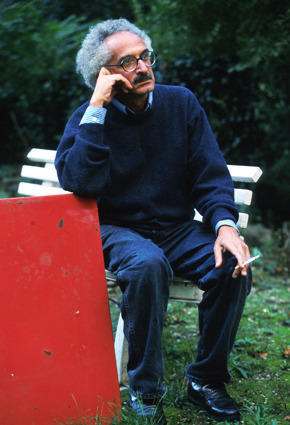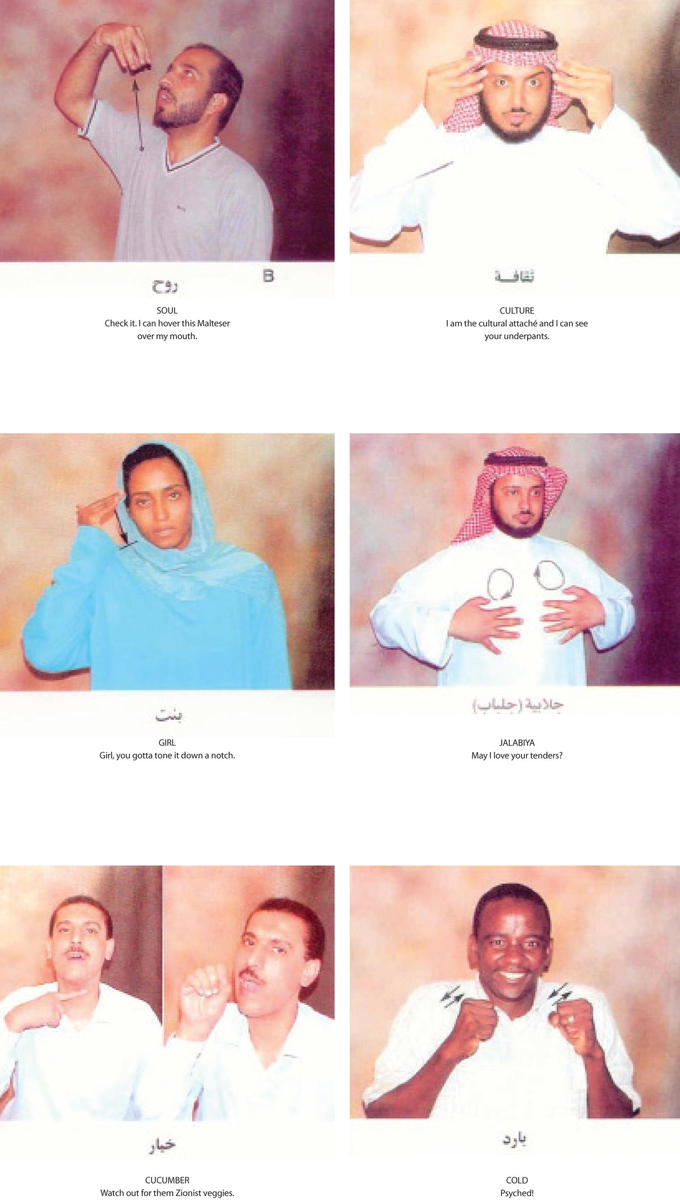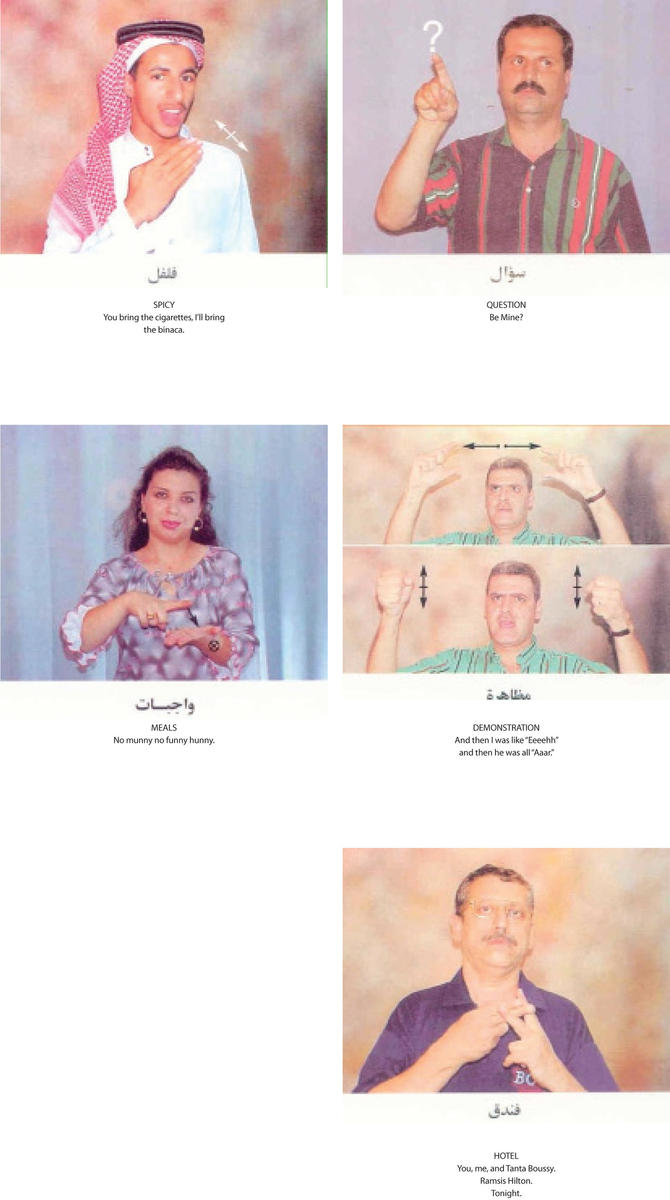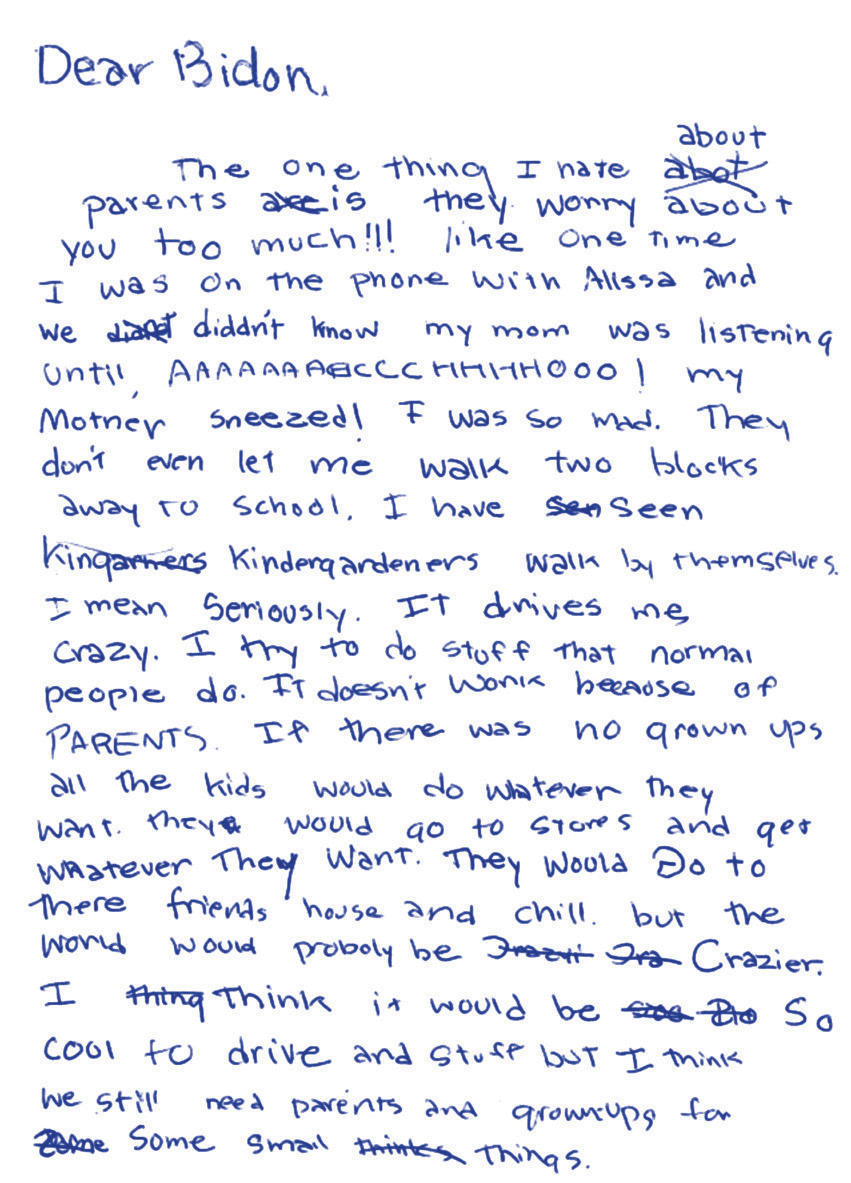
Letter to the Editor
Nazlee Radboy

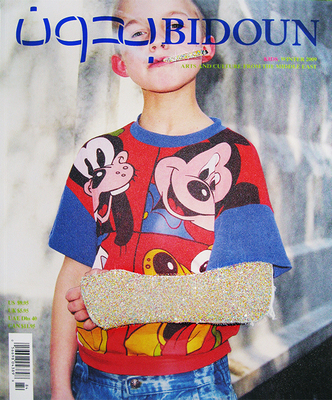
To the slaughter.

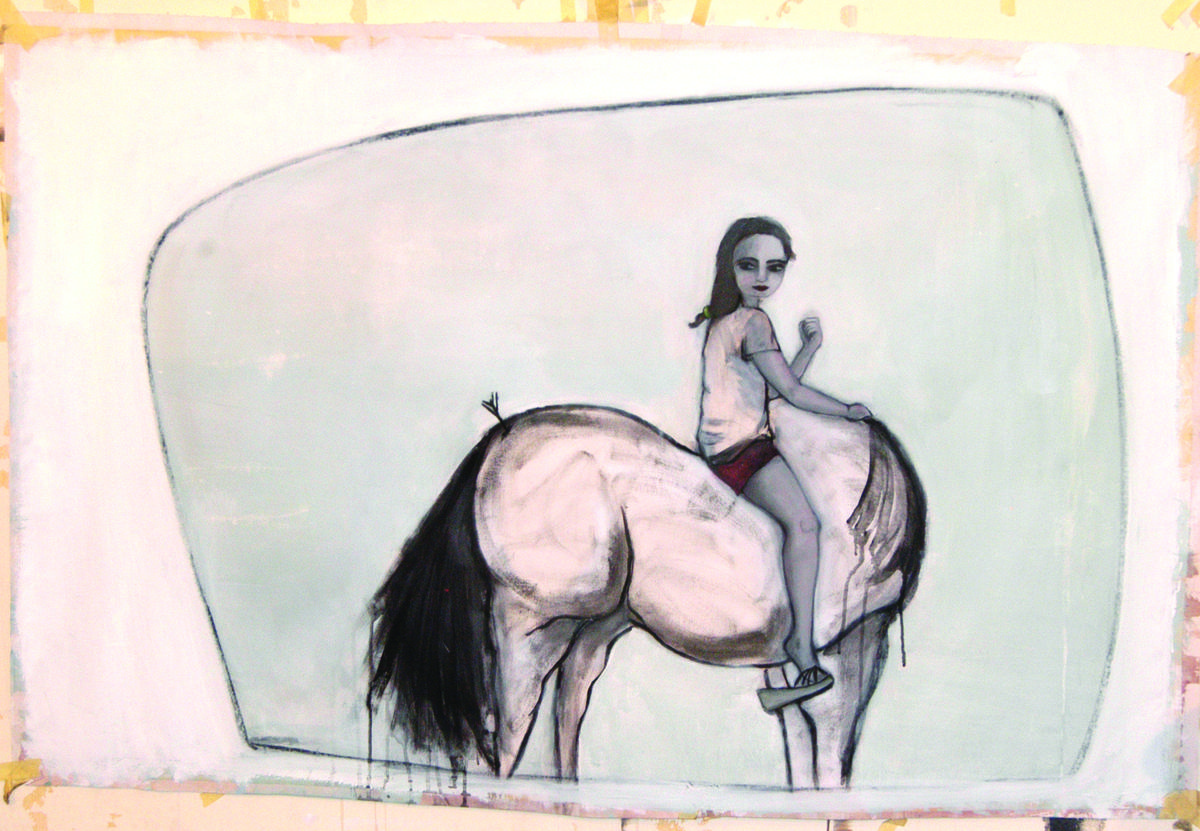
Beirut
Tamara al-Samerraei
Agial Art Gallery
December 2008
It’s been all too easy, over the past few years, to declare the death of painting in Lebanon. The fey landscapes and drippy abstractions that characterized Lebanese art in the late nineteenth and early twentieth centuries have been routinely declared irrelevant by a generation that turned to video, installation, photography, and urban intervention instead. Suddenly, however, it seems as if painting is back, with young artists such as Ayman Baalbaki, Taghrid Darghouth, and Zena Assi mounting exhibitions of highly skilled and, yes, socially incisive and politically relevant work composed of retrograde pigments on canvas. Now, the Agial Art Gallery is unveiling a new series by Tamara al-Samerraei, a painter who has also done a fair share of experimentation with installation and video. Samerraei, who was born in Kuwait and has been based in Lebanon for a decade, has already produced a substantial body of work focusing on the faces of girls who are teetering on the edge of adolescence. Her new series takes her painting practice a step further, and the girls have grown up just enough to introduce an atmosphere of sexual awareness, sinister playfulness, and the suggestion of impending danger.
Beirut
Video Avril
Ashkal Alwan
April 2009
In 2007, Ashkal Alwan staged its first edition of Video Avril in Beirut, promising to turn the event into an annual, international platform for emerging and established artists alike by 2009. The idea for the event was born in early 2006, and its founding motivation was to allow for sustained experimentation with video as video (as opposed to video as a warm-up for film) and to push the codes and rhythms of the medium itself. But when the war with Israel broke out in Lebanon several months later, the terms of Video Avril changed, expanding the presentation to encompass a three-part program of nearly thirty works, many of which were made in urgent, specific response to a particular conflict. The results were mixed, and since then Ashkal Alwan has given the entire Video Avril model a rethink. Seven young artists, including Mark Khalife, Ghayth al-Amin, and Marwa Arsanios, were given grants to create new work for 2009. The works will be completed by April. Whether or not they’ll be screened for an audience remains an open question. This could be read as a retrenchment from the public sphere, or, more generously, as an admission that young talent needs more time to incubate.
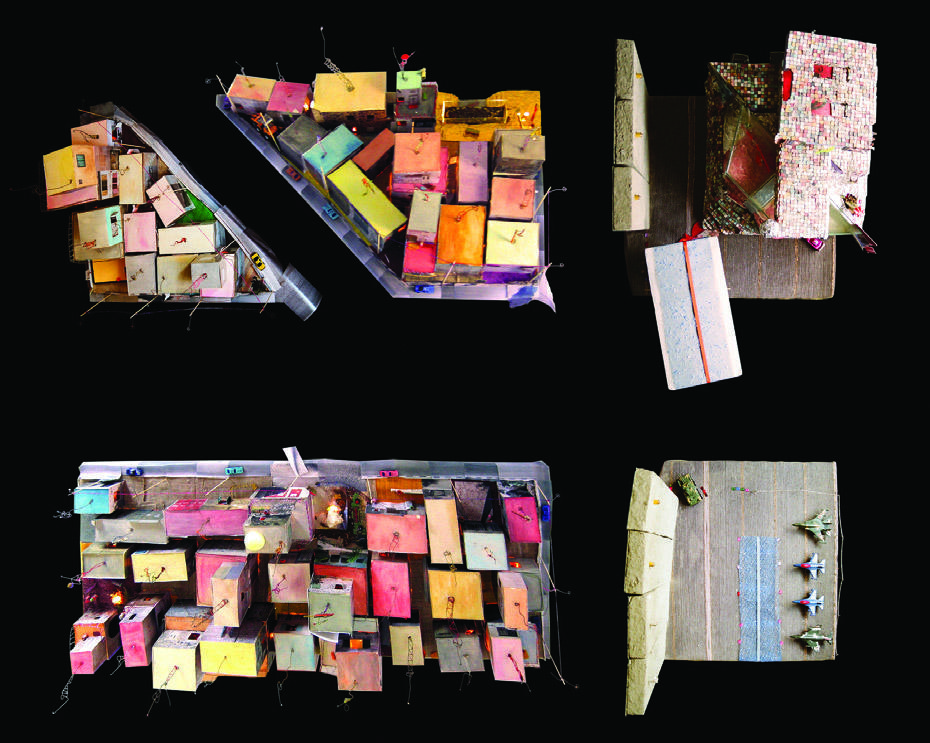
Beirut
In the Middle of the Middle
Galerie Sfeir-Semler
November 19, 2008–March 21, 2009
Catherine David has been actively engaged with the contemporary art scene in Beirut for years, having organized the first iteration of her long-term Contemporary Arab Representations project around the Lebanese capital as a kind of curatorial core. But it’s worth noting that while the project’s exhibitions, performances, and seminars traveled extensively throughout Europe, they never made their way back to Beirut (even the Beirut issue of the journal Tamáss never arrived). Certain ideas and discussions, particularly with regard to how the term “representation” was being used, did manage to cross back into the country. But outside of the artists who were personally involved, the Lebanese public never had much chance to encounter — much less consider, respond to, or reflect on — the initiative, and as a result, few in the art world here really know David’s work from firsthand experience. All of that is set to change with In the Middle of the Middle, a group show that David has curated for Galerie Sfeir-Semler. Featuring the work of Jawad al-Malhi, Yasser Alwan, Ayman Baalbaki, Anna Boghiguian, Rami Farah, Joude Gorani, Wafa Hourani, Simon Kabboush, Waël Noureddine, Hani Rashed, Walid Sadek, and Akram Zaatari, the exhibition is definitely not a reprise of Contemporary Arab Representations. Instead, it promises to reveal some interesting links among a disparate group of artists, and to offer some tangible insight into David’s own process as a curator and thinker who insists on the political potential of cultural practice and makes no compromises for the sake of emerging markets, the erotic exotic, or the public relations packaging of the region’s artistic products.
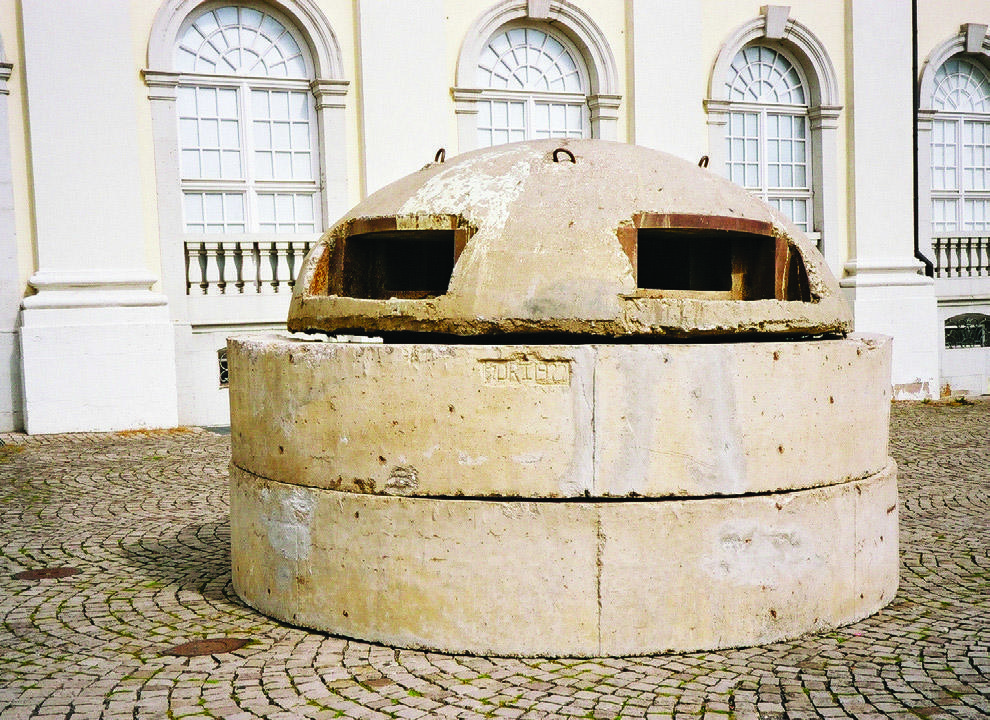
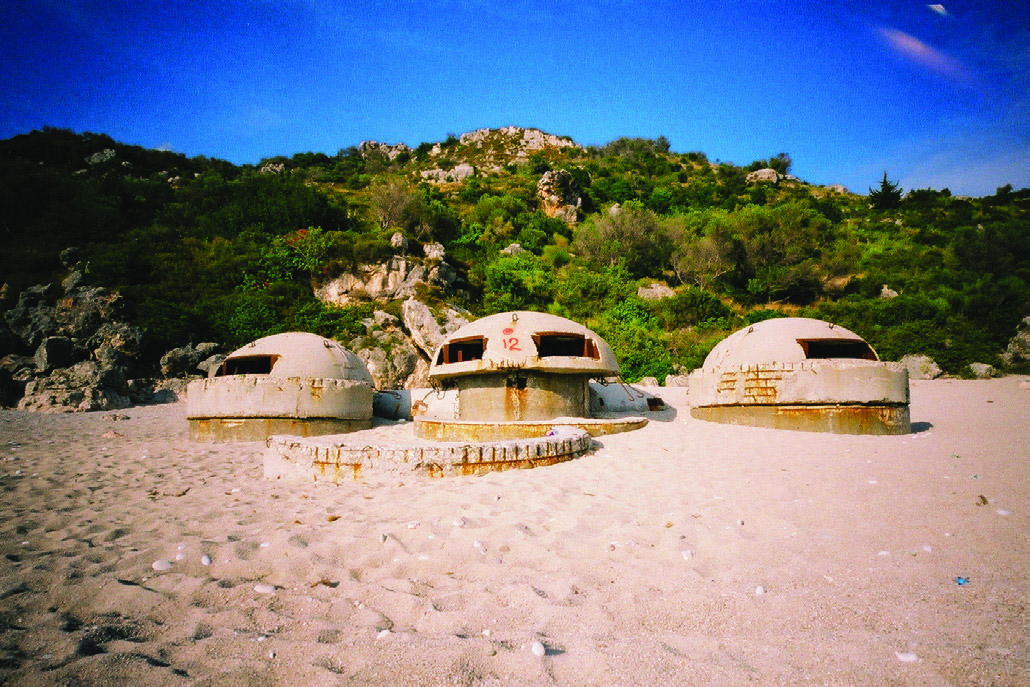
Istanbul
Huseyin Alptekin: Bunker Palas Hotel
Yapi Kredi Kazim Tashkent Art Gallery
February 2009
Taking its name from the Enki Bilal film Bunker Palace Hotel (1989), this exhibition offers to re-contextualize the late artist Huseyin Alptekin’s fascination with bunkers, marking the extension of an ongoing project for which Alptekin had dislocated a bunker from the soil of the Albanian coast, exhibiting it in museums in Albania and Germany, with the intention of eventually bringing it to Istanbul. The bunker will be presented in the vicinity of the Yapi Kredi art gallery, while inside, a collection of work and imagery related to the Bunker Research Group — a research project producing documentary material about Albanian military bunkers — will frame the project. The initiative stems from discussions on mobility and peripheral geographies between local artists and artists in transit at a nonprofit space run by artists in Istanbul, the Sea Elephant Travel Agency. Here, the juxtaposition of the words “Bunker,” “Palas,” and “Hotel” seem to evoke metaphors of insecurity, power, borders, paranoia, and the line separating hostility and hospitality.
Cairo
PhotoCairo4: The Long Shortcut
Various venues
December 17, 2008–January 14, 2009
An international multidisciplinary visual arts project based in downtown Cairo, this fourth iteration of PhotoCairo features a series of exhibitions, screenings, presentations, and residencies, as well as a workshop. PhotoCairo4 revolves around a number of loose coordinates, including the city of Cairo itself as a rapidly evolving space in which the tensions between the formal (manifested as state-mandated narratives, media, etc.) and the increasingly informal create unexpected surprises. How, the exhibition asks, do people craft novel strategies to survive in such a space, and how does the city — this or any city — evoke the poetry embedded in daily life?
Artists presented will include Ala’ Younis, Ahmed Kamel, Artur Zmijewski, Babak Afrassiabi, Bernard Guillot, David Thorne, Julia Meltzer, Doa Aly, Hala Elkoussy, Hassan Khan, Heidrun Holzfeind, Ihab Jadallah, Kareem Lotfy, Larissa Sansour, Leopold Kessler, Maha Maamoun, Mahmoud Khaled, Mandy Gehrt, Mohamed Allam, Raed Yassin, and Rana El Nemr. Publications, presentations, and film programs will involve the likes of Bassam El Baroni, Ganzeer, George Azmy, Florian Wüst, Karim Tartoussieh, Martí Peran, Nat Muller, Pages magazine, Urs Lehni, and What, How & For Whom curatorial collective. The Long Shortcut is curated by Aleya Hamza and Edit Molnar of the Cairo-based Contemporary Image Collective.
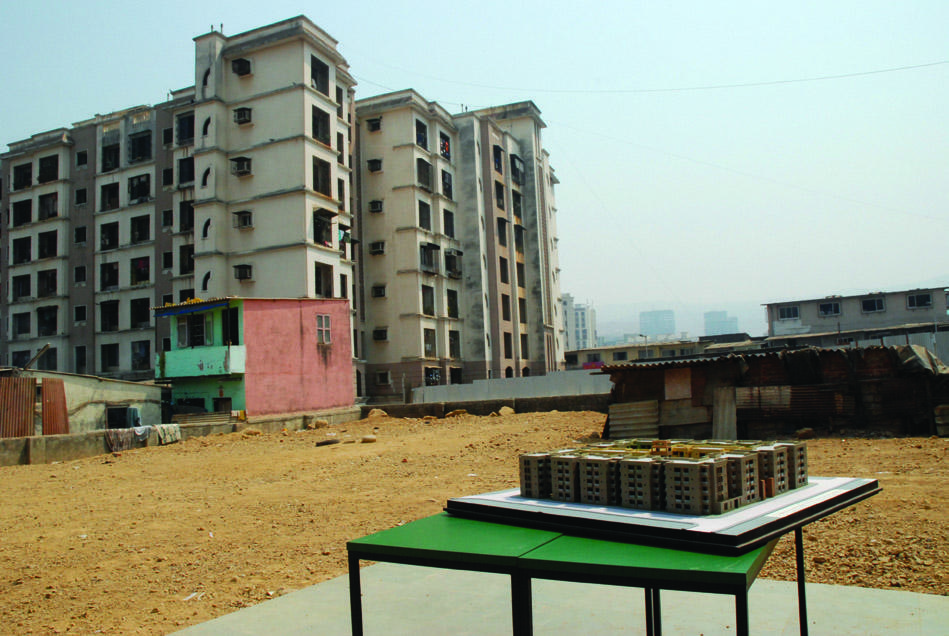
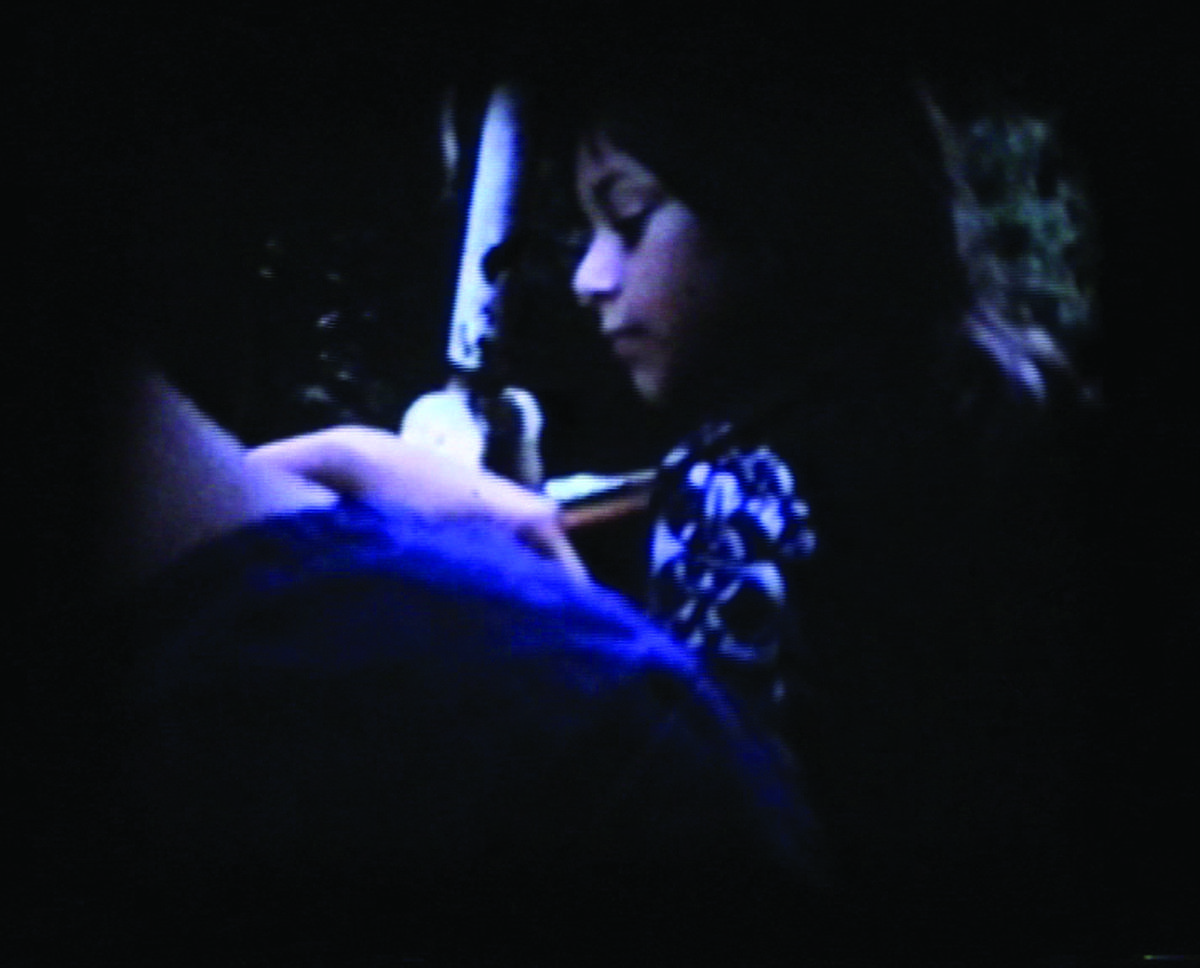
London
Past Potential Futures
Part I: Gasworks
February 14–April 5, 2009
Part II: The Showroom
May 2–June 28, 2009
Gasworks and The Showroom present a two-part exhibition titled Past Potential Futures, the first solo presentation of the Otolith Group’s work in London. The Otolith Group, comprised of Anjalika Sagar and Kodwo Eshun, produces work that engages issues of identity and nation from an unusually radical perspective. Past Potential Futures will begin at Gasworks with the artists’ films Otolith (2003) and Otolith II (2007), both of which envisage twisted futures that, somehow, shed light on the present (Otolith predicts a future in which the human race can no longer survive on earth and must live in zero-gravity space stations, and Otolith II engages the past via a feminist archive from India, of all things).
The second part of the exhibition will take place at The Showroom and feature the third installment in the trilogy: Otolith III. The point of departure for Otolith III is The Alien, an unrealized film by legendary Bengali director Satyajit Ray. Written in 1967, The Alien would have been the first science fiction screenplay to be set in contemporary India. Otolith III returns to 1967 and gives Ray’s Alien an alternative trajectory by which one of the protagonists, the industrialist, decides to go ahead and make the film rather than confront Ray about his failure to make it happen. Filmed on location in London, Otolith III is a temporally and geographically displaced pre-make — a remake of a film that hasn’t yet been made.
A series of public programs as well as a book published by Sternberg Press, will accompany this large-scale event.

Sharjah
Sharjah Biennial 9: Provisions for the Future
March 16–May 16, 2009
After its 2007 edition, the Sharjah Biennial refocused its energies on acting as a year-round “laboratory,” providing grants and production opportunities to artists to create site-specific work and other projects, and furthering its emphasis on practice and experimentation — something that could be seen as particularly timely, given the fixation elsewhere in the Gulf on “finished products” and their performance in the marketplace. In its ninth edition, the Biennial exhibition has the (loose) title of “Provisions for the Future” (co-curated by Isabel Carlos, former founder-director of Lisbon’s Instituto de Arte Contemporanea, with long-term Biennial director Jack Persekian). The exhibition will include fifty-seven artists, most of whom answered an open call for submissions and are making new work for the occasion. Running alongside will be the March Meeting, an annual get-together of Arab arts organizations, and a performance program curated by Tarek Abou El Fotouh. This year, the Biennial has been pushed up a month to coincide with neighboring fair Art Dubai; with Doha’s Museum of Islamic Art as part of the package, international visitors will be bound for a whole Gulf tour.
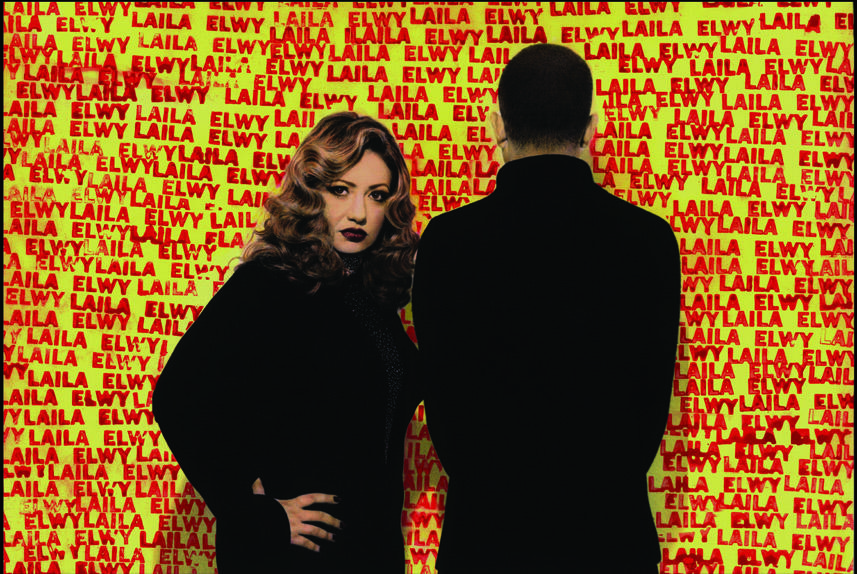
Dubai
Art Dubai
Various venues
March 18–21, 2009
In its third year, Art Dubai is settling down with a heavyweight list of galleries — London’s White Cube, back in for another try after missing 2008, is joined by Paris’s Galerie Emmanuel Perrotin, Lombard-Freid Projects, Max Protetch, and Salon 94, New York. Regional galleries include Damascus/Dubai behemoth Ayyam, The Third Line, B21, and Elementa from Dubai, and Galerie Sfeir-Semler and Agial from Beirut.
The Abraaj Capital Art Prize, launched at last year’s fair and — typical for Dubai — billed as the “world’s most valuable art prize,” marries artists from the region with international curators. At the fair the three winning curator-artist teams will unveil the new works they’ve made for the private equity firm’s corporate collection: Cristiana Perrella is working on a new video with Turkish artist Kutlug Ataman; Carol Solomon is curating Zoulikha Bouabdellah’s floor installation, inspired by Arab contributions to astronomy; and Leyla Fakhr is working with Tehran-based artist Nazgol Ansarinia on a carpet-based work, with the assistance of weavers in Tabriz, Iran. The fair also continues with its popular discussion program, the Global Art Forum.
Dubai
Bita Fayyazi
B21 Gallery
March 15–April 2, 2009
Tehran-based installation artist Bita Fayyazi returns to Dubai in March with a show of around fifty new sculptures, a collection of meter-high ceramic figures. Representing a cross-section of Tehran society, from picnicking families on motorbikes to bodybuilders with kids in tow, this series represents a departure from Fayyazi’s past work. The artist, who has been a staple of Tehran’s experimental art scene, became internationally known for her collections of outsize cockroaches, dead dogs, and other pests. Here, she turns her gaze to the pluralistic nature of Iranian society.
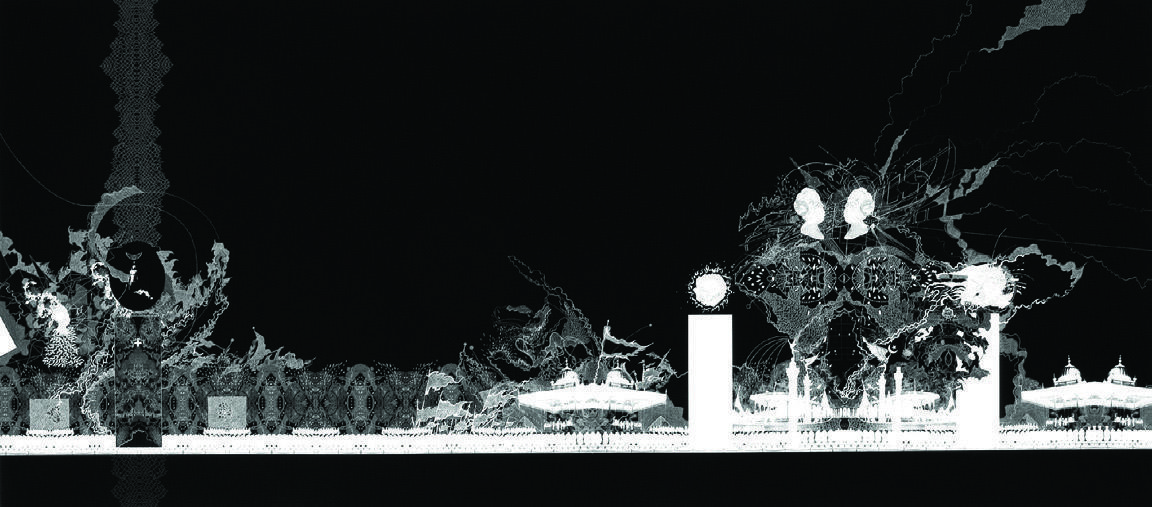
Dubai / Karachi / London
Lines of Control
Dubai: The Third Line
January 14, 2009
Karachi: VM Gallery and Gandhara-art Space
January 28, 2009
London: Green Cardamom
February 18, 2009
London’s Green Cardamom and Dubai’s The Third Line begin a long-term curatorial collaboration with Lines of Control a set of interdisciplinary group exhibitions, in January 2009. South Asia– and Middle East–based artists including Seher Shah, Amar Kanwar, Rashid Rana, Iftikar Dadi and Nalini Malani, and video and installation artist (and Bidoun contributor) Naeem Mohaiemen — will investigate the impact of the India–Pakistan border, and the role of borders in shaping everyday lives in general. Shows in Dubai, London, and Karachi are accompanied by talks, films, and publications.
Doha
Doha series
The Third Line
January–December 2009
The Third Line’s Doha branch launches a new residency program in 2009, selecting four artists from their roster to make a new body of work in response to a trip to the Qatari capital. First is Iranian contemporary calligrapher Golnaz Fathi, who will visit Qatar in January and return in February for an exhibition. She’ll be followed by London-based Moroccan photographer Hassan Hajjaj (April–May), Canadian-Libyan multimedia artist Arwa Abouon (September–October), and Egyptian multimedia practitioner Huda Lutfi (November–December).
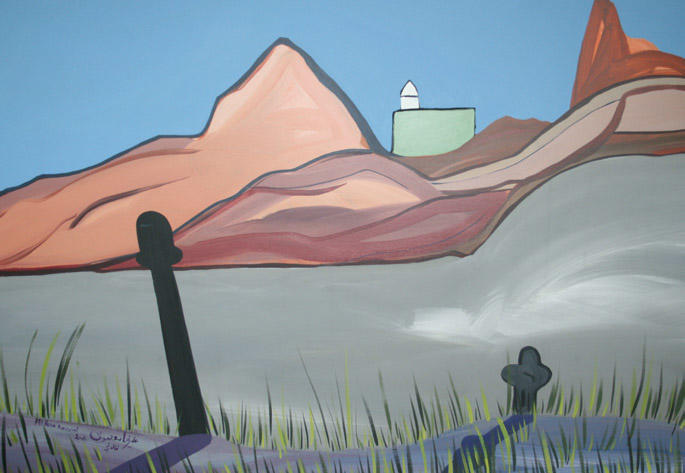
Dubai
Alireza Massoumi
Carbon 12
January 15–February 15, 2009
Dubai’s relentless schedule of new gallery openings continues into 2009 with Carbon 12 launching as one of the first galleries in the Dubai Marina development; it kicks off 2009 with an exhibition of new work by Iranian painter Alireza Masoumi. Other artists in the gallery’s somewhat eclectic mix of European and Middle Eastern artists include Markus Oehlen, Thierry Feuz, Tor-Magnus Lundeby, and Katherine Bernhardt. Meanwhile, the Dubai International Financial Center (DIFC) is fast becoming a gallery center to rival Al Quoz, albeit with slick and vast white cubes to match the corporate setting. Recent arrivals include the Al Shroogi family’s impressive Cuadro Gallery; another branch of the international commercial joint Opera Gallery; and established Middle Eastern dealership Artspace, making the move from its old home at the Fairmont Hotel. Specialist photography gallery The Empty Quarter, directed by curator Elie Domit and backed by renowned Saudi photographer Reem Al Faisal, is set to open in early 2009 and should combine commercial and curatorial savvy.
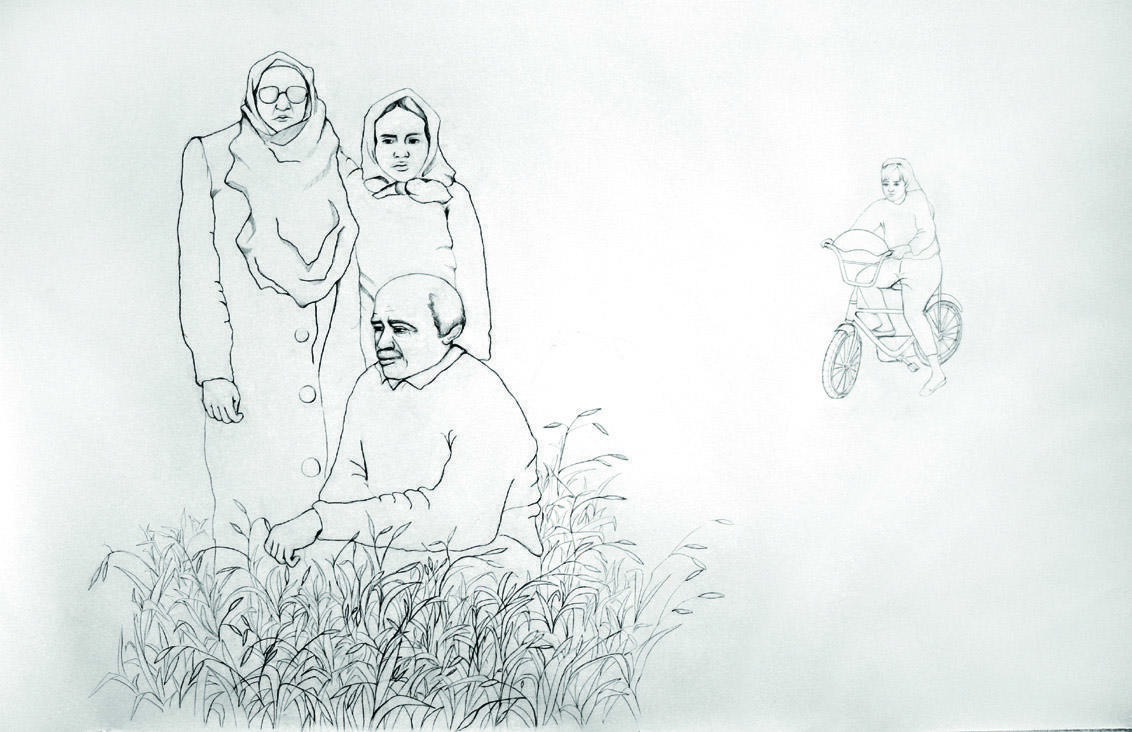
Tehran / Amsterdam
Sideways in Tehran
Azad Gallery
October 24–November 5, 2008
How does a shift in the context surrounding a piece of art influence its reading? How do we judge art that hails from other cultures? Is quality ever universal in nature? These difficult questions make for the starting point of the project Sideways in Tehran, initiated by Tehran-based artist and curator Amirali Ghasemi and Amsterdam-based visual artist Atousa Bandeh Ghiasabadi. The two have asked five artists and writers to produce work that will be presented in both Tehran and Holland — hence raising the aforementioned questions about context, framing, and reception. Among the works in progress are Katrin Korfmann’s rumination on Berlin’s iconic Checkpoint Charlie as a surreal site for engaging the histories of the Cold War; Tina Rahimy’s thoughts on refuge, memoir, and language; and experimental short films by Syrian artist Bassam Chekhes. Artist Sara Blokland, who is at work on the place of the exotic in photography, and Nickel van Duijvenboden, who takes his past life in a punk band as the point of departure for short fiction, round out the participating team. A final project book and exhibition is planned for debut in Holland in 2009.
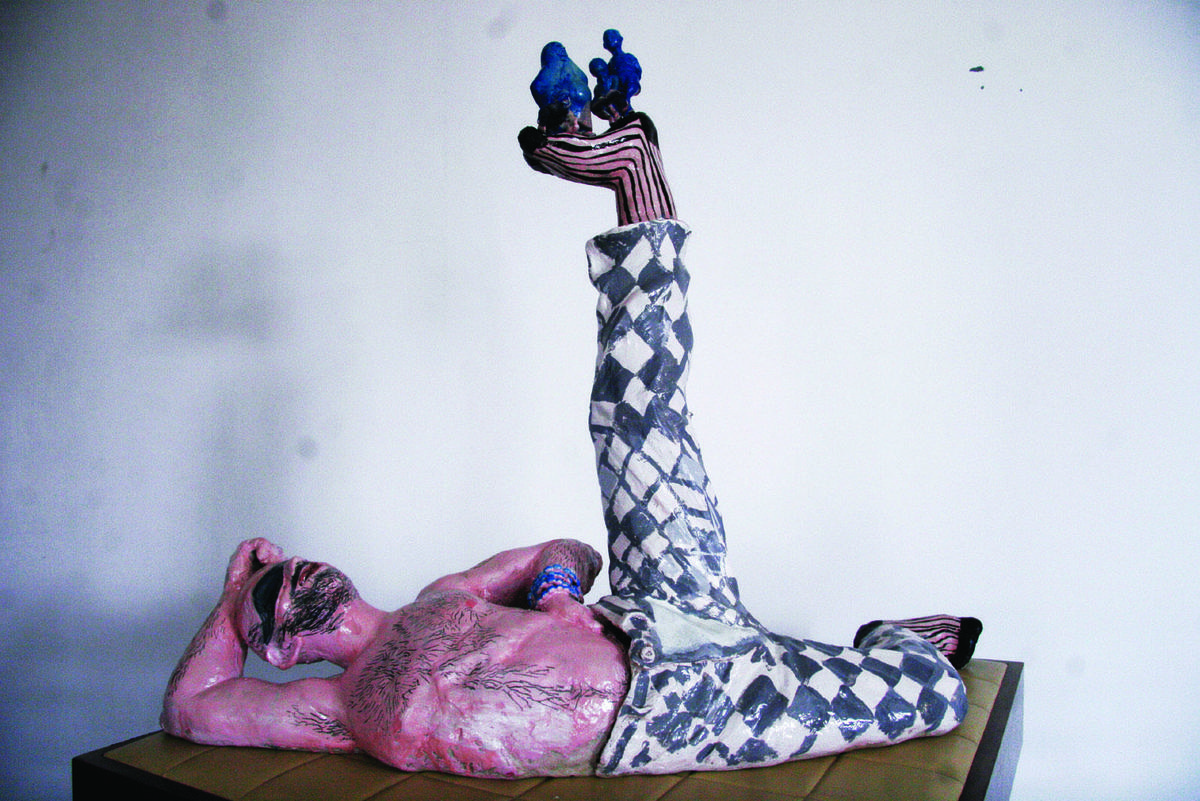
London
Unveiled
The Saatchi Gallery
February 5–May 6, 2009
London’s Saatchi Gallery assembles an impressive roster of artists for their first major foray into the Middle Eastern art market in the provocatively titled Unveiled. Among the artists in this sprawling group show are Rokni Haerizadeh, whose work references traditions of Iranian portraiture (though always in slightly irreverent fashion — his elongated figures look a bit like Oriental ballerinas en route to a ball). Likewise, Ramin Haerizadeh (Rokni’s brother) teases convention in digitally manipulated photographic works, turning codes of portraiture — and of gender — on their head. Other works include Amsterdam-based Tala Madani’s luscious tableaux; Laleh Khorramian’s fantastic landscapes, which are as much ruminations on painting as they are mini-epics; and Ahmed Alsoudani’s impressively chaotic Guernica-like drawings treating the psychology of violence.
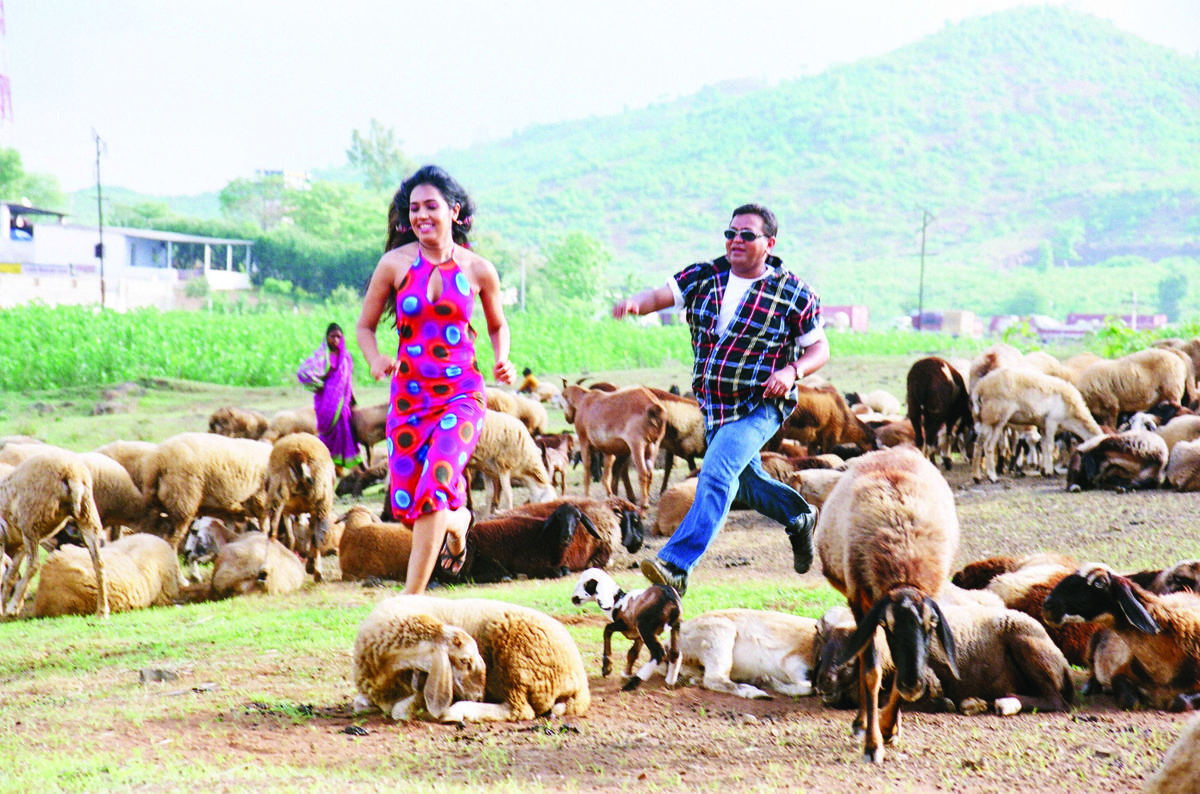
London
Tate Triennial 2009: Altermodern
Tate Modern
February 3–April 26, 2009
The fourth Tate Triennial opens this February with the intention to navigate what it means to be modern today. Curator Nicolas Bourriaud has coined the term “altermodern” to describe art that belongs to the so-called global era but is also a response to the mind-numbing standardization and commercialism around us. Such art, he offers, tends to be characterized by artists’ cross-border, cross-cultural negotiations; the negotiation of different disciplines; the use of fiction as an expression of autonomy; and a concern with the celebration of difference and singularity. The exhibition, plainly ambitious in nature, will map out this brave new altermodern culturescape, presenting new and commissioned works by artists living in the UK, British artists living abroad, and passersby. A series of “Prologues,” four one-day events, are taking place in the lead-up to the show, to provoke debate around the triennial’s themes, with contributions from writers, art historians, artists, and philosophers, including Tom McCarthy, Jordi Vidal, TJ Demos, Carsten Höller, Okwui Enwezor, and Ultrared.
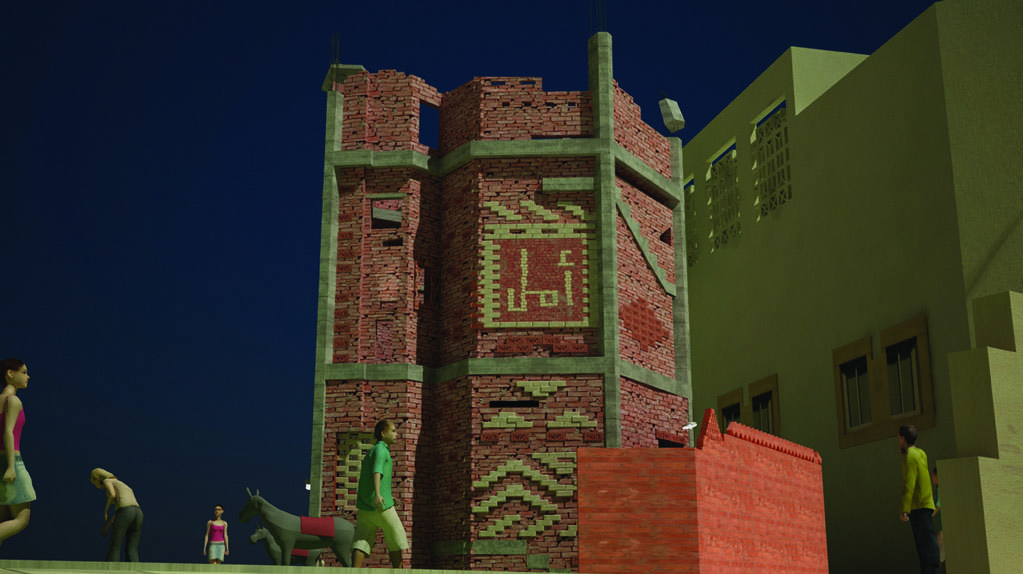
Cairo
Cairo Biennale 11
Various venues
December 20, 2008–February 20, 2009
This year’s Cairo Biennale takes the unwieldy but well-trodden theme of “The Other” as its point of departure. Initiated and run by the country’s Ministry of Culture, the Biennale is typically a chaotic compendium of the very good and the very mediocre. This year, the ministry has commissioned Ehab Ellaban to serve as curator, overseeing eighty-eight artists from forty-four countries. To his credit, Ellaban seems to be straying from the event’s traditionally safer curatorial tendencies, including more video, installation, and performance than we’ve seen in years prior. Among his noteworthy commissions is Cairo-based artist Lara Baladi’s Borg El Amal (Tower of Hope). Housed in a constructed seven-meter Babel-esque brick-and-cement tower that seems to evoke the temporary settlements that dot the Egyptian landscape, the artist’s installation will also host an opera whose primary protagonists are melancholic donkeys. Part operatic soap, part sculpture, the work proposes to subtly address the human dramas that are both typically Egyptian and universal in nature. The other Egyptian representatives include painter Adel El Siwi, Essam Maarouf, Hanafy Mahmoud, Wael Darwish, and Arman Agoub. Also to look out for are Kader Attia representing Algeria; Waheeda Malullah showing for Bahrain; and Sabhan Adam and Buthayna Ali standing in for Syria. The Biennale will take place at its usual venues: the Gezira Art Center, the Mahmoud Khalil Museum, and the Cairo Opera House, plus a new temporary gallery near the opera house dubbed “The Space.”
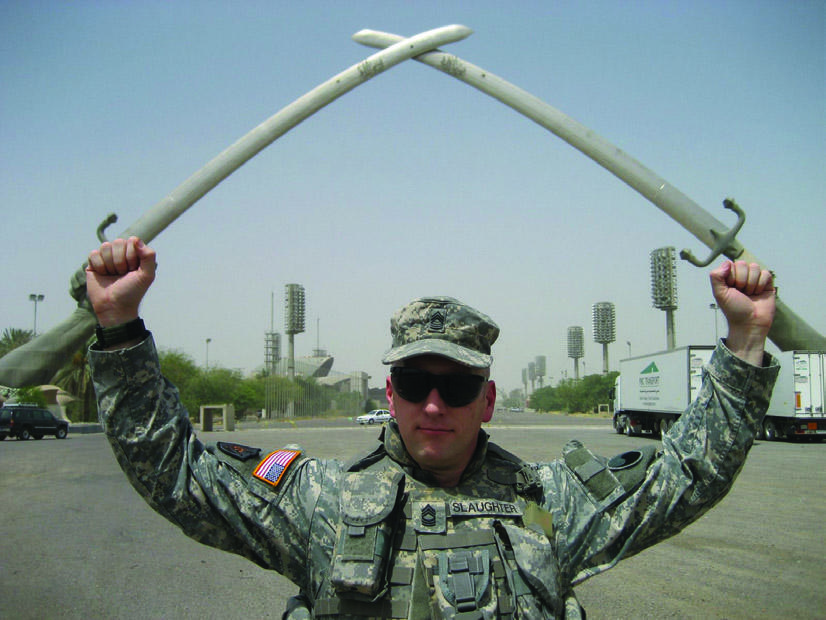
New York
Michael Rakowitz: The Worst Condition Is For a Person to Pass Under a Sword That Is Not His Own
Lombard-Freid Projects
March 3–April 4, 2009
Michael Rakowitz presents his latest musings on history and its discontents with the excellently titled The Worst Condition Is For a Person to Pass Under a Sword That Is Not His Own. In a sculptural installation supplemented by his trademark drawings, Rakowitz will navigate the mimicry of science fiction and cinema in Saddam-era monuments, Iraqi military uniform design, and the larger resonance of these things in the Gulf over the past thirty years. Ostensibly both an extension of and departure from The Invisible Enemy Does Not Exist — his painfully detailed recreation of archeological artifacts looted from the National Museum of Iraq in the aftermath of the American invasion of April 2003 — his latest work stands to make us think again about how the most peculiar accidents of history may intersect with the grand narratives of our times.
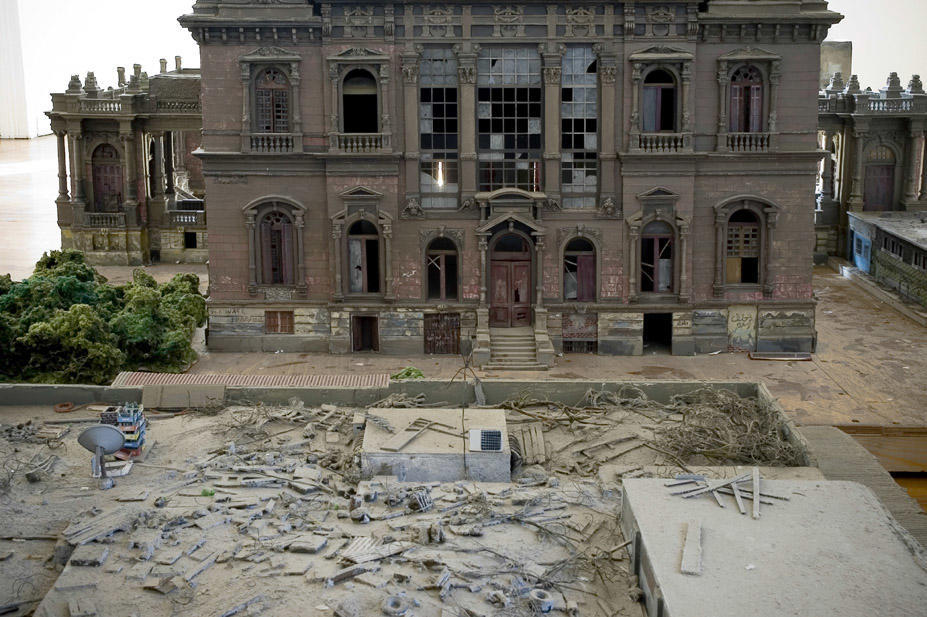
Cairo
Townhouse Neighborhood 1:35
Townhouse Gallery
March 14–April 8, 2009
The basis of the Townhouse Neighborhood 1:35 project is a small-scale model of the Antikhana neighborhood, a former bohemian stomping ground that surrounds the Townhouse Gallery in downtown Cairo. Using the maquette as its inspiration, this long-term initiative hopes to unravel the complexity of the urban fabric in this peculiar location, particularly as it faces massive pressures born of gentrification. In this three-part project, persons from the neighborhood itself will take part in a series of workshops, reflecting on their surroundings and thinking about how they could be improved. The maquette, in turn, will evolve from a realistic representation toward a utopian visualization. In the meantime, a group of architects and urban planners are in the midst of developing a plan to transform the abandoned Said Halim Pasha Palace — an epic, crumbling ode to turn-of-the-century monumentalism located across from the gallery — into a museum of Cairo. Finally, the results of the workshop will be presented in an exhibition in the spring.
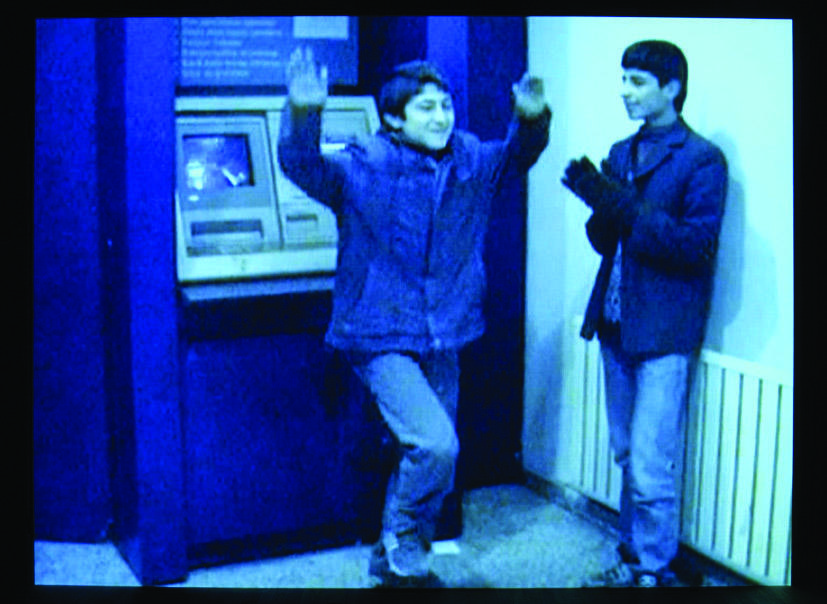
London
Infrastructures and Ideas: Contemporary Art in the Middle East
Tate Britain and Tate Modern
January 22–23, 2009
The world’s most popular museum turns its attention to the Middle East in January, with a two-day symposium that will explore ideas from the changing definitions of the region and its art to writing, translation, exhibitions, and that old chestnut, “tradition and modernity.” Other sessions will assess the impact of grand museum plans, such as those for Abu Dhabi’s Saadiyat Island, on more flexible commissioning organizations, such as Ashkal Alwan and the Sharjah Biennial. The symposium, organized by Tate staff with independent curator Gilane Tawadros, can be seen as a prelude to the museum’s engagement with the region, in terms of future exhibitions, research, and acquisitions. Speakers will include the usual suspects — Platform Garanti Contemporary Art Center director Vasif Kortun, Bidoun’s Negar Azimi and contributor Shumon Basar, Townhouse Gallery’s William Wells plus a good sprinkling of artists: Wael Shawky, Michael Rakowitz, Yto Barrada, Anas Al-Shaikh, and Hassan Sharif, among others.
London
YZ Kami: Endless Prayers
Parasol Unit Foundation for Contemporary Art
November 21, 2008–February 11, 2009
London-based Parasol presents ten years worth of paintings and works on paper by New York-based artist YZ Kami. Among the works showing are a series of the artist’s large-scale photorealist portraits. All of these portraits, some as large as two by three meters in size, capture their subjects in a moment of reflection, of pause, of distraction. They are remarkable in their ordinariness, their resistance to being precious or photographic in that decisive-moment sort of way. The same frontal emphasis and detachment are present in his monumental photographs of Islamic sites and architecture, some of which will be shown here. Also included are works on paper that often take Sufism as their point of departure, subtly and evocatively blurring the lines between physicality and essence.
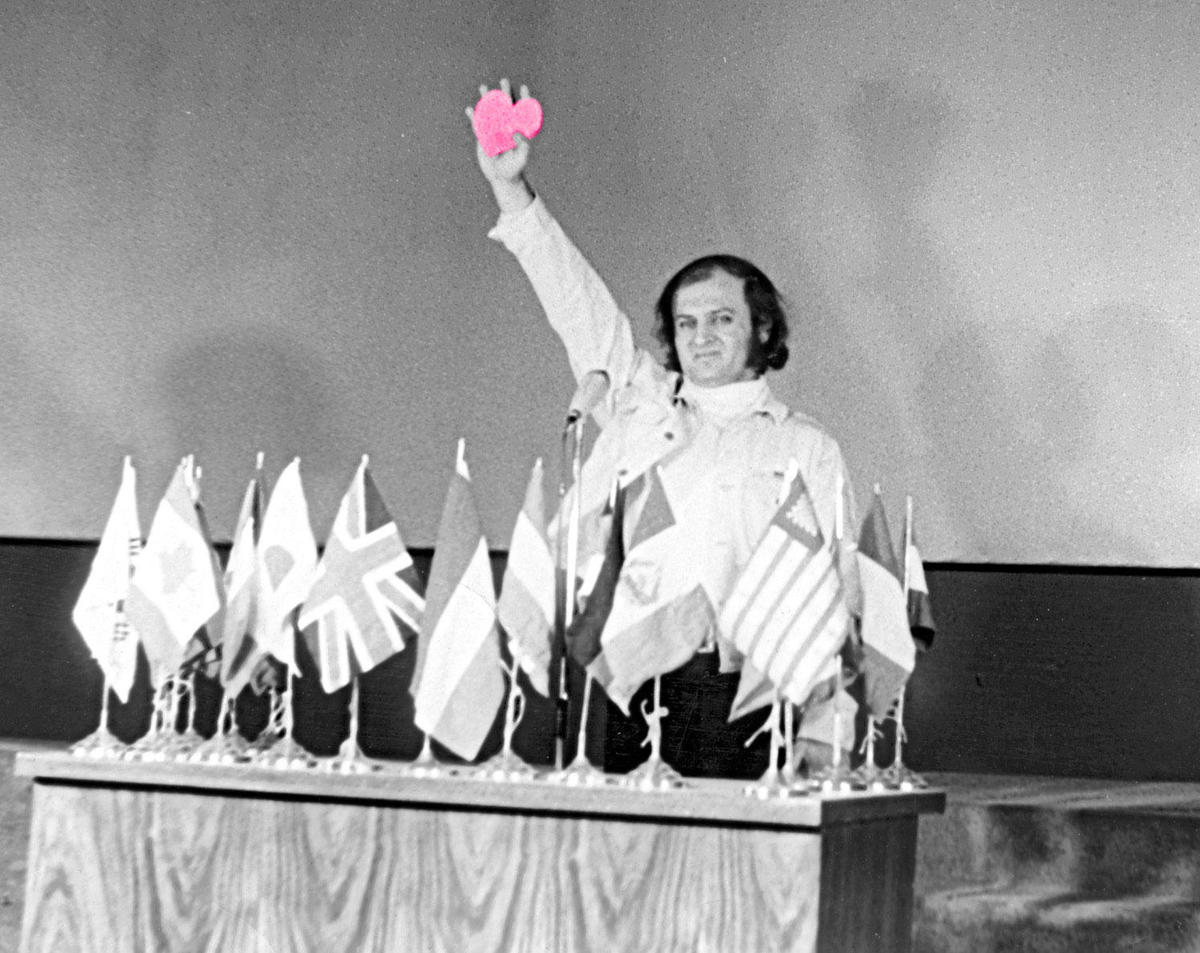
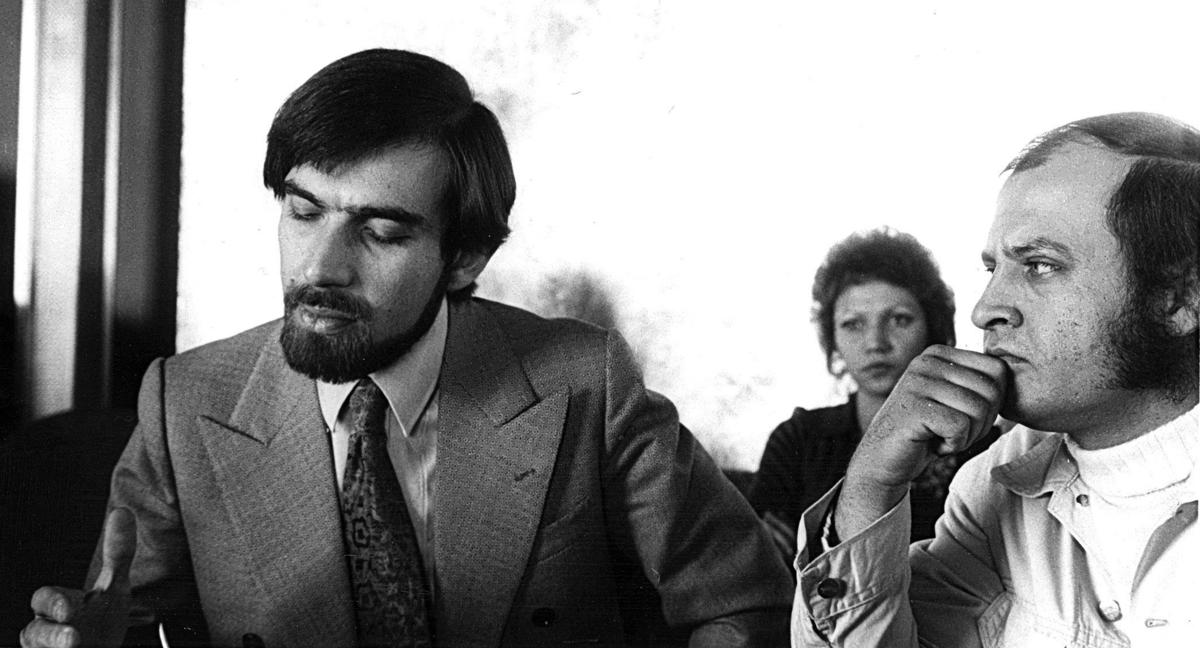
Before there was an Iranian New Wave, there was Kanoon. Founded in 1965 with the blessing of then-queen Farah Diba, the Institute for the Intellectual Development of Children and Young Adults — mostly referred to as Kanoon, an abbreviation of the Farsi name — produced books, audiotapes, and films, both animated and live action, for Iranian children from Tehran to Bushehr, Sistan, and Baluchistan. Stories such as Baba Barfi (Father Snow), Amoo Norooz (Uncle New Year), The Journey of Sinbad, or Khorshid Khanoom Aftab Kan (Shine on, Lady Sun) were tales that all Iranian children would come to know and cherish. Prior to Kanoon’s founding, most children’s books in the country were translations of Western classics. There was Pinocchio, The Little Prince, and Tin Tin — all in slightly clumsy Farsi.
The history of Kanoon is equally entwined with many of Iran’s most epic late twentieth-century stories, from Empress Farah’s cultural initiatives to the heyday of the Iranian left to the revolution. Kanoon would become a sort of incubator for some of the country’s most celebrated artists — including Ebrahim Forouzesh, Noureddin Zarrinkelk, and many of the protagonists of Iranian cinema, Sohrab Shahid-Sales, Abbas Kiarostami, and Amir Naderi among them.
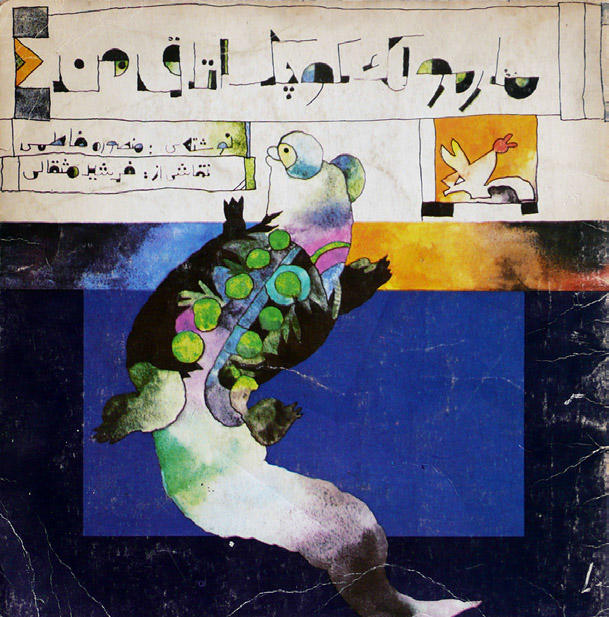
The following is the first in a series of conversations in Bidoun about Kanoon. Here, Arash Sadeghi engages his father, the painter Ali Akbar Sadeghi, who is best known for pioneering a style that mixed traditional Persian coffeehouse painting and the surreal, and Farshid Mesghali, one of Kanoon’s most important graphic designers and animators. Among the elder Sadeghi’s most iconic projects during his time at Kanoon was Malek ol-Khorshid (King of the Sun, 1975), a magical animation inspired by the tenth-century Persian epic The Shahnameh (The Book of Kings). Mesghali is probably most beloved for his illustration work on the book Mahee Siya Koochooloo (The Little Black Fish, 1968). Here, the three discuss the founding of Kanoon and its activities up until the time of the revolution of 1979. One way to gauge a nation’s history, after all, is to look at what its children have been reading.
Arash Sadeghi: Can you tell me a little about how you entered Kanoon?
Ali Akbar Sadeghi: After all these years and at this old age, I can’t remember too many details. But I can say that two great people, Lili Amir-Arjomand and Firooz Shirvanloo, created a factory called Kanoon whose goal was to support creativity among the next generation of Iranians.
Now, how did I become a Kanooni? One day, Abbas [Kiarostami] told me that Kanoon was to publish a book and needed someone who could illustrate the text in classical Persian style. He asked me to come to their offices and, like that, with the book Pahlavan-e Pahlavanan (The Champion of Champions), my relationship with the institute began. I have the best memories of my life from my time there.
AS: Mr Mesghali, can you tell me about the birth of Kanoon?
Farshid Mesghali: I’m really excited. After all these years, someone is asking me to recount the story of the birth of a revolution. Let’s start.
Farah Diba, the last Iranian queen, had a close friend named Lili Amir-Arjomand. They had been roommates while they were students in France. When Farah became the queen, Lili, who had studied to be a librarian, was appointed head of the national oil company library.
After a short while, in 1965, Lili, with Farah’s support, proposed that a library be built in Laleh Park — it was called Farah Park back then — for children and young adults. This was to be the first specialized library for children in Iran, and they also planned to publish children’s books.
Their first book was The Little Mermaid, complete with Farah’s own illustrations. Many people do not know this and this first book and the establishment of the library were the starting points of Kanoon. In fact, in the beginning, Kanoon’s activities were limited to translating and importing books from abroad.
In 1965, Lili officially launched Kanoon with Farah’s support. She would be the first director, along with a man named Firooz Shirvanloo.
I knew Firooz from many years ago, when I was working at Franklin Publications with Arapik Baghdasarian. Firooz is the most important person in the history of Kanoon, in part because of his political background. Firooz had studied philosophy in England and had come back with leftist tendencies. He was also a member of the Iran-Britain Student Confederation. They were known for their extreme revolutionary ideas.
After returning to Iran from Britain, he was the art director of Payk magazine for young adults, which was published by Franklin Publications. These days you can find the magazine in news kiosks under the name Roshd.
After the confederation became embroiled in a failed attempt to kill the Shah in 1965, Firooz was arrested by one of the Shah’s insiders in the Iran-Britain Student Confederation and sentenced to death. After his arrest, they feared me, too, and I was fired.
Europeans objected to the court sentence, and eventually the Shah forgave them, and the death penalty was reduced to a few years in prison. After winning their freedom, some of them were offered important positions so that they might “rethink” their leftist ideas.
Because of his experience in publishing magazines for children, the palace offered Firooz a position in the newly formed Kanoon. At the same time, Firooz had just founded an advertisement group called Negareh and hired a group of arts and literature students from Tehran University to work with him, including Abbas Kiarostami, Ahmadreza Ahmadi, Nikzad Nojoumi, Farideh Farjam, Arapik Baghdasarian, and myself. Eventually they would all migrate to Kanoon itself. But even after prison, Firooz held on to his leftist ideas, and many of the people he brought into Kanoon with him were leftist writers and researchers.
In 1968, Firooz commissioned me to work on one of Kanoon’s first independent books. With the publication of The Little Black Fish written by Samad Behrangi, we gained a lot of attention. I drew the illustrations for that book, and we won the top award at the Bratislava Children’s Book Fair because of it.
[The Little Black Fish is the story of a black fish who dreams of seeing the big blue sea. He faces many dangers, including a heron, which he kills with a dagger. The narrator of the story, a grandmother to many little fish, explains that the little black fish has disappeared by the end — a little like the martyrs who have died trying to find a better world. It was hard not to find political symbolism in this, along with other stories. Incidentally, its author, Samad Behrangi was an active socialist agitator who translated some of Iran’s most avant-garde poets, like Ahmad Shamlou, Forough Farrokhzad, and Mehdi Akhavan-Sales, into his native Azeri language. He drowned in the Aras River in 1967, and his death is generally blamed on the Pahlavi regime.
Also published around that time was Gol-e Boloo Va Khorshid (The Crystal Flower and the Sun, 1967), by Farideh Farjam, illustrated by Nikzad Nodjoumi. This is the story of a flower that miraculously shoots up amid the ice of the North Pole. For a period of six months, the little flower develops a close relationship to the sun. The sun tells the flower about the world and its people. At the end of six months, when the sun has to migrate, the flower asks to move with him. He gets so close to him that the flower wilts and joins the sun forever. Along with The Little Black Fish, The Crystal Flower was honored at the Bologna Children’s Book Fair.]
FM: In 1969, Firooz moved to Kanoon completely and took his colleagues with him, launching a research department, a publishing department, and, upon Kiarostami’s suggestion, a film and animation department. Firooz directed all three, and in 1970, Kanoon’s first short motion picture Nan-o-Kooche (Bread and Alley), directed by Kiarostami, was produced.
[Shot in black and white, the film tells the story of a little boy walking home with a loaf of bread, who is confronted by a hungry dog. In the end, the two get over their mutual suspicions and become fast friends.]
In that same period, the first animations were born, including Agha-ye Hayoola (Mr Monster), created by myself, and Vorood Mamnoo (No Entrance) by Arapik Baghdasarian. With the arrival of Ali Akbar Sadeghi in 1970 and the illustration of Pahlavan-e Pahlavanan by Nader Ebrahimi, and a host of international awards that this book brought for Kanoon, the institution gained more currency and, because of that, more support from the queen.
[Pahlevan-e Pahlevanan is the story of a grand champion named Pooriya-ye-Vali who hears of a younger champion who hopes to triumph over him. The young pahlevan (champion) comes from Sistan to Kharazm to wrestle with Pooriya-ye Vali. His mother accompanies him and prays for him every day prior to the fight. Pooriya hears her, but nevertheless, decides to fight his best fight. He loses to the young champion and leaves his hometown forever.]
Kanoon eventually launched the Tehran Children and Young Adults Film Festival. They were especially interested in Eastern Europe films, like those of Raoul Servais and Jan Oonk. Kanoon hardly let any commercial or empty American films enter the collection.
[Later, that very collection would be the fuel for the post-revolutionary media to broadcast un-American films with educational and cultural values far removed from ostensibly Western or capitalist ideas.]
With the establishment of the film department and the launch of the Tehran festival, Kanoon started to grow rapidly. Many young artists and writers flooded there to make films. Among them were Dariush Mehrjui, Bahram Bezaie, Amir Naderi, Nasser Taghvai, Ali Akbar Sadeghi, Nafiseh Riyahi, Ebrahim Forouzesh, Nader Ebrahimi, Ahmadreza Ahmadi, Cyrus Tahbaz, and even musicians like Majid Entezami, Esmaiel Monfaredzadeh, Hossein Alizadeh, and Sheyda Gharachedaghi. Production increased dramatically.
AS: What year was that?
FM: I’m not sure of the year exactly, but I think it was around 1970, 1971.
Firooz was finally fired from Kanoon at the end of 1972. He had brought one too many leftists to the organization, like Mehdi Samakar and Dr. Rasoul Nafisi, to work as writers and researchers. SAVAK (the Shah’s intelligence services) had always had problems with the leftists, but for the most part Lili had been able to handle them because of her close relations with the palace. But slowly things changed.
When Firooz had to leave Kanoon, the so-called dissident products inspired by leftists were removed. He went on to direct the Niavaran Cultural Centre. But we owe him a great debt for giving us all a start.
AAS: That was our golden age. We won many prizes from all over the world.
[Firooz Shirvanloo would go on to work for Empress Farah Diba’s office, and played a large role in amassing the state’s modern art collection under the patronage of the empress herself. That collection continues to be known as one of the best modern art collections outside of the West, with its Warhols, Hockneys, Pollocks, and beyond. To this day, it inspires a conspiracy theory or two in reference to what became of the works after the revolution of 1979, and that revolution’s insistence on eliminating all traces of Western culture.]
AS: Can you tell me about the libraries Kanoon founded and ran?
FM: Over the course of ten years, Kanoon built 150 libraries in cities and villages throughout Iran. We created mobile libraries to roam to distant villages and distribute books to the country’s nomads. If there were places the buses couldn’t reach, books were sent to children on the back of donkeys and horses. One can say that Kanoon was playing the role of an independent Ministry of Culture.
AS: How did Kanoon raise money and gain support?
FM: From the beginning, a board of trustees was formed and the queen was in charge of it. Its members were from the Ministry of Art and Culture, the Ministry of Education, the national airline (Iran Air), the Interior Ministry, the Oil Ministry, the Pahlavi Foundation, National Radio and Television, as well as nine major national and cultural figures.
Board members supported Kanoon through their affiliated organizations. For instance, Iran Air was obliged to give children Kanoon products as in-flight souvenirs, or the Oil Ministry would give Kanoon products to the children of the employees. Iranian painters painted for children, Iranian sculptors designed toys, the musicians played at events, and filmmakers were dedicated to making children’s works. Back then, Kanoon’s libraries were the best in the Middle East, and maybe even the world.
The libraries were quickly turned into cultural centers and started to attract children with free books, films, and theater. Children were crazy for Kanoon. There were weekly classes of painting, filmmaking, writing, music, theater, languages, and ceramics at Kanoon’s various centers and libraries.
Around three hundred libraries were active. The mobile libraries were also mobile cinemas and showed films for nomad children or children living in distant villages. By 1979, one million children were members of Kanoon. At least eight million children were touched by Kanoon products, and the books they published numbered over fifteen thousand.
We published all kinds of books, from religious tales about Shia imams to stories about ancient Persian heroes to fantasy and modern stories. Kanoon’s productions took account of all the people of Iran, from north to south, east to west, as well as the capital. There really was nothing else like it.
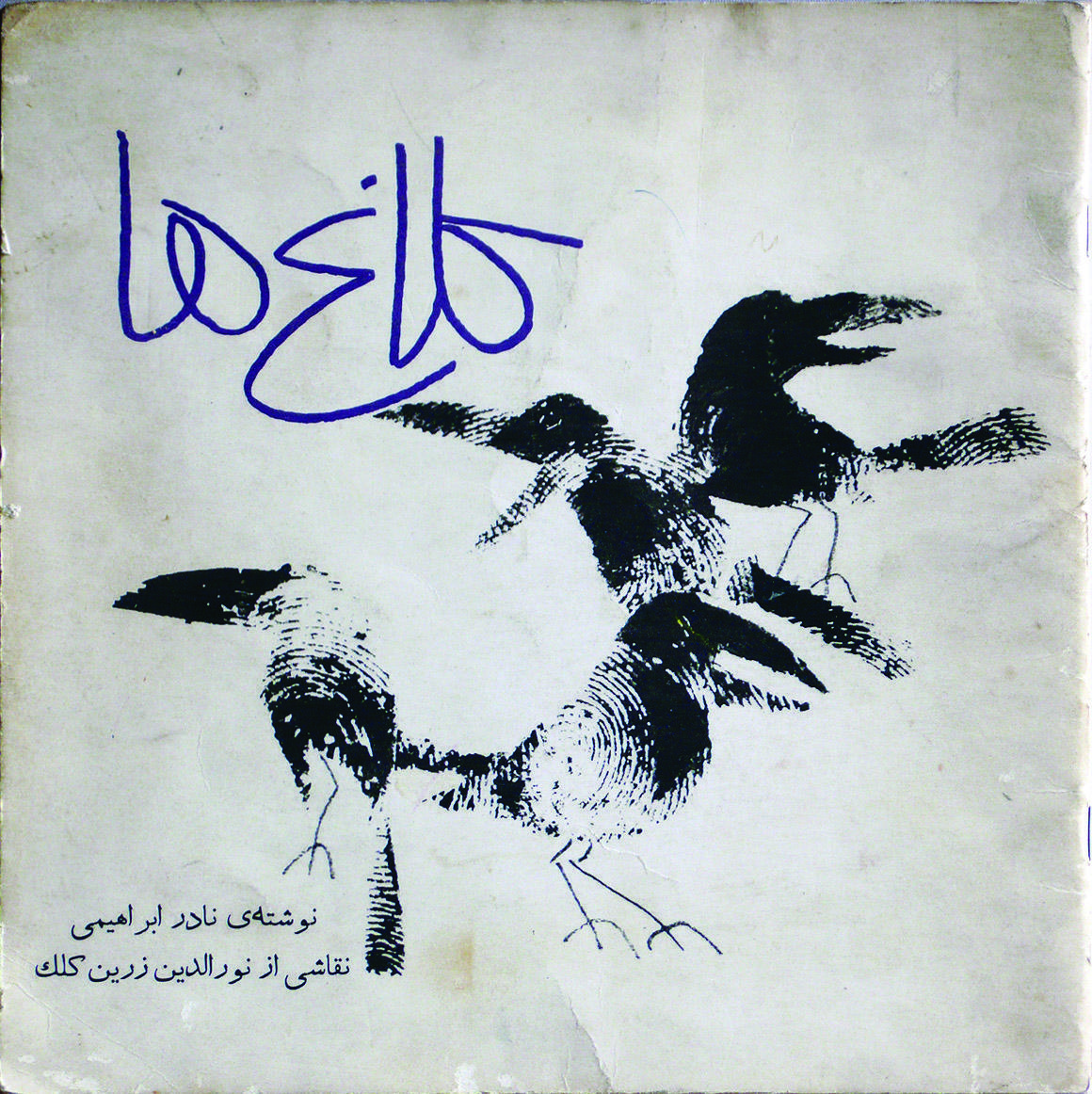
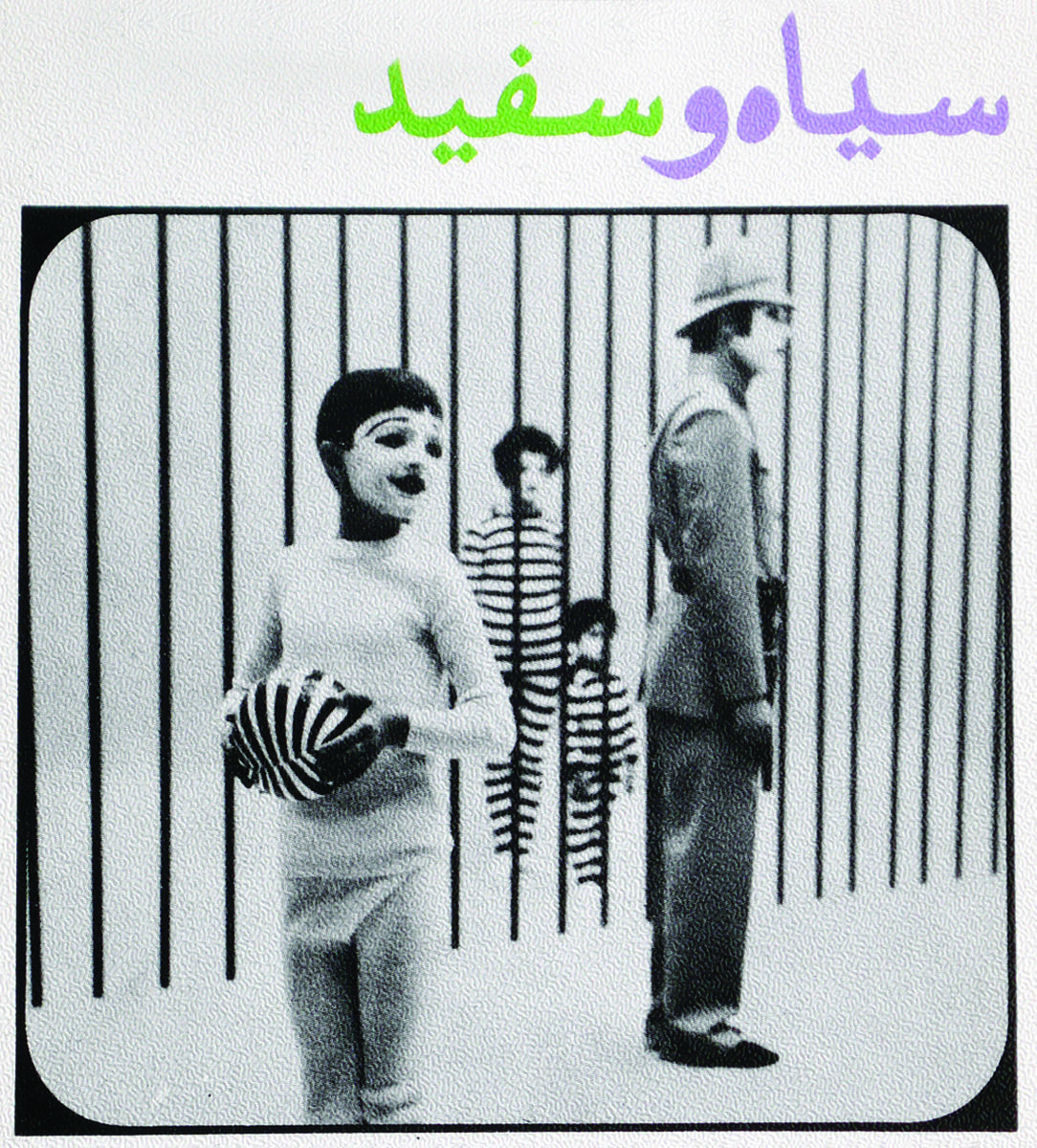
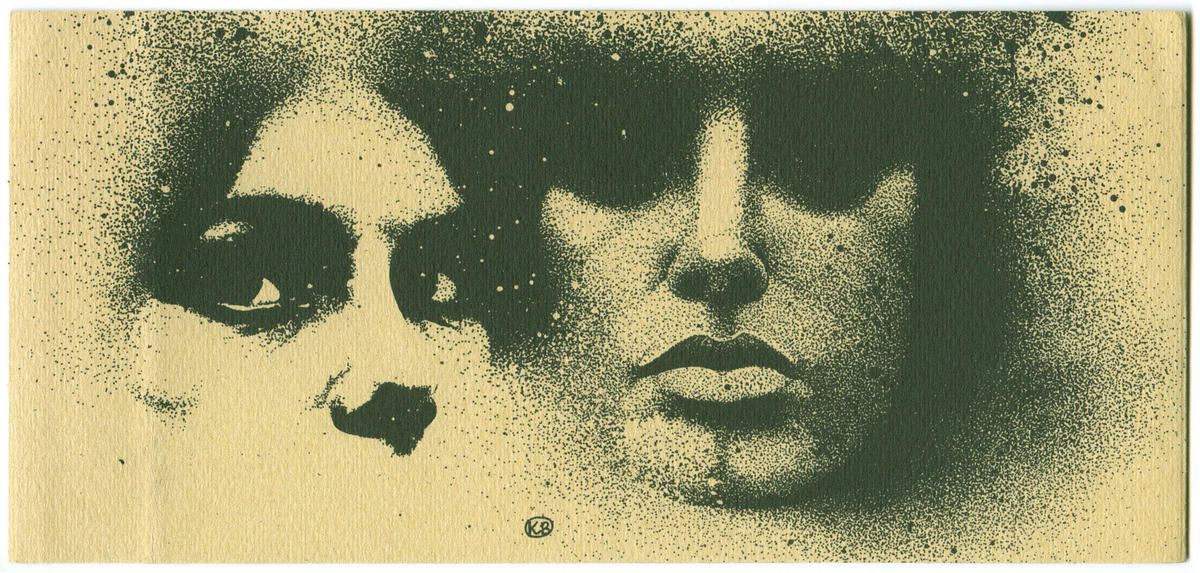
There were openings every week. Entire shows sold out. Artists were touted, promoted, and written about. In the late 1960s, radical politics and radical art found a home in cafes, galleries, and private collections, supported by wealthy patrons and a rising middle class. There was Janine Rubeiz’s dynamic intellectual hangout, Dar el Fan, and Gallery One, founded by Shi’r editor Yusef Khal and his wife, the artist Helen Khal. The Nicolas Sursock Museum held an annual juried Salon d’Automne exhibition of modern art in Lebanon, modeled on the famed French exhibition. A showing at the Salon d’Automne was very possibly the most significant exhibition, in Lebanon, in an artist’s career. Even after 1973 — the beginning of nearly two decades of civil wars — the art scene carried on. Galleries opened and closed and opened again over the years. It was, in an odd sort of way, a special time for the city’s dealers and artists, who continued in spite of the madness around them.
Amal Traboulsi saw it all — a sort of reigning queen of the Beirut art scene, she studied fine art at Beirut’s American University in the Sixties and eventually went from being a collector of young Lebanese artists’ work to owning a gallery herself. She opened La Galerie Épreuve d’Artiste in 1979, in the midst of the civil war, in the Tajer building in the Clemenceau neighborhood of West Beirut. Back then, the area was dotted with boutiques (Danielle Chehab’s Rive Droite was next door). West Beirut was a hub of cultural life. “I just loved the area. It was more open than Achrafieh, and it was the place to be.”
In the beginning, La Galerie Épreuve d’Artiste showed mostly foreign artists — the Chilean kinetic artist Ivan Contreras-Brunet, Belgian artist Lala Akhud, and the German-based Italian artist Bruno Bruni among them. Slowly, Traboulsi shifted her focus to local artists. Collectors including businessman Ramzi Saidi, ministers Ibrahim Najjar and Raymond Audi, and publisher Riyad Rayyes were keen to buy works by Lebanese artists. Painters like Omar Onsi and George Corm, as well as prominent sculptor and painter Aref Al Rayess, were among her top-selling artists. In her four years in the Tajer building, she hosted nearly eighteen exhibitions a year. Almost every one of them sold out, with prices ranging from one hundred to several thousand dollars. (A Chaouki Chamoun painting that sold for a few thousand dollars back then may fetch as much as $50,000 on auction today.)
Even amid the vicissitudes of war, heaps of capital flowed into Lebanon from Arab and non-Arab countries, often courtesy of an arms market that supported the various militias running about this small country. In its own way, the economy was booming, and, as ever, there remained a market for luxury goods, including fine art. “You keep buying art,” says Traboulsi. “The art market never stopped, even when everything around us was blowing up.”
Still, it wasn’t all fun and games. Many afternoons were spent sitting by the radio listening to Sawt Lubnan deliver reports of bombings and advice to Beirutis on which roads they ought to avoid during their daily commute. Traboulsi was living in Achrafieh in East Beirut at the time and crossed into West Beirut daily to reach the gallery. When it was impossible to travel because of road closures, art openings would be postponed.
Few complained.
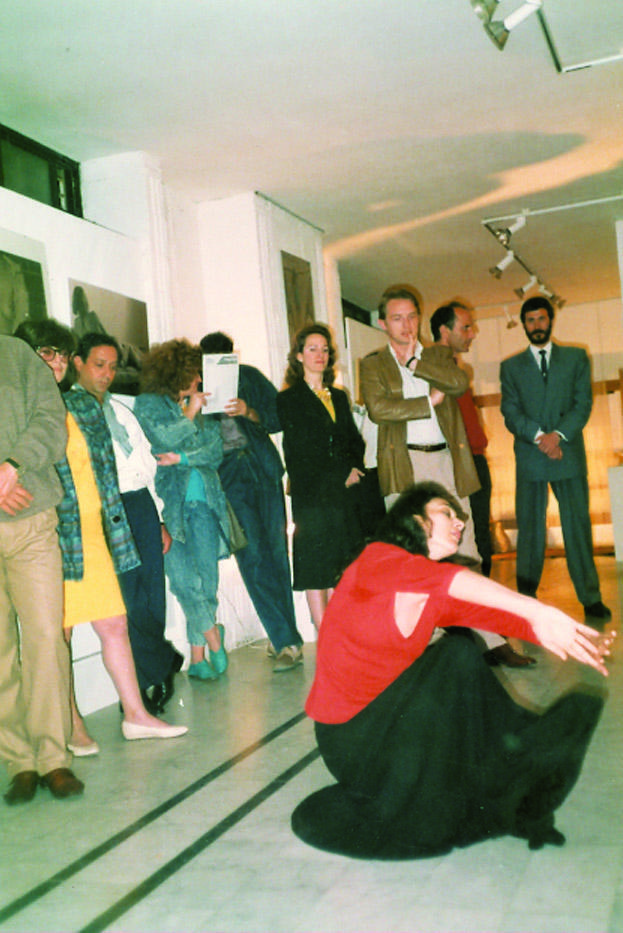
The end of that era arrived in 1982, with the Israelis. An exhibition of the Jordanian sculptor Mona Saudi was scheduled to open on June 8 — the same day Israeli tanks rolled past the gallery. Traboulsi recalls overhearing three passing Israeli soldiers comment, “An art gallery in Beirut during a war?” She canceled the opening. Two days later, she shuttered the gallery in Clemenceau. There was one more show, an exhibition of Yemeni handicrafts, in April 1983, after which Traboulsi, like most Beirutis, remained bunkered in her part of town.
For the next three years, Traboulsi would hold group shows out of her home in Achrafieh. Perhaps ahead of her time, she urged many artists — Maya Eid, Amin Boulous, Jean Marc Nahas, Névine Mattar, and Nadim Karam among them — to blur the line between design and art. Traboulsi encouraged Ghassan Abu Jawdi, a dentist turned sculptor, to pursue his art, too. (He employed the plaster he used to seal teeth in his work.)
And while conditions were occasionally stark — no fancy invitations, nylon covering the windows when gunfire would shatter the glass — the gatherings-cum-exhibitions were always packed. Nicholas Audi, a now-renowned chef who lived in the building, offered his chocolate truffles to the crowds as Amal played music.
That energy carried into 1987, when Traboulsi converted an abandoned garage into an art gallery, complete with marble floors, in Kaslik, a suburb north of Beirut. She opened the space with popular paintings by Willy Aractingi, who she claims is Lebanon’s first and only naive artist; over the length of his career, he painted each of Jean de la Fontaine’s fables. (Aractingi had also been a “nez,” working as a chemist for Fatale, a Lebanese perfume company designing fragrances.) The energy at openings at the end of the Eighties and throughout the war was “almost hysterical,” she says. People would wait in long lines to see shows. There was music specific to the exhibition at nearly every opening, and on many occasions, there was spontaneous dancing in its midst. At one opening, two years before the end of the wars, Traboulsi set a huge canvas on the floor in the middle of the exhibition space. The artists attending began to paint, and when the paint ran out, they used Nescafé.
Traboulsi held the space in Kaslik until 1997 but was forced to close again due to Christian fighting in the East. She moved to Paris for a few years, where she organized and produced exhibitions on Lebanese art, including 200 Years of Lebanese Art at L’Institut du Monde Arabe. Over the next ten years, Épreuve d’Artiste moved three more times, continuing to move away from the violence with every move, staging shows in nearly ruined spaces like the Maronite Church or the epic “Egg Building” in downtown Beirut. In 1992, Traboulsi sponsored what is commonly referred to as the first installation art in the country, by artist Ziad Abillama — an assortment of sculptural works encircled by barbed wire on a patch of North Beirut beach.
With Prime Minister Rafik Hariri’s rise to power by the late 1990s, there was renewed confidence in the city, and in the art market, too — complete with a rise in prices. A thrice-sold-out Amin al Basha show seemed to confirm this renewed energy.
But all good things must come to an end, and Traboulsi finally closed her gallery doors in 2006. “It’s just not the same as it used to be,” she says about the current moment. Still, she continues to curate shows, sell work, and consult collectors. On the day we met this past fall, our conversation was interrupted by a flurry of calls concerning Christie’s auction results in Dubai that day.
The sudden interest in modern Lebanese and Arab art at large has inspired a surge in exhibitions at home and abroad. Traboulsi ended the conversation reflecting on the various stages of her life’s work, and especially the peripatetic Épreuve d’Artiste. She smiled.“You know, the space had another name. It was called ‘La Galerie qui Bouge.’ It actually was our official name for a while.”
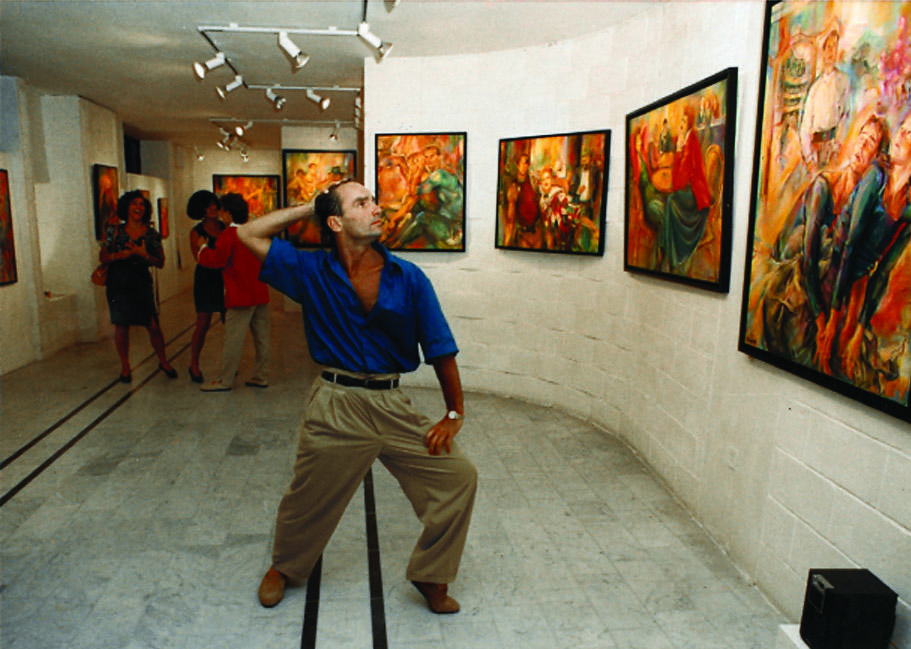
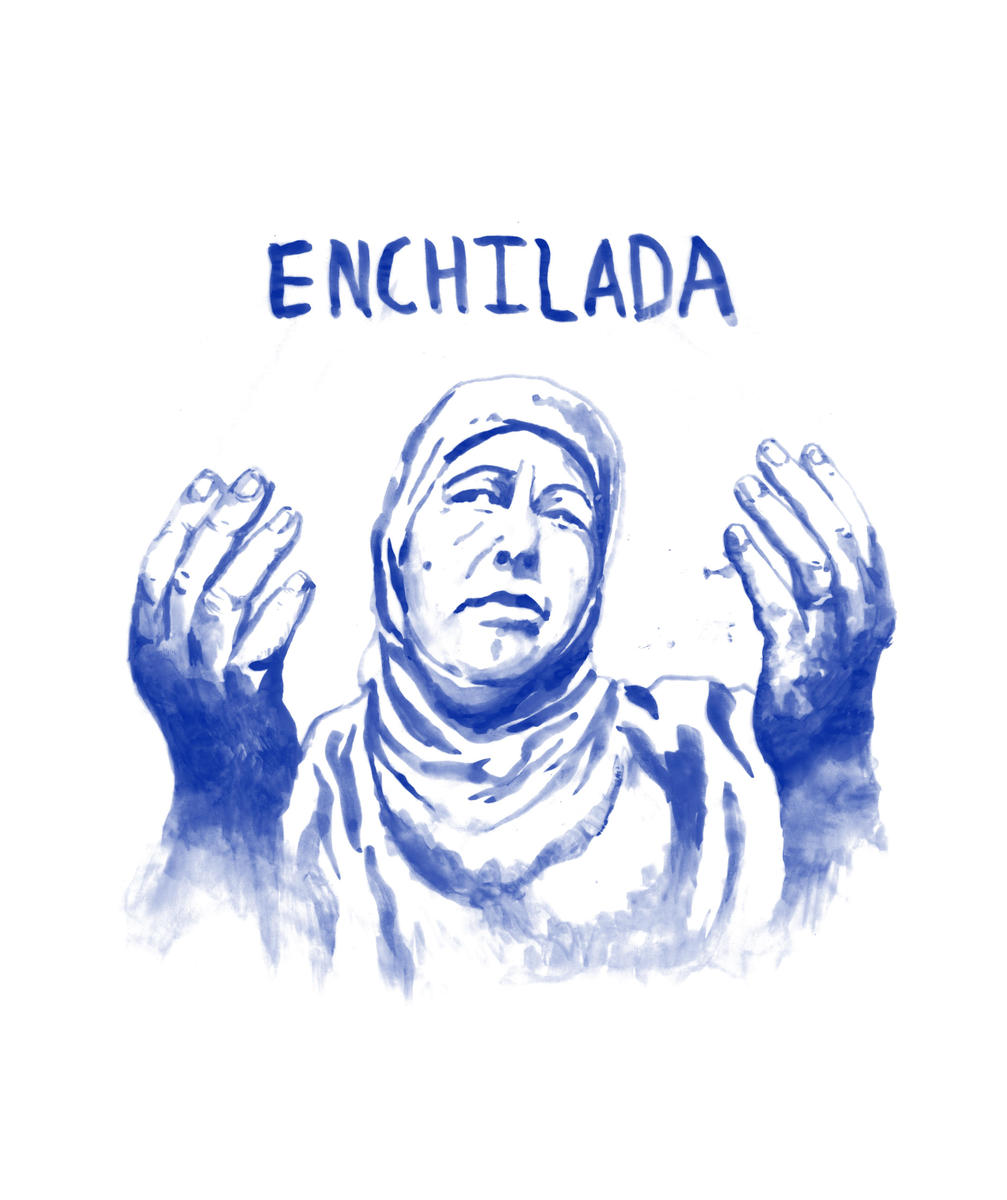
I first heard the Arabic word for “vibrator” by the ice cream machine in a cafeteria at Middlebury College. The rainbow-colored sprinkles that I liked to dump onto my soft-serve swirls had run out, and I was yearning for an attendant who might bring more. Class was going to start again in five minutes, and facing the prospect of three more hours of strenuous grammar, I was fixated on the missing sprinkles. A line started to form behind me. Clare wandered over. Clare was an anthropologist friend from Berkeley who was learning Arabic so that she could “study” nightlife in Beirut. Clare was always late for lunch. I suspected she went back to her dorm after our morning sessions to get high, but I never asked.
Today she looked sad. “My electronic friend is broken,” she said. Sadiiqi al-elektrony la yashtaghal.
“Your what?”
“Sadiiqi al-elektrony,” she repeated. Her eyebrows rose and dropped back down while her head bobbed from side to side. I fidgeted. The queue for ice cream was growing thanks to the kids from the Russian School, and I was nervous I’d be late for class.
“You know, hazzaza,” she bobbed again. “From the verb to shake, convulse, tremble, quiver.”
I stared at her blankly.
She pulled her electronic friend out of her bag, its pinkish silicone tip visible for me to see. One of the teachers brushed past, a tightly veiled Egyptian. “The root of ‘to shake’ is ha, za, za,” the Egyptian whispered, with one eye on Mr. Silicone. Am I imagining things? Did she wink at us? This question occupied us for days.
We were bored. The hazzaza incident, or hadath al-hazzaza, as it came to be known, was a millimoment of fun amid an otherwise very serious nine weeks. When Hans Wehr (his text was our bible, a green Arabic-English dictionary) couldn’t supply the answers, we invented words. Tofurkey, a cafeteria staple — Wikipedia calls it a “portmanteau of tofu and turkey” — we called kharra, or shit. We found occasions to speak of pornography (esteporn), fashion victim (dahiyat al-moda), lesbians (al-butchaat). Electronic friends. We estimated, improvised, reconceived, and mostly butchered the Arabic language out of sheer lassitude. We also developed crushes — on students in other language schools, on our teachers, very rarely on each other. And at times we were mean. Really mean. It was like junior high school all over again.
Middlebury, Vermont, sits 135 miles north of Boston and several hundred miles south of the North Pole. In the winter it’s known for its exceptional bobsledding pistes, and in the summer, its kayaking and competitive “canoe polo.” The town, whose population was a little over 8,000 people at the time of the last census, boasts a handful of notable residents, including John Deere, the creator of the eponymous tractor, and Bobo Sheehan, the coach of the 1956 Olympic alpine ski team. The great American poet Robert Frost also spent more than two decades moping around the woods being depressed here.
And yet outside the greater New England area, Middlebury is mostly known for its incomparable language study. Chinese, French, Hebrew, Portuguese, Spanish. During the Cold War, legions of patriotic polo-shirted Americans came here to learn Russian. Later, when the economies of the Far East were booming, many came to learn Japanese and Chinese. Today, it’s Arabic’s turn. Year after year, hundreds of bushy-tailed (and many Bush-supporting) Orientalists, some more seasoned than others, make their way to this remote location. Here, among the fresh-faced, flip-flopped masses that give this part of the world its discrete charm, students learn the finer points of grammar, elocution, and execution. For those in the know, the pilgrimage to Middlebury is a rite of passage, a… bar mitzvah?… into the rarified world of the Arabic language.
Week One, Day One
It is difficult, having given up undergraduate life some years ago, to accept that to master Arabic one must live in a dorm. We sleep in narrow beds, for which one must buy special sheets. Those of us who refuse to buy special sheets on principle are left to make do with cold, itchy, inhospitable vinyl. Most students have roommates, too. Out of fear of being assigned one, I had every medical doctor in my family pen a note attesting that I am an insomniac, that I have been known to walk in my sleep, that I can be abusive in the night. But the sweet success of being assigned a single is quickly tempered by the room’s size; I call it “Little Gaza.” I tape images of Dalida on my walls.
We take our placement exam today. In the gymnasium-sized cafeteria, minutes before the exam, dozens of students have their heads buried deep in their Arabic books. They are cramming. Others are stuffing bananas and Power Bars into their backpacks as provisions for the hours to come. I force myself to look away but must admit to having pangs of anxiety as we walk toward the testing hall. Where is my Xanax when I need it?
After the exam, H and I decide to go for a swim at the university’s sprawling indoor athletic complex. Though the sky looks grey and ominous as we set out on our school-provided bicycles, we decide to chance it and forego umbrellas. H does laps while I do the sidestroke like my grandmother does it. We shower, and as we prepare to return, we find that the lobby of the athletic complex has been flooded by torrential rain. We turn and run, only to find that we are trapped by water on every side. Finally, a kind man leads us out to his pickup truck and drives us back to the dorm. H has an Arabic dictionary with him, and we look up the following words: Noah, ark, flood, hero. (For the record, it rained all summer, and I never went back to the gym.)
Week One, Day Two
Today we sign the Language Pledge. The Pledge is one of the defining elements of the Middlebury experience. Its foundational philosophy is that one should be so intensely committed to learning a language that one can and will, for the period of six to nine weeks, forego any contact with the world in any other language but the one under study. As we prepare to sign, I overhear the boy behind me tell the story of an especially serious student who broke her leg the previous summer. Even in the emergency room, he says, she spoke only in Arabic.
Horrified by his tale, I try to figure out how to ask for a bikini wax in Arabic.
In celebration of our last night of freedom, we walk into Middlebury, an irregularly shaped village with one central street running through it, featuring an abundance of shops devoted to both gift cards and athletic goods. There is a single bar, a sort of pub with thumping hip-hop emerging from its basement depths. We duck inside. By the end of the evening, we’ve dubbed it taht al-ard, “under the ground.” Any existential connotations are lost as we find that the DJ is a skinny sixteen-year-old from the local high school playing shuffle with his friend’s iPod. One boy among us, who has spent a summer studying Arabic at the American University in Cairo, requests Amr Diab. “Who?” asks the skinny DJ. “Aaaah-mer Deeee-ahb! You know, Prince of Arabic pop!” Some of the others smile, nodding approvingly. Our DJ doesn’t know him and doesn’t seem to care that he doesn’t know him, either, and we’re left to hop around to Jay Z. Some of us try to belly dance to Beyoncé; others make equally awkward advances toward the townies. Unable to speak anything but Arabic, we smile a lot and use loghat al-jesm, “body language.”
Week One, Day Three
Today is the first day of class. I’m assigned to an over-bright conference room in the university’s library complex. My teachers hail from Iraq and Sri Lanka. Pressed to make conversation, I ask the Iraqi whether it’s true that Saddam Hussein loved Star Wars; I tell the Sri Lankan that I really love the music of MIA. I am very stupid, and they are both very kind to humor me.
We are to introduce ourselves, going around the room one by one. We are especially urged to explain why we are studying Arabic. The motivations are legion. One girl, a native of Vermont, wants to read the Qur’an “à l’originale.” She has the complexion of a peach. There is a graduate student with severe, asymmetrical dark hair who plans to write the definitive take on the politics of garbage collection in Palestine. There is an aspiring foreign correspondent prone to wearing a kaffiyeh about his neck. He writes everything down in a black Moleskine and often throws sympathetic glances at me, the lone brown person in the class.
There is another young woman with a phenomenally tight ponytail who tells us she is studying counterterrorism (from her I learn the word mutarada, “manhunt”). She spent a previous summer copy writing for Al-Hurra, the American-funded television station in Baghdad. She makes me nostalgic for Cold War cultural diplomacy, when they used to send black people to play jazz in faraway places. Everyone likes jazz.
No one likes Al-Hurra.
There is M, a frosty blond forty-year-old with excellent posture who is hard-pressed to smile and tells us she is “between jobs.” Later, we learn that she served at Abu Ghraib in some military capacity. I’m not sure how we learn that — whether this is just a fantastic rumor or is in fact true — but we all make a point of frowning when we see her.
And finally, there’s a fifty-something FBI employee, who’s spent some time in the Middle East. He’s up for a posting as a legal attaché in Baghdad next year and wants very much to brush up on his Arabic. At times he makes Alden Pyle look like Edward Said.
Following introductions, we break for our first evening’s homework, which is considerable.
Later, some of us meet at The Grille, the Middlebury campus “bar,” which immediately evokes the camp hokiness of sitcom hangouts like Max’s or the Peach Pit. While H and I are having a drink, a fellow student, a translator from the US Army, joins us. I’ll call him X. From X we learn that the military Arabic-language guidebook teaches students that the Arabic word for “God willing” (inshallah) sounds rather like the “English word ‘enchilada.’” We laugh and decide to come up with some of our own. For example, “I think” is batfakkar, which sounds an awful lot like “butt-fucker.” There is kont (“was”), faqat (“only”), and fartt (“excess”). There are squeals of delight all around the table and rounds of “Ana enchilada butt fucker faqat… ”
I move on to the next table, where a doctoral student studying political science tells me he has spent some time walking the Arab Street. “We must support democratic elections! Blogging is the future! We must support dissidents!” I wonder why he’s yelling. He wags a drunken index finger furiously around my face. As I look down at the table, I realize that he has made a map of the Greater Middle East out of peanuts.
I go to sleep dreaming of Mexican food, knowing the world is in safe hands.
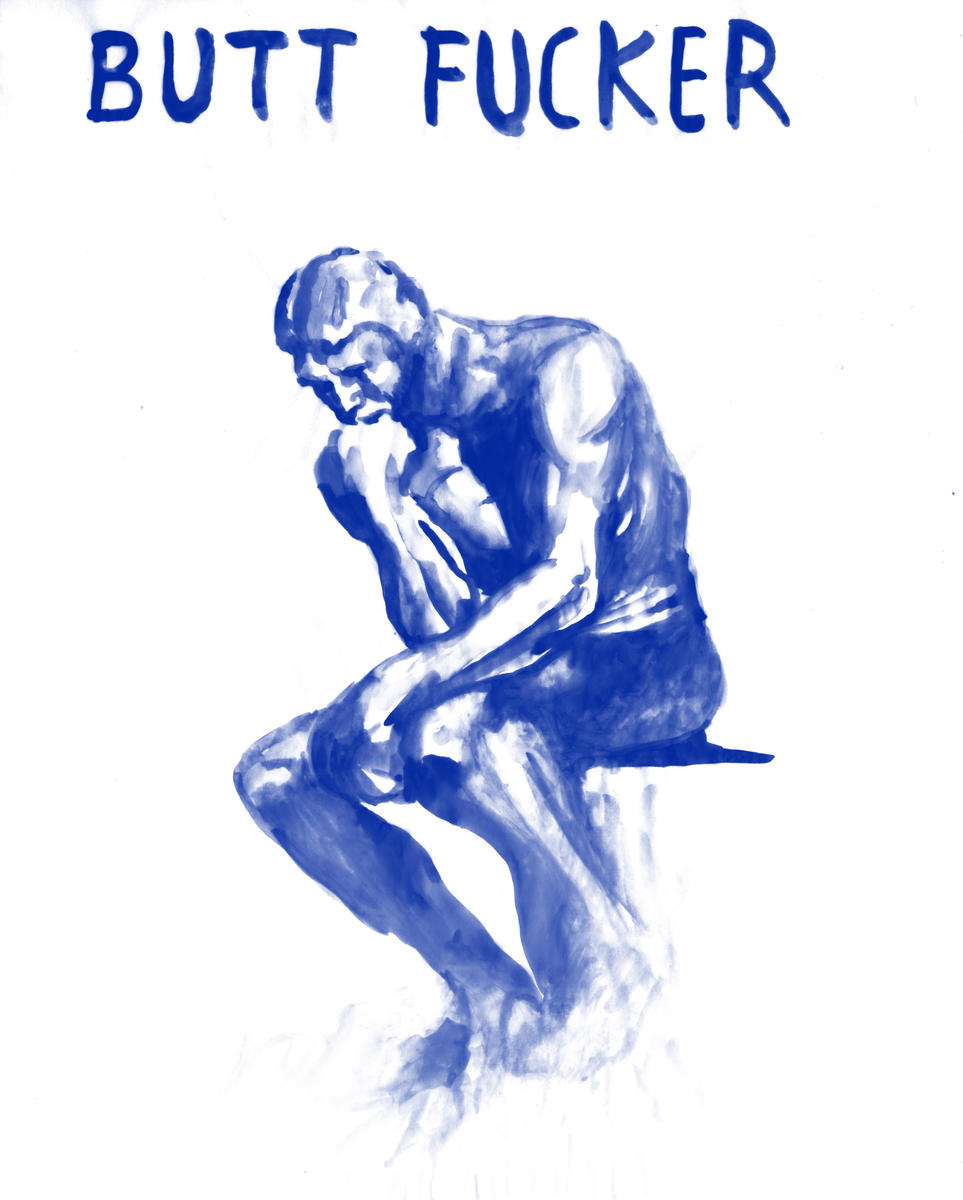
Week Two
I am to perform a skit with one of my classmates, using as much vocabulary as we can cram into ten minutes. Being vain and not belonging to any identifiable clique, I wait until someone invites me. Finally, Joe FBI asks me to be his partner. I can’t help but smile! At his suggestion, we attempt to create a coffee-shop encounter between an American photographer who has just come back from Iraq (him) and a journalist of Iraqi extraction (me). In scripting the lines, I wonder if it might be funny for the photographer-character to have had a grandmother named “Gertrude” — was it not Gertrude Bell who made the map of modern Iraq as we know it? For one second, I worry if he’ll be offended by my little joke. Mostly I’m proud of myself for thinking of it. As we rehearse, he asks me, “Who is this Gertrude you keep mentioning?”
Week Three
I’m called to Dubai for the weekend for a work assignment. I beg the director of the program, a cheery Egyptian man who always speaks into a microphone, even in the intimate space of his own office, to allow me to go away for a mere forty-eight hours on the condition that I not fall behind on any of my homework. After all, I tell him, it’s an Arab country I’d be traveling to. And who would have thought that in 2008 the miserable Arabs would be building the tallest building in the world? We should be proud! After much equivocation, he consents. When I get to Dubai, I find myself struggling with my homework, but I can’t find anyone to help me with it. This being Dubai, no one speaks Arabic. I call H back in Vermont to help me conjugate the irregular verb ta’awwada, “to get accustomed to.”
Week Four
As I return to Middlebury, I find that the entire Arabic School is abuzz with an article that was published in the Washington Post some days before, about Arabic language study in America — specifically, about our textbook, the same book most institutions use: Al Kitab. The author of the article argues that the book’s creators have an anti-Israel agenda. Al Kitab, the author continues, contains subliminal messages littered throughout the text about the wonders of Pan-Arabism. (That part is true: one character reminisces about going to a rally for Gamal Abdel Nasser in his youth — doubtless nostalgic for better, pre-Mubarak days.)
Al Kitab’s pedagogical motif is a cast of characters who introduce the various chapters and vocabulary as their story unfolds. The central protagonist, Maha, is an attractive New York University student of mixed Egyptian-Palestinian origins; she has a bone structure as fine as a cat’s. Her father, a sympathetic man with thick eyebrows, works at the United Nations, while her mother works at the Office of Admissions at NYU. Over the course of twelve chapters, Maha tells us she has few friends, feels neither American nor Egyptian, and is very often lonely. By the end of Book One, it’s hard not to expect that she’ll be betrothed to her cousin, Khaled, who studies commerce at Cairo University and appears in a parallel story line. Khaled, like Maha, is attractive; he also seems always to have an erection, visible through his too-tight gym pants.
I am confused by the Washington Post controversy and try to redirect the discussion at the lunch table to Khaled’s gym pants. In fact, my only critique of the book is that one learns that there are no negatives in Arabic! It’s not until deep into the second book that one learns the word for “bad,” “tired,” “angry,” or even “bored.” This is probably why dozens of beginner students run about Middlebury shrieking “Not great! Not great!” (“Leissa jayed! Leissa jayed!”) when, say, queuing for Tofurkey at the cafeteria, or learning that the dorm bathroom is out of order, or being told they have a quiz the next day.
Come to think of it, what they do opt to include in that first book is curious. According to the elliptical logic of Al Kitab, one should be capable of saying “United Nations,” “senior Army officer,” and “Admissions Office” by the end of one’s first week of study.
Week Five
There is a CIA recruitment session on campus. We receive many circulars and announcements and are given all manner of options as to informational sessions and one-on-one meetings with recruiters. I must go, I tell myself. I am a budding anthropologist, after all. I pull out my pair of khaki pants and hang my BlackBerry around my neck like a fetish. As it happens, there is no room at the secret service — the sessions are already booked up. I see Abu Ghraib M in line for one of the meetings and bunch up my eyebrows, shooting her my meanest glare.
Week Six
Week Six is trying. The equivalent of the famous “sophomore slump.” Schoolwork continues to be harrowing. I am up many nights until 2 am working (mostly shuffling flashcards made minutes before and taking long circuitous walks to the library bathroom). Time for socializing is rare. And besides, one can only handle so many parties built around a game of beer pong — even if it is called Beirut. I am reduced, for the purposes of entertainment, to making eye contact with a Lilliputian boy from the Russian school at the cafeteria salad bar.
As I reach over for a boiled egg one day at lunch, I let my hand brush against his. He says something to me in Russian. I am certain that we have connected. I reply in Arabic, with an innocent query of “What?” in the Lebanese dialect. With its “shhh” sound, I think it very sexy and suggestive. “Shou?”
He repeats the mysterious utterance with even more Slavic oomph. My heart flutters. I am certain he is visually frisking me.
I say it again with more feeling.
“Shooooooou?”
A fellow student from the Arabic school, who studied Russian last year, leans into me and whispers, in Arabic, “You left the egg spoon in the pickle plate.”
Humiliated, I run back to my table.
That weekend, H and I decide to go to a party organized by the Spanish School. He puts on his black dancing pants, and I wear the same thing I always wear but spray some Chanel No. 5 around my arms and head. We agree that if we’re discovered attending another language school’s party, which is a form of breaking the Language Pledge, we will invoke the glories of Andalusia. We arrive at the party to find that all of the Arabic School teachers are there, including the tightly veiled Egyptian. She is dancing to Shakira, her body gyrating in a way that makes us blush. Confused, we go back to Little Gaza to drink.
Week Seven
There is a showdown in soccer between the Hebrew School and the Arabic School. I try not to think too much about the symbolism, but I can’t help but be moved as I see Uri, the hirsute fat kid from the Hebrew school, wrestling one of our teachers, a skinny Yemeni named Omar, to the ground in a rapturous embrace in front of the goalie box. Abu Ghraib M is playing goalie. It’s all very weird, and suddenly I want to cry.
Week Eight
Our weekly guest lecture is by a liberal university professor of Arab provenance. The title of his talk is “Sectarianism in Iraq: Yesterday and Today.” He introduces the history of Iraq in brief, becoming more animated as he tells us about having left the country at the time of the Gulf War, about the Americans’ betrayal of the Shia, and finally, as if climaxing, a slogan: “There was no sectarianism in Iraq before the Americans!” This causes a hullabaloo. I hear short intakes of air from the State Department contingent in the front row. Many, many disapproving heads. The professor grows even more excited, now sweating, building up to a final crescendo, “And the American imperialists should leave Iraq now!”
One of the front row guys, plainly piqued, can’t help himself: “Fucking socialists.”
Week Nine
The end of Arabic School is marked by a talent show. Our class performs a musical, with the FBI guy playing Muammar al-Qaddafi, the hack journalist playing Amr Diab, Clare the pothead playing Margaret Thatcher, the socialists playing themselves. The Egyptian teacher makes a guest appearance as Ustaza Hazzaza, and Abu Ghraib M stars as Bill Clinton, all dressed up in pleather. We take first prize.
Actually, I’m not sure who won the talent show, or even what it was like, as I skipped out to meet the tall Russian at The Grille. Or I studied more for the final exam. Or something — I don’t remember what I did, to be honest, just that I didn’t want to be caught singing in public, dead or alive. I do know that I used the word batfakkar at least three times that afternoon. And that I will never be so good a grammarian in my life, in Arabic, as I was that day.
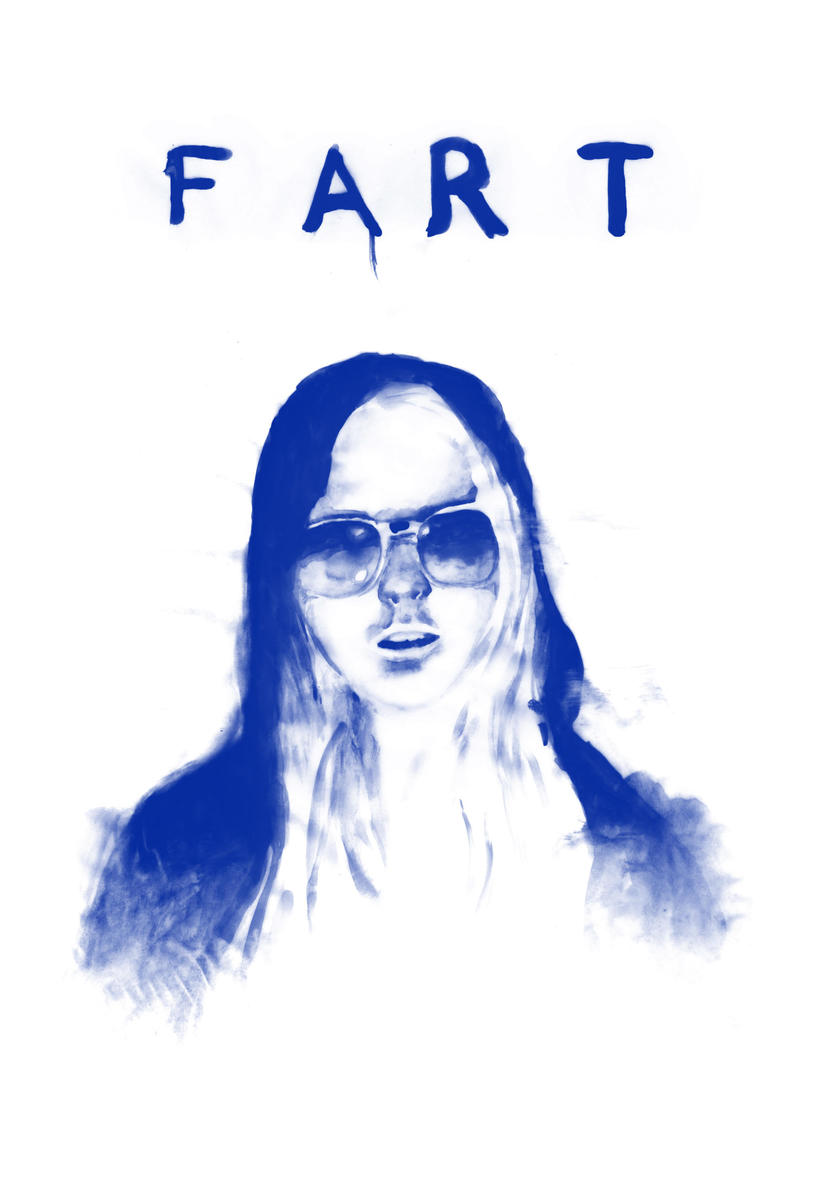
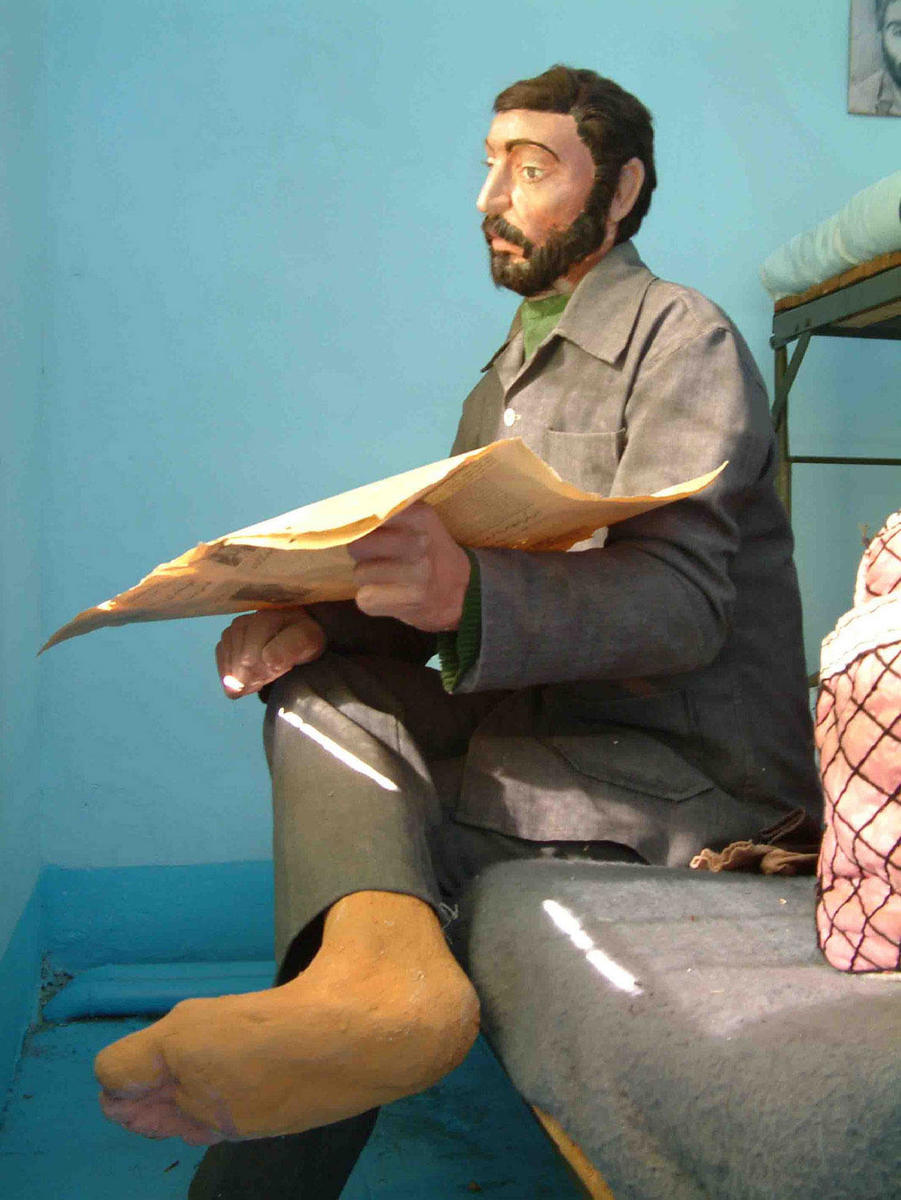
The story of “the permanent exhibition of arts and crafts and cultural heritage of the captives of the holy war and their ways of living, hygiene, and treatment,” goes back to the early years of the Iran-Iraq war, with the establishment of what was intended to be a temporary camp for Iraqi prisoners at the Heshmatiye military base east of Tehran. In those days, Heshmatiye was a beautiful place, with flocks of birds and tall trees. It was not at all like a POW camp as you might imagine it, not least because the soldiers had not been specially trained to deal with prisoners of war, which seems to have made it easier for friendly relationships to develop between guards and captives.
Among the early arrivals was an artist named Ostad Monghaz. Monghaz had been a professor of sculpture and painting at a university in Italy. The unlucky professor, who returned to Iraq to see his family, was forced by the Ba’athist regime to go to the frontlines for propaganda purposes. During his initial interrogation at Heshmatiye, it became clear that he had no political record in Iraq and had simply been caught by accident. But war has its own rules, and the professor had entered the camp as a prisoner. There wasn’t much that could be done for him. Still, Monghaz managed to make art in the camp, thanks to the martyr Mohammad Ali Nazaran, for whom the base is now named.
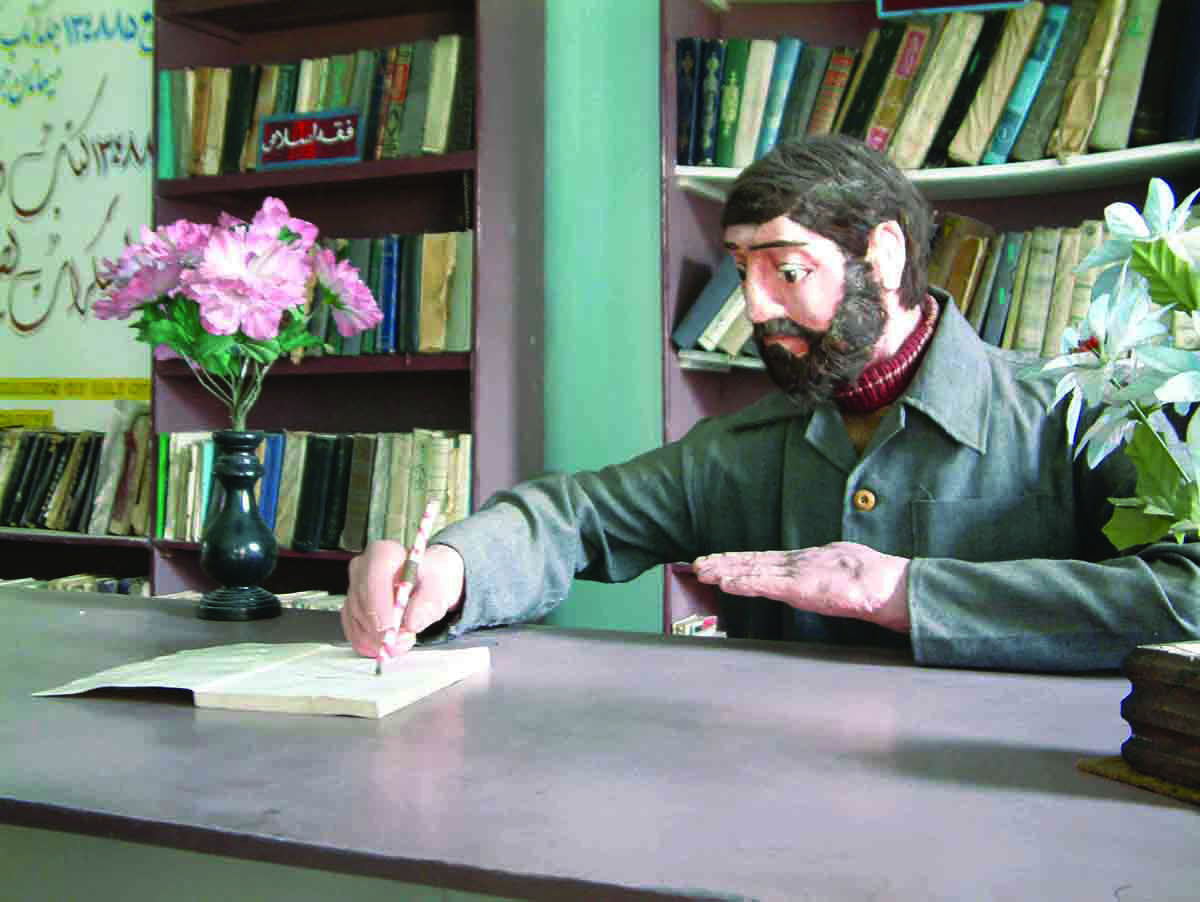
At the time, Nazaran was the head of the Prisoners of War Commission and, he created an uncommonly pleasant atmosphere for the captives. Despite the ongoing war, Nazaran somehow secured the necessary permission for the families of many of the captives to come and visit their sons and husbands in Iran. This was exceptional not only in the context of this war, but also in the history of war. His compassion gave the Iraqi captives hope. Even after his death, his memory was kept alive in the minds of Iraqis.
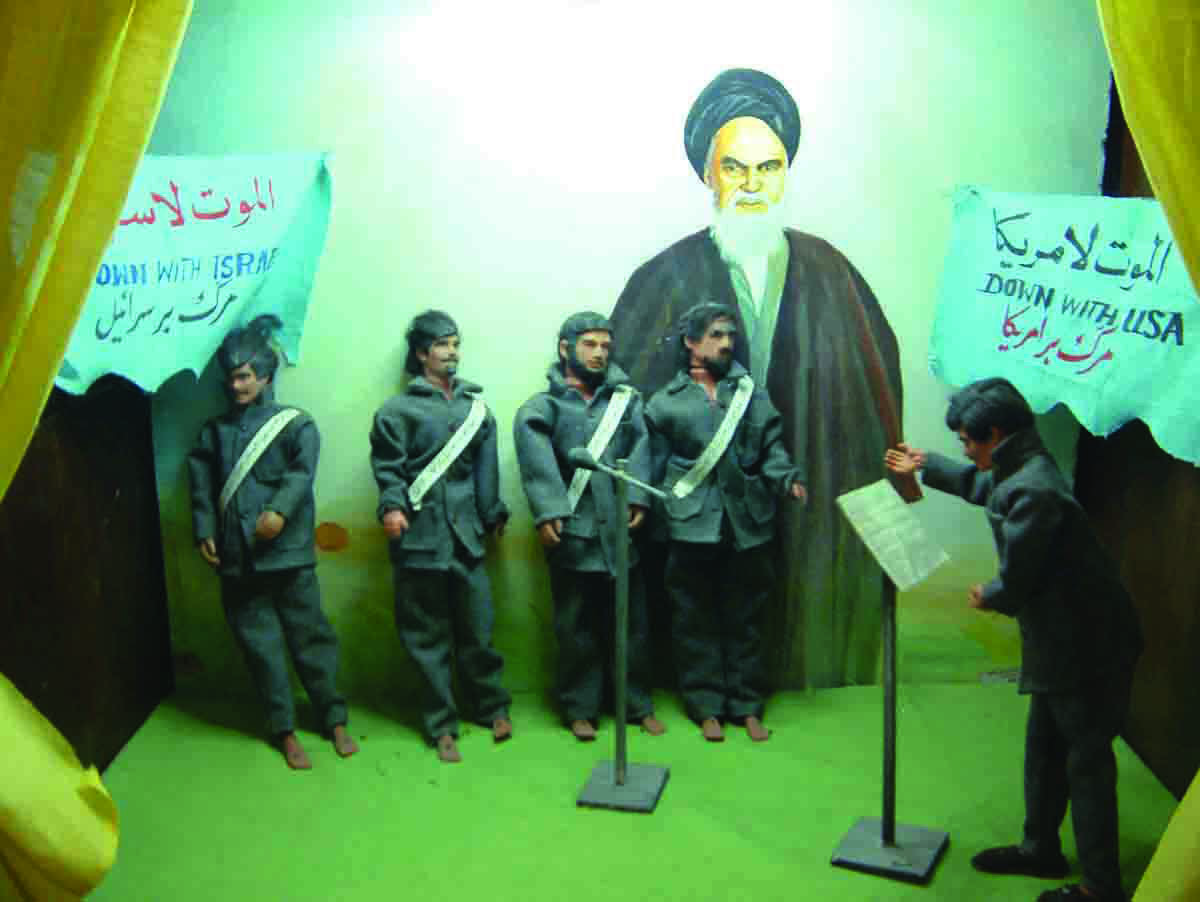
In 1990 and 1991, as the issue of prisoner exchange came to the fore, the question of how and whether to preserve the prisoners’ works was brought up. Over the course of four years, and through evaluation sessions of the prisoners’ artworks by the Committee of the Prisoners of War, those responsible for the camp agreed to build four halls, containing sixteen rooms, to exhibit and preserve the paintings, calligraphy, woodwork, needlework, and sculpture produced by the POWs. This was a great victory for the captives who came to this camp in their youth and now had to leave it. The new museum would showcase the creativity and humanity of the captives — and also of the captors. The camp itself was part of the exhibition. One of the former captives, an aging engineering graduate named Medhat Hosseini, stayed on, building delicate life-size sculptures from available materials — construction plaster, sometimes even dental plaster. These figures recreated life in the camp for visitors. There were even figures of Saddam Hussein or King Hussein of Jordan.
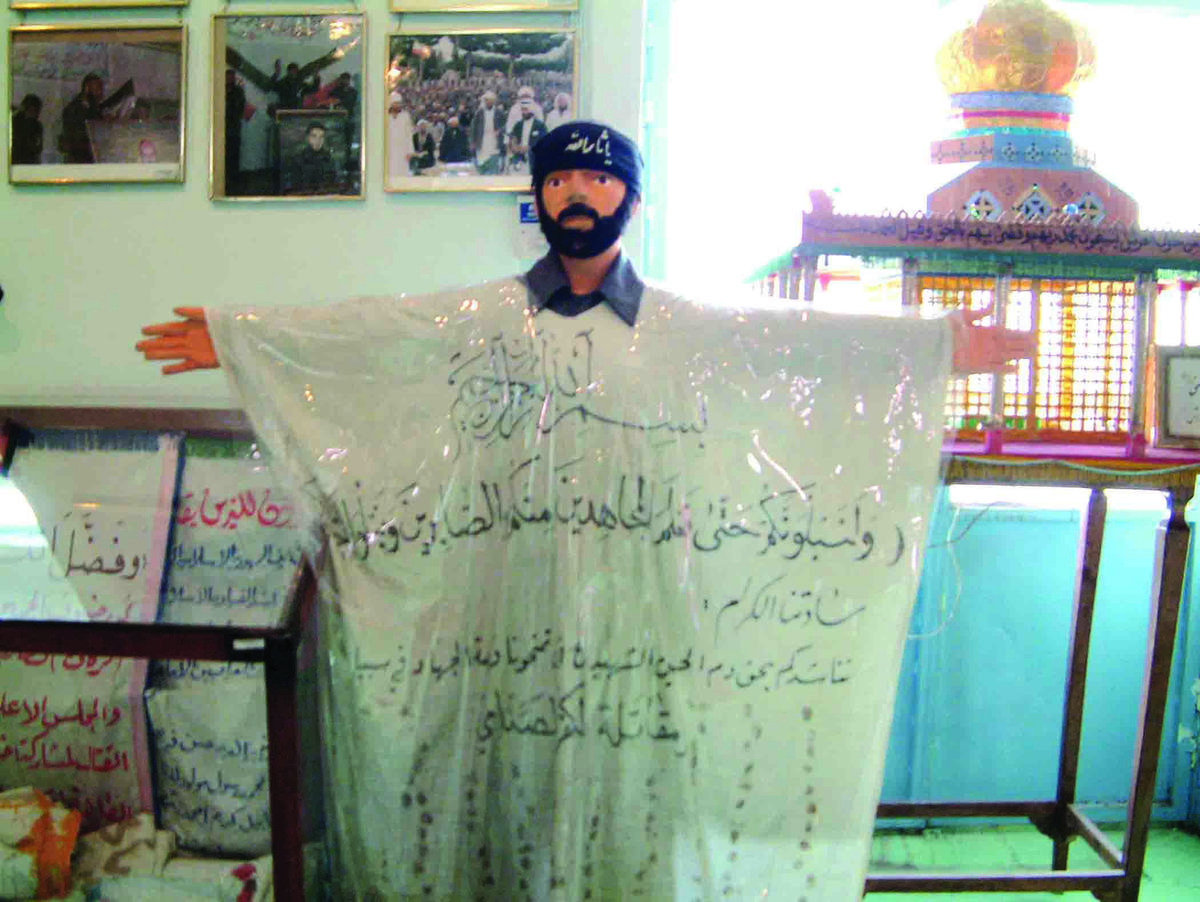
But in the decade and a half since the end of the war, the museum had few visitors beyond Red Crescent representatives, the occasional politician, and tours of distracted schoolchildren on the anniversary of the Iraqi invasion. Most people were unaware of its existence. Over time the number of staff at the museum was cut to a minimum. Soldiers took over the job of cleaning and maintenance, and many of the most powerful works made by the captives were damaged or simply suffered because of poor preservation. These days, Hosseini wanders around repairing sculptures, kept company by an old cat.
In 2008, a huge highway project was announced that would run straight through the museum site. A concrete wall was erected on the eastern part of the base for security purposes. Gone were the beautiful pine trees that surrounded Heshmatiye. Already a large part of the camp is used to collect urban and industrial waste.
Soon after, the Tehran city council passed a law requiring all military camps to be removed from the immediate area. Today the museum is awaiting its destruction.
Soon, beneath a mass of dust and concrete and the yellow lights of the highway billboards, the stories of 57,000 Iraqi soldiers who once lived on these grounds will lie buried and forgotten.
In 2007, Vahid Zare Zade directed a short film about the museum called POW 57187.
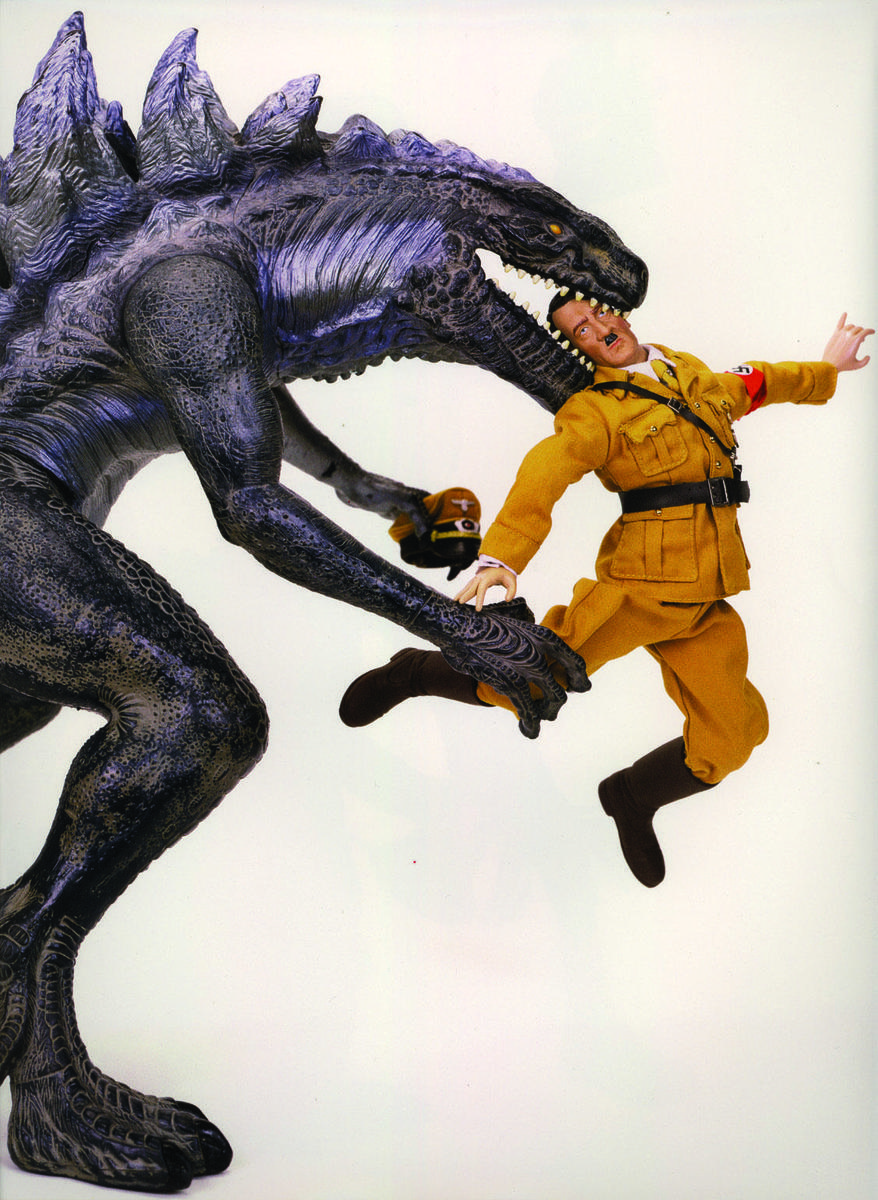
The first time I met Selim Varol, the man they call the Toy Giant, I was expecting him to suck. I hadn’t really had many toys as a kid, and at a very early age I’d adopted the punk/skate ethos of “property is theft.” At the front of my small vinyl record collection sat Poison Idea’s Record Collectors Are Pretentious Assholes EP, and when I encountered the wide-eyed, Cheshire-cat-grinning, combat-fatigue-wearing Turk at a group art show in Barcelona, before we spoke, I couldn’t help but think the same of vinyl toy collectors, too.
We were both exhibiting in the show, but the organizers didn’t know how to use their video camera, so I got roped into shooting interviews. Selim was my first victim, and as he launched into a heartfelt and surprisingly eloquent treatise on toys and wonderment and the importance of cultivating one’s inner child, I started to think I might be the pretentious one. Here was a crazy collector — his toy collection may be the world’s largest — who was adamantly opposed to keeping anything in a box. Since then he has published a book of tableaux featuring his vinyl figures, ToyGiants, with photographers Daniel and Geo Fuchs, and created a roving conceptual gallery, artempus, to showcase his collections and enthusiasms, which are legion.
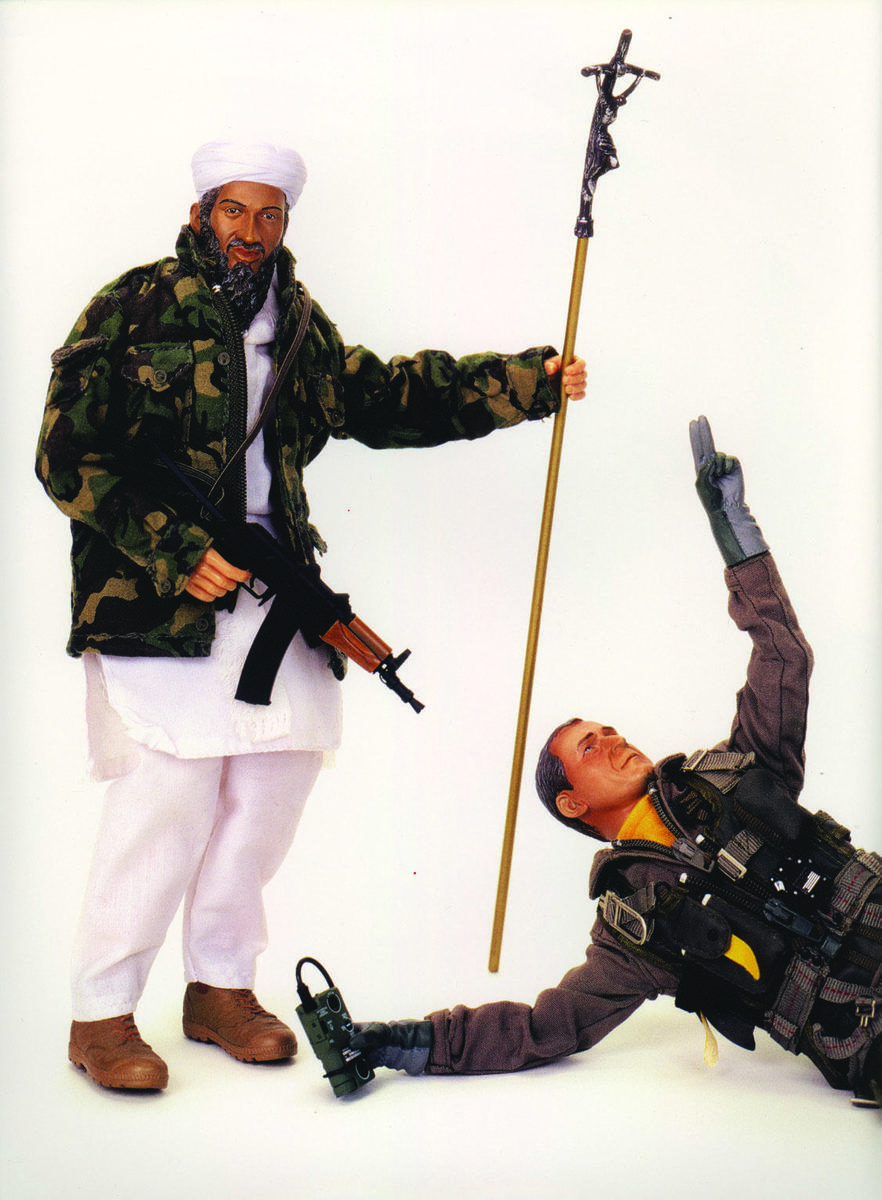
Monihan Monihan: How many of these toys do you have, Selim?
Selim Varol: Fifteen thousand? Maybe? I don’t actually know anymore…
MM: How did you get started?
SV: When I was six years old, I was completely blown away by the first Star Wars movie. We were on our yearly holiday trip to Turkey — I was born in Izmir, but we moved to Germany when I was two — and my parents took me to an old-school open-air double feature. The second movie was Alien. I remember running away during the first creepy scene.
Alone, psyched by Star Wars and shocked by Alien, I pissed my pants on the dark walk back to my auntie’s house, where we always stayed. It must have had some effect because to this day I have lots of Star Wars and Alien toys.
MM: But not the original ones, right? I’ve heard you talk about another pivotal incident in your life as a collector.
SV: Yeah, I came home one day, entered my bedroom, and all my childhood heroes were gone. My parents aren’t sure anymore which of them did it, but in any case the message was clear. This was it — time to grow up. I think I was twelve years old, and I can remember that moment like it was yesterday.
MM: You did not grow up.
SV: I proceeded to buy back all of my favorite pieces, one by one, over a period of time. And then I kept going. By the time I realized what I was doing, I was well into my long completist period.
MM: What was that?
SV: For example, I didn’t just get my Star Wars figures back — I tried to get every Star Wars toy ever made. Which might entail running to every flea market in town, or driving to toy conventions, or flying to toy conventions. Or… seeking out old toy manufacturers’ production samples and molds.
Looking back, that completist period was the most boring time of my life. It was like I had a full-time job as an archivist. Today I only buy things that I like and that somehow round out my collection as a whole.
MM: Are your parents collectors of any sort?
SV: No, my parents never collected anything. I mean, my dad is a bit of a pack rat, he can’t throw anything away. So that’s sort of collecting. But as Gastarbeiters (guest workers) we weren’t the richest people around Duisburg Bruckhausen, the industrial area where we lived. Both of my parents were working hard.
MM: Not to psychoanalyze you or anything, but where did this obsession come from? Were you particularly alienated as the child of guest workers? Were your “childhood heroes” like friends or trustworthy companions you could rely on when real friends were few and far between? Like Linus and his security blanket?
SV: To be honest, I never had big problems being a foreigner in Germany. It was more a question of money, I think. There was a kid in the neighborhood named Oliver who had all the Star Wars toys. That was something my parents just could not afford. Part of my collecting habit is definitely rooted in the fact that once I started earning money, I had the opportunity to buy all the stuff my parents couldn’t buy for us when we were kids.
MM: Could this sustained infatuation with toys be characterized as an attempt to reclaim your lost youth?
SV: Not really — I think I’m still young! As Andy Warhol said, since people are going to be living longer and getting older, they’ll just have to learn how to be babies longer. I don’t see my faith in playing as some sort of bizarre contrived antidote to lost innocence. I just truly believe that playing keeps you creative, young, and sociable.
MM: So in addition to your toy collection, you have a sizable collection of contemporary art. And an itinerant art gallery in Düsseldorf in which to exhibit your stuff — toys, sculptures and photographs alike. How did that happen?
SV: The transition was pretty easy. My art collection started with “art toys” that clearly related to the kinds of toys I’d loved as a kid. And over time the “art toys” I was collecting became widely accepted by the contemporary art scene. With artists like Murakami, KAWS, and Michael Lau initially leading this development, it seemed to happen pretty naturally. But I think the urge to make art and the urge to make toys are the same. The new medium of easy-to-sculpt materials, like vinyl, just accelerated this phenomenon, in that it made it affordable for everyone to work on small sculptures on a larger scale. And I don’t think that it will ever go away — we humans will keep playing till we die!
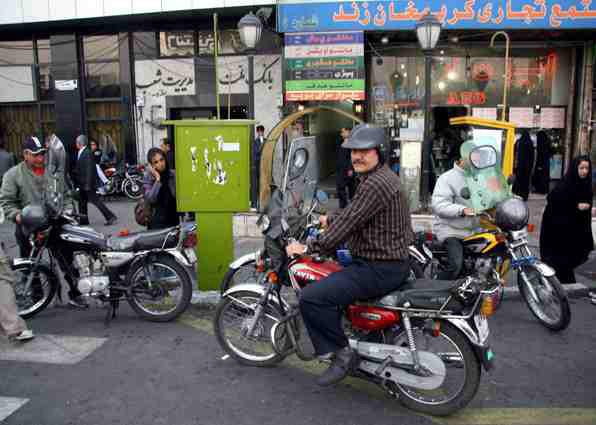
If you happen to find yourself on a Tehran avenue in the coming months, you may notice a passenger with a video camera in the backseat of a motorcycle taxi, interviewing the driver. Listen closely and you might catch a snippet of intense discussion over the purr of the bike’s motor. Wear something especially eye-catching that day, and you might even stand out in a frame of Tehran-based artist Shahab Fotouhi’s current video project, Third Case.
Third Case draws its subject, structure, and title from the 1979 film First Case, Second Case by Iranian auteur Abbas Kiarostami. Kiarostami’s film teases the allegorical implications out of a banal primary school incident in the context of the nascent Iranian Revolution. A teacher draws a large ear on a chalkboard. While his back is to the classroom, a student talks out of turn, disrupting the lesson. The teacher demands that the student identify himself, and when no one comes forward, he removes seven students from the class for further questioning. The film then presents two scenarios — cases, as it were — one in which the students refuse to name the guilty party and are all punished by being kept out of the classroom, and another in which one student identifies the culprit and is allowed to rejoin the class. Kiarostami interwove these two staged scenes with documentary footage of interviews in which he fielded reactions to the two cases from various adults, including newly minted officials of the revolutionary government. Many of the respondents Kiarostami engaged read the scenarios as parables of loyalty, condemning collaboration with the Shah’s secret police and pitting the nobility of silence against the weakness of informing, a reading which was undoubtedly aided by the conspicuous, slightly surreal, image of the ear on the board, drawn by the most potent authority figure in the film. (In spite of these anti-Shah interpretations, the film was banned by the new regime for its allegedly subversive content and for representing the opinions of figures from banned political organizations, such as the Communist Party.)
As his title suggests, Fotouhi’s Third Case presents a new option. Following a logic of substitution, he proposes the very same ethical classroom scenario, dramatized in First Case, Second Case, to motorcycle taxi drivers ferrying him around the city of Tehran. “The working class can give more interesting answers,” Fotouhi recently told me. “And after thirty years of transformations in society, these answers are more complicated.” Third Case doesn’t introduce a new scenario into the ethical dilemma, but instead reconfigures the terms of the documentary itself. In revisiting Kiarostami’s film and looking to workers such as taxi drivers, instead of politicians with big names spouting official discourse, Fotouhi is endeavoring to produce a remake in the strongest sense of the word — a work that is both a picture of the present in all its ambiguities and a trenchant critique of the past. By reassessing the binary logic and revolutionary clarity that structure Kiarostami’s film, Third Case promises to confront the predictability of the original film’s responses with the volatile contingencies of class, history, and public space — thus providing a framework for the political anxieties of Iranians today.
While the choice to restage the interviews on motorcycles certainly recalls signature moments from Kiarostami’s later films — Mohsen Makhmalbaf giving his imposter, Hossain Sabzian, a ride on the back of his two-wheeler in the closing scene of Close-Up; the haunting tracking shots filmed from the automobile of the suicidal figure in Taste of Cherry; and the entirety of Ten, which is shot in a car navigating Tehran — Fotouhi insinuates that Third Case is a critique of First Case, Second Case, and the “romantic” attitudes of that time. One could say that because the turn toward everyday people and vehicular shooting in Third Case comes from the neorealism of Kiarostami’s own oeuvre, the critical logic is inherent to the material and therefore even more potentially incisive. Moreover, the motorcycle taxi allows Fotouhi to be in “the same position as the audience of the work,” a position he has identified as crucial to his practice. Although he’s holding the camera, he’s a passenger on his own shoot, ceding much of the direction to notoriously “crazy” drivers. I imagine (as I watch YouTube videos of motorcycle taxi rides through Tehran) that some of the substance of these interviews will be lost or at least overwhelmed by the sheer visceral quality of a camera whipping through Tehran’s bustling streets. This strategy seeks to emphasize that “the question itself and the form of the film is more important than the responses.” It is difficult not to think back to the sound problems that obscure and mute much of the highly anticipated dialogue between Makhmalbaf and Sabzian on their bike ride in Close-Up.
Perhaps that is part of the point. Fotouhi’s 2008 video And All of a Sudden We Found a Path to the Waterfall Again intentionally disrupts the convention of sync sound as the artist confronts Mahmoud Ahmadinejad, mayor of Tehran at the time of filming, in handheld, claustrophobic, and physically agitated closeup. As Fotouhi visibly works to appear in the frame with Ahmadinejad and engage him amidst a throng of people, with all the sound removed, we’re left wondering about the nature of the encounter. Precisely for its lack of information, its refusal to state a clear political agenda, and its insistence on occupying time, this video, on completion, was a glimpse of power lying in wait.
Fotouhi plans on continuing to hail motorcycle taxis until he has enough footage to match the running time of First Case, Second Case. He tells me that he will also be shooting static shots of the drivers waiting to pick up fares, to intercut with the interviews. “Iranians are waiting for something to come,” he says. “Israeli bombs? A new president? We don’t know.”
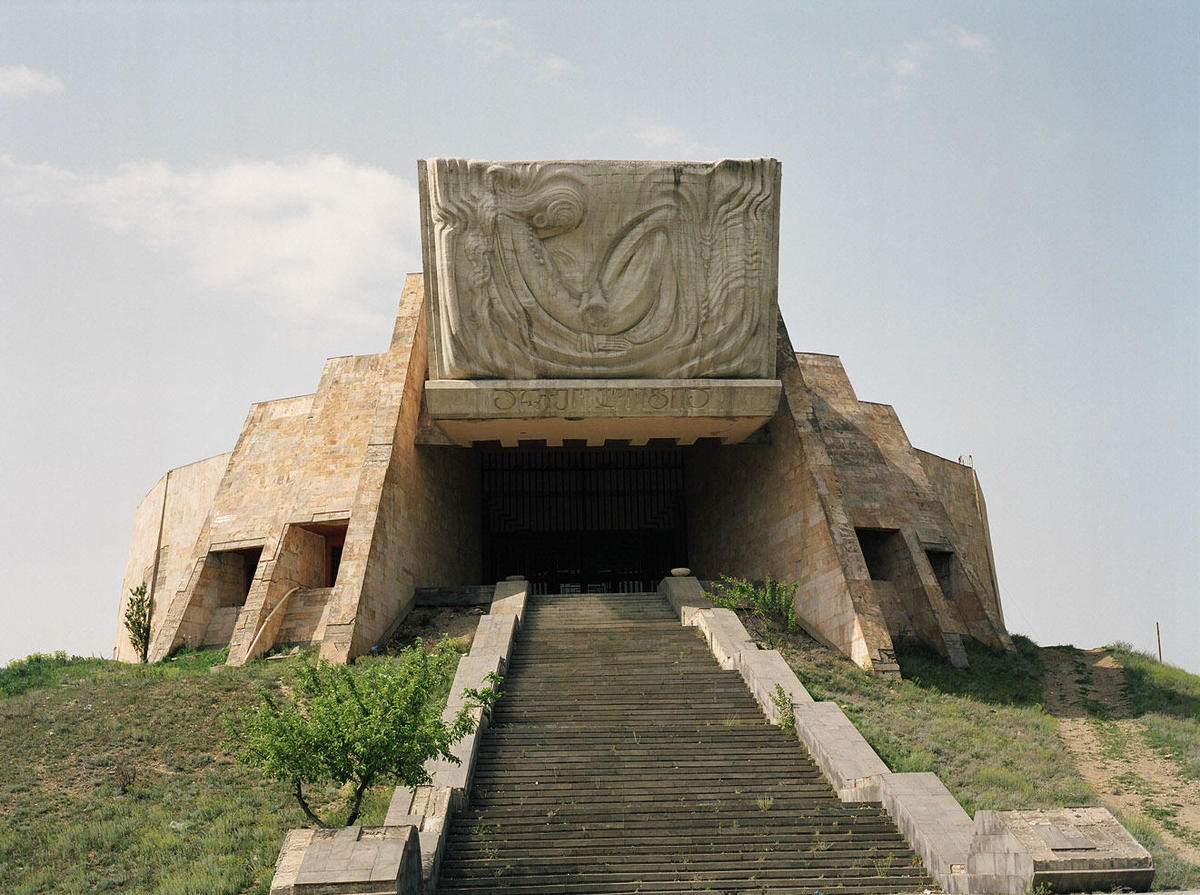
“If history is written by the victors, will the future be written by the defeated?”
—Slavs & Tartars
It began as a love story. An Iranian raised in Texas and living in Moscow meets a Pole who lives in London. As with the best romances, they meet at a barbecue in Paris. They fall in love, and it is terribly passionate. He is a sort of polymath who has studied Russian literature and architectural theory. She is a graphic designer. They collaborate on a project or two — the kind that mixes art and politics, art and design, highbrow and low, and everything in between — but eventually break up over the question of what to name their first child (he insists on Genghis, she will not have it).
The Pole moves to Holland to attend a prestigious design academy, Dexter Sinister went there, too, and meets a man of Belgian and American extraction — he is also a designer — named Boy. (His middle name is Wyatt.) The Pole and Boy begin to date. They fall in love. Then, strangely, they get together with the Iranian (a chaste threesome), and they begin to produce work together. They baptize themselves “Slavs and Tatars,” evoking regions and peoples that span from Berlin to Beijing. Like a bastard love child between Claire Fontaine and the SHAHRZAD Collective, their work assumes myriad forms, from books to posters to pamphlets to T-shirts. Their concerns are wide-ranging and occasionally somewhat vague. It is that vagueness, that pleasantly exotic whiff of je ne sais quoi that is precisely the point.
I first heard about Slavs and Tatars from a guy named Payam Sharifi. I received an email from him about an exhibition that his mother, a photographer, was taking part in. I thought a young man pushing his mother’s artwork was awesome. A year or so later, walking an oppressively grey Berlin street, the kind full of depressingly under-sunned artist boys with cultivated chin-hairs, I saw a T-shirt — I think it was pink — with the words “LES ANTIMODERNES” across the front. The shirt was an S&T production, a commission for the Parisian boutique Colette. Some months later, at last year’s overcrowded but sweet New York Art Book Fair, I stumbled across a publication called I Still See Communism Everywhere. It was a ponderous little pamphlet written on the occasion of the twenty-fifth anniversary of Iran’s Islamic Revolution. A few entries made me giggle, including one wondering why Iranian monuments so often take the form of livestock, another that meditated on Iran’s curious “self-colonization” (Iranians famously love the West), and another that urged Iran to join Central Asia (“companies rebrand all the time, why not countries?”).
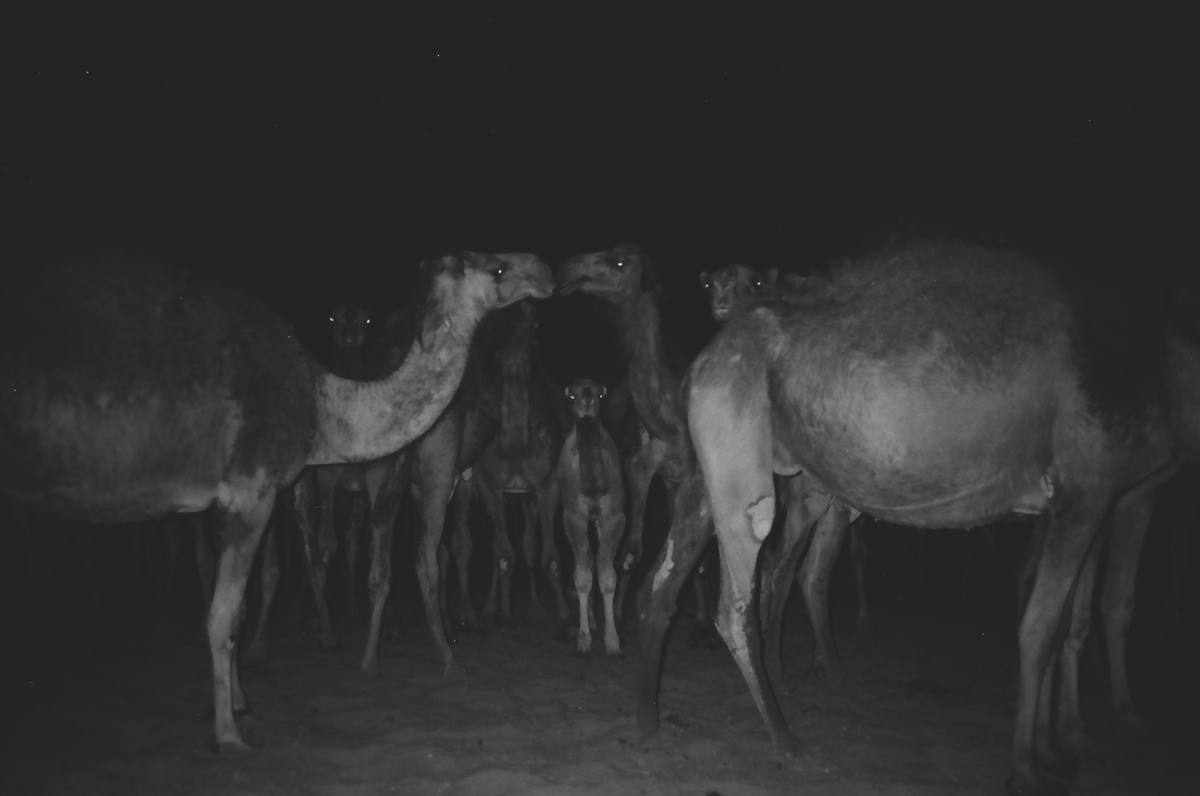
“It took a long time to decide on Slavs and Tatars,” says Kasia. Kasia Korczak is the Pole. She has bangs that look like they have been trimmed with a hacksaw and a flat voice that’s sexy in a 007 way. “We started out with ‘The Slavs,’” she reflects. “But then that sounded too much like a band. Names are really, really hard.”
Slavs and Tatars does have a pleasing iconicity about it. Slavs, the linguistic and ethnic group from whence a third of Europeans derive — but with which, somehow, they rarely identify — seems a reminder that Europe was once more Eastern than the average European knows or cares to remember. The land of the Slavs was rough and distant, somewhere near Ukraine or, say, Belarus. There’s a reason so many Eastern Europeans call themselves Central Europeans.
Which brings us to the Tatars. For most of us, the term evokes images of faraway lands, thick curly mustaches, maraudings, spearings, beheadings, treacherous Great Games — or, alternately, mayonnaise sauce for fish. Tatars ride horses and wear funny felt hats. In spite of them being Turkic peoples from greater Eurasia, they might as well be Philistines.
“They’re like the Mongols, they were the invaders,” says Kasia. The Tatars rolled through Poland in the thirteenth century, the grand dukes of then — Lithuania encouraging them to do so because of their reputation as skilled warriors. Still, Kasia’s childhood was resolutely Slavic.
She grew up under Communist rule in Lodz, Poland, a Manchester-esque industrial town known for its film academy, which produced both Roman Polanski and Andrzej Wajda. (It’s also where David Lynch shot much of his 2006 film, Inland Empire.)
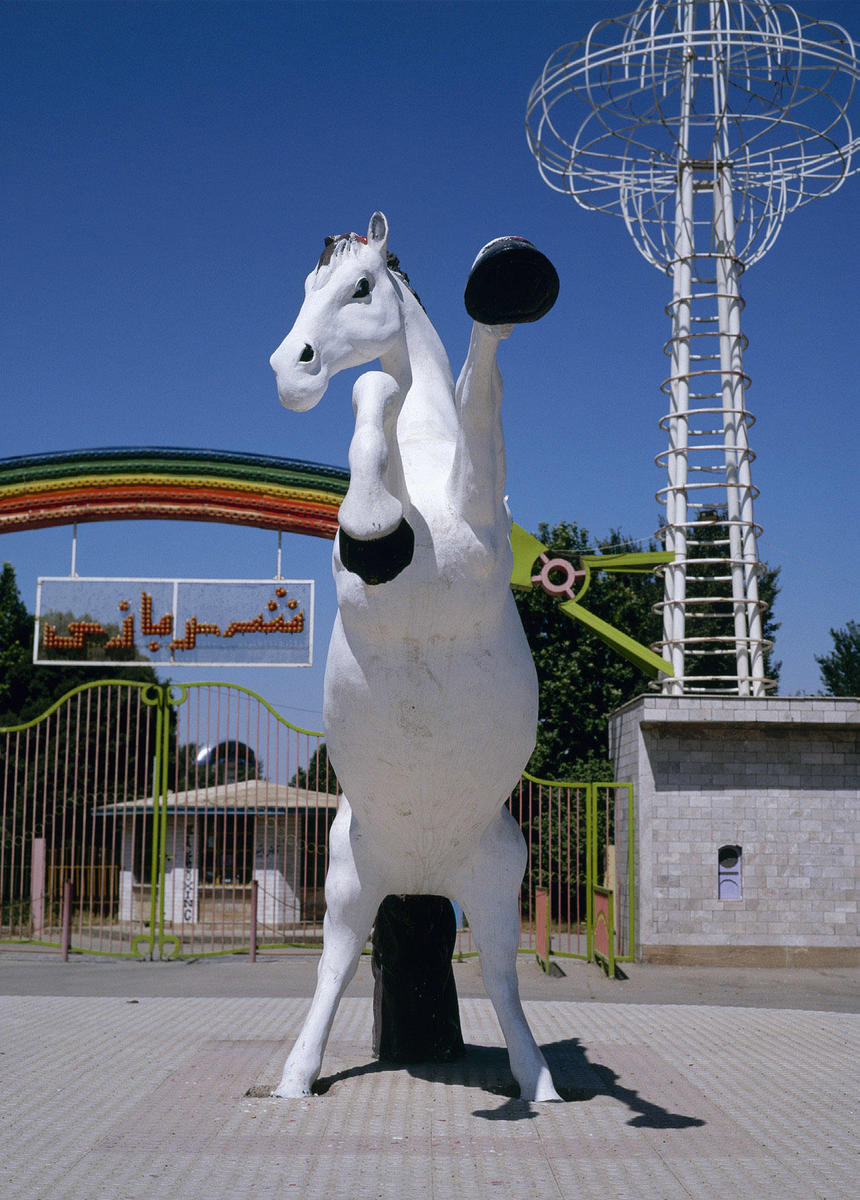
As Kasia was hanging in and around Lodz’s many playgrounds as a child (“We sat around a lot during Communism”), Boy, who today looks cherubic and happy, was being cherubic and happy in Zelzate, a small industrial town in northern Belgium. The other two like to refer to him as a “Martian” and describe his design instinct as “emotional” (in the sense of “Eastern.” Incidentally, his design style may be approximated as new-brutalist).
Payam, in the meantime, was a long-haired jockish teenager in Houston, Texas. Like many middle-class Iranians, his parents had come to the States in the 1970s to become engineers. They stayed in Texas and went into the restaurant business instead (they don’t sell joojeh kabab, though, but rather, Mediterranean food; his mom still does her artwork on the side). When Payam went away to Columbia University in New York, he developed a passion for Russian literature. He spent his junior year studying in St. Petersburg and, a decade or so later, has made the city of Moscow his home. “I meet Kazakhs, Turks, Azeris in the market here. I can buy books in Farsi. I eat sabzi khordan (Iranian green herbs).” It’s that confusion — of time, place, and provenance — that seems to fuel Slavs and Tatars. It also explains why Payam has a Tatar friend named Rostam (a name from the classic tenth-century Persian epic the Shahnameh) who is a billionaire. Or that people in Tbilisi love Mahmoud Ahmadinejad.
But that confusion is also, in a way, counterintuitive. After all, as the East turns West by dint of late globalization, NATOization, even taste, it may seem retrograde to want to name your child Genghis. The Azeri separatist movement wants to Latinize its alphabet. Croatia and Ukraine want to join the European Union. For Slavs and Tatars, geography becomes a metaphor for something bigger, something unwieldy — lost histories, accidents, oversights, mistakes. Geography can also be a provocation, an occasion to think again. For example: Slavs and Tatars love the Kurds, the original castaways. They are less sure about where they stand on the Turks. On their radar, Baku and Tbilisi are hot spots… of sorts (“the new Des Moines and Cedar Rapids”). In the peculiar club they have crafted for themselves, Tamerlane, Alexander Griboyedov, and Ali G are all honorary members.
In A Thirteenth Month Against Time, a limited edition publication that was first shown at Newman Popiashvili Gallery in New York and recently acquired by the MoMA, S&T evoke an ancient Zoroastrian calendar, still used in Iran and Afghanistan, that boasts a thirteenth month. In over thirty-two pages, in bastardized calendar format, Slavs and Tatars tell us stories — all polemical, all curiously intriguing. This thirteenth month — part accident, part culled from history — is not only a lexical drift but also a call for leisure. An extra month is a space in which to think. And so, we have calendar days devoted to a mosque in Tatarstan; an ode to the rear guard (the left is too hip! Le Figaro over Liberation! the Economist over the Nation!); a celebration of Byzantium; and a tribute to the late, great Iranian thinker Jamal El Din Afghani — who alternately posed in Afghan, Arab, and Turkic drag (in musical terms, Slavs and Tatars tell us, he would be a David Bowie or Bob Dylan). They also urge us all to glean leadership secrets from Attila the Hun.
In an earlier project entitled Drafting Defeat, Slavs and Tatars were equally interested in occupying spaces of officialdom, in the form of mysteriously beautiful maps. Carefully reprinted and true to their originals were a series of intricate maps from the tenth century, drawn by Al-Istakhri (born Ibn Khordadbeh or Al Farsi). Found in a 1933 Soviet edition of Nasser Khosrow’s Safarnameh, or Book of Travels, the maps displayed their etchings of the Middle East — Egypt, the Arabian Peninsula, the Caspian Sea. Both Istakhri and Khosrow were itinerant Persian bureaucrats-cum-poets. The maps, one more abstract than the next, looked like a surrealist’s attempt to recreate anatomical drawings.
Language is at the heart of Slavs and Tatars’s practice. Payam, in particular, as the group’s primary essayist, has a way with words. In the project The League of Impatience, for example, the collective designed a poster “on the theme of political equivocation.” The image was taken from a vista in Iran looking into neighboring Turkmenistan. On one side, it reads “Nos Amis Les Enemis,” and on another “You Let Us Steal, We Let You Live.” In their Wrong and Strong series of posters, they seem to point to the staleness of expressions we inherit somewhat passively as part of the cultural scenery, coining slightly absurd, slightly irreverent variations such as “Yankee go home, and take me with you,” and “It is of the utmost importance that we repeat our mistakes as a reminder to future generations of the depths of our stupidity.” Their play on words seems to hint that, much like geography, language is provisional, ever-prone to being hijacked. Here, they play the hijackers.
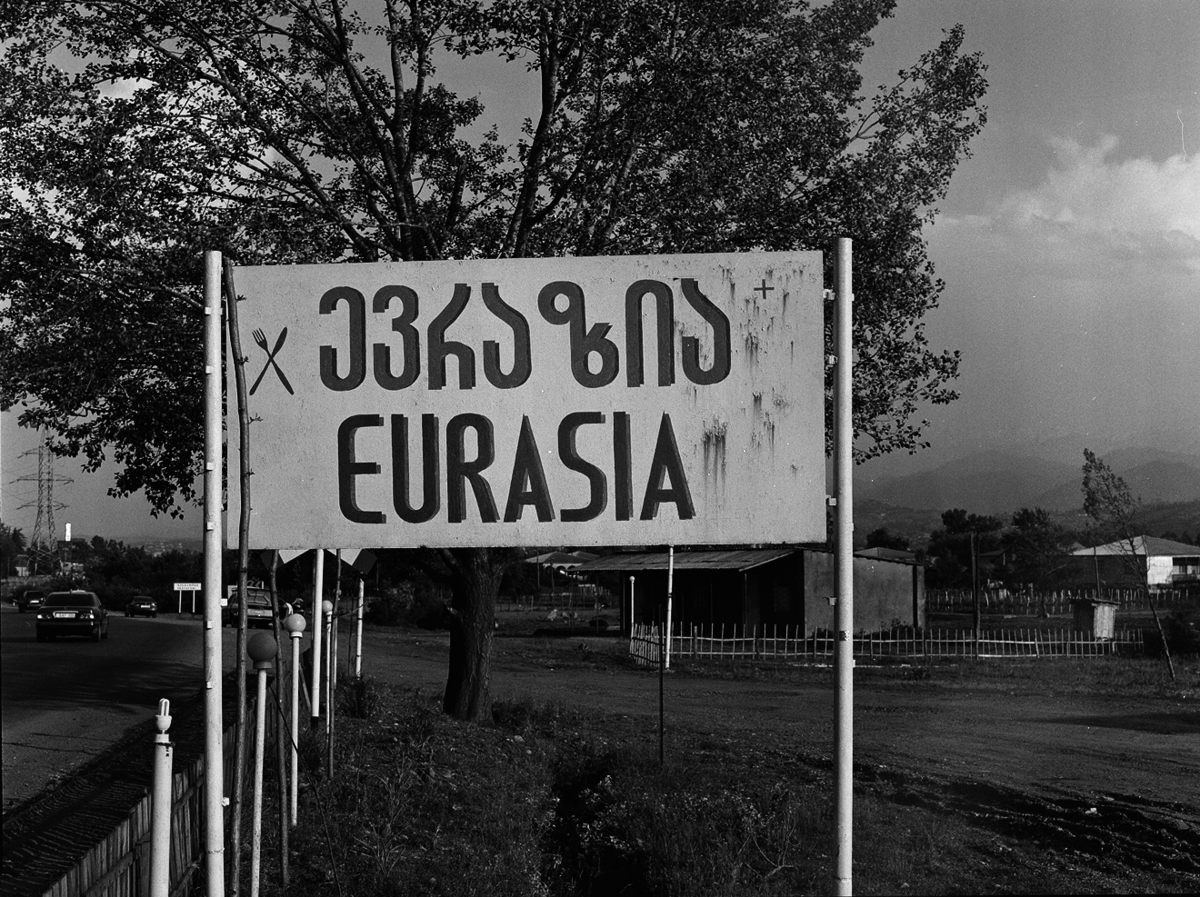
For Manifesta’s latest iteration in the Italian region of Tyrol, Slavs and Tatars created a mammoth wall banner reconfiguring the words from the classic Gershwin song “Let’s call the whole thing off,” as sung by Fred Astaire and Ginger Rogers. In this form, in a Europe that is still fitfully defining what it is and, even more so, what it is not — the lyrics ran:
YOU SAY AUTONOMIE,
I SAY AUTONOMIA,
YOU SAY INTEGRIERUNG
AND I SAY INTEGRAZIONE;
AUTONOMIE, AUTONOMIA,
INTEGRIERUNG, INTEGRAZIONE!
LET’S CALL THE WHOLE
THING OFF!SO IF YOU LIKE EINWANDERER
AND I LIKE IMMIGRANTE,
I’LL BE PRO-EINWANDERER
AND YOU BE ANTI-IMMIGRANTE
FOR WE KNOW WE NEED EACH
OTHER SO WE BETTER CALL
THE CALLING OFF, OFF!
Here, in the heart of Europe, the banner seemed to symbolize a public celebration of contention. They named it The Hymns of No Resistance, Part I.
Which brings us to their latest project. The Pantheon of Broken Men and Women will take the form of a book and exhibition. A pantheon of the upside-down variety, fashioned from a creolized mishmash of monumental materials and styles, from marble to aluminum to glass, it will include the likes of Iran’s foiled Prime Minister Mohamed Mossadegh (a deft CIA coup truncated his tenure), Griboyedov (he had his head cut off by an angry mob over the fate of an Armenian eunuch), and the Soviet Koreans (many of whom were first forced into labor by the Japanese government to work in coal mines in the 1930s and were later deported to the Central Asian states by Stalin, who suspected them of being spies). There is beauty in bad luck. This is an ode to beautiful losers.
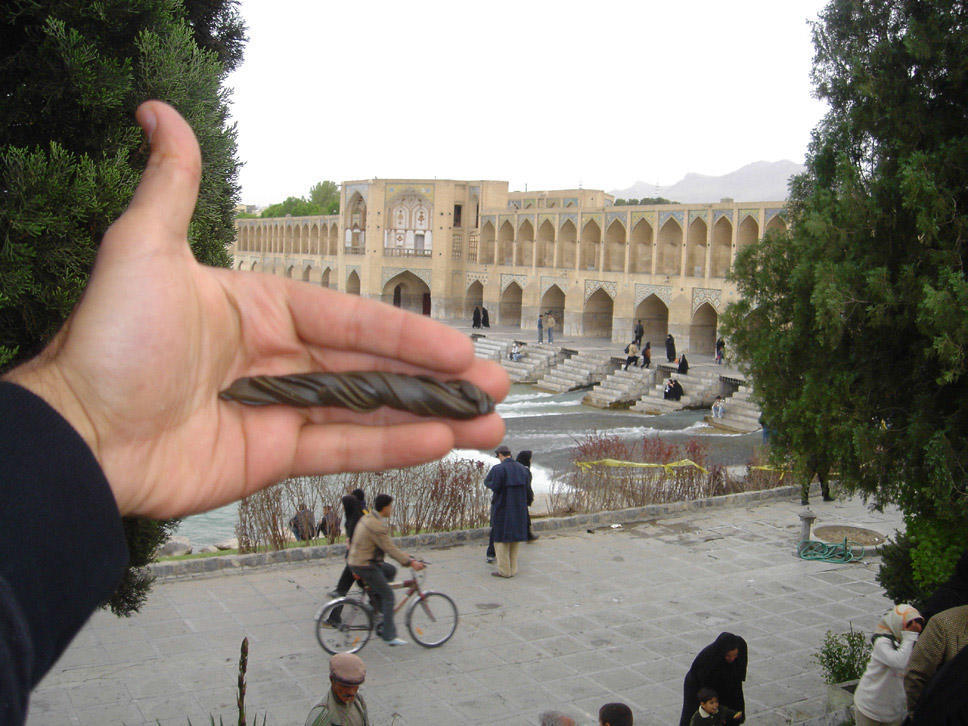
One could, of course, take Slavs and Tatars to task. Their quest to recapture the East just as the East is becoming more Western is, perhaps deliberately, perverse. Sort of like wearing a blingy Khomeini necklace in New York City, or like putting pictures of Hitler’s favorite artist on your wall because the whole thing is so exquisitely kitsch. To use the language of “redemption,” which they have been known to do, is a delicate issue. In one manifesto they announce, “We are caretakers of an unabashedly personal interpretation of a diffuse heritage under siege.” Might they not themselves — Payam, Kasia, Boy, Victoria (a new member, whose mother was once a British spy on Russian cruise ships) — be cultural Mongols themselves, with S&T and the art market as late-capitalism’s latest siege weapons? Certainly, they have sold their work at Colette! Payam collects fancy limited-edition Nikes! They all look like supermodels!
Still, the West has had a worse-than-usual decade, what with environmental lameness, wrong-headed wars, and plain bad style. Contrarianism is not unwelcome, even if it is radically chic. And perhaps in times of pathos and apathy, as we sleepwalk through another set of wars, a bit of pamphleteering, however posh, is not a bad thing.
Slavs and Tatars offer, in one of their older manifestos:
When Slavs dream, it is a heavy, almost catatonic dream. One so removed from reality that it redeems the very radicality of what a dream originally suggested: another world, not this one, one where things were not possible but impossibly possible.
It’s cheesy. It’s romantic. It’s a joke.
But maybe it’s also important. And challenge them if you wish, because they can take it.
As they say, “fat-free butter has no place in Slavs’ critical vocabulary.”
Julien and Gabi Asfour were born and raised in east Beirut, and grew up amid Lebanon’s several civil wars.
Bidoun: Do you remember the beginning of the war?
Julien Asfour: I don’t think anybody was aware of when the war started. It just kind of crept up. Every day you’d think, “Oh, it’ll be done by tomorrow. It’ll be over, things are under control.” Nobody would tell us what was going on. I guess the parents were taking all the responsibility for themselves. So we didn’t really feel it, somehow. We still had to go to school, except during bombardments. The best days were when the bombs started coming down, because you didn’t have to go.
Gabi Asfour: It’s a fun day for the kids. When you start hearing the bombs in the morning, it was like “Yeah! No school today!” Sometimes the bombing would be for a day, sometimes it lasted a week, sometimes a month. If it was more than a week, we would pack up the car and go up to the mountains and ski.
JA: But it got worse. It kept getting worse and worse, every year.
GA: It just kept escalating. Every year at Christmas, everybody went to church and prayed for the end of the war.
We lived on the east side of Beirut, the Christian side. The interesting thing was that we are Christian Palestinian, and the first war that started was between Muslims and Palestinians. Later on it became a war between Muslims and Christians. So even though we were Christians in the Christian part of town, we still felt like outsiders. It was very confusing. We couldn’t speak Palestinian Arabic; we had to use Lebanese slang all the time. Once, after things escalated, the people who run the grocery store freaked out and started screaming “You assholes! Palestinians! You traitors!”
But mostly we were fine. We were kind of like, cool, so the kids around us were smarter, more intellectual people. They looked at our being Palestinian as a funny thing. They always made fun of us, behind closed doors, but never in public. There were a lot of crazy people out on the street.
JA: You know, we spent a lot of time on the street. We had a crew that did a lot of graffiti. The name of our gang was Strangers, but with dollar signs. $TRANGER$. And we were five kids who actually were strangers. We had a British guy, Bobsy, and a Colombian guy, Felipé. And then there was Congo, who was just incredibly hairy.
GA: Hair everywhere.
JA: That’s why we called him Congo. Well, that, and because his dad owned a plant that turned animal skin into leather. And he had a pickup truck, which we would use sometimes, and it stank like hell from all the fresh skins in the back. So that was why we called him Congo — that truck reminded us of Africa and safaris, and him being hairy like a monkey.
We were like a family, a bunch of kids huddled together. Though Felipé was kind of a wimp. As soon as he heard gunshots, he would run up the stairs. We’d be playing soccer, and then there’d be Felipé, watching from the balcony. He didn’t go out with us as much, because his parents were very strict. Our parents were strict, too, but we kind of molded them.
GA: We had certain whistles that we would use to signal that we were there, or to get someone to come out. And we had our own dialect — we would reverse the words so that nobody would understand what we were saying, not even our parents.
JA: We had the whole deal, you know. We were doing graffiti at the same time New York was doing it, at the start of the eighties. You’ve seen the movie The Warriors? That definitely had an impact on our behavior. We would walk around with black T-shirts with white writing. $TRANGER$. Nobody in the Middle East did graffiti, ever. It was inconceivable — what is this craziness? Everybody wanted our —
GA: — everybody wanted to be a part of it. But they couldn’t break in. We were very tight.
JA: There were parties every weekend, girls from our school, girls from the neighborhood, girls from the next neighborhood. Everybody wanted to have us at their party. We would always dress the same. Sometimes we wore the T-shirts, sometimes we would wear my uncle’s old suits — kind of like The Untouchables, with the hats and everything. At one point we had these space suits, white overalls, like in car racing, that were flame-repellant, and we would wear them around town to parties.
GA: We had so much freedom. Sometimes I feel sorry for any kids I might have one day, as there is no way they will have the kind of experience we had in Lebanon. I mean, growing up as a teenager with no police around, no traffic laws, no one to check your driver’s license or stop you from going down the one-way street the wrong way —
JA: — there were no one-way streets —
GA: — or from stealing your parents’ car or going off to see a girl or have a drink at the bar. As teenagers we did everything.
Bidoun: Was there anything you did then that you look back on now and say, How the hell were we allowed to get away with that?
JA: Well, we had all kinds of games with guns. Not real guns — BB guns — but still. We used to shoot at people from the seventh floor of my friend’s house. We spent hours and hours on the balcony, shooting. We were so good! We also used to hide in the bushes at night and throw glass bottles at cars that were driving by on the road at the bottom of the hill near our house. When I think about it now, I am furious at myself, you know. But at the time it was a game, and when you heard the bottle hit the car, it was — instant celebration.
Here in New York, you know, you see kids hanging out in the streets, maybe they’re drinking, you know, 40’s in a bag, always looking out for the police. You feel like you’re in prison. In Beirut there was no sense of fear. You never had to watch your back. You just had to keep your ears open for bombs or gunshots that might come your way.
A lot of the time it was quiet. On days when there wasn’t any fighting, you would just hang out, drink beer in the street, drive the car — you don’t need a license, there’s no police, no traffic lights, no lanes, no speed limit. No drinking age. And on top of all this, Lebanon is such a small country. Everything was so accessible. Depending on the season, you would go skiing or go to the beach or go to the river for a picnic. You had everything.
Bidoun: Were there other gangs?
JA: Yeah, there were. And we got into street fights. They hated us.
GA: There weren’t gangs…
JA: Remember the street fights?
GA: I mean, they weren’t a gang. But we did get involved in one street fight. A big one. Like, twenty-five people against twenty-five people. But it started out twenty-five against five. Against the Strangers. We were surrounded by all these bad-ass motherfuckers. And we were like, fuck, we’re fucked. But we were in our neighborhood, and in our neighborhood there were some really bad-ass motherfuckers.
JA: Who know us. Lucky for us, you know.
GA: Christian militia types. It’s funny. One moment, we were scared shitless. I was shitting my pants. But the moment that we had these real fighters show up — these guys killed like five people a day — and they were with us, and all of a sudden —
JA: You don’t know when the fighting begins —
GA: — Julien is, like, punching and kicking somebody on the ground, and I find myself with somebody’s head in my hands, banging it on the sidewalk, blood gushing all over the place.
JA: That guy ended up in the hospital.
GA: That’s what happens, I guess, when you have somebody backing you up. And if it had gone the other way, it would have been us with our heads being banged against the sidewalk. The war really taints your perceptions toward life. You appreciate life much more, because you’re so susceptible to death. You are like any other person who was at that moment dying right around the corner. A bomb could drop on your head at any second, or you could be kidnapped, or shot by mistake, or have a stray bullet in your head.
JA: You could be sitting in your house and a bomb could just go through the house. There was no place that was safe, except down in the shelter. One time we were at home and I was with my dad making a salad, and a bomb exploded really close to our building. I was standing there with my dad at the salad bowl, and the shrapnel from the bomb went right through it.
Not to mention the car bombs — there were so many car bombs that would just wipe out half of a building. Sometimes you would see remnants and blood on another building. But for us, it was fun. It was like watching a movie of war, but we actually lived it.
Bidoun: You got shot, right?
JA: Yeah. It was just a typical afternoon. My mom was making lunch and a bunch of kids were hanging out in the street playing soccer, and at one point we started hearing all these bullets. We didn’t know where they were coming from. The next thing I know, someone is telling me that my arm is bleeding and I look down — and I started to feel that it was heavy, and I realized there was a bullet in my arm. A sniper had caught us at just that moment. Of course, it was the talk of the neighborhood. I didn’t want to tell my mom, so she wouldn’t freak out. One of my friends took me to the hospital, and I got the bullet removed and my arm stitched up. And of course my mom found out, and she was freaked out and she came to the hospital. It was nothing in the end, the bullet went straight through the muscle between the bones, no arteries, no blood vessels, no nerves. It was supercool. The funny thing is, throughout the war, I had always wanted to get shot in the arm, I wanted to get a bullet in the arm, and then it happened.
Bidoun: Wait, what?
JA: I don’t know… it had something to do with Rambo and Rocky, you know, getting shot and stitching himself back up, some sort of superhero thing.
GA: It’s more about making friends with death, and being really okay with it as something that is natural. It actually gave us joy, you know. My favorite thing was to wake up every morning and go look for the dead body. If it wasn’t around the corner, we would get the binoculars and go up on the roof. But I wanted to see it: where the bullet went inside the person, whether the stomach was on the floor, whether his face was all crooked. Whether his shoe was off or his pants were down, how his hair looked.
JA: Or somebody would tell you all this, the details.
GA: Everybody talked about the dead body.
JA: The one that sticks in my mind, is — a girl, actually, with a — with a big stick in her pussy. The dead body on the street. That one we actually drove to go see.
GA: I didn’t go with you.
JA: We had heard that at the bottom of a hill at the border of our neighborhood, there was a body of a woman, so we went down to check it out. You couldn’t help but wonder about what happened. When you saw a dead body you always wondered what the last moment of the person’s life was like. There wasn’t anything sexual about it.
GA: But it was exciting. That’s the number-one thing. You forget that you get excited to see gore. As a kid, you’re not really thinking about morals and stuff, you’re thinking about what’s exciting. It’s like video games.
JA: Yeah, it is like video games as a kid.
GA: My most exciting experience was two militia guys who came up to my friend and me. We were, like, nine years old, and they were carrying this guy who was blindfolded — his legs were almost off the floor — and they kind of planted him next to us. They both had M-16s. They put both of them, the machine guns, inside his stomach. And they waited for us to look. They planned the whole thing. So the guy — they did it on purpose so that his guts would come out of his stomach and fall on the grass. And my friend and I were, like, looking at these two guys, and we were like, Fuck you. It was so… immoral. If you’re doing this because the other one killed your brother, fine. But if you’re doing this just to amuse yourselves, and fuck around with some kid’s mind… I was like, Fuck you guys, fuck all of this, I’m not going to put up with this. I’m not going to get affected by it. I’m not going to be scared. I’m actually going to enjoy it. I’m going to remember these guts being spilled, and I’m going to remember you stupid idiots, the two of you representing so many more stupid idiots in the world who’re doing exactly the same thing. So maybe I can say, Thank you for doing this, instead of, Oh my god, they damaged my brain. It’s like the stick in the pussy. That’s how I look at it. So much of the war is this kind of power trip. So much of every war.
I remember there was one guy who was tied to a car by the leg. It was the middle of the afternoon, right there in the middle of the street, and he was bouncing around behind the car, leg dangling. It was like a cowboy movie. The car is moving, the guy’s body is bouncing up and down, he’s screaming, blood gushing everywhere. And these guys are laughing their ass off. And it’s kind of — that’s when you realize, war is not fun. Guys like this should know what kind of thing they are doing. They should realize what it is that they are doing. It kind of comes down to the human soul, the preciousness of the human soul — this is the bottom line. You’re not really just doing this because you want to get your ego fired up. It’s, like, so retarded compared to the preciousness of somebody’s soul. I mean, this is my moral of the war. Besides having fun and all of this.
I got really scared one day. We were in the mountains, and we sprayed the bus that belonged to the head of the militia.
JA: We used to spend two weeks in the mountains, in the forest, every summer. Just the Strangers. Our parents would just leave us. They gave us money for two weeks, and we managed. We had our little tape players and we would listen to Pink Floyd. That was the thing that really developed our music sense, being in the woods with the animals and just listening to Pink Floyd before you fell asleep. Anyway, we had spray-painted the bus during our stay in the mountains, and then afterward we went to the beach. The funny thing is, we were hitchhiking back from the beach, and one of the militia guys picked us up. We thought he was giving us a ride back to town, and then he started driving back up the mountain. We were somewhat kidnapped.
GA: They arrested us. Next thing I know, Julien has a gun inside his mouth and this militia guy is freaking out because my brother’s eyes are always wet, you know, naturally. And this guy is going on like, You were smoking hashish. You know you’re a junkie. This guy was close to losing it. He did not give a shit. There were other guys with machine guns pointing at my head. They wanted to shoot us.
JA: I kind of knew they weren’t going to shoot us. I think they were just trying to scare us to get us to clean up the bus we’d spray-painted.
GA: Yeah, but they would have shot us, Julien. If we had said the wrong words, they would have. Anyway… We got out of it, obviously, but I was like, Fuck the graffiti, fuck the gang shit. We’re gonna end up dead. Next thing you know, we were at a New Year’s Eve party, and there were more guns at my head, another gun in Julien’s mouth. And I’m like, what the hell? I really don’t need this.
Bidoun: Did you have to do army training or anything?
JA: Yeah. It was during the school year, actually. They would pick a long weekend, twice a year, and no one had any choice in the matter. But we were still bad boys in the training camps. You would have to go to sleep at a certain time, lights out, and so we kept the lights on and kept talking. They would try to punish us — they took us out to this pond that was full of frogs and algae and dirty water, and they made us swim in it. And it was more fun for us than the training, of course. We would get punished all the time. The main thing I remember is actually the end of the camp. You would have to line up in a row, and they announced that the troop that stood the straightest, without moving, would be the first allowed to leave. But it was hot, unbearably hot, and people were fainting, and we were like, Fuck this shit. We didn’t care. So we sat down. Let them all go, we’ll be the last to leave. And they got so pissed at us that they actually made us leave! They couldn’t stand us. They didn’t like us, anyway, because we went to the French lycée, and everyone at the French school was regarded as pussies. We didn’t care, we weren’t scared, and it worked. The intellectual pussies!
Bidoun: When did you end up leaving the country?
GA: We left in 1986. We had to leave — things had escalated again. We left on a boat, from the harbor, with maybe fifty people saying goodbye. And we had thirteen suitcases for the six of us. It was a real exodus, like immigrants getting on a boat. And next thing we know, we are landing in JFK. It was kind of strange. When you land at JFK, and you arrive, you’re like, fuck, this is what the city looks like? All these fucked-up bridges, every structure has no plan, and there are black people in the airport, and whoever is running things is, like, Mexican and stuff. We were like, What is going on? What is this country I am arriving to? Beirut is more glamorous, really.
The brothers Asfour live in New York City. Julien is a dentist and deejay. Gabi is a founding member of the fashion collective threeASFOUR.
Fatima Al Qadiri and Khalid Al Gharaballi were kids when Iraq invaded Kuwait on August 2, 1990. In January 1991 an American-led coalition initiated Operation Desert Storm with airstrikes on Iraqi army positions in both countries. On February 26, after the arrival of coalition ground troops, Iraq retreated, setting fire to Kuwaiti oil fields on the way out.
Bidoun: Do you remember when the war started?
FAQ: Oh, I remember it perfectly, I remember the first day. That summer my little sister and I would wake up every morning and watch this Japanese cartoon that was dubbed in Arabic. We were addicted to it. It was the adventures of a talking seal, on an island with turtles. It was so beautiful. So one day we woke up, turned on the TV, and instead of our cartoon there is this black and white, mute broadcast of Saddam Hussein. And of course we’ve never seen him, we don’t know who the hell he is. And we ask our mom, where is our cartoon, who is this guy, why is it mute? Why is it black and white? What is this shit? We were so confused — it was confusing — and we just felt robbed of our cartoon. [Laughs.] She looked really bewildered, and she told us, “The country has been invaded by the Iraqi army. That is Saddam Hussein, he is the dictator of Iraq. And Iraqi soldiers are bathing naked in the streets.” Those were her words: We’ve been invaded. By the Iraqis. That’s Saddam Hussein. Iraqi soldiers are bathing naked in the streets. And we were like, what? We just wanted to know about our cartoon, what the fuck. We were such little kids. That was the first day of the invasion.
Bidoun: How old were you?
FAQ: Nine. And my sister was seven. And, we were just like, what? The rest of the day was a blur… I just remember thinking, does this mean there’s no school? This is so awesome. It was like… yay.
Bidoun: Did it mean that there was no school?
FAQ: Yeah, of course.
Bidoun: When did you go back to school?
FAQ: A year later. Everybody missed a grade. I skipped… fourth grade.
Bidoun: How did you know that school was going to be canceled?
FAQ: I mean, it was kind of obvious, because the first places that the Iraqis used the schools as barracks. All the schools in Kuwait were turned into barracks. They actually dug trenches in the playground at my school, you know.
Bidoun: What about you, Khalid? What do you remember about that day?
KAG: We were at our beach house. It was the weekend — the weekend in Kuwait used to be Thursday — Friday. So it was Thursday, and my dad had flown out to Nice, where we were all supposed to go on Friday. The beach house was in the south of the country, almost along the Saudi Arabian border. And I just remember I woke up and the TV wasn’t working, and my nanny told me that the Iraqis had invaded, but I didn’t really know what that meant. What are Iraqis? I was really, like, secluded.
Bidoun: What did she say?
KAG: She just laughed at me.
Bidoun: Were you nine also?
KAG: Yeah. I was kind of retarded.
FAQ: No wait, babe, you were eight. Because your birthday’s in November.
KAG: Oh yeah, I guess I was eight. So it was, like, complete panic… I went outside. Everybody was outside. A lot of my cousins had houses there, too. By the afternoon, we saw rockets flying over us and stuff. So we all got in a convoy of cars, went north to the city, and there were tanks everywhere. The Iraqis were taking the country going south, and we were going north.
FAQ: And they didn’t stop you? There weren’t any checkpoints yet?
KAG: They were still, like, invading the country. [Laughs.] We were kind of going against the grain. We went to our house, and got all this crap, and went to Grandma’s house.
Bidoun: And you were basically at your grandmother’s the whole time during the war?
KAG: Yeah. Though later, when the air strikes happened, in January, we went across the street to my great aunt’s house. She had a bigger place — that was like the bigger slumber party…
FAG: A lot of the time, it was all just really fun.
KAG: I was really excited. It was really a change of pace, you know?
FAQ: Mostly, it was no school —
KAG: — yeah, there was no school, and it was just like —
Fatima: — we’re going to play video games all day.
Bidoun: Were you stuck at home? Or could you leave the house?
KAG: No, we could go out, except when they told us not to. I don’t know about Salwa, where she was staying, but Keifan, where my grandma’s house was, there was a lot of resistance stuff going on, so it was this really crazy area. At the same time there were a lot of Iraqis, people who had been living in Kuwait for a while, so you didn’t know where they stood. Like the kid who tricked me into giving him all my toys.
FAQ: Wait…
Bidoun: What sort of toys are we talking about?
KAG: I had, like, a lot of Thundercats things, you know. I had the castle and the car, and all the things…
FAQ: Accoutrements…
KAG: And I was just so sheltered. I was this clueless space cadet, you know? Because of the war, everything was different. I was taking out the garbage, all the maids were gone. Suddenly I was spending a lot of time outside, playing with kids who weren’t my cousins. It was really, like, sassiness lessons. Like playing with those Iraqi kids, who were these hustlers. I mean, not literally, they were just street smart. They really fooled me.
Bidoun: How did they do it?
KAG: They would say stuff like, I don’t have any toys, we’re poor. So I got this huge garbage bag and put all my toys in it and gave it to this one boy. And then my mom screamed at me. Those kids had a motorcycle and all this stuff. I had just never had any interactions with people like that, you know?
FAQ: That was the cool thing about the invasion — you were kind of forced to play with these children that were your neighbors on the block, not just your cousins or siblings, and you’re like, Oh hey, we’re both, like, nine, let’s play… And it was really crazy, because you went into their homes and saw how they lived. It totally took you out of your comfort zone. Your kinship zone.
KAG: All of a sudden it was this really egalitarian situation where it was just, like, everybody’s game, you know.
Bidoun: Did you get any of those toys back?
KAG: No. God knows where he is now. I also thought his brother was really hot.
FAQ: Oh, you thought he and his brother were hot?
KAG: No, I thought his older brother was hot. He had this older brother, who had a dog, who had this really fabulous mullet.
FAQ: You already knew that you liked boys?
KAG: Oh, yeah. He wore really tight jeans, baby tees, like muscle tees, you know. He was really cool.
FAQ: See for me, the war was how I got my toys. We’d never had that many, just a few teddy bears or whatever. My father was very strict with us. So when the invasion began and we were going from house to house — we were sort of on the run for a while — we were basically toy scavengers, you know, like, we went and picked up —
KAG: Did you really do that?
FAQ: Oh my god, yeah. We were just going into houses —
KAG: You went into people’s houses?
FAQ: Our relatives’ houses. Not just people’s houses. But we went to our relatives’ houses…
Bidoun: You were robbing people’s graves?
Fatima: Yeah, we stole Barbies from church steps. Basically our parents were taking us from one relative’s house to another. So the houses that were totally decimated, we just tried to scavenge whatever we could, also to keep it safe for them —
Bidoun: Yeah, right.
FAQ: We increased our toy holdings by, like, two hundred percent. You know, suddenly we had all the Barbie accessories and houses, and we found a Thundercats set, which we were freaking out about. That was our favorite thing.
KAG: Those were a hot commodity.
FAQ: They really were. And we got my cousin’s Atari and all the games, and we were freaking out. It was really amazing. We were just, like, swimming in toys, we invented so many games. That’s what we did all day — draw, play video games, play with toys, and watch cartoons.
Bidoun: Were you supervised at all?
KAG: There was almost no supervision. There’s a funny tableau — us playing at my uncle’s house. In the neighborhood where we were staying, there were all these houses belonging to family members, like a hamlet or whatever. And a lot of them were empty because people left and stuff, so we would go to my uncle’s, which was this really huge, really chic house —
FAQ: Oh, my God, it is so cool. I have photographs of it.
KAG: She has photographs of it. But, you know, with all of the rationing and the food panicking and all that, some people in the family bought, like, livestock. Just in case there’s an emergency or whatever. So we were in the middle of the city, in this really pretty townhouse basically in the middle of the city, and there were all these sheep. And we were, like, chasing the sheep, and riding them, taking them inside these beautiful salons —
FAQ: You took the sheep inside?
KAG: Yeah.
FAQ: Oh, my God.
KAG: You know, there was almost no supervision. My uncle’s house had all these really big halls, filled with tiger rugs and chandeliers, and we were just riding the sheep around, smacking them and stuff, pulling their hair, aggravating them…
FAQ: We had a sheep, too, actually. My father brought a sheep to my grandmother’s house while we were staying there, and we befriended it. My older sister loved it, we gave it a name and took care of it. We brushed its hair! We really loved it. And then one day of course it was, like, lying dead, and we were going to eat it, and it traumatized her so much — it made her a vegetarian for a little bit. My sister had a lot of trauma. At some point, one of my cousins who was still in Kuwait had gotten a hold of a Ouija board. Maybe she’d had it from before, I don’t know. But she brought it over to our house, and we played with it a lot. One night we used the Ouija board in my sister’s room. We were trying to channel Marilyn Monroe, but somehow we ended up with Khomeini.
Bidoun: The Ayatollah?
FAQ: And my sister was so freaked out that she could no longer sleep in her own room. It’s so absurd to think that there’s this war happening, and this occupation, and my sister is freaking out because she thought the ghost of Khomeini was, like, living in her room. I mean, this was when I first developed my obsession with jinn and evil spirits and hauntings and stuff. This was about the same time that we took a trip to Baghdad.
Bidoun: You went to Baghdad?
FAQ: Yeah. Someone was chartering buses to go there, since we were now de facto citizens of Iraq. So there were two buses of parents and their kids. We went to buy stuff and make phone calls — you couldn’t make any international calls from Kuwait that whole time — and also my mom had to pick up some paintings from the Saddam Art Center, as she had been in the Baghdad Biennial. Anyway, it was a crazy long journey, like twenty-four hours. It was rough. You know, peeing and doing your ca-ca in the desert? It’s fine if you’re a nine-year-old, okay, but my sister was twelve going on thirteen. That age? It’s like, God, no. And being female?
KAG: How did you feel, going to Baghdad?
FAQ: It just felt so wild… Basrah looked like a no-man’s land. It was just like swamps, you know, and everything was destroyed.
KAG: That’s so awful, because Basrah is one of the most beautiful cities.
FAQ: It was just a really bleak journey, you know. Finally, when we made it to Baghdad… actually, I have no recollections whatsoever of the city of Baghdad. I only remember the Hotel Al-Rashid. Because that hotel was a city unto itself. It was a huge compound, fortified, with this wall, and lookout points at every corner. Huge gates. And the garden just stretching out as far as you could see, to the horizon. It was really crazy.
Bidoun: How long were you there?
FAQ: I don’t know. Ten days? And of course me and all the children were so happy to get out. The garden was just such a maze. There were all these corners, and enclaves, and there were all these lovers making out. We had never seen two people kissing each other before. Live, I mean — like, never. And we were horrified by the sight. So we… totally disrupted them. We would run up and scream at them, you know. And then the lobby of the restaurant at the Hotel Al-Rashid — we would come in, and there’s this floor-to-ceiling portrait, maybe thirty feet high, of Saddam. And there was Muhammad Ali —
Bidoun: What?
FAQ: Muhammad Ali was just sitting in the lobby, hanging out, saying hello to the kids, you know. We were like, What are you doing here?
Bidoun: Did you ask him?
FAQ: No. I think one of the kids asked for his autograph, but we were just kind of pissed off that he was there. It was some kind of pro-Saddam thing organized by the Nation of Islam, I guess. Anyway, the restaurant felt like a movie set, it was this fancy hall — you know, it was so fancy, Christiane Amanpour was there, all these reporters, CNN… and then this table of five children. There was not an adult at our table. And we were just like, “Charge it to the room.” I don’t know how my parents paid for it all. My father told me there were flea markets during the invasion, and people would go there and sell all their possessions to the Iraqi army to make money. However else were they able to survive? You know, there was no money — bank accounts were frozen, so you were just selling jewelry, furniture, whatever, you know. Or buying it. I think my father sold his car — we had two, we just kept one. In any case, I ordered steak every day, Steak Café de Paris, and that Steak Café de Paris at Hotel Al-Rashid changed my life. I became addicted to steak for the rest of my life because of that.
KAG: I can confirm that. I’ve witnessed it.
FAQ: So what I was saying before about being into jinn and spirits and stuff… there were, like, twenty kids between the ages of five and fourteen at the hotel with us, part of the convoy from Kuwait. And me and this boy who was my accomplice tricked all the kids into believing that there was this evil old lady who was an evil spirit that was haunting the garden of the Al-Rashid. And she had a beard — er, no, it was an old man — he had a beard made of dates. So I covered myself in a white sheet, and I had this date beard, and I went inside this enclave. We told the kids that if you walked around that garden at this certain hour in the afternoon, at dusk, you know, you might see him.
Bidoun: Were you wearing a beard full of dates?
FAQ: I was. I took a sheet from the hotel, and then I found these dates and I stuck them to my face, and I just covered my face with the sheet, the dates kind of haphazardly sticking out of the sheet.
Bidoun: How long did you succeed in haunting the other kids?
FAQ: I think… one day? I can’t keep secrets.
Bidoun: That’s a great story. I guess I was wondering, back in Kuwait — did you guys have a curfew or anything?
KAG: Oh yeah.
FAQ: Well, I mean, we’d never stay out at night. But, like, during the day, as soon as we woke up, we could literally just go to some other house or play outside — we were just playing, indefinitely, without any restrictions. I don’t remember our parents ever telling us, like, You have to be home. Though there was a little bit of order, in that my father insisted on giving us Arabic lessons every day, which was really annoying. A whole hour of reading and dictation. And actually, the one thing that was actively supervised in our house was the drawing. My sister and I would draw stuff every day, and my mother would just stand over us, waiting. We didn’t know why, and we didn’t ask her why, but she would just be standing over us. And as soon as we finished a drawing that had anything to do with the invasion — that had an Iraqi soldier in it, you know — she would just quietly snatch it and stick it in the AC vent. She had a hiding place for all of them. Thankfully they didn’t find any of them.
Bidoun: Did you see soldiers?
FAQ: I saw soldiers on a daily basis. I mean, every time we left the house. Every ten blocks there was a checkpoint. Every time you went to a supermarket you were stopped, like, twice, at least, if not three times, and then on the way back as well…
Bidoun: Did you see any dead bodies?
FAQ: I never saw one, thankfully.
KAG: I had a corpse sighting. We went back to our house one time to get stuff, and there was this dead guy right in front of our house. It was the summer, so it was really hot. And the thing was just really bloated and gray… and it was really shocking.
Bidoun: Wait, so how were you watching all these cartoons, Fatima? Were they broadcasting cartoons during the occupation?
FAQ: No, no, the cartoons were in my grandmother’s house, she had a huge stash of VHS tapes. She routinely recorded TV, whether Iranian or Iraqi. She had this gigantic VHS archive. She still does — it’s, like, taking over her bedroom. You know the Hizbullah TV station, Al-Manar? She records it, like, twenty-four hours a day. If their archive ever gets lost, they should just contact my grandmother. Seriously. Anyway, for whatever reason, she had all these videotapes of Kuwaiti cartoons. They were Japanese cartoons from the Seventies, dubbed in Arabic. Grendizer. Tokimeki Tonight, which was about this girl that takes the being of others when she bites them. So if she bites a bird, she’ll turn into that bird, until she sneezes, and then she reverts back to herself. And her father is a vampire.
Bidoun: Oh my god, that’s awesome.
KAG: That cartoon is insane.
FAQ: Yeah. Her father is a vampire and her mother is a werewolf, and they live in the normal world, and they have this secret door that takes them to the world of ghosts.
KAG: Yeah, they go downstairs, and there’s, like, the closet, and then there’s the vortex that takes them somewhere else.
FAQ: That takes them home.
Bidoun: So awesome.
FAQ: And there was one other one called Kabamaru, about this ninja who’s in love with chow mein, who just eats chow mein all the time, and it just has really awesome music. All these cartoons really influenced my visual and musical taste. The video games, too. One kid we played with was this Iraqi boy who had a new video game — I think it was the original Castlevania. I was so addicted to the music. I would make any excuse to go to his house and play and listen to the video game music…
Bidoun: So there was never any problem with the electricity or anything?
FAQ: Not really.
KAG: Not until the air strikes, which was later.
Bidoun: What were you guys eating that whole time?
KAG: White rice.
FAQ: White rice. We made bread.
KAG: Canned tuna.
FAQ: Anything in cans, we were eating.
KAG: Disaster food, you know?
Bidoun: Was stuff still coming in?
FAQ: It was just the surplus inside the supermarkets. Every time you went, there was less and less and less food on the shelves, until there was just, like, Cool Whip. I remember being addicted to Cool Whip. Nobody would eat it, so I developed this crazy addiction to it. I was a Cool Whip connoisseur.
Bidoun: How bad did it get?
FAQ: Well, by the end, there was nothing. Even after liberation, which was the 26th of February, stuff didn’t start coming back in for months. For my sister’s birthday in March, we had a little loaf of bread for a cake. We dyed it blue to make it festive. Smurf bread! But we couldn’t even eat it, because the flour had weevils. We left in April sometime and didn’t come back until September for school. By which time, they had paved over the trenches on the playground…
Emad Abdelkarim Ali was fifteen years old when the American invasion of Iraq began.
They call me Mikey. It’s my name from the army. I grew up on Al Kifah Street in Baghdad. My school was called Al Rashid. I’m twenty years old, and I have seven people in my family — four sisters and three brothers. Under Saddam, my father worked with the Iraqi army. He was in charge of the salary distributions. He didn’t love Saddam. He worked for the army for thirty years and until the end came home with just $30 every month. He told us things would get better after Saddam was gone.
The Americans came to our country in 2003. I was in middle school during the invasion. The day it started, we went north in an old car with my uncle and my cousins and came back three months later to find our home trashed. There was dust and ash and broken glass everywhere. There were Humvees and tanks in the streets. Everyone was waving. It was like “Hello! Welcome!” all the time. A lot of smiling. They gave us candy, the Americans. It was chocolate. Real chocolate. Long bars that tasted different from our chocolate. Iraqi chocolate tastes like dirt. I think about that time, and I can taste chocolate.
I didn’t go to school for four years after that. My school was the Americans.
I worked for them for two and a half years. I mean, the Americans. They treated me fine. My father worked as a translator for a while, and then he opened a store. He ran his store at two different army bases.
Nosb Al-Shaheed was the location of the first base. That means “the monument of the martyr.” The area was beautiful. Everything was clean. There was a soccer stadium nearby. The street was called — I forget what it was called. The Ministry of Oil was close by, though. We were there for a year and a half. We left that base eventually because they evacuated us. But before we left, some of the American guys took me and my little brother Ziad on a helicopter ride over Baghdad.
Next we moved to another base, by the police academy. This was the new regime’s academy. It was where the Americans trained the Iraqis. We were there one year and one month after we left Nosb Al-Shaheed. At one point, I lived there for three months on my own with the Americans. When they needed anything, I would get it for them, morning or night.
Our store at both bases was called Karim’s Store. That is my father’s name. We sold Pepsi, cigarettes (Marlboro and Camel), TVs, blankets. The army guys loved Marlboro Reds. There was another kind of cigarette with a blue cover, but I can’t remember the name. They asked for Pringles, beds, pillows, video games — especially Xbox. Sometimes they asked for Iraqi souvenirs like knives and swords. They also wanted whiskey and hashish.
We sold them DVDs, the new movies. They would bring a list of movies to me, and I got all of them from the black market. I guess they filmed them in the theater because a lot of them were still in the movie theaters in the States when I would get them. I watched them, too. I saw a boxed set called Jackass. Also Batman Begins. And we used to sell them Van Damme and Arnold boxed sets. They loved any war films. Like Saving Private Ryan. They also bought porno from us. I always gave them discounts. I always said, Bring me the money later.
Oh, I used to play volleyball. I was on the American team. Some people asked me why I was on their team and playing against Iraqis, and I said, I want to be on the American team. They boxed a lot, too, and we played billiards. And they had a big gym. See all these muscles?
Mostly, I learned English from the army men. I only knew “Hi, how are you” before. By the end they said I spoke just like they did. Most of my friends in the army were black. They were from New Jersey, New York, and Boston. One of them was called Q, and he worked for that big company KBR that has all the contracts. He used to give me a haircut that was really short like his. A buzz. And he gave me a jersey, some fancy pants, and shoes. They were real Michael Jordans, but they were too big for me. I still have one of them with me now, and it fits Ziad.
They taught me a lot of words. Like “Wass-up, yo.” “Fo shizzle ma nizzle,” also. That’s Snoop Dogg. We laughed and joked and listened to hip-hop, 50 Cent, Jay-Z, Eminem “When I’m Gone.” It’s all cussing. Beyoncé, Tupac, Superman.
I learned how to talk to girls on the base. The Americans showed me how they did it. Some of them used webcams to talk to their girls at home. Sometimes they had sex pictures on their computers.
In return, I used to teach them Arabic words. There were good words and bad words. They wanted to know things like, “Get away.” “Stop.” “Greetings.” “Be careful.” “Marhaba Shlonak” (“How are you?” in Iraqi dialect). “Shakoo Makoo” (“What’s up?” in Iraqi dialect). But most of them were afraid to go outside. They were afraid of the Iraqis. Some of them wanted to walk with me in the streets. I was scared, but I would do it.
Most of them wanted to go back to America. “I miss my wife. I miss my children,” they would say. They always talked about the mountains, the freedom, the girls in America. You can drink there, they would say. A lot of them said “Fuck Bush… I came here for the money… now I want to go home.”
In 2005, my brother Ziad was kidnapped. It was for eleven days. It could have been the Mahdi Army, or it could have been anyone, because we worked with Americans. We paid $14,000 to get him out. We paid everything we had. We still don’t know who did it. He was held under a bed the whole time and saw nothing.
They took my uncle next. Because they thought he was my father.
That was when we came here, to Egypt.
I don’t know where most of those guys are now. I used to not have email. Now I have two emails. One is Hotmail and the other is Gmail. I write to them, and they don’t really write back. We burned everything from that time before leaving because we were afraid of the militias coming back. So I don’t have any photos from that time. I lost all my Iraqi friends in the war.
I guess I didn’t really want friends. I had the Americans.
I’ve been living in Cairo for almost three years. I use Facebook a lot. I have forty-two friends on it, and forty of them are Egyptian. I joined lots of groups, especially Lebanese groups. Because the girls in Lebanon are beautiful. I think two Lebanese girls poked me on Facebook. Facebook has photos, girls, everything, it’s helwa.
In Cairo, they hate Iraqis because they think we make life expensive. There are maybe eighty thousand of us here. They ask us why we came. I hate that question. But there are some things I like here.
I love tourism.
I like Sharm El Sheikh.
I like to go to the beach.
I like the pyramids, too. It’s a good place to take girls to see the view. I like to go to Al Haram Street. There are nightclubs there. I went once last year. I had to pay 150 pounds and then pay for a drink. I went to another place, and they told me I couldn’t come in because I was not part of a couple.
And there is Shirine, I love Shirine the singer. She’s like Haifa — hot. Tamer Hosny is a hero with the girls. Lots of girls love Tamer Hosny.
I like the girls here, sometimes. I meet them in school and by Hotmail. In school, I was a little bit older than most of the boys, so the girls like me. I’m also good at football, and I’m a foreigner. They like that. I play forward and score many goals. I got kicked out of school last year, so I go to the mall at City Stars in Nasr City every day. It’s clean. The fine ladies are there, the beautiful ones. They are moratab (put-together). Downtown, people are more shabby. I stay at the mall every day until 11. I go there with a friend. He’s also from Iraq. He has spiky hair, and his name is Anmar.
We love to look at the fast cars at the mall. There’s Kentucky Fried Chicken, pizza… they have the best clothes, too. I meet girls there. We look at them, and we give them the look. If she smiles back at us, we move forward. I say, “What’s your name, can I know you, how old are you, where do you go to school, what is your favorite place, what is your number?” I like when they use kohl on their eyes. I like girls who are veiled, too. Their body is important. A lot of girls in Egypt are fat. I met Rana the other day. She’s hot. She has black hair and black eyes. She is not really tall and not really short. She has a beautiful smile. She’s Iraqi. See, we heard her speak Iraqi. When we hear them speak Iraqi, we follow them. I feel lucky. I have Rana’s phone number. But I don’t have my own phone yet. I usually SMS girls from my friend’s phone to tell them “I miss you.” I get love poetry from the Internet and send it to them. You can call me Romeo.
The first time I ever saw a giraffe was at Khaled’s house. He had gotten one for his birthday, along with a snow leopard that I was told was bordering on extinction and some kind of monkey that wouldn’t stop screaming. There was a box of little birds to feed the leopard, but the giraffe had to bend down low to the ground to eat. I was sure he would be dying there soon, the tallest thing for miles. We would drive past Khaled’s house on the way home from the beach, and there would be the long neck, decorative and still, like a lamp. The animals came from black-market Russia and they never stayed for long. The monkey escaped, the giraffe was given to a family friend in Ras Al-Khaimah. But there were always animals in Khaled’s garden, peacocks and orangutans and panda bears. In New York, there had been birthday parties at Laces, the roller rink, with pizza and Coke. This was a lot more fun. There were juices of fruits I’d never heard of, food from Lebanon, Saudi Arabia, and the Philippines, videos of movies that had come out in the States the day before. But my favorite part was seeing what animals would suddenly appear in Khaled’s garden.
I didn’t get to go to Ahmed’s birthday party. Maybe it was boys-only — in any case, I wasn’t invited. I think they shot guns and watched porn or something. But I did get to sit in Ahmed’s purple Ferrari a few days later. I would hang out with the boys at Ahmed’s house all day, listening to Snoop Dogg, Naughty by Nature, Lords of the Underground. Ahmed had cats and stools in his majlis made from elephant feet with long, coarse hair on the ends of their toes. We made a dance video to Positive K, and Nima stood on top of an elephant foot and wiggled around while asking me what my man had to do with him.
For my sixteenth birthday party, my dad rented out a ballroom at the Intercontinental Hotel in Deira. I invited everyone I knew. In those days in Dubai, we had no curfews. I was friends with the kids from the American school (the hippies and stoners), Emirates school (the remedial kids), Choifat (the smart and the Lebanese), DC (the British and drunk), and the boys from Diyafa Street that did or didn’t go to school but knew how to dance better than anyone I’ve ever known. There were four hundred kids in Dubai then, and four hundred kids showed up to my birthday party. We danced until 2 am to Wreckx-N-Effect and House of Pain. Somehow there were no parents. There were no animals, but I had champagne, and my birthday had synchronized dancing like I’ve only seen in the movies.
I know kids who were traumatized for life by that scene at the end of Mary Poppins, where the old man at the bank floats up into the air and can’t be brought down again. I know others who to this day cannot bear to watch as Rolfe the Nazi rats out the Von Trapps hiding in the nunnery.
But for me, there is no cinematic trauma like the emotional ordeal that is Amani Tahta Qaws el Qozah (Amani Under the Rainbow), a Lebanese movie musical starring children, made for children, and yet so preposterously unsuitable for children in delivery, form, and content that it would almost be funny. That is, if it weren’t so impossibly sad.
This is how it begins: we are in an idyllic village, where farmers farm, hens lay eggs, neighbors are friendly, and trees bear abundant fruit. Inside a lovely stone house, Mother Nadeeya is in the living room with her kids — dreamy-eyed and feather-haired Nabil and the tiny, buck-toothed Amani. Mom plunks out a tune on the piano, her shoulder pads moving up and down in time with the music; the pet sheep curled up on the rug listens patiently. Nabil strums on his guitar, his huge eyes the color of old bruises, and Amani sings in her tiny voice. There is a lot of congratulating of Amani, squeezing her and passing her from hand to hand like a parcel. The music is haunting and repetitive — disturbing, even. It’s appropriate enough, though, when you find out what comes next.
This is how the scene ends: Daddy comes home, speeding in his dilapidated convertible jeep. He tells the family about his day. There is more cuddling of the endlessly laughing Amani, while Nabil sulks jealously in the corner. Eventually Nabil is won over, and the whole family engages in much laughter and kissing and singing and the playful tossing of oranges and declarations of love. Then the bombing begins.
Laughter turns to screaming as the room goes dark and the only illumination comes from fires outside. The family runs to what seems to be the wine cellar, dodging bullets and shrapnel on the way. Nabil and Amani whimper that they are afraid, and Father tells Nabil to “act like a man.” A bomb screams down from above, and a bunch of stones collapse on the huddled family. There are no cutaways, no subtle intimations of what may have happened. They are simply buried beneath a pile of rubble and dust.
The children moan and scream for their parents, but Mother is clearly limp and dead, and Father, after a few feeble attempts to grab for his children, collapses back into the rubble and stops moving. Nabil has a giant bloodstain down the front of his shirt, and he groans and curses fate. Some old neighbors, Umm Saad and Abu Saad, rush in and pick up the two children. Nabil is clearly too heavy for the ailing Abu Saad, so the old man drags the ten-year-old out of the wine cellar and into the fiery night. All this takes place in the first fifteen minutes of what may be the first — and, I sincerely hope, the last — children’s musical made about the Lebanese Civil War.
I grew up in Beirut in the 1980s, a time when the city’s name routinely evoked images of chaos and barbarity — hallmarks of our civil war. Strangely enough, though, I remember mine as a mostly idyllic childhood. The war was just another part of being a kid, like school and rain and doctor visits. It’s only when I look back at that time through my adult eyes that I understand how strange it all was.
A little like this movie, which I recently sat down to watch again, having not seen it for some twenty-odd years. It was during my early twenties that it really hit me that someone had actually made a musical for children about the civil war. I started asking Lebanese people of my generation whether they, too, had seen the movie. I misremembered the title as Amani Fawqa Qaws el Qozah (Amani Over the Rainbow), which seemed slightly more optimistic and also slightly more sinister than the real title. Mostly I would say, “You remember that movie, with the happy orphanage and the singing and the dancing when the parents get blown up right at the beginning?”
To my surprise, remarkably few people had seen it. Among those who had, everyone remembered the gruesome opening scene, though some memories were better than others. “Doesn’t the father’s leg fly off and land near the pet sheep?” one friend asked.
It doesn’t happen, the bit with the leg, but it might as well. For as I rediscovered, that opening scene is only the beginning of the horror show. There is far more shooting, more bombing, more fire, more parents dying in slow motion in front of their children than I had remembered. In between it all, children laugh and sing gaily through a series of choreographed musical numbers. That is, when they’re not sadly staring off into the distance, throwing temper tantrums, or thinking of their dead parents and lost villages. (I’m talking to you, Nabil, with your crazy eyes and hysterical weeping — didn’t you hear your dying father telling you to man up?)
Still, what I did remember of the film had mostly been happy. As a child, I watched it whenever it happened to be on television. I drove my parents crazy listening to the soundtrack at home and demanding it be played on every long drive. I loved listening to it most in the car: I would stare dreamily out the backseat window, barely registering the landscape rushing past, imagining I was the plucky, singing orphan Amani, hailed, cheered, and loved by all. It wasn’t so much that I wanted to be Amani as I wanted to be playing Amani — or rather, the girl playing Amani, child star Remi Bandaly.
Just as Shirley Temple stole Depression-era America’s heart with her lollipop-sweet blond curls and blue eyes, soothing the country’s sorrows over sugar rations and Prohibition, so Lebanon had Remi Bandaly as a symbol of lost innocence in the midst of an ugly civil war. The latest member of the Bandaly family (our very own singing and occasionally dancing multigenerational Partridge Family), Remi was born in 1979; she was a war child just like me, like everyone of my generation. The apocryphal story about her is that she was destined for music from the beginning, given her family history and named as she is after the second and third notes in the major scale (do-re-mi). At the age of six or seven, I guess I felt about her the way some preteens now feel about Hannah Montana. I owned her cassettes, I made my parents tape her televised concerts, and I forced my little brother to perform her songs with me. (Her younger brother played minor, supporting roles in her musical shows.)
On stage, she was a fragile thing in pastel tulle dresses that dwarfed her, struggling with a huge microphone and singing hits all penned by her generously bell-bottomed father, Rene Bandaly, one of which was a song that would become the definitive anti-war anthem of the Eighties, the trilingual “Atouna el Toufouli” (“Give Us a Chance” in English, although the literal translation of the Arabic words is “Give us our childhood”). Of course, when she sang the verse in English, she sang “Geev us a shaunce,” in that particularly Lebanese combination of elongated French vowels and eroded Arabic consonants.
Everything about Remi Bandaly was sweet: her accent; her squeaky munchkin voice; her strange, stiff dance movements; her rounded nose and chipmunk cheeks. I was a fan, but I was also secretly resentful of her. She was my first inkling of the alluring power of fame, how it casts a glamour upon those who wield it, obscuring their flaws and their humanity in the process, making them perfect and whole and revealing your own incompleteness as harshly as a bare light bulb in a dirty room. Remi was a better version of me. She was a better version of all us kids. When we refused to share, and whined and disappointed our parents, she was a perfect angel, selfless and patriotic, a national treasure.
I distinctly remember being in my grandmother’s house, in the damp, dark hallway where we hid from the shelling, listening to her plead, “I am a child with something to say, please listen to me. I am a child with something to say, why don’t you let me?” It seems so cheesy now, but at the time, she was speaking of me, for me, in the name of childhood itself, appealing to that unknown “they” causing the violence and the rift in our otherwise idyllic nation. I didn’t know who “they” were at the time. But in my head I could picture “them,” cartoonishly ugly and cruel. Their refusal to hear Remi’s heartfelt plea was the most glaring proof of their disregard for anything good in the world. They were surely men who kicked puppies, trampled on flowers, and hated children like us.
Amani Tahta Qaws el Qozah was released in 1983. That was the year after the Israeli invasion and siege of West Beirut, the year after the assassination of President Bashir Gemayel, and the year of the massacre of Palestinian civilians in the Sabra and Chatila refugee camps. It was the year of the suicide bombing at the American embassy and the ensuing evacuation of the American troops from Beirut. It was also the year I entered the first grade, just barely older than Remi Bandaly, and the year I remember being introduced to the idea of the Republic of Lebanon, rather than Lebanon, the place where I, my parents, and my little brother lived. At school, we learned about the colors of the flag, crayoning them in, trying to keep the tree trim and neat, trying not to bleed the border reds into the central white.
And Amani Tahta Qaws el Qozah was part of this rose-colored vision of Lebanon. This Lebanon was a unified, integrated whole, only waiting for the smoke to clear to rise and reveal itself. This Lebanon was packed with red-roofed mountain villages, with clear, running water and virgin-green, hand-pressed olive oil drizzled on fresh vegetables bursting with color. Where people were simple, their skin buffed to a healthy sheen — people who worked with their hands and kept their word. A world removed from the urbanized, big-haired and bushy-bearded, machine-gun-wielding villainous “them.”
Following the catastrophe of lost limbs and lost parents, we rejoin Nabil and Amani one year later, in the midst — of course — of another song. They’re in a classroom filled with other children, and their cheery singing informs us that they’re all orphans. The kids tell us what they want to be when they grow up. In keeping with the “village = good, city = bad” stance of the movie, the boys all want to be laborers. Nabil wants to go back to his village and become a farmer, Moussa wants to be a carpenter/plumber/car mechanic, another boy wants to be a baker like his dead father. (Later, in a flashback, we discover that the boy in question was riding in his father’s bread cart when his father was picked off by a sniper, who shot the father once, took a lazy bite of his sandwich, waited until the father had thrown his convulsing body onto his child to shield him, then shot him again and took another bite. You’d think that might be enough to turn you off bread for life.) The girls all want to be teachers. Amani, the littlest of them all, wants to be “a superstar… the greatest singer in all the world,” and somehow it is this dream, unique and impossible as it is, that we root for the most.
Eventually, we learn that Mama Salwa and Papa Sleiman, who look after them, can’t have kids and so consider these war orphans their own. Nabil, however, keeps turning his bruise-blue eyes to the distance and screwing his face up into a disfiguring smile of longing. He wants to go back to the village. During one scene, as the kids are being tucked into bed by Papa Sleiman, Nabil kicks up a fuss about wanting to see his parents again. Amani is then prompted to ask when they might be coming back. Papa Sleiman, in the magnanimous tone of the smug, all-knowing adult, tells her an outrageous lie: her parents have gone off to buy her some wonderful gifts. Nabil, trying to correct him, adds that these gifts are somewhere in the sky. Remembering this scene, it’s hard not to get angry, reminded as I am of every time some adult tried to pass off shelling and shooting during the war as “celebratory fireworks.”
Perhaps no suspension of common sense demanded by the film is as egregious as when, terrified by a round of Christmas Eve shelling which sees the entire household huddled into a back room of the villa, Amani is called upon to stand and sing the national anthem. She stands and sings in her sweet little voice, and soon everyone is standing and singing with her, and the sound of shelling fades somewhat into the background. There they all are, united and proud, as though heroically resisting an invading army — no better embodiment of the other outrageous lie told by adults: that of “the war of others on our soil.”
“No matter what they try to do to our country, we will come out victorious, because our weapon is love, and the purity in the eyes of our children.” So toasts Papa Sleiman at the beginning of that Christmas dinner, echoing the words of countless Lebanese politicians and warlords past and future. I’ve heard at least three public expressions of that sentiment this year alone.
But the movie itself was made for children, after all, and like all children’s movies, it has to have a happy ending. Of sorts. We learn that the children’s father didn’t actually die but is a triple amputee lamenting his sorry existence in a facility for the handicapped. After having given up on living and relinquished all claim to his children, he sees the children performing, Von Trapp–style, at a benefit for war victims, and pounds his one arm against his wheelchair in raucous applause. They are all united in the end, to live happily ever after.
I hadn’t thought of Remi Bandaly for a very long time until one day, abroad and terribly homesick, I searched YouTube for one of the songs from the movie (the one on the beach, in which Remi reassures a crazy man that she will build him sandcastles “as beautiful as Beirut”). I found other Remi songs instead, songs I hadn’t heard for years. And I spent an hour reading all the comments. All those children who’d grown up listening to Remi were now adults with kids of their own, some firmly established expats, some immigrants longing for home, all of them longing for the past. “Where is Remi now?” some asked. Others wanted to know where they could get a copy of Amani Tahta Qaws el Qozah. Several said that it was their favorite movie growing up, that they’d love to show it to their own children now, “so that,” as one person put it, “they would know how much we suffered.” Remi’s face, that perfect round button framed by giant puffed sleeves, stares back from the screen, frozen in time. “Atouna el Toufouli,” she sings. “Give us our childhood.”
In 1989, my family finally got the immigration visas we’d applied for, and we all moved to Montreal, Canada. I hated it there. Nothing reminded me of home, and worst of all, I didn’t know how even to begin to describe home to the strange new kids around me; they had such different points of reference, we might as well have been from different planets. I put away my Remi cassettes, my longing to be Remi. It all belonged to another place, another time. I no longer wanted to be a national treasure. I just wanted not to be noticed. I listened to Queen on my Walkman and waited for buses in the freezing cold like all the other kids at school.
But this year, startled at the passage of time and somehow nostalgic for the past, I started scouring the internet for anything I could find on Remi. What had happened to her? What did she look like? I discovered that she, too, had moved with her family to Montreal in 1989. It gave me a little chill to see how the same circumstances had uprooted us both and moved us to the same unfamiliar place. It didn’t matter that she’d been marketed as an anti-war icon by her savvy father — she too had gotten on a plane and emerged in a place where no one really gave a shit who she was, who she had been. And she too had had to learn how to stretch and mewl her French to be understood by the Quebecois. I thought I had it hard, trying to explain what it was to be a war refugee, but also not, also normal; I wondered what people said to her when she said, “I had a whole career before this. I was a child star in my country.”
Like a lot of immigrant families we knew, her family fell apart abroad. The reason Remi’s voice has fallen silent these days is because her father, in a fit of vindictive rage after a messy divorce, had a court order written up banning Remi from singing any of his songs. I learned that she doesn’t even have clean recordings of any of them, or complete footage from any of her stage shows. Remi’s career is as much a memory for her as it is for her fans. In fact, the only real footage of her singing on camera is in the movie Amani Tahta Qaws el Qozah.
She lives outside Lebanon still, having returned and then left again. When I wrote to her in September of this year to ask if I could interview her for this article, I was told she was too busy just then because she’s getting married. Or, as she put it, going through a “HUGE, LIFE-CHANGING EVENT” — could I wait until November? “If you’re not married,” she continued, “I hope it happens for you soon.” Except she used the Arabic expression for it, one I’ve been hearing a lot lately from relatives worried I might never settle down. I found it sweet and wonderful: Remi Bandaly, little Amani, was wishing me a happy ending.
Ron knelt back, positioning himself between Harry’s legs.
“Gimme your wand,” he grunted.
Handing it over, Harry watched as Ron performed a simple “Divesto!” spell and saw all his clothes magically land on the floor next to the bed. He was now lying on his bed, completely starkers, with his best friend staring at his extremely hard cock, looking like he was ready to devour it. He took a deep breath.
—“What Lavender Did,” Supercrazy (2008)
A very condensed version of the plot of JK Rowling’s seven Harry Potter novels (1997–2007) might go like this: an eleven-year-old orphan discovers that he has magical powers; is enrolled at Hogwarts, a secret academy for trainee wizards; and spends the next seven years juggling a busy schedule of schoolwork, sports, and battling the machinations of the evil sorcerer Lord Voldemort, murderer of his parents and wannabe fascist dictator, whom the boy in the end dispatches, thus leaving the wizarding world, if not a utopia, then at least free of clear and present dangers.
The Potter series follows the format of the classic bildungsroman, but while Rowling has Harry experience a measure of adolescent angst, he is — understandably, given that these books are at least nominally aimed at children — seemingly untroubled by the changes puberty is necessarily forcing upon his young body, and he has only the most glancing acquaintance with those staples of teenage experience: drugs and sex.
From matriculation to graduation, the boy wizard does little more than get giggly on a shandy-like concoction called “butter beer” and share a few chaste kisses with his fragrant classmate Cho Chang and his best friend Ron’s sister, Ginny Weasley. (The question of whether Harry, alone in his boarding school bunk, ever enchants himself is left tastefully unaddressed.)
At the conclusion of Rowling’s tale, the seventeen-year-old Harry is left in the unusual position of being, like Graham Greene’s Pinkie Brown, at once a virgin and murderer, and it is only in the epilogue, in which we are told that he went on to marry Ginny and sire three children, that the writer allows him to become anything like a sexual being. As he passes out of children’s fiction, so he may pass into adult life. Harry was just a late bloomer.
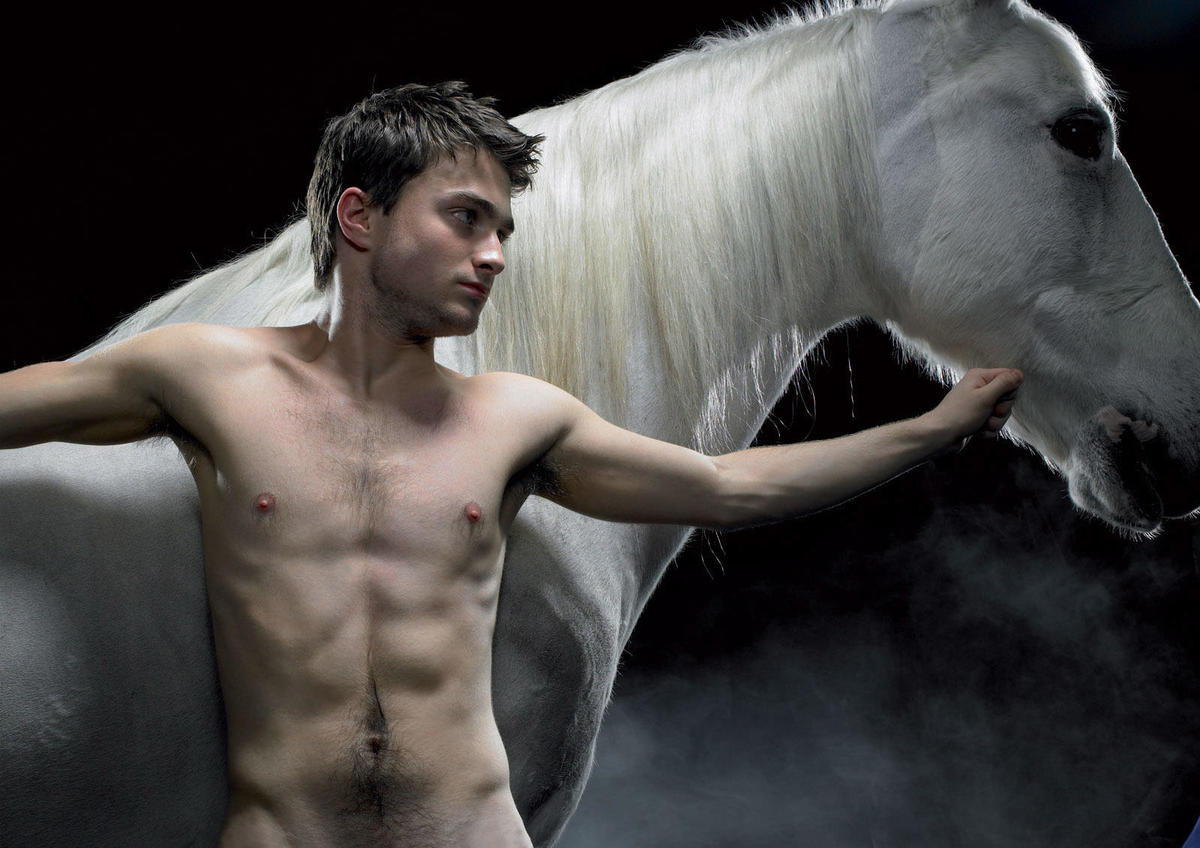
Perhaps there was a time when that epilogue would have been the end of things, and speculations about the erotic underbelly of life at Hogwarts would have flourished only in the fevered imaginations of Rowling’s readers. This, though, is not that time. Currently, there are some eight hundred English-language websites offering fan-created Harry Potter–themed erotic stories and images, in which the teenage mage gets it on with a bewildering range of partners, from his fellow pupils to his teachers to the magical creatures that inhabit the Forbidden Forest beyond Hogwarts’s bounds. This material is overwhelmingly concerned with placing Harry in male-on-male scenarios and belongs to the genre of “slash fiction,” a term originally coined by enthusiasts of the first Star Trek (1966–69) who wrote speculative fiction in which various male members of the Enterprise’s crew — Kirk/Spock, Scotty/Bones McCoy — wiled away the long hours at the final frontier in enthusiastic lovemaking.
The majority of Potter slash fiction authors are young women, and while their work by no means eschews the hardcore (should you wish to read about Harry, say, fisting a centaur, your heart’s desire is only a Google search away), it is equally concerned with character and emotion. Interestingly, the boy wizard is most often paired not with his mentors or friends, but with his enemies, the icily beautiful bully Draco Malfoy, or the severe potions teacher Severus Snape. What emerges is not only the well-rehearsed scenario of British boarding-school fumblings, but also an erosion of the often Manichean moral universe of the Potter books through homosexual desire. A hot glance burns through the boundaries between good and evil, and an encounter with an enemy’s wand leaves Harry wondering whether he is so very different from his nemeses after all.
While much Harry Potter slash is, of course, ridiculous, there is something about it that is oddly cheering. Here, readers have pried open the hard, commercial carapace of a multimillion-dollar property and found within it a dark, sometimes beautiful heart. Following the publication of the final Potter book, Rowling herself “outed” Hogwarts’s bachelor headmaster, Albus Dumbledore, as a gay man, a post-rationalization for which there was little, if any, evidence in the books themselves. I’d like to imagine that, browsing the Internet late at night, her work on the series done, she happened across a caché of slash fiction and found the magic ingredient that the boy wizard’s adventures had always lacked.
Sophia: For starters, Jean is a lesbian.
Dorothy: Ma.
Blanche: What’s funny about that?
Sophia: You aren’t surprised?
Blanche: Of course not. I mean I’ve never known any personally, but isn’t Danny Thomas one?
Dorothy: Not Lebanese, Blanche. Lesbian.
— Golden Girls, “Isn’t It Romantic?”
My cousin Hadoi Ka’awit is five years old. He still likes to cuddle with his three older sisters and mother Fatima. He’s got legs and arms as skinny as a goat and long lashes that fringe his big eyes. He’s sweet and sensitive and likes to pad at my hair with a brush and sponge at my face with cakey makeup and chatter about his two favorite things: the mantis-faced Bratz dolls that belong to his sisters and Freej, the blockbuster Emirati cartoon sitcom about four old biddies in Dubai.
Since its debut in the coveted iftar primetime slot in 2006, Freej has emblazoned the diva-like Um Khammas, sporty Um Saeed, tech-savvy Um Allawi, and ditzy Um Saloom onto the hearts and minds of people across the region. Freej means “neighborhood” in Gulfi Arabic, and the Ums chill together at Um Saeed’s place. Um Saeed’s little mud-and-straw house is center stage for the show, a dusty sanctuary where the four merry widows banish their dead husbands from their lives, hatch schemes for fame and riches, plan vacations and retreats, and are completely free from the constraints of Gulf society, notwithstanding occasional visits from children and grandchildren.
If this constellation seems a lot like a certain American situation comedy about four aged women bantering and bonding over coffee and cheesecake at an old friend’s house, it’s because Freej was directly inspired by The Golden Girls. (Mohammed Saeed Harib, the show’s creator said so in an interview.)
At times it can seem as though the primordial archetypes of Rose, Blanche, Dorothy, and Sophia have been dressed up in polka-dot djellaba and let loose upon the Gulf. Jokes, morals, situations, and set pieces are freely borrowed; even the thatch-and-carpet décor at Um Saeed’s house seems like a muted echo of Blanche’s wicker-laden home in the heart of Florida’s retirement community. When the Ums attempt to impose a “cultural makeover” on their neighbor’s yoga-posing, English-chattering “bohemian teenage daughter,” I immediately remembered the full-court press the Golden Girls delivered to Blanche’s slutty niece when she came down to visit them in Miami. Freej is full of witty jabs at crusty Khaleeji society, too, and it has made a name for itself with its frank airing of taboo topics, including religion, death, and plastic surgery. In the episode “False Alarm,” Um Khammas’s doctor gives her just ten days to live, and she goes on a religious bender, spreading goodwill and doing good deeds. It’s a great episode that seems to pay homage to the classic Golden Girls episode “72 Hours,” in which a close call with HIV leads Rose to completely change her life (for a few days). Of course, some “issues” are not, as it were, translatable. One very special Freej treats demonic possession, as our ladies witness a series of exorcisms, including that of a snooty British jinn named Michael who wants to go on safari and an Egyptian jinn named Fatakat who just wants to ride in a Land Cruiser.
The cast of characters on Freej is extensive. There is Abdullah Bil Khair, a traditional singer with a Saddam mustache and a penchant for colorful sashes and ruby-red beads. Um Khammas’s terrifying and blind mother Um Khammas often drops by for a jab at the girls. And then there are the hangdog faces of the various Filipina and Indian maids, salesmen, and drivers. The good-natured racial “satire” on the show is one of the less attractive elements of Freej, but it’s also one of the funniest. Think of the classic Golden Girls gag in which Sophia mistakes Blanche in a mud mask for a black man or spews, apropos of nothing, “I’m an old white woman. I’m not supposed to have color. You want color? Talk to Lena Horne.” It’s possible that we wouldn’t allow ourselves to enjoy these not-so-elaborate jokes if the protagonists were younger. But the crone occupies a unique place in comedy as the insulting and cruel truth-sayer. We have to pardon her with a chuckle, however serrated her stories and aphorisms.
Jason: Isn’t she the most beautiful mother you have ever seen?
Sophia: Grand, just grand.
—The Golden Girls, “Even Grandmas Get the Blues”
In 1992, when The Golden Girls went off-air, I was nine years old and living the dream in Puyallup, Washington. I had a beautiful grandmother who wore Hush Puppy high heels, baked yellow cake with chocolate frosting once a week, and had a fluffy white permanent just like Rose Nylund’s. It’s a mystery why every kid’s favorite Golden Girl is Rose, but for my part I always confused Betty White with my grandmother. I was confused about a lot of things, including the mechanics of sex, which I had begun to speculate about in my diary. I drew pictures of body parts in code — ice creams topped with cherries that were actually boobs, a woman in a short skirt with labia that hung down so low that I put shoes on them to make it look like an innocent picture of a woman with four legs. Having never seen a penis in our family of women (Grandpa was dead; my aunts were both divorced; my cousins, all single white females; my father, in Abu Dhabi; my sibling, a girl), I drew boys from school with twigs and lightning bolts on their crotches. I tried out words like dildo and humping in cursive. When my mother found the diary, she was horrified and made me rip every page out and into little pieces while sitting in the closet of her bedroom, facing the wall. She said it was a lesson learned, for both of us, but it left me with a sense of shame and fear of writing that took many years to overcome. The only person who kept calm throughout the diary ordeal was Grandma. She took me under the soft folds of her arm-waddle and squeezed me into the rocking chair. It was as satisfying and comforting as a “lesson learned” at the end of a Golden Girls episode about forgiveness and understanding. I curled against her round hip and sucked in Alf and The Cosby Show. I lived under Grandma’s protection for a week, staying up every night to watch TV while my mother sat in the kitchen weeping on the phone to my faraway father about my disgusting diary.
Someone recently observed that Rose is the most deceptive of the GG crew. She blithely tags along on adventures, revealing with perfect comedic timing that those dainty hands castrated bulls back in St. Olaf, or that she’s killed multiple partners with her bare sex. I don’t know about the sex part, but in other ways my grandmother really was like Rose. Later in life I found out how the gentle grandmother who treated our scraped knees with severed aloe vera stalks and cold-creamed her face every night had started working in a cannery at fourteen; how at thirty she owned a successful Tacoma tavern; how in her forties she took a bullet in her belly, the tiny scar highlighted by the pink band left by her cinched apron; or how at sixty she survived breast cancer and went blind but continued to run a five-acre raspberry farm and raise two Arab granddaughters from her stable of all-blonde, all-female offspring. She never retired to sunny Florida or gave up running a farm for a manageable allotment in the neighboring Golden Rose trailer park, where many of the townsfolk Grandma had been around her entire life had ended up.
The Golden Rose sprawled on the other side of the squash patch where our property line petered off. It was a sherbet-colored, pink-flamingoed, Kiwanis-spawning fantasyland for pensioners who couldn’t make it to sunnier climes. Our closest neighbor was Gladys. Her trailer was covered in sea-foam aluminum siding, and her small patch of dusty miller and fern was crammed with garden ornaments, cast-iron bucks, and a wooden cutout painted to look like an old woman bending over to reveal polka-dot underwear. Her garden straggled into the gravel path leading up to ours, and she made the trip between houses at least twice a week, sometimes to tighten Grandma’s do and stink up the house with perm solution and other times just to chatter over pie and coffee about her dead husband, her deadbeat sons, and the vulture-like surveyors who’d been hanging around, eyeing the property for development. Gladys was beautiful, but not like my grandmother. Grandma wore seersucker dresses and no perfume and pickled horseradish for fun; Gladys sported slick pantsuits, dyed her hair black, wore orange lipstick, and smoked a pack a day. At the end of Gladys’s visits she would always stub out her cigarette, lift an eyebrow, and point a hooked acrylic fingernail at Grandma, saying, “So stick that in yer pipe and smoke it,” before ducking out the back door with her Pomeranian, Tootsie.
I idolized Gladys and the other, less frequent lady callers from the Golden Rose and spent a good chunk of time after school with the TV on mute so I could eavesdrop on their conversations. And hanging almost exclusively around old ladies had an effect on my sensibilities. I felt more comfortable clipping my grandmother’s toenails in front of the five o’clock news than I ever did going to Kalles Junior High’s Winter Tolo. Every Sunday, well into seventh grade, I copied and memorized dance numbers off the Lawrence Welk Show, wearing velour tracksuits at a time when velour tracksuits were reserved for eighty-somethings. For a long time, I existed in a kind of dejected in-between place, with few friends my age and the sensibilities, sarcastic and sartorial, of an old lady. Friends of mine today sometimes say that I am a gay man trapped in the body of woman. I am not entirely sure what that means, or how to think about it. Mostly I’m flattered. But whatever they’re seeing in me is undoubtedly yet another legacy of my childhood among the golden girls of the Golden Rose and my redoubtable grandma, Grace.
Blanche: I don’t really mind Clayton being homosexual, I just don’t like him dating men.
Dorothy: You really haven’t grasped the concept of this gay thing yet, have you?
Blanche: There must be homosexuals who date women.
Sophia: Yeah, they’re called lesbians.
—The Golden Girls, “Sisters of the Bride”
My cousin Fatima is worried about Hadoi. Worried doesn’t quite describe it — she has an almost hysterical fear that his favorite TV show is turning her son into a homosexual. Hadoi hoards advertisements and flyers and coloring book pages that have to do with Freej, carrying them around in a makeshift junior version of a man-purse (which is actually a purple canvas lunch bag with a Velcro lip). Fatima frequently finds Hadoi hidden under the stairwell or bed, having abducted one of his sister’s dolls, singing to himself and snapping the sculpted plastic feet on and off Jade’s peg legs. Hadoi is gentle when he chatters to his plastic female friends, engaging in elaborate conversations about clip-in hair extensions and the glitter accessories he’s scavenged from under the beds and cupboards in his sisters’ room. He talks to me the same way while braiding my hair.
Fatima doesn’t want Hadoi picking up the swift backtalk or funny walk of his favorite, Um Khammas. So she encourages him to take after my least favorite character on the show, Um Khammas’s grandson, Abood. The boy is a kind of Bart Simpson or Dennis the Menace type, except meaner: he steals money, disrespects his elders, tortures animals, and generally acts out, in the mode of countless spoiled boy-children across the Gulf. Fatima dresses Hadoi in Abood pajamas, showers him with Abood paraphernalia, and even bought him a bottle of watermelon-scented Abood cologne. I don’t understand what my cousin is thinking, just as I can’t figure out for the life of me why this amazing, charming, subversive show makes such a fuss over this loathsome tyke. My cousin Afrah insists it’s just the pleasure of recognition: “We all know somebody like Abood.” Unfortunately, this is true. In Doha, in my father’s extended family, that somebody is my cousin Azooz.
Like Abood, Azooz is mischievous and cute. Like Abood, Azooz drives me kind of crazy. I think it’s the animals. Like Abood — and like Jeffrey Dahmer — Azooz likes to kill things. During one of our camping trips, he bashed a newborn goat on the head with a rock. We found the brained kid next to a sack of feed, its twiggy little legs curled up under it and its body surprisingly small.
One night I caught Azooz jabbing the butt of a toy bunduqiya (spinning rifle) at his sister and Nora Ka’awit, who were cowering in the toilet. I grabbed him by the nape of his thobe and dragged him into the hall. He was scared and struggling before I even went at him in English. The girls scampered off silently, just as frightened by my outburst as they’d been by Azooz’s violence. His mother, Zayna, came storming in at the sound of her baby’s wail. She picked him up with one swift sweep and told me off like I probably deserved.
“It’s okay if I yell at him, but you! You’re just his cousin! And you’re strange to him, and he’s frightened when you talk in Engleesi!”
“Good. You should have seen how he scared the girls.”
“No, they like playing like that.”
“What are they playing — war crime?!”
The hardest part for me is that Fatima wishes her own and only son would be more like Azooz. Naturally, Azooz torments Hadoi.
The worst was a wedding night — I don’t remember whose. The Ka’awit brood had gathered to watch their mother get ready, powdering and primping at her vanity mirror. Azooz stood in front of Fatima, adjusting his tiny sunglasses and wrapping his Emirati-style hamdania at various jaunty angles. Hadoi came veering into the room, his voice a high-pitched whine, his eldest sister in hot pursuit.
“Uma! Saweeli!” he begged, tugging at his mother’s satin dress with one spindly arm and wobbling beneath a huge bottle of Curious by Britney Spears, thrust up on the other arm like a glass shot put. The contrast of Azooz’s miniature masculinity and Hadoi’s ridiculous cries to be “done up” with perfume were funny until Fatima’s hennaed hand snatched the sloshing bottle away from him. “No, that’s for girls. I gave you boy’s perfume. I’ll put that on for you.”
Azooz pounced on Hadoi’s weakness, pushing him hard and giving him that signature double-middle finger-bang move so totally inappropriate for a kid his age. Azooz skipped out of the room yelling “Khwani!” at the top of his rotten little lungs. Hadoi was crying then, wailing and lunging up at the bottle of Curious, just out of his reach on the mini-fridge where my other grandmother kept her insulin. Fatima ripped open the Velcro on Hadoi’s lunch-bag purse to find a nest of Bratz paper scraps, the plastic bottle of Abood little-boy-body-spray missing.
“Where is it?” Fatima shrieked, gesturing fast and sharp with her arms to frighten Hadoi into a confession.
Then, suddenly, she collapsed onto the carpet in a heap of pleated taffeta and cheap, clangy jewelry. Her daughters, flounced to the nines in tulle, and her only son grudgingly wearing a “dancing” thobe with sleeves dangling to the floor, clustered around her.
“Get out!” she bellowed. My aunt Sarah and I ushered the kids out to the Nissan and went on ahead to the wedding. Of course, while the other boys flitted back and forth between tents, Hadoi stayed in the women’s tent with us, munching on seeds and silently watching the old women in coppery batoolas sing and beat their drums, occasionally pointing at the fattest and most formidable singer and saying, “Shoofi, Um Khammas!” For him, seeing a rotund wedding singer in a green djellaba was the same as spotting Minnie Mouse at Disneyland.
I feel bad for my cousin. Fatima missed the wedding, broken down over a missing bottle of watermelon-scented spritz. Anyone could see that the Abood merch, the bicycle, and the days-out-with-daddy intended to bait her son into hetero pursuits were doomed to failure. If Fatima had been ever seen The Golden Girls, she’d realize she just has to learn to love him for who he is. Blanche was a raging homophobe, too, but she managed to love her brother anyway.
“There are no amateurs in the world of children.”
— Don Delillo, White Noise
Child actors are often unsettling, especially to the grown or the childless. Good acting has undertones of magic, mimesis allowing us mere mortals to momentarily embody powers usually reserved for the divine or the demonic. For a child to act with any particular skill inspires first praise and then concern that we might be witnessing an intervention by outside forces. Even found in a presumed state of nature, playing cops and robbers in a field, or applying mother’s makeup in a bathroom and teetering in her heels, an acting child implicitly honors the nearest adult before assaulting him or her with caricatures and satires. If we look long enough, we start to see things in a child’s pantomime that compel us to cut the scene short before they see them, too.
In Rainer Maria Rilke’s “Eighth Duino Elegy,” what children may or may not see aligns them with animals. The poet laments that we civilize our wild children by teaching them to fix their eyes on things and shapes, to their — and our — diminishment. In one translation, young eyes are yoked to “structure,” in another to “what is settled.” Either way the familial scene he describes is a common one, in which acculturation and coercion are indistinguishable. A child’s eyes are remade as “traps for freedom”: “turned back upon / themselves, [the eyes] encircle and / seek to snare the world.” Once this work is done, it is only in the “faces of the beasts” that we can ever hope to see reflected “what truly is,” the warm-blooded creatures of the earth gazing unnervingly “into openness with all / [their] eyes.” The next best thing, of course, is poetry, a form of play.
Alongside poets, children, and beasts, Rilke sings the virtues of the angels, who have their own ways of seeing the world as it is. But the angels he has in mind are not rose-cheeked cherubim with their harps and tiny wings. Rather, as he insisted in a letter to his Polish translator, they were the immanent, immaterial angels of Islam, which Rilke had likely discovered during his travels with Lou Andreas-Salomé and her husband, the Orientalist Friedrich Carl Andreas. The angels of Islam, in this account, are invisible, omnipresent beings made of light and structurally incapable of disobedience. They submit to the Almighty perfectly because they are unburdened by any sense of separation from their Creator. (Paradoxically, this is what makes angels inferior to men, since humans choose to submit. It is also what distinguishes them from the jinn, God’s first creations, whose leader, Iblees, chose freely to rebel.)
In Rilke’s imagining the child sits cross-legged, somewhere between angel and jinn, enjoined by her elders to focus on what is settled and good in order to forestall subversive potentialities. If creation is a predestined drama, Rilke’s children must be the most unreliable actors ever to walk its stage. We are called upon to teach them their scripts not just because their fudged and forgotten lines are an affront to what is, but because we fear what such lapses in character might inadvertently reveal. The poet cherishes these illuminating improvisations—but then again, he is already halfway to the dark side and perhaps not to be trusted. For those without poetic temperament, there is only a creeping, parental dread and the long anxious wait for our children to join us in settled adulthood.
In Wael Shawky’s Telematch series, the Egyptian-born artist revisits a German game show originally broadcast and widely syndicated during the 1970s. The residents of two Teutonic hamlets would vie for prizes and for the laughter of the audience by running a gamut of races and obstacle courses, their bodies clownishly handicapped by elaborate costumes, equal parts cartoon and fairy tale: full-blown Disney characters; giant ladybugs; elves; camel-riding sheiks, their mounts a riot of felt and foam; and the occasional Egyptian pharaoh, ten feet tall and precariously seated on his throne. Shawky’s still unfolding project — its constituent pieces have been aggregated and disaggregated over the last few years in installations and individual projects such as Telematch Upper Egypt, Telematch Suburb (on view at SITE Santa Fe’s biennial until January 4, 2009), Telematch Sadat, Telematch Supermarket, and Telematch Shelter — now inverts and transposes the logic of its nominal source material. Instead of German adults racing to beat the clock while weighed down by the ridiculous regalia of mass-marketed childhood fantasy, Shawky puts children from the upper-Nile city of Asyut through oblique paces, dressing them up in the invisible regalia and scripts of history and culture.
In Telematch Supermarket, a line of children driving pedal-powered cars and trucks makes a solemn procession through the tight aisles of a dimly lit supermarket. The vehicles seem handmade, the product of an exceptionally clever rural craftsman who has welded bicycle gears to skeletal metal frames and fashioned chassis from cardboard and stray pieces of wood. The convoy itself is a roving tableau of urban irritants and vexations. The road is too narrow, and at any given moment a few of the pint-sized drivers threaten to careen in slow motion into stacks of canned goods and piled sacks of flour. The boys behind the wheel display alternating flashes of boredom, anxiety, and anger. One of them, keenly aware of the camera Shawky has placed just outside his metaphorical windshield, hunkers down behind the wheel as if enduring some all-important driver’s test, while another, warming to a different role, leans out his cardboard cut-out driver’s side window to shout at the slowpokes ahead. (The only sound in the audio is a gathering synthesized hum, but one can almost hear the boy shouting, “Peasant!”) The girls, passengers all, sit in the front or hunch in the back of makeshift pick-ups and wait.
Supermarket follows Shawky’s most famous work, Telematch Sadat, which prominently features another child-driven convoy. In this video, the children of Asyut reenact first Anwar Sadat’s 1981 assassination, then his funeral. In the opening section, a line of the artist’s makeshift pedal-trucks moves toward the camera on a bright dusty road before unloading a handful of boys, toy guns in hand, their faces obscured by masks and hoods. Shawky’s camera goes handheld and jittery as some of the boys fire at Sadat, offscreen, in upright, exposed positions, while others run to and fro and shoot haphazardly. The gap between their jerky movements and the precise choreography of movie shootouts lends the episode a particularly disturbing realism. As in the video of Sadat’s actual assassination (readily available on the web, along with many episodes of the original German Telematch), the leader himself is an unseen center of attention; he makes only a partial appearance in the second half of Telematch Sadat. Once the shooting is done, a crowd of blue-shirted boys carries a simple, wooden box toward a pint-sized approximation of Sadat’s pyramidal tomb, an object of stark, clean sculptural simplicity that makes a ringing counterpoint to Shawky’s jury-rigged cars. Dozens of boys stumble and jostle for position, and when they finally make their way to the tomb, they move the casket into position in waves of disarray and recovery. Individual boys find diametrically opposed ways to stand out from the larger mass, calling attention to themselves either by taking charge and moving the casket forward or by standing back and watching, shooting furtive glances into the lens.
Politically engaged reenactments of historical events are in vogue these days, but Shawky’s Sadat is notably oblique. Unlike Mark Tribe’s excellent Port Huron Project, where dozens of speeches from the American civil rights and Vietnam eras are energetically performed by groups of actors (right down to extras planted in the audience to respond on cue), the Sadat snuff film is almost a pretext. Shawky’s true subject hangs just out of reach, in the jumble of free play and coercion Rilke identified with childhood. This contest of control and play gives Sadat a familial relationship to Oliver Stone’s W, where the horrific eight-year presidency of the arrested boy-king George W Bush is also a kind of pretext. W is at best a savvy treatise on the art of high-end impersonation, from the actors’ impersonations of their real-life characters to Bush’s impersonation of a president. Ernst Gombrich’s 1938 essay, “The Principles of Caricature,” could easily have been written about it:
Caricature has its strongest effect in reduction, in formulae…. [A] single feature often stands for the whole, and a person is represented by one salient characteristic only. To the caricaturist, however, this extreme simplification is not the starting-point of his work. He arrives there often by stages, beginning with a life-like portrait which he somehow simplifies and distorts in the absence of the model.
The skill of W’s caricature is its fatal flaw, its performances substituting for interpretation and analysis, the absent model of Gombrich’s formulation. Shawky’s videos, on the other hand, never slide into caricature. His children play themselves even when driving trucks or shooting guns. There is no absent model for child actors to evoke; they are the thing itself.
If Shawky has an ideology, it is the potentially uncool (especially for the career of a globetrotting conceptual artist) notion that the kids are — surprise, surprise — all right. For his Telematch Suburb installation, Shawky positions a couch in the center of a gallery space while three seemingly unstaged childhood moments are projected on the walls around it. There is no tragedy or outsize drama, just slices of primal everydayness. In the central video, a short loop depicts dozens of children entering and exiting a short but improbably roomy desert tower. The rough-hewn structure’s unseen interior is clown car, termite hill, and magic wardrobe wrapped into one, the line of kids appearing and disappearing in steady cycles that have the regularity of a relaxed daily commute, a continuous chain of care and mutuality, older children pausing mid-screen to extend a hand toward younger ones, the littlest scurrying to catch up.
To the right, an LCD screen shows an Egyptian teacher gamely delivering an English lesson to his young charges. He seems an able enough tutor, but the more fully bilingual viewer might laugh (or wince, as the case may be) at the thought of these students carrying their teacher’s thick accent out into the world with them, to treasure or overcome at their discretion. To the left, a wall-size projection of a heavy metal band provides instruction in post-adolescent attitude. Rangy young men, bald heads banging, phallic guitars swinging, are on a stage in the middle of field, while rural townspeople mill about and watch, by turns bored and amused. A donkey’s spasmodic twitching almost seems to keep time. Instead of cultural conflict or dire ruminations on tradition and modernity, there is the kind of comfortable mutual disinterest that only a family can muster.
One comment on YouTube, a reaction to one of the many Telematch Germany videos available there, says, “I used to watch it as a child in Singapore and it was a time for local families across the island to gather around their TV sets. I wish I knew the name of the commentator. He had a fantastic voice that I remember even today! The games and his commentaries always emphasized how friendly games bring people together. I got to know Germany & her people through this programme.” This is clearly Shawky’s point of departure: cultural parallel lines converging at a global media horizon. But his project is at once riskier and more fundamental than the German show’s heartfelt presentation. Like all motion pictures, Shawky’s artworks are a compendium of ways to trap the bodies and eyes on both sides of the screen—from the formal construction of his installations and videos, with their predetermined lines of sight, to the plight of his child actors with their loose but overdetermined performances. The degree of their eye contact with the camera serves as an index of their submission, disobedience, or subversion. Follow his script or don’t; attend to your role or ignore it; move the coffin or stand and gape at the camera. In the end, it’s all the same.
“Hygiene Corner: The Echo of Implicit Western Intervention” was the title of an influential article published in a 1984 issue of the magazine Sahifeh. Its odd title was a reference to a popular 1970s children’s television series, Mahalleh Bihdasht (Hygiene Corner). Throughout the 1980s, conservative magazines revisited the cultural products of the Pahlavi era, producing revolutionary criticism after the fact. The author criticized the show for emphasizing bodily hygiene at a time when the children of Iran lacked what he referred to as bihdasht-i ma’navi, or “moral hygiene.” Hygiene Corner, he argued, was focused on irrelevancies — not touching one’s eyes with dirty hands, for example; it was, in fact, a tool to distract Iranian children from the realities of the larger world, “the poverty of children in Africa and Palestine as well as the emptiness of the lives of Western children.” At the same time, the show was accused of being an imitation of the American show Sesame Street.
Concern for the moral hygiene of children was widespread in those years. In the wake of the revolution and the war with Iraq, the regime labored to create “national heroes” who might serve as role models for potentially wayward youth. While many of those were historical figures from the early years of Islam, there was one boy hero from the present day, Hossein Fahmideh, a thirteen-year-old who volunteered to go to the front and ended up a martyr, hurling himself beneath an Iraqi tank with grenades strapped to his narrow chest. Hossein’s visage was everywhere, on murals and on state television programs. At my school, painted images of Hossein hung in the stairwells, the lobby, and the prayer room, his face the picture of innocence.
But there were not so many heroines for girls in the early years of the Islamic Republic. There was Fatimah, the prophet Mohammed’s daughter, and her daughter Zeynab. But they had no bodies, no faces; there were quotations about what they did but no images or descriptions of what they looked like. There weren’t many images of women then, period. Some girls idolized the pop singer Madonna, whose cassettes could be found on the black market. Others might have admired Marie Curie, whose serious face appeared in our science textbook. But they were not for me. So I began to imagine myself as a man. Once, seething with discontent, I drew myself as a larger-than-life figure with a raised fist, set against the teeming masses at a political rally — an ayatollah’s pose. It was a confused and confusing time. Then Oshin arrived, like a gift, the tale of a Japanese woman who seemed to embody this curious self-image I had constructed: a flesh-and-blood heroine, combining female virtue and male ruggedness, foreign yet not Western. Someone with whom I could identify.
Oshin was the story of Shin Tanokura, aka Oshin, born in 1900, whose sometimes harrowing experiences provided a window onto Japan in the twentieth century. Told through a series of flashbacks and recollections, the series described Oshin’s progress against terrific challenges, from her Meiji-era childhood through to World War II and the American occupation. Her long struggle began at the age of seven, when her father sent her off to another town to work as a nanny, where she was physically and verbally abused. When she finally decided to escape, she became lost in a blizzard and nearly died. Her father sent her away again, another nanny job, and that second apprenticeship was more benign. When she turned sixteen, however, her father forced her to find yet another job, this time as a barmaid, though the bar was actually a brothel. Eventually Oshin ran off to Tokyo, where she found a wealthy husband and became a hair stylist. Even then it wasn’t happily ever after — before the story reached its conclusion, the couple would lose their home in the great Tokyo earthquake of 1923 and their eldest son in World War II. Oshin would be hounded by her in-laws and lose her job. Her husband would commit suicide. Through it all, Oshin would rise, again and again, starting over and hanging tough.
The show was a huge success in Japan. Originally broadcast as a series of 297 fifteen-minute episodes from 1983 to 1984, Oshin was almost immediately repackaged for export and became a global hit, especially in Asia and the Middle East. Iran was one of the fifty-nine countries to broadcast the show. Japanese movies and series were mainstays of state-run television in the Islamic Republic; Kurosawa films were broadcast at least once a year. But Oshin captured the Iranian imagination like nothing else. An edited version of the program ran on Saturday nights over two years in the mid-1980s. The darker elements of Oshin’s apprenticeship were cleaned up, with a few cuts of “inappropriate” scenes and some rewriting of dialogue. Our Oshin was a figure not just of perseverance, but also of virtue.
We knew the story as The Years Away From Home, and there was a sense in which the title seemed to fit not just Oshin’s life story, but also the story of Iran in the 1980s. Normally crowded streets emptied out during broadcasts of the weekly show, while local newspapers reported on Oshin’s life as though she were a real person. The Years Away From Home even became a yardstick for measuring the quality of other TV series. Its moral hygiene (after editing) was impeccable; critics celebrated the show for its portrayal of the “ethics of family life, culinary culture, and childcare.” (In later episodes, Oshin became a successful fishmonger, and her children went on to start a chain of supermarkets.)
But Oshin was popular among younger Iranians primarily because of her beauty. The heroine touched the hearts of teens coming of age under strict Islamic regulations. Teenage boys made little rhymes and limericks about Oshin and other beautiful women from the program and fantasized about what the censors had cut. Middle-school rumor had it that the Japanese original included scenes where Oshin appeared naked in the brothel. Though false, it produced an even more alluring aura around the heroine — a kind of Oriental fantasia, not entirely unlike the European fantasy of the harem girl. Teenage girls did their best to emulate Oshin’s traditional geisha hairstyle, cultivating bulbous forelocks that curled out from under tight headscarves. Kakul Oshini, or “Oshin’s forelock,” was a term used by school authorities to spot those students who failed to implement Islamic standards of the “perfect” hijab. It was a measure of the show’s popularity that the show itself was not blamed for this bad influence; rather, we Iranian girls were at fault for misappropriating the foreign style.
This ambiguity, and Oshin’s curiously privileged place in post-revolutionary Iranian culture, came to a head in 1988, as the war was nearing its bitter end, not long before the death of Ayatollah Khomeini. It was the annual day of remembrance for Fatimah, the prophet’s daughter. Live on the radio, a reporter asked a random person the most banal of questions — who, on that day of all days, was the best role model for “the girls of the Islamic society of Iran?” The girl on the street answered without thinking, “Oshin!” The reporter started to panic. “What about Her Highness Fatimah, peace be upon her?” he asked. His respondent did not take the hint. Fatimah, Zeynab — those ancients were irrelevant to the modern age. The interviewer stopped the program and apologized on the spot. Immediately afterward, rumors spread that the ayatollah himself had been listening that morning; that he had been furious; that reporter and respondent both had been sentenced to death. Later it was announced on the news that the two had been pardoned. Not even the Supreme Leader, it seems, could stay angry with Oshin.
In 1988, at a painful moment of the armed conflict in Lebanon, Milia received her first letter. It accompanied a small sum of money — THIRTY percent of her school fees — sent by a family in Belgium, part of a fraternal program between Belgian and Lebanese citizens. When the young Lebanese girl saw the photograph that the Belgian family had included, she dreamed of being swept away in a whirlwind love affair with the son, Eric, a boy she had never met and never would meet.
It was a year of electrical blackouts and ferocious street fighting in Lebanon. Milia was twelve years old. When she sent a photograph of herself back to the family, she received a response she boasts of to this day: “You’re a vibrant young girl, with a smile that shines.”
The correspondence was in French.
Two years later, the Girl Scout Foundation at her school decided to bring girls together from across the country through a pen-pal program. The pen pals’ identities were to remain secret; that way, no one could form any preconceived conceptions about her partner.
Milia called herself Bouboul, the French diminutive for the word “ball” — a play of sorts on her size, since the kids at school made fun of her for being overweight. Her anonymous friend called herself Poisson [fish] in honor of her beloved pet fish, which had just died. Poisson adored pop music and foreign radio stations. Bouboul was more serious, yearning to escape the oppression of puberty and its focus on appearances.
The girls exchanged letters. One day, the scouts’ directors decided that all the youngsters should meet. Milia, nervous and exhilarated at once, went to the assigned meeting place: Notre Dame de Joumhour School. But her pen pal was nowhere to be found. Milia watched as other girls met and smiled and laughed. To this day, she’s convinced that Poisson was there, that she hadn’t liked the way Milia/Bouboul looked and didn’t bother to step forward.
Milia never wrote to anyone ever again.
The plan was to create an army of black “super children”: seventy boys and seventy girls who would flood into the United States from a secret compound in Canada to combat racial injustice and build a more perfect society from the bottom up. Lee Boyd Malvo, a seventeen-year-old immigrant from Kingston, Jamaica, was “very confident that this could be done,” his court-appointed psychologist reported.
But the plan required money — ten million dollars — and the best way to get it would be to hold the government hostage. Malvo and his partner, a forty-two-year-old Gulf War veteran named John Allen Muhammad, would kill six people at random each day for one month, sowing panic with random shootings in Washington, DC, and its affluent suburbs. Allen put a mattress in the back of his 1990 Chevy Caprice and carved a hole in the trunk, following the instructions for creating a “sniper’s nest” he had found in an old Irish Republican Army manual. If the money was not forthcoming, they would move on to Baltimore, where they would plant improvised explosive devices loaded with ball bearings among crowds of children. The government would pay them to stop; they would take the money, flee to Canada, and buy a plot of land. They would mold orphaned children into militants, providing weapons training and a revolutionary education, and when those children had become soldiers, they would be dispatched throughout the world to fight the enemies of black people and of Islam.
Over three weeks in October 2002, Malvo and Muhammad put the plan into action, killing ten people, critically injuring three others, and paralyzed the swath of strip malls and highway intersections that encompass the nation’s capital, before being caught asleep in their car at a rest stop near Myersville, Maryland. Malvo was supposed to have been acting as lookout but had nodded off.
“We had a strategy from the beginning,” Malvo said in his initial confession. “You keep your enemy fortified. You stretch them out and make them weak.” If the police didn’t catch them and the government refused to pay them, they would keep killing until the authorities were forced to declare martial law. “Bringing the military in,” Malvo said, “would tear this side of the country up with the economy, tear this whole faction up. Tear this whole section of the country up.”
Later, he changed his story. Malvo said that he cried after Muhammad laid out the plan and demanded his compliance. He sat alone in a bathroom playing Russian roulette with a 22-caliber revolver. “I loaded one round, spun it, put it to my head, fired,” he said. Nothing happened. “I broke down and couldn’t do it.”
Malvo learned to be obedient at a young age. He was born in the slums of Kingston in February 1985, the son of Leslie Malvo, a construction worker, and Una James, a seamstress. Leslie worked off-island and, according to Carmeta Albarus-Lindo, the psychologist who examined Malvo after his arrest, the boy was “inconsolable” during his father’s long absences. But his mother suspected Leslie of having an affair, and one morning in the spring of 1990, James woke her son and told him to pack some bags. By the afternoon, they were on a bus to Endeavor, a small mountain town near the west coast of the island. James didn’t tell Leslie where they had gone, and he didn’t come after them.
In Endeavor, James left her son with friends and neighbors for weeks on end while she searched for odd jobs in nearby towns, though she never seemed to return with much money. When she did come home, she would spend what little she had on booze and install herself in front of the television; Malvo would wander in circles around their modest home and scream for his father until she came out and lashed his bare back with a belt. James would become enraged if she asked Malvo to bring her a basket and he brought it too slowly, throwing shoes at him and pulling his hair. The boy gradually retreated inward, speaking less and less. Diane Schetky, a psychiatrist who also served as an expert witness on his behalf, considered this a pivotal moment: “Lee responded to the abuse by being compliant. He learned that if he put himself in a trance, the punishment didn’t hurt as much.”
Things were tough in Endeavor, and when Malvo was twelve, James moved them again, this time to Antigua, where they lived in a shack without electricity or running water. James began leaving her son for months at a time; when she came back, he would sometimes threaten to kill himself, and she would whip him in response. (Later, Leslie Malvo called her “a good mother sometimes and a bad mother at other times.”) Eventually he stopped making threats. Once, James disappeared for eight months without sending money or telling her son when or if she planned to return. Malvo supported himself by begging and scavenging for scraps of metal and salvaging electronics, which he would sell on the street.
Before his trial, Malvo told Albarus-Lindo about something that had happened when he was in Kingston. While walking to school one day, he saw a man shot to death on the other side of the street. One of the gunmen caught Malvo’s eye and waved the boy away with his pistol, while his partner searched the dead man’s body. Malvo walked away as directed.
In prison and in the courtroom, Malvo made drawings and penned political tracts on pieces of paper torn from the legal pads provided by his counsel. Nearly a hundred of these pages were found in his cell between January and March of 2003. The pages are populated by characters ranging from Tupac to Hannibal, Osama Bin Laden to Charlie Brown, Trent Lott to Marcus Garvey. They reflect two years of indoctrination from Muhammad and a mind abraded by a lifetime of hardship and deprivation, but they also reveal the stirrings of an imagination much like that of any teenager living in America in the first years of the twenty-first century.
During the trial, Malvo could often be seen in a baggy crewneck sweater, slumped over the defense table, sketching satirical tableaux of the proceedings that depicted all participants as detached, disinterested, or preoccupied with wayward thoughts. In one picture, a lawyer tries to convince the jury of Malvo’s innocence, while reflecting, “On the other hand, he is a lunatic.” Another lawyer looks on, thinking, “I can’t believe this crazy boy wants to die! Not on my watch.”
Meanwhile, Malvo’s avatar whistles and dreams of basketball. “GOOD GRIEF! I gotta sit here and look pretty,” reads one thought bubble. Next to it, a comically inflated Malvo palms a basketball and glides toward the rim in a Michael Jordan pose, his cumbrous sneakers dusting another player’s bald head. A second thought bubble emerges from that scene, a line from a revolutionary ballad by the Steve Miller Band: “Time keeps on slipping into… future. I’m gonna flyyy! Oh yeah!” Three lines dominate the page:
PRETEND COURT
WHACK ME GET IT OVER WITH
GOSH!
In another drawing, a retinue of lawyers confer before the judge, one draping his arm over another’s shoulder. Above their heads, Malvo has identified them as “the guys who wanna save my life. Ha! Ha!” Beneath the scene, seemingly as an afterthought: “Allah is the disposer of my affairs!”
In Antigua, Una James was selling cold drinks outside a bus station, and a friend recommended she see Muhammad about procuring fake documents that would allow her to emigrate. Muhammad had recently moved to the island with his own three children after divorcing his second wife. He and James became friendly, and he immediately took an interest in Malvo, who would often stay at his house. Muhammad taught him about Islam and the oppression of black people; the fifteen-year-old adopted the man’s American accent and began calling him “father.” The two lifted weights and played basketball together.
When James went to find work in Florida, she left Malvo with Muhammad. The two snuck into Miami to join her briefly in 2001, but then took a bus across the country to Bellingham, Washington, where they registered at the Lighthouse Mission shelter as father and son. They got a family membership at the YMCA, and Malvo enrolled in a local high school. Lee’s classmates later claimed that he did well in school, though he didn’t make any friends.
Muhammad had Malvo steal a 223-caliber Bushmaster AR15 rifle from a local gun shop and began subjecting the boy to a rigorous training program: leopard-crawls across the forest floor, calisthenics, revolutionary literature, target practice, and military theory. Each night before he went to bed, Malvo was made to memorize passages from Sun Tzu’s The Art of War. Often the pair would drive deep into the stands of white oak and Douglas-fir to practice marksmanship, using makeshift targets with paper plates for heads. Other times Muhammad would tie Malvo up for hours in the brumous foothills of Mount Baker, where he would go without food, water, or sleep until the older man came back to free him.
There were also video games, predominantly first-person shooters; Malvo’s lawyers later suggested that these inured him to senseless killing and to the prospect of his own death. “If you get hit, you bleed and you die, unless you hit a particular code,” said one attorney, Craig Cooley. “Most of these games have a code where you become invincible, where you become immortal. Game players call it the God mode. When you punch that in on some of those games, it says, ‘I am God.’” Cooley went on to compare the boy to the American soldiers brainwashed by the Chinese during the Korean War.
At his own trial, Muhammad refused representation. When it was time to cross-examine Malvo, Muhammad stood shackled behind the defense table, clutching several sheets of lined yellow paper in his left hand.
“The last time we played basketball, who won?”
“You won.”
“The last time we ran a mile, who ran faster?”
“You.”
“And the last time we ran five miles, who ran faster?”
“You did.”
On December 8, 2003, Malvo’s lawyers showed jurors a particularly violent ten-minute clip of The Matrix. The jurors were informed that Malvo had watched the film over a hundred times, “to prepare his mind for what was going to lie ahead.” Malvo identified with the hero, Neo. Muhammad was his Morpheus — a father figure who chooses a young man to “lead a revolution against an evil government that has people oppressed to the point where they don’t even know they’re oppressed.” The goal of their mission had been to foster “massive societal change.”
“The Matrix is interesting,” CNN reported, “because they think that all of reality is a lie, and that there was no right and wrong, that the government — because the government is a lie, and maybe he seemed to be living in that world, and was searching for a way out of it.”
One of Malvo’s drawings depicts him in handcuffs, the word “bondage” etched across the baroque musculature of his chest. “The outside force has arrived, free yourself of the Matrix 'control,’” the text reads. “Free first your mind. Trust me!! The body will follow.” Malvo’s prison drawings inspired his interpreter, Albarus-Lindo, to this conjecture:
When Lee began to think that he was destined to remain a child forever, that he could never do without protection against strange powers, he lent those powers the features belonging to the figure of his father. He created for himself the gods whom he dreaded, whom he sought to propitiate, and whom he nevertheless entrusted with his own protection. It seems to me that his longing for a father is a motive identical with his need for protection against the consequences of his human weakness.
Malvo put it more simply. “I was desperate to fill a void in my life, and I was ready to give my life for him.”
In one picture, Lee drew a gallant lion with a heavy, wind-swept mane. It appears to be striding from the right side of the page to the left, its snout leading the way. The lion occupies the bottom third of the page, and above it Lee wrote the following:
Lee
Root: Leander
Origin: Greek
Meaning: brave as a lion
Majestic: hears a different drummer.
Personality: a person who is fresh as a daisy.
Genuine: a life worthy of praise (needs no admonition, give to Allah.)
Style: his mind is at peace
Ability: possesses many gifts.
Character: willing to make long-term commitment
Sentiment: a shield for those in need.
Physical: will never get in over his head.
Alongside the lion, Lee copied some verses of a traditional folk song made famous by Recep Tayyip Erdogan, now Turkey’s prime minister, who had been arrested for uttering them in public in 1999. “Our minarets are our bayonets / Our mosques are our barracks / Our believers are our soldiers.”
“I planned to shoot him in the head,” said the voice on the tape. “Circumstances didn’t allow me to shoot him in the head. He was bobbing.” The voice was casually frustrated, as if recounting a trip to the beach that had been marred by inclement weather. What it was actually describing was a man standing in the pale suburban light of a Ponderosa Steakhouse parking lot as his would-be assassin waited for his shot from the trunk of a Chevy Caprice.
In the courtroom, Lee listened to the voice play back. His voice. He quit drawing, pushed his legal pad aside. His eyes winced with recognition, and he arched his back and lowered his head with the mechanical slowness of a twenty-ton crane until his temple touched the counsel’s table. The arc of prayer, one commentator noticed.
It was the evening of October 19, 2002. As Stephanie Hooper testified, she and her husband Jeffrey had just finished “a very nice dinner” at one of the many Ponderosa Steakhouse locations that cling to the length of I-95 connecting Washington, DC, and Richmond, Virginia. They were on their way home to Melbourne, Florida, after visiting family in Pennsylvania. On account of the snipers, they had circumvented DC as best they could. Now, just north of Richmond, they had finally managed to forget about the news reports and enjoy “some wonderful conversation.” She remembered arguing with her husband as they exited the restaurant — about “who loved each other more.” They held hands on the way to the curb. Before they went to their separate sides of the car, Jeffrey pulled Stephanie close and pressed his lips against hers, and then a bullet tore through his skin and tunneled into his gut.
“I thought it important to lie down,” he remembered, “so I lied down on the pavement there.” He told Stephanie he loved her, and they prayed together, with Stephanie still holding two cookies left over from dessert.
In one drawing, Hannibal Barca, the legendary military commander who led the Carthaginians over the Pyrenees in the Second Punic War, plunges a sword into the chest of a felled “white man/devil”; in another, he bares his rock-hard chest and stares straight ahead. Below his figure, the slogan “We will either find a way, or make one.”
In another, Malvo is crouching close to the ground, arms wrapped around an oversize rifle, eyes trained on an unseen target, the words “Jihad” and “none innocent” and “No peace!” hanging above him. On one corner of the page there are eight games of tic-tac-toe he must have played to pass time during the trial.
Elsewhere, there is a self-portrait: Lee as an ancient African king, decked out in beads and chains, steering a chariot. There are figures from comics and video games, including one with drills for hands and a crescent emblazoned across his chest. There is a character from Street Fighter and an elfin archer straight out of The Lord of the Rings. There is a portrait of Tupac with his right hand gripping a pistol and his left fist extended toward the viewer, anticipating a bump. Inscribed above, “Inshallah, Tupak lives. I see no changes.” The left half of one page is crowded with images of American aircraft carriers, tanks, and helicopters, alongside a list of the country’s traits: “White state of mind. Imperialism. Colonialism. Americanism. Zionism. Sadism. Bullishness. Loutishness and God damned people.” At the bottom of the page, a naked black man stands manacled to a whipping post, Uncle Sam lashing him with one hand and hoisting a sack of money with the other. (“The world is diverse for a reason, people will forever have their own morals and opinions…. If you the majority would travel and do more research, then you would see the affect of American foreign policy…”) On the right half are sketches of Bin Laden, a mushroom cloud, the World Trade Center attacks, a McDonald’s with a Star of David on its facade; “Jihad, Justice, PEACE.”
“You’ve Willie Lynchized us,” he scrawled on another page, moving from cursive to script and back again. “Black people must stand up as one, must be kings”; “Stop begging, get your own, take it”; “Think of the whole, Unite or we will die!”; “Stand Up! Stand Up! (Islam!)”; “Free your mind!”; “Tupak calls them punch ass police. Me too! (Police→poor-leash).” And: “Failure means death. Sorry dad.”
“Hey and just to let you know even if you read this I know you won’t change, because change is complete not partial, and time doesn’t change a thing, time hasn’t changed you. You are the same white man, you have just toned down your opinions, but your actions speak loudly—same old ideology (Trent Lott). (We should separate.)” “Lee, weren’t they innocent?” “An object (the rich whites) at rest stays at rest until moved by an outside force.” “'Many more will have to suffer many more will have to die, don’t ask me why’ Natural mystic (Prophet Bob Marley).” “We must be like nature… when she unleashes a force it is complete, impartial and constant.”
Also, a five-panel cartoon titled “What dogs do when you go to work.”
The Malvo case was a shock, a sensation, not an event that altered the life of the country, nor one that had much to say about it. As the effect wore off, as the plot was revealed to be the work of a deranged man and a screwed-up kid, our flitting attention moved elsewhere. Now, there are the Michelle Malkin blog entries preserved as if caked in ash, the increasingly dutiful Court TV reports, the images of the victims’ faces arranged in a perfect grid courtesy of the Washington Post.
And the journals. The first thing I thought of when I saw Malvo’s letters and drawings in news reports were my own high-school journals. As a teenager in Tucson, Arizona, I had carried around a couple of beat-up leather-bound notebooks as a point of pride, casually deploying them in coffee shops, at shows, and between classes. I filled them with what are surely some of the most contrived attempts at poetry ever committed to paper; caricatures of disciplinarian teachers and loathsome politicians (I reserved particular opprobrium for Tipper Gore and a school administrator named Ms. Shackman, who had suspended me for throwing a seatbelt buckle out the bus window, hitting a pedestrian); the logos and lyrics of punk and hardcore bands and lines from Beat poets; paeans to whichever dissident I had pledged allegiance to that month.
My sophomore year, every student in Writing in Society class was required to make a “commonplace book,” which the teacher described as “a place for your thoughts and dreams and frustrations and reflections, a place where your mind can live free.” I remember one girl presenting her book two weeks later: it was already full, an accordion of Polaroids, dried flowers, movie tickets, magazine clippings, feathers, locks of hair, friendship bracelets, notes passed in class. I remember asking during her presentation if there was anything from the previous two weeks that she had not put in her commonplace book, and relishing the laughter that ensued.
For my part, I cut out pages from skateboarding magazines, pasted in photocopied fliers, excised slogans from pamphlets distributed at meetings of the University of Arizona’s Young Marxists club, which I had been attending with considerable pride and overwhelming confusion. (I quit after I learned that the leaders were planning on dropping out of school to get factory jobs and “agitate from the inside.” That was too much for me.) After the school day ended, my Spanish teacher, an old Marxist, donned a skullcap woven by an indigenous community in the Bolivian Andes and opened his library of radical literature to about fifteen of us who were hoping to find some set of data or gestures or symbols — anything, really — with which to identify ourselves before high school passed us by and we were marooned. The day before, we had chosen an acronym for ourselves and gathered for a two-hour lecture on The Communist Manifesto. I remember our class “free write” that day, and the mess that came out of it: the workers having nothing to lose but their chains, the I-Ching having everything to teach us; choice lines from Dead Prez, the Dead Kennedys, Leonard Peltier, and Jack Kerouac, all alloyed with my own substantial sexual and social frustrations. The pages teemed with vague feelings of injustice perpetrated by everyone from my parents to the school’s principal to Newt Gingrich, such that an upside-down American flag and a Bad Brains lyric somehow qualified as a response to one of the teacher’s prompts: in Richard Wright’s Native Son (which we had just finished reading) what led Bigger Thomas to kill Mary Dalton?
Malvo’s letters and drawings didn’t seem crazy to me. They still don’t. The more I look at them, the more typical they appear: the teenager’s attempt to work through complex questions about the way the world is and the way it should be. This, before one has the proper tools to find sufficient answers, at a time when parental authority is anathema but guidance is essential; perhaps most importantly, before such questions become so familiar as to no longer seem insistent, or even to register. Malvo, I thought, was enchanted by the world and battered by it, as I was, as most teenagers are.
Albarus-Lindo said of Lee, “I recognized something was amiss with this Jamaican boy who had not been in this country three years and is speaking as if he had lived here his whole life and suffered years of social injustice.” But this is life as a teenager. The world seems infinitely strange, seems to be constantly eluding your grasp, thwarting your attempts to comprehend it, much less inhabit it. For Malvo, circumstances turned these more or less natural feelings into something deeply pathological; the outside world became a mere projection of his inner life, with Muhammad as its architect, creating order and purpose where there had been none.
Malvo is currently serving a life term in Virginia’s Red Onion State Prison, a maximum-security facility where he spends twenty-three hours a day in his cell. Shortly before being sentenced, he wrote a note anticipating the death penalty: “I think I’ve said enough… to fill a tiring ear so! Long! But The Change begins with you!… I’ll be back and next time whatsoever my endeavor is ‘I will not fail.’ You control your environment don’t let it control you…. Change! You have a CHOICE! You CHOOSE TO BE CONTROLLED! FREE YOUR MIND!” But after four years in prison, a world more fixed and, in many ways, less perplexing than any Lee had experienced, he had resigned himself to that control, put his mind — and his pen — to rest.
One day he made a phone call to Cheryll Witz. He and Muhammad had killed Cheryll’s father, Jerry, on March 19, 2002, as he hit chip shots on the practice green at the Fred Enke Golf Course in Tucson. It had been a test run for the shootings in DC. Cheryll, a large woman in her mid-forties with sheer curls of blond hair, was shopping for a birthday cake at Costco with her best friend at the time, and she picked up her cellphone after three rings. Lee introduced himself and told her he wanted to apologize. “I tried to write a letter,” he told her, fighting back tears. “But I couldn’t. I didn’t know what to say.”
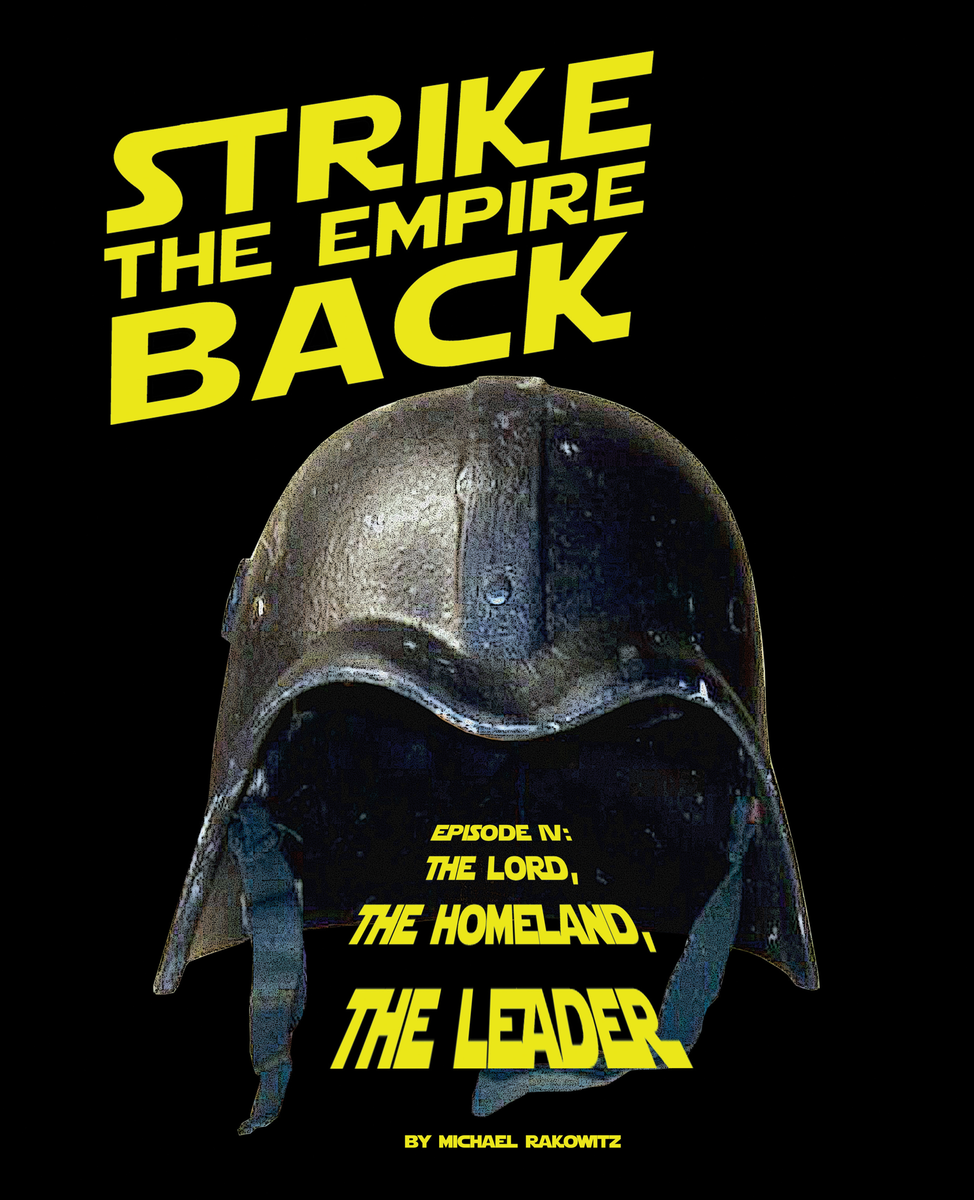
For many of us, the parched desert expanse of Dubai represents the most extremely fantastical site for experimentation. Herein lies the future of architecture, the future of urbanism, the future of the future. In hopes of tracking the evolution of this brave new word of design, Bidoun asked some of the world’s leading architects — all under the age of twelve — to propose projects for these pages. In the belief that the midget dreamers of today will build a bigger, better tomorrow, they had no parameters within which they had to work, no limitations to speak of.
Drawings were made at a workshop with UAE-based architects and artists, held in October at Third Line, cohosted by Bidoun and Start, the arts-education charity.
Bader Baroudy
6 years old
Arbrata
It’s a hotel and office. Blue is the lake and the orange circle lowers and goes up and down to give you shade. There are willow trees because they give you shade too.
William Heintz
3-and-¾ years old
The Chocolate Factory
Chocolate makers use the factory to make chocolate and they give it to me.
Sabeena Anjali Sheth
8 years old
Octowarium
This is a house of fish, sharks, dolphins, and octopuses and people run around inside the octopus park. The design is an octopus on top of a shell.
Maxim Podgore
4 years old
Robo-Palm
This is an island for robots where they live and relax after work.
Katya Mira Sheth
11 years old
Tiger Zoo
People and animals come to the zoo to watch the animals and the water show. The whiskers are the viewing balconies and the tiger’s stripes are windows. You stop the animals eating the people inside with glass walls. It’s going to be built in Sharjah and the restaurant in the nose.
The shelter was the living room of our home in Jbeil; it was chosen because its east, west, and south sides were shielded by the bedroom, my uncle’s apartment, and the kitchen, respectively. The north side was secured by a wall of oil barrels filled with sand and gravel. The shelter was equipped with a UPS (uninterruptible power supply) system, hooked to two 24-volt truck batteries. This system provided enough electricity for the lights, a small refrigerator, and a color TV set with integrated radio and cassette player.
We were ready for anything Lebanon had to offer.
I even remember discussions about the possibility of keeping the fridge cool by powering its heat pump externally with a gas burner in the event of an emergency.
So we were definitely ready.
But nothing much happened in Jbeil. My father’s ingenuity protected us from nothing. And yet our shelter played a small but pivotal role in a defining moment of my young life.
On June 29th, 1986, our neighbors gathered in our home-war-shelter. The electricity had gone out, and our shelter had the only battery-operated color TV in the neighborhood. Argentina and West Germany were facing off in the finals of the World Cup. It was my first World Cup final; the first time I placed a bet; the first bet I won.
It was Argentina, 3, Germany, 2. I won 25 Lebanese Liras.
There were a lot of people in the small shelter; the window was sealed off with the barrels. It was a set-up for a great olfactory experience; the smoking, the food in the fridge, the coffee, the tar-gravel-sand barrels, battery fluid, sweat… but the most overpowering smells, the ones that remind me the most of our shelter and of the war (which finally made a brief appearance in Jbeil in 1989–90), derived from three Chinese products with which our house and shelter were also equipped:
Mermaid baby powder,
Katol spiral mosquito repellent,
and Ma Ling pork luncheon meat.
There always will be something about the smell of a freshly opened Ma Ling, the acrid smell of a burning Katol spiral, a cloudy whiff of Mermaid baby powder. Maybe it is the chemico-biological agents used in their manufacturing? In any case, no matter how many times I spilled the powder all over the room because of its defective cap, how much mosquito repellent I inhaled to the long-term defect of my respiratory system, or how often I cut my hand opening a tin can of luncheon meat, these things and their smells have always made me feel safe.
I swear I always thought that Katol was made in China. We all did. It had Chinese text on the box! As it happens, Katol, also known as Tiger Katol, Lion Katol, and Tiger-Lion Katol, was a Filipino product. It still smells the same.
In 1981, A Washington, DC, Punk band named Minor Threat released a song called “Straight Edge.” The lyrics, as barked by the lead singer, Ian Mackaye, delivered an unequivocal rebuke to punk-rock hedonism:
I’m a person, just like you
But I’ve got better things to do
Than sit around and fuck with my head
Hang out with the living dead
Snort white shit up my nose
Pass out at the shows
The song lasts all of forty-five seconds, barely enough time for two verses and a chorus that sounded like an unlikely rallying cry: “I’ve got the straight edge!” The name stuck, and in the next few years “straightedge” emerged as a kind of punk-rock temperance movement, a teenage rebellion against old-fashioned teenage rebellion. As MacKaye sang in a different song: “[I] don’t smoke / I don’t drink / I don’t fuck / At least I can fucking think.”
MacKaye always says he didn’t mean to start a movement. But for kids (as they were always called) all across the country, straightedge was a revelation, proof that punk could be (as the kids liked to say) “positive.” You might say that punk rock was moving beyond politics into ethics. Except that many of the straightedge bands that came up in the American 1980s weren’t particularly political. Uninterested in storming the barricades, let alone changing the world, straightedge kids created their own little worlds, which they called scenes. Many of them didn’t even identify as punk—they were hardcore, tough young kids who seemed a world away from the artsy ironists who popularized punk rock in the 1970s.
“Straightedge” didn’t necessarily mean “clean-cut”: there were hot-headed jocks, earnest activist types, and plenty of kids who were in it for the music, as well as the seductive air of (very) righteous indignation. It was, in a sense, a whole movement dedicated to extremism in defense of virtue… and yet one band of extremists found a way to make everyone else seem downright slack. They named themselves Vegan Reich. Their four-song debut included a foldout manifesto for a philosophy called hardline, which was not only straightedge and vegan but also anti-abortion and arguably anti-gay. “The time has come,” it began, “for an ideology and for a movement that is both physically and morally strong enough to do battle against the forces of evil that are destroying the earth (and all life upon it).” Vegan Reich’s sound was fast, bare-bones punk, with a hint of heavy metal, and it seemed to have been calibrated to incite maximum bedlam at concerts. The vocalist was a mixed-race shouter who delivered his rants with a little bit of melody and a whole lot of furious certainty. One song began, “Fuck you, shut your fucking mouth / We didn’t ask for your opinion” (although without the lyric sheet, it might have been hard to tell).
That shouter was Sean Muttaqi, a Southern California kid who took a circuitous route to straightedge; one of his biggest inspirations had been Rudimentary Peni, a caustic British anarcho-punk band. And with Vegan Reich, he helped make the world of straightedge a little bigger and a lot more complicated, delivering a confrontational message of abstention (from drugs, exploitation, and animal products) and all-around defiance. It wasn’t long before punks across the country were debating, mocking, or following Vegan Reich. There had always been conservative currents in straightedge, but some people who heard (or, more likely, heard about) Vegan Reich saw the band as evidence that the movement had gone beyond the pale.
Then, before they had a chance to release a full-length album, the members of Vegan Reich called it quits. Kind of. The same kids were soon playing a fusion of reggae and hardcore as Captive Nation Rising, which eventually morphed into a more traditional reggae band. For Muttaqi, it was just the beginning of an odyssey. He started a label, Uprising Records, which helped incubate the future pop stars in Fall Out Boy. He taught martial arts. And, after years of study, he became a Muslim.
Vegan Reich reunited and released a three-song CD, Jihad, in 1999. Another reunion is planned for this summer. But fans waiting for Muttaqi to launch an in-your-face Muslim hardcore movement will likely be disappointed. Instead of writing manifestos, he’s reading (and occasionally writing) scholarly articles, rethinking the history of animal sacrifice in Islam. He’s doing a lot of writing lately—he’s hard at work on a memoir about his “three decades of resistance.” And one night this past fall, with his wife and two daughters occasionally audible in the background, he agreed to talk about his long, non-linear journey from resistance to submission.
Bidoun: When did you first get into punk?
Sean Muttaqi: I think I first heard punk rock in 1979. We had just moved out of a pretty rough neighborhood, and I got exposed to skate culture and punk culture and got into punk-rock rebellion. If you look at the rebellious aspects of punk, it could go either way. Kids who had a rougher background, it kept them out of trouble. And kids who had a more middle-class, safe environment, it helped nudge them into trouble. I know guys from gang neighborhoods that left that lifestyle behind—they found punk and became peace-punks and vegetarians. Then you’d see them ten years later, doing the gang thing; the neighborhood took control again. And then, on the other end, I knew middle-class kids that became junkies because of punk rock.
Bidoun: What about you?
SM: Well, I came from a working-class neighborhood, but after we moved, I was surrounded by middle-class kids. It was probably a good move, looking back at it — my cousins are now in jail and stuff. [Laughs a little.] Coming into punk at that time and being in the skate realm, we were into Black Flag, Social Distortion, the Dead Kennedys. I was lucky to have grown up in Southern California in the heyday of that scene. I was barely going to high school. I officially dropped out when I was sixteen and got fully immersed into going to shows in LA.
We were very nihilistic, talking about destroying this and destroying that. The SoCal scene was violent. I don’t mean that in a negative way, it was just this energy you couldn’t contain. There was this chaotic perception among everybody. You’d have a group of friends, and one would have a Mohawk, and the other would have Dickies and flannel on, and you’d all be listening to Black Flag. Everyone was searching for these identities, but they didn’t see it as a separate thing.
But I was also hearing stuff from England — stuff like Discharge and the Exploited. It was a natural progression for me — coming from a working-class background and being surrounded by all these middle-class kids that I couldn’t relate to, and then suddenly getting access to all these British bands that were talking about class issues. For me, once I discovered class and leftist opinions and all that, I moved to the anarchist punk scene really fast. But then I would go to these anarchist gatherings, and I would see really bad personal behavior. I think that was the two worlds that collided with me, going, “Hey, we need to be more political — but politics isn’t worth treating each other like shit.” Even before I got into the anarchist punk thing, I’d gone vegetarian, although it took me a couple more years to find out about veganism.
Bidoun: When the members of Vegan Reich came together, did you set out specifically to be a vegan straightedge band? Or did that come later?
SM: No, it was a thought-out conception — I was looking for people to start a militant animal liberation band. This whole time I was interacting with a lot of different activist communities, and from out of that we formed a tight-knit community. We were causing a lot of controversy in the anarchist community, pointing out the contradiction of people demanding freedom for humans and oppressing animals at the same time.
People started jokingly referring to us as vegan fascists, so that’s where the name came from. The notion was, If you’re going to call us Vegan Fascists, we’re going to call ourselves Vegan Reich.
Bidoun: Your first record, Hardline, came with a manifesto that called for people to live in accordance with “the laws of nature,” and to eschew “deviant sexual acts and/or abortion.” That shocked — and pissed off — a lot of people.
SM: For us, as animal liberation activists, the abortion thing was about consistency. Our view wasn’t the same as the right-wing Christian view of abortion; officially, hardline wasn’t saying that if a women was raped, she couldn’t get an abortion. We were saying that you need to acknowledge that life is life. It was more toward the animal liberation group: If you say that a shrimp is a life, and you shouldn’t kill it unless you absolutely need to eat, at least view abortion the same way. It can’t be used as birth control — that was hardline’s stance.
The homosexuality issue — that was tied to different influences at the time. For one, having come out of this punk-rocker anarchist thing — a lot of times, homosexuality was a hedonistic thing for some people. In retrospect, those aspects were influenced by morals, not necessarily politics. There was a conservative moralism there, the notion that sex was for family.
Bidoun: Obviously the band used provocative images — like the famous logo with the two crossed machine guns — and stirred up a lot of controversy. What were the live shows like?
SM: Well, we had a lot of friends in our local scene, and it didn’t really matter what we were saying. But I think in different parts of the country you definitely had people shocked by us having this violent persona…. People from, let’s say, the Midwest, would be like, “These guys have guns!” But in California, we knew peace-punks who had AK-47s in their trunks. They were dealing with skinheads and all sorts of other things.
Bidoun: Did people come to your shows looking to fight?
SM: I think people were more intimidated by us. Sometimes we had shows cancelled because people would call the venue and say they were going to bomb it or burn it down if we played. There were situations where people were there with the intent of arguing, but it usually didn’t go much further than that, although we did have our fair share of fights.
Bidoun: Did you ever wish that you didn’t have all the extra responsibility that came with the name and the image?
SM: Ah, yes and no. There was never regret about having named the band that, or having done what we did. But clearly, by the end, it just became impossible for us to function. Clubs were refusing to book us. You couldn’t pick up an issue of [the punk-rock magazine] Maximum Rocknroll anytime during the nineties and not see some reference to Vegan Reich or hardline. We would book a tour, and we’d get halfway across the country, and it would be cancelled.
Separate from that, my involvement with hardline — I didn’t regret having started it or having done it, but I found myself not happy with where it was going. We started hearing reports of actual right-wing people in Europe who were interested in us. It had started out as a fairly diverse group of people, but it became more and more a very white, middle-class, right-leaning type of thing. The same thing had happened to straightedge.
Even once I left, I still kept in touch with people who were doing it. But I had started my own journey. To me, it just led to other things. I think that hardline in some ways was already highly influenced by my study of Islam and Eastern religions. What’s funny is that hardline itself helped me move on from there.
Bidoun: Were you guys making a living from music?
SM: Yes and no. We were living so cheap, I mean, the whole band was living together in this place that was, like, three hundred dollars a month. So we could go on the road when we wanted to, or stay home and write articles, do whatever. We were pretty much free, it was a great creative time. And I had always been into martial arts, so in the early days of Uprising Records, when it wasn’t a full-time company, I was also a martial arts teacher. I was always able to operate outside the normal sphere of the system.
Bidoun: In the late 1980s and early 1990s, some of the kids in the New York hardcore scene allied themselves with the Hare Krishna movement, which also promoted a straightedge vegetarian lifestyle. Were you ever intrigued by the so-called Krishnacore scene?
SM: That happened at about the same time as hardline. Well, we already had this radical animal liberation thing going on, which was in conflict with their reliance on dairy products. But I think it came down to their whole notion of reincarnation, and how that tied into social injustice and suffering. In my mind, that was what really created conflict between us and them. We don’t buy that. We don’t buy that people or animals are suffering because of something they did before. Most people thought it was a very positive thing, because they were vegetarian and did all these cool things. But it didn’t seem that positive to us.
Some close friends, some who were marginally associated with hardline, ended up getting into that, and they’ve sort of made that their lives — you know, going back to India every year, in the same way that being Muslim is a major part of my life, now. I have a better view of the Krishna thing than I did then. I still disagree with it, theologically, as a Muslim, but I have a positive understanding of it as a spiritual path.
Bidoun: Were you raised with any religious tradition?
SM: Not really. God was a sort of aloof concept.
Bidoun: So how did you first come to Islam?
SM: When I was younger, my dad would give me books, and he also exposed me to Malcolm X’s autobiography. In the same era that I was getting into punk rock, the Iranian revolution was going on, and it made a big impact. So I had an understanding that it was a religion of the oppressed. If someone were to ask, in 1983, “What are your views of Islam?” — my answer might not have been long, but it would have been, “Something against injustice.”
Really, my first journey through spirituality came through the martial arts. I became more exposed to Taoism and meditation. I was also exploring Rastafarianism, and through that I was exploring the Old Testament and studying Christianity. In some ways, Islam was a balance, for me, between those realms, between East and West. And I had known Five Percenters, the Nation of Islam, things like that. So I was marginally exposed to the imagery of Islam. But it took some years until I finally decided to delve in.
Bidoun: How did you make the decision to call yourself a Muslim?
SM: Part of the hardline movement was the syncretistic thing, finding truth where it exists. I still think that’s a good approach. But the danger is that if you just pick and choose from a bunch of different traditions, the end-all, be-all of your decision-making process is you. That wasn’t the mentality of hardline. We had certain standards that everybody had to abide by. But at the end of the day, the decision about what is or isn’t a moral decision — it’s yours. I really felt like I had to find something that had standards and rules, teachings that I could accept and follow. Because otherwise it’s too easy: You come up against something that you don’t want to do in a certain situation, and you can just change your mind about whether or not that’s okay.
That said, I also didn’t want to jump into someone else’s religion, a different culture, and not be able to do it all the way. Probably since 1990, I had been completely sold on Islam’s view of the nature of God. And by 1993, I was saying, I want to convert, but I don’t want to convert and bring in my own ideas that are in conflict with the broader Muslim community. I didn’t want to come in and start arguing with people. The vegetarian thing was the final sticking point. So I started a journey to see if I could find an actual organic Muslim community that had vegetarian views, that existed within Islam — not converts bringing vegetarianism to Islam. It took some time, but eventually I came across the Bawa Muhaiyaddeen community, which was founded by a Sufi sheikh from Sri Lanka who had come to Philadelphia. I found a community where I could still maintain my veganism. That was a more important issue then than it is now, all these years later. And I’m still vegan, personally, but I’m not out there trying to argue that the Muslim world should become vegetarian.
Bidoun: Were there other conflicts between your old hardline identity and your new Muslim identity?
SM: No. Everything else was pretty natural. I really felt at home in my own skin, in some ways more than ever before. In a lot of ways, having a really diverse background — we have a lot of mixture in my family, everything from Mexican, French, Arab, Irish, Sicilian, African, and Cherokee — it just all felt real natural. The cultural and ethnic aspects were put to rest when I embraced Islam.
Bidoun: How had you identified before?
SM: You know, by the time I was old enough to have that become an issue, the punk rock thing had taken over. But when we moved to a new neighborhood, I was always the brown kid. On the other end, I can pretty much travel wherever and blend in, because I have this look that’s in between. If I’m in Jamaica, Jamaicans think I’m Jamaican; if I’m in an Arab country, the Arabs think I’m Arab; if I’m in Mexico, they think I’m Mexican. But for me, especially when punk and hardcore started losing the sense of community and ideology, Islam gave me a place to feel comfortable.
That said, it’s not as if we’ve adopted Arab culture, either. At home we tend to eat Mexican food; for Eid we make tamales…
Bidoun: Are the Muslims you meet surprised or shocked by your punk-rock past?
SM: It depends. There are a lot of Muslims in America who were born here — they’re Muslim and very American. And if it’s an African-American Muslim community, there’s a similarity there, because I spent a lot of time in hip-hop. But if it’s a more immigrant community, people might be more shocked by my background. I’ve had conversations with people who had no idea — trying to explain what punk rock was. Or, even if they did know about it, they’re like, “How do you come to Islam through that?” But for me, it wasn’t so much of an issue, anyway, because I don’t really stand out: I don’t have tattoos, and I look like pretty much everyone else there. I knew some other people who converted to Islam out of hardcore, that are just covered — you know, neck tattoos and everything. Clearly in their situation, it’s something that comes up more, because people are asking about it. But for me, in general, they wouldn’t realize I was a convert.
Bidoun: Is there ever a thought in the back of your mind that you’re not the same as someone who’s been Muslim his whole life, and for generations back?
SM: I feel the same as any Muslim, born Muslim or not. But I think that within the community, it’s important to defer to scholars. Sometimes people that came out of hardline or hardcore and became Muslim come to me to ask about this or that. I’m not a scholar, but I might guide them to a scholar that would know. If you’re talking about politics, then, yeah, as a lay Muslim, I feel fine giving my opinion. And as to the issue of vegetarianism in Islam, I feel fine speaking about it, because I’ve studied and I have an opinion and I’ll express it. But even there, when there were younger Muslims interested in vegetarianism, we went to the scholars and got rulings from them saying that it was permissible. At the end, it’s important for people to have these people — experts — they can go to. But that doesn’t mean that everybody is going to listen to everything they say.
Bidoun: Did you spend time trying to figure out how to reconcile your love of music with your Muslim faith?
SM: There was a certain period where I was like, “I’m just going to back out of the music thing, period.” But after studying, and reading hadith, and consulting different scholars, I came to terms with music’s place within Islam as a halal activity. That doesn’t mean it’s necessarily acceptable in every circumstance. And there were definitely moments when I felt conflicted about it. But everybody has contradictions. Sometimes I think that maybe we’ll move the record label into doing Muslim stuff. But then, if I’m doing this the Muslim way, we’re marginalized. And doing the label as we do it has enabled me to put out Amir Sulaiman’s record — he’s a Muslim poet. Personally, it’s a compromise I’m willing to make, at least at this point. Now, I may reach a point in my being or my faith, where I say to myself that I can’t do this, I can’t compromise anymore.
Bidoun: When you talk about your life, it seems as if there is a lifelong fascination with the idea of orthodoxy.
SM: Well, I would add to that — I would say that I have had a fascination with both orthodoxy and heterodoxy at the same time. I’m always interested in studying stuff that’s on the fringes of different religious currents. I love the Boxer Rebellion and all these Kung Fu mystical cults that existed, that were not mainstream Buddhism or mainstream Taoism. But whenever I study heterodox movements, I find that there are certain weird ideas that are there because of a leader, usually some charismatic person, who wanted to make allowances for himself. So at the end of the day, I always find myself drawn back to orthodoxy.
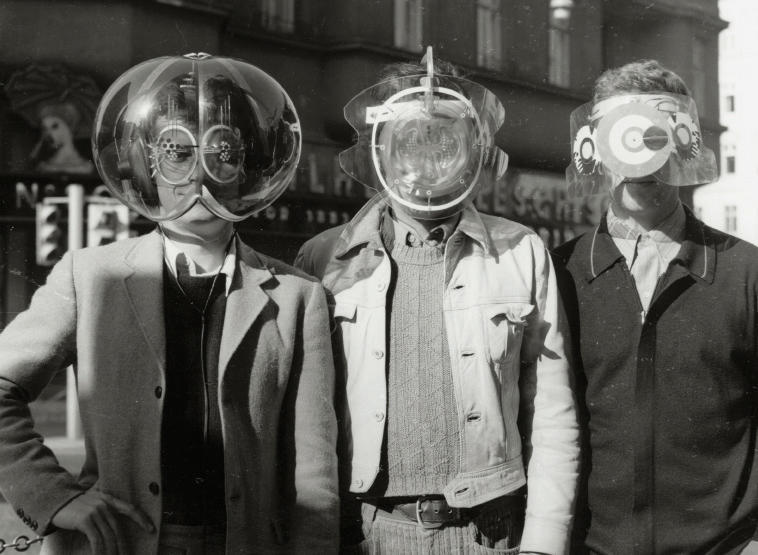
London
Cold War Modern
Victoria & Albert Museum
September 25, 2008–January 11, 2009
Nearly twenty years after the Berlin Wall fell and David Hasselhoff, dressed in a shining black leather jacket, sang his rousing anthem, “Looking for Freedom,” atop the wall’s graffiti-scrawled ruins, who would have thought that the Cold War might return from the depths of history’s crematorium? The mysterious poisoning of ex-KGB dissident Alexander Litvinenko with polonium-210 in 2006 seemed to augur the beginning of an “era of nuclear terrorism.” And Russia’s sudden invasion of Georgia in September of this year was a stark reminder of Soviet-style foreign policy. For those who remember the good old days when the world was neatly carved into “them” (the Commies) and “us” (the West), Russia’s saber-rattling at least provided the comfort of knowing who the enemy was. Unlike the war on terror, with its ambient fear and countless indiscernible enemies, Cold War Part II: The Revenge has unearthed many nostalgic supporters.
Unless the V&A has a fortune-teller working on its curatorial team, it’s unlikely that any of this was foreseen when the exhibition Cold War Modern: Design 1945–70 was commissioned some years back. Still, it couldn’t be more apt, as old-school enmities resurface amid the peculiar redrawing of our geopolitical map in these peculiar times.
“Would it not be better to compete in the relative merits of washing machines,” Vice President Nixon asked Nikita Khrushchev at the American National Exhibition in Moscow in 1959, “than in the strength of rockets?” A photograph shows the two of them, leaning against a mock-up of an all-mod-cons American kitchen, consumed by the gravitas of their topic. Life magazine pitted their respective wives against each other on the front cover: Pat Nixon was all smiles and svelteness; Nina Khrushchev, dour and sullen. Two years after the Soviets suddenly launched Sputnik into space, leaving America trailing in the space race, conquering the domestic landscape became the next ideological frontier in the US. But somehow, quotidian life on Planet Capitalism often resembled visions of outer space.
At Cold War Modern, there are a number of items drawn from the world of fashion, such as Steve Willats’s Mondrian-esque patchwork dress of zippable colored PVC panels, which wouldn’t have looked out of place on the Starship Enterprise. The Cold War had a scorching electrical heart and a lust for asymmetrical technological prowess. At the same American National Exhibition of 1959, Charles and Ray Eames presented a panoramic, seven-screen propaganda-lite film extolling the wondrous virtues of American life: freeways, sedans, suburbia, and skyscrapers. Two-and-a-half million Russians walked through the American National Exhibition and caught a glimpse of life on the other side of the Iron Curtain. World’s fairs and exhibitions like this were platforms for political one-upmanship expressed through the flashiest gizmos and the happiest WASP wives.

Millions of dollars of US government money was channeled via the CIA into avant-garde and popular art forms, most infamously abstract expressionism. The McCarthy communist witch hunts personified conservative America’s deep fear of cultural infiltration. Further afield in 1953, the US helped to found the Ulm School of Design in Germany. Headed by Swiss architect and designer Max Bill, Ulm was the natural successor to the Bauhaus, itself famously closed down by Hitler in the 1930s for its “degenerate abstraction” founded on socialist principles. Ulm produced some of the most exacting and austere functional design work of the twentieth century, ironically the very opposite of expendable American consumer culture that was bankrolling Ulm’s purist, anti-market fantasies.
Cold War Modern also tells us about the ways in which capitalism and communism fought over the moral ownership of the modern style. In the years between the October Revolution of 1917 and Stalin’s complete takeover in the mid-1930s, abstraction dominated Russian visual and decorative arts. Stalin derided this work as “formalist,” and mandated Soviet social realism, a hearty, populist traditionalism that included gigantic neoclassical buildings and heroic figurative statues. At times, artists wandered from the leader’s dictates. Cold War Modern shows, for example, breakaway work from early 1950s Yugoslavia: cool, geometric monochrome paintings and sharp angular buildings. When Tito rejected remote control rule from Moscow in 1948, freedom from Stalin gave rise to a new vivid modernism in Yugoslavia — it looked a little like Ulm, but, allegedly, represented opposing politics.
All these warped bifurcations of the “modern” and “traditional” aesthetic embody the inscrutable ambiguities of style. Capitalist free will or Stalinist secularism? You decide.
By the early 1960s, though, Khrushchev’s “de-Stalinization” process gave rise to a new era of tension between the two superpowers. The Berlin Wall went up and divided Germany’s capital in 1961, demarcating those who were eligible to have and those who were not allowed to want. During the Cuban missile crisis the following year, Cold War brinkmanship was pushed to an unimaginable extreme. Nuclear annihilation hung in the air. Stanley Kubrick’s searing satire Dr. Strangelove had at its narrative center an incredible (and wholly fictitious) US War Room, designed by Ken Adam. His stunning sketches are included at the V&A. Ken Adam — like Braun’s Dieter Rahms in the real world — was one of the great “imagineers” of the Cold War unconscious, bringing us unforgettable set designs for James Bond’s most grotesque (fascist/communist/corporate?) 1960s villains. Twenty years later, War Games would revisit Dr. Strangelove’s apocalyptic doomsday scenario with a breathtaking war room for the Reagan era. Unfortunately this example (one of my favorites!) is beyond the mandate of Cold War Modern.
But that omission aside, this exhibition is fantastically sprawling in its span of time and its scope of disciplines — art, architecture, education, fashion, advertising, propaganda, film, industrial and graphic design. Meticulously researched and sourced, Cold War Modern is an energizing, unapologetically dense journey through war by other cultural and consumerist means. Never have cups and saucers, record players, and TV sets borne such heavy social and ideological signification: everyday weapons of historical teleology. During those “cold” decades, the world was preparing to go in one of two diverging directions. Those who would design the future would by extension own the rights to it, too.
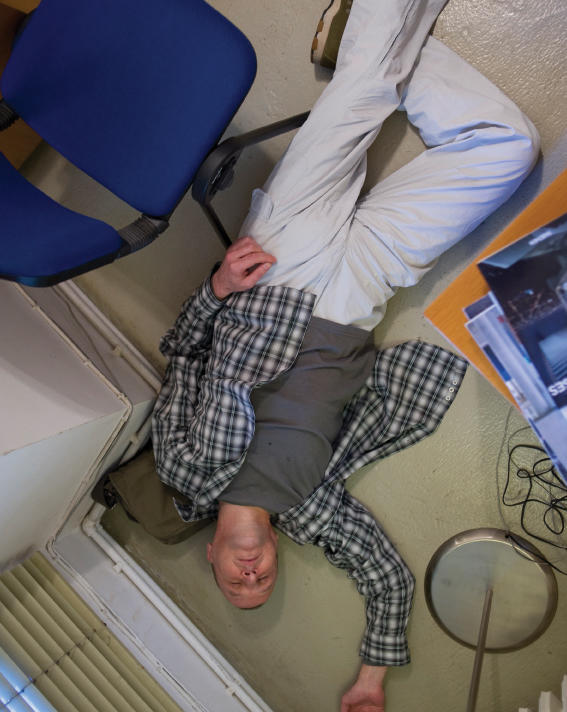
Istanbul
Human Conditions
Istanbul Modern
September 10, 2008–January 25, 2009
Four years have passed since Istanbul Modern opened with a show of political fireworks. In December 2004, Prime Minister Recep Tayyip Erdogan used the museum as a site from which to announce the first round of summit talks on Turkey’s European Union membership bid, and the space, sleek and modern as it is, has since been seen as a synonym for the country’s European ambitions overall. Still, the museum’s position in the city, both as an art space and as a meeting ground, seems far from clear.
Rosa Martinez, the museum’s first chief curator and a veteran of high-profile biennials, is gone, as is David Elliott, the museum’s director, who arrived in Istanbul with a three-year plan but left some seven months into his tenure. Everyone seems to loathe the permanent exhibition on the ground floor, which narrates the history of modern Turkish art (though some members of the public do begrudgingly credit the museum for telling such a story at all). When cruise ships the size of an office building aren’t blocking the view, the museum restaurant overlooking the Bosporus remains the biggest and most reliable draw.
The young museum’s brief history of temporary, rotating exhibitions has been shaky at best. Too many were merely exercises in recycling — shuffling in works from past editions of the Venice Biennale, greatest hits from the Istanbul Biennial, the history of Magnum photographers in Turkey, and so on. And while this fall a major show spilling through the main galleries, Held Together With Water, was full of great work, more than anything it may have managed to highlight Istanbul Modern’s questionable marriage of art and commerce (the selections were all culled from the corporate collection of Austria’s largest energy producer, which just cinched a deal with Sabanci Holding to create a joint venture angling for a major share of Turkey’s electricity sector). Where the museum seems to be making a critical dent, however, is with the smaller photography shows and video programs that are periodically on view in the far corners of the lower floor.
Human Conditions, curated by Istanbul Modern’s photography specialist, Engin Özendes (who seems to have the stomach to stick around), is a fairly simple yet unabashedly sprightly exhibition focused on the work of Sitki Kösemen on one side, Ergün Turan and Süreyya Yilmaz Dernek on the other. Özendes has taken advantage of the long and narrow configuration of the photography gallery to re-create the ambiance of a bustling street. The prints lining either side of the space give viewers the sensation of walking through a crowded causeway, which works, in part, because the series on the left, by Turan and Yilmaz Dernek, pays elusive tribute to the history and legacy of Ottoman-era street photography.
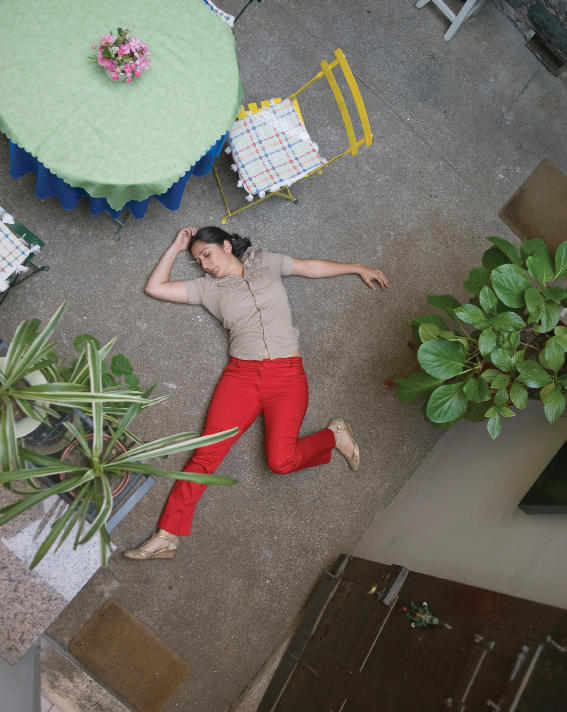
Turan and Yilmaz Dernek grab passersby in neighborhoods like Taksim, Bebek, Süleymaniye, Dolapdere, Üskudar, and Erenköy and have them pose in front of backdrops that commercial photographers typically use for souvenir shots. In these cases, however, the backdrops are blank; the subjects project their own identities onto the frame. As a result, the images are reminiscent of major archival portrait projects such as August Sander’s People of the Twentieth Century, and tinged with a Diane Arbus–style predilection for, well, freaks. Everyone is inherently “othered,” appearing eccentric or idiosyncratic, to the extent that Turan and Yilmaz Dernek thoroughly deconstruct the notion that there is any such thing as the Other at all. A disjointed text splayed out on the floor of the exhibition space — “Am I a stranger?” “Is my life mine?” — amplifies the universality of urban anxiety.
On an opposite wall are populated prints of a different sort. Kösemen’s series consists of large-format, full-figure portraits, but here all the subjects are themselves splayed out on the floor — on the pavement, in public parks, or spilling out of elevators. Everyone in the artist’s photographs is, in other words, playing dead. A picture of a young woman in an evening gown — eyes closed, hair tussled, limbs flung out in every direction — reveals Kösemen’s experience in fashion photography. But as a sequence of images, the works also bring to mind Guy Bourdin’s experiments with film noir, in which every studio setup resonated like a crime scene.
Perhaps the best part of the show, however, is the journal placed at the end of the long space. Here, viewers are asked to write a story that they imagine might lie behind an image. In Kösemen’s pictures, one must question, is the subject dead or just sleeping? Does the subject dream? Also, why did all of the photographer’s subjects agree to pose playing dead, whereas many, we learn, declined to pose more conventionally, standing up? In Turan and Yilmaz Dernek’s pictures, one must read not only the attributes of social circumstance — dress, posture, etcetera — but also the defiance, attitude, and intimacy of people’s expressions. The stories collected reflect not only the collective face of Istanbul but, as the title suggests, some sliver of the human condition as well. Özendes plans to use these stories as inspiration for a subsequent exhibition — which might not set Istanbul Modern straight but could make for another interesting visit.
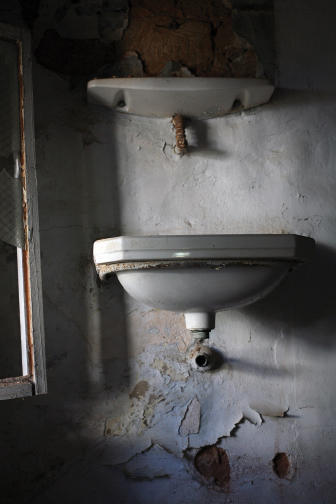
Beirut
Beirut Every Other Day
Sanayeh House
September 22–28, 2009
Perhaps the most important achievement of Beirut’s contemporary art scene in the last ten years has been the successful development of alternative models for the production and presentation of new work. In a city with only a skeletal commercial gallery system and no modern art museum or contemporary art institute, organizations such as Ashkal Alwan, Beirut DC, and the Arab Image Foundation have taken it upon themselves to give artists the space and time to create projects that are critically engaged and blissfully free from market pressure. But as these organizations have grown into institutions in their own right, and as the situation of contemporary art in the wider region has changed (particularly with regard to funding), the nimble and improvisational quality of these alternative structures has become harder and harder to sustain.
Enter the 98 Weeks Research Project, one of several new Beirut-based arts initiatives that is innovating the art scene all over again.
Established in 2007 by up-and-coming curators Mirene and Marwa Arsanios, 98 Weeks is a spaceless venture that emphasizes process over final product. For each research project, the Arsanios cousins choose a theme and then devote roughly two years to exploring it at length, through reading groups, symposia, conferences, conversations among artists, and workshops that are, in theory at least, tight, concentrated, and intense. Artists such as Tony Chakar and Marwan Rechmaoui have also had occasion to lead focused artist talks, which have been as valuable for audiences as they have been for themselves.
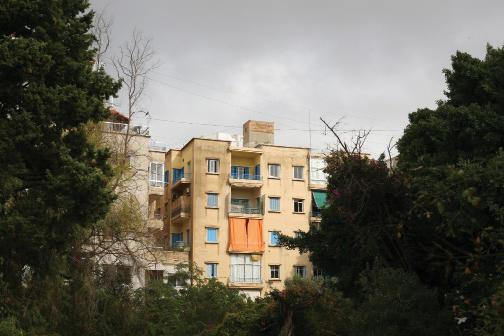
The theme or idea behind the first 98 Weeks adventure, Beirut Every-Other-Day, is the study of spatial practices — how a contemporary artwork can be generated from the exploration of a particular place; how one perceives, experiences, or inhabits that space; the social, political, cultural, or economic relations that such a space gives rise to; and the sensitive or subversive possibilities that are available to artists if and when they want to alter it. It kicked off a year ago with a public seminar led by Cuauhtémoc Medina, a critic and curator from Mexico City, on the work of the artist Francis Alÿs. This past September, the Spanish artist Lara Almarcegui, along with the Swedish curator Cecilia Andersson, traveled to Beirut to lead a workshop, entitled “The Ruin in the City,” with twenty-four young local and international artists. (In December Alÿs will be in Beirut for a second workshop, to be followed by a third in February with the Italian art collective Stalker.)
“The Ruin in the City” was almost painfully brief. Remarkable, then, was the fact that the public presentation of the workshop, held on a single day in Sanayeh House, a new art space located behind the eponymous garden, turned out to be extremely effective as a self-contained exhibition. This, of course, was no one’s intent. The point of the workshop was simply to provoke participants and get long-term projects off the ground, not to produce fully realized works. Yet somehow an accomplished show emerged.
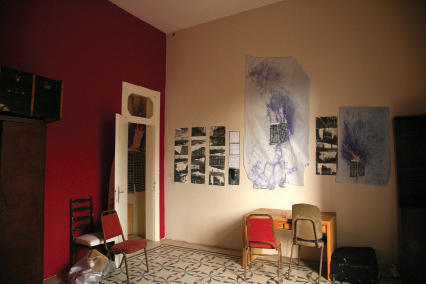
Eduardo Balanza, from Spain, interpreted the study of spatial practices to mean the discovery of a forgotten economy for Arabic music on cassettes and vinyl. He created a room-sized installation entitled Radio Cobra that was packed with promising ephemera related to Umm Kulthum, Farid El Atrash, and Martin Luther King, Jr., along with Jeff Chang’s Can’t Stop, Won’t Stop: A History of the Hip-Hop Generation.
Juliáno d’Angiolillo, from Argentina, produced a terrific video about the pine forest in Beirut, only small portions of which are accessible to the public. Franziska Pierwoss and Siska, both Beirut residents, conducted a study of neon signage in the city that yielded a surprisingly poetic slideshow, suitably installed high above viewers’ heads in the rafters of an abandoned room. Christophe Katrib spent hours and days hiding out (literally) in a derelict house situated in a thicket of woods overlooking the sea, incongruously located in the middle of Ras Beirut, and from the sounds and images he collected, made a stunning, at times haunting, work that speaks volumes about the push and pull, attraction and repulsion, beauty and horror of living and working in the Lebanese capital, or, perhaps more crucially, in any city suffering a surfeit of history.
Karine Wehbe, who has previously exhibited paintings and photographic montages, introduced a new project that may have epitomized the 98 Weeks work ethic. Taking as her starting point the urban carcasses of now-shuttered nightclubs that had provided the backdrop for Wehbe’s adolescence in the early 1990s, the artist provided a new twist to an old idea about collecting documents and constructing archives related to a specific place and time that has been largely forgotten or overlooked — not necessarily the civil war or the reconstruction, in this case, but the space in between. Through photographs both staged and found, along with newspaper clippings and oral testimonies, Wehbe considered how architecture and urban geography informed the wilder days of a generation lost between two highly polarizing eras.
Wehbe’s work, tentatively titled Jet-Set, and the workshop as a whole, set itself apart by using Beirut more as a site than a subject and by relieving artists of the pressure to work like their predecessors. The arrival on the scene of 98 Weeks seemed to be a sign that a new generation is ready to strike out on its own.
New York
Buckminster Fuller: Starting With the Universe
The Whitney Museum of American Art
June 26–September 21, 2008
It was on the coral island of D’Arros in the Seychelles Archipelago, in February 1978, that Prince Shahram Pahlavi of Iran, nephew to the last shah of Iran, convened a meeting of fifteen of the world’s foremost environmental advocates. Their task? “To develop a strategy for preserving the earth.” The Very Reverend James Parks Morton recalled of then-eighty-three-year-old Buckminster Fuller, “Bucky on the subject morning, noon, and night, was overwhelming.”
In addition to seeing him at our group gatherings, which Bucky dominated, I met with him privately… I asked him how we should continue building New York’s Cathedral of St. John the Divine for the solar age.
By the time we left D’Arros, Bucky… had volunteered to plan with me over the next few months how to complete the cathedral as a vast solar bioshelter to export solar energy to the local community.
The great polymath Fuller visited Morton some months afterward and delivered a sermon from his pulpit, expounding on the idea at length; but in the years that followed, the plan was substantially reduced in scale. Today, St. John the Divine, the church of Morton’s parish, is still under construction, though its present design doesn’t call for the bioshelter conceived on D’Arros. At the time of Morton and Fuller’s meeting, mass demonstrations were already underway in Tehran. In a little less than a year, their host, along with his uncle, would be exiled from Iran.
The D’Arros episode brought together a number of set pieces from the Fuller drama, as typically staged by his critics — the speechifying, the starry-eyed client, the big zilch at the end. In this instance, however, there was the added intrigue of a political environment so grave and (in hindsight, at least) so obvious, that it turned the whole production into a farce. There was Bucky, scheming under the banyans as the world burned! Known as a visionary in the fields of design and engineering, Fuller was afflicted from childhood with bad eyes, and perhaps his shortsightedness extended to politics, as well.
That’s a serious charge: Fuller’s reputation as a technological utopian, his counterculture cred in the 1960s, even the common gripe of his detractors that he was too ambitious, all have rested on the presumption that Fuller was, if not strictly engagé, at least an authentic radical. But what if the famous revolutionary wasn’t revolutionary enough?
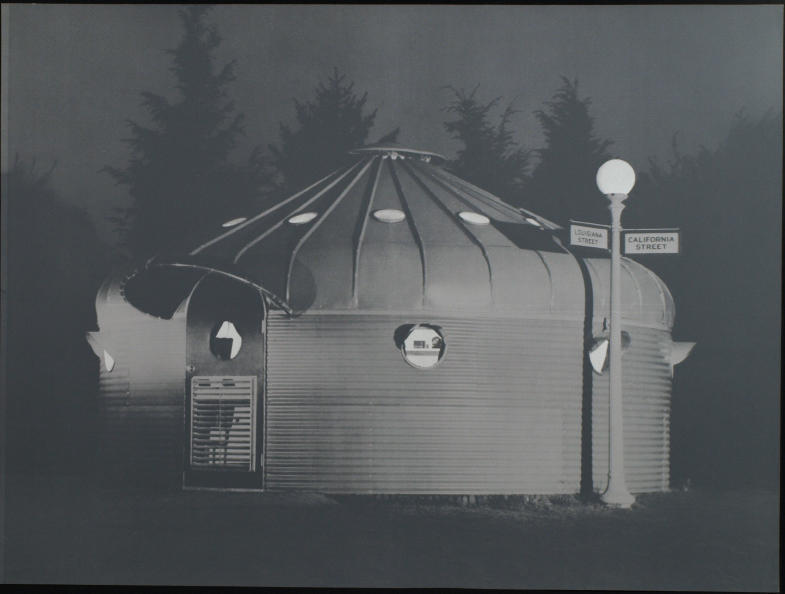
That Fuller rarely paused to consider the possibility of a meaningful resistance to existing political conditions shouldn’t be news. Still, architect and critic Felicity Scott, in her recently published Architecture or Techno-Utopia, makes it a revelation: Scott perceives a politically regressive paranoia at the heart of Fuller’s world-saving project. It’s an important point, too, because it upends the prevailing arguments both for and against Fuller — all of which have become rather tiresome. Fuller is one of those cyclical saints to whom architects start praying once every few years, only to be forgotten again. Right now we’re witnessing one such turn of the wheel.
The latest Fuller moment began, by rough estimate, in 2006, around the time of the exhibition Best of Friends: Buckminster Fuller and Isamu Noguchi and was sustained by the recent environmental fetish in architecture. It came to a head this past summer, with Fuller shows at Max Protetch, Carl Solway, and Sebastian + Barquet galleries and a series of events at the Center for Architecture in New York; it reached its apex with the exhibition at the Whitney Museum of American Art, Starting with the Universe, which closed September 21.
Many of the works on paper at the Whitney were splendid: early graphite plans for the proposed Dymaxion Dwelling Machine; a screenprint of Fuller’s Synergetic Building Construction system, featuring the design schematics against the background of a New York streetscape; the Harlem Redesign of 1965, giant cylindrical pylons spaced at intervals over Upper Manhattan, manifesting the mutual influence between Fuller and Louis Kahn. There were a few surprises, as well, in particular a Collector’s Room designed for architect Ely Jacques Kahn (no relation to Louis), whose relationship with Fuller might warrant further study. But too many drawings and renderings took the life out of the exhibition, occasionally recreating the atmosphere of a taxidermist’s lab. There was of course the familiar MoMA Dymaxion House model, along with a Dymaxion Car from the Harrah Collection in the main floor gallery and any number of smaller models and structural elements besides. All in all, the show felt dutiful, relevant, and dull.
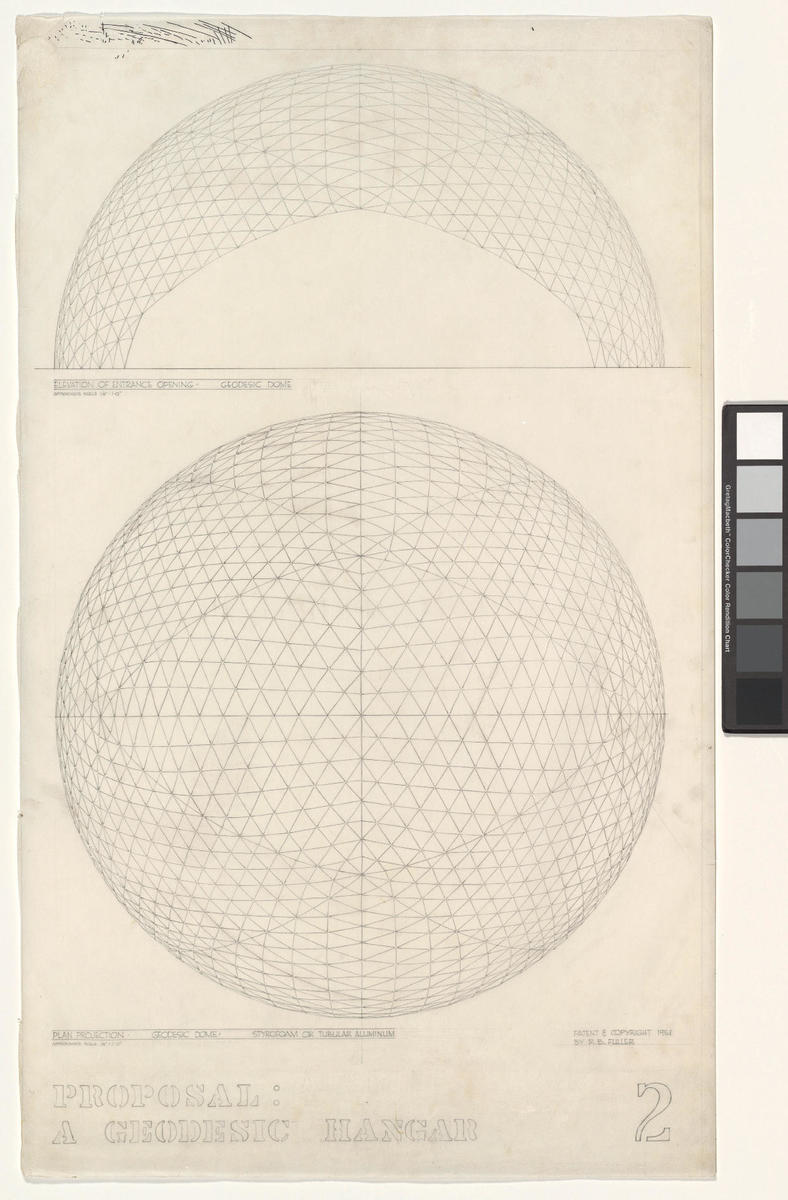
“Relevant” was the theme of Nicolai Ourossoff’s review for the Times, though he hardly confessed any opinion about the quality of the curatorial work. The Whitney got its kindest critique from Alistair Gordon of the Architect’s Newspaper, a reaction made only slightly suspect by the fact that Gordon’s most recent book is a celebratory volume on mid-century experimental design. The takedowns came, predictably perhaps, from the New Yorker’s Elizabeth Kolbert in an unflattering June 9, 2008, Fuller profile and from Martin Filler of the New York Review of Books in October, who not only tied Fuller and his chicanery to a lamppost but put the show’s curators, K Michael Hayes and Dana Miller, there as well.
Hayes, at least, probably had it coming. His essay in the accompanying catalogue is remarkable chiefly for its credulity. While Hayes recognizes that architects of today should not look to Fuller for “reflexivity… or radical cultural critique,” he doesn’t care to admit just how profoundly un-reflexive Fuller really was, or what repercussions that uncritical posture had for architects of his day or ours. Rather than taking Fuller for either a genius or a charlatan, we might, like Scott, detect in him a foreshadowing of some of contemporary architecture’s latent contradictions: its best minds wandering among imagined solutions conjured in idyllic isolation. They might as well be on D’Arros — in fact, they could be. The prince still owns the island, and it’s available for rent at $7,500 per day, all inclusive.
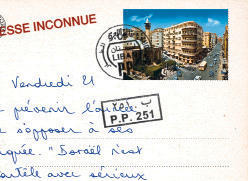
Dubai
Roads Were Open/Roads Were Closed: On How We Perceive Conflict
The Third Line
September 6–October 2, 2008
“Frankly, I don’t know why I’m in this show,” said Fouad Elkoury, at a panel discussion to launch Roads Were Open / Roads Were Closed: On How We Perceive Conflict. He had a playful glint in his eye as he spoke, but his comment nonetheless laid bare the fraught nature of such an unwieldy theme as “conflict.”
Of course, the artists in this show — Elkoury, Tarek Al Ghoussein, Joana Hadjithomas and Khalil Joreige, and Laila Shawa — are presumably all too familiar with their work being positioned in relation to questions of war, particularly given the proliferation of international group shows on or about conflict in Lebanon and the wider Arab world (a recent example was the Centre Pompidou’s The Anxious). Plainly, curator Haig Aivazian had set himself a formidable task: to present this work in Dubai in all its complexity without reducing or creating an uncritical normalization of the theme.
Supplementing the exhibition with a film series (which included Hadjithomas and Joreige’s A Perfect Day, Annemarie Jacir’s like twenty impossibles, and Ghassan Salhab’s Beyrouth Fantome), as well as a series of talks, was one strategy. Aivazian crafted a space in which to ponder the multiple meanings that could be engendered by the rubric of conflict. In an accompanying essay, he described how the exhibition aimed to lend itself to a diversity of experiences, by setting out to examine the way cities at war become cities in flux and experiential in nature; the artists, he wrote, “look[ed] to address the politics of accumulation and distribution of information as well as the complexities of how we live and perceive trauma, and how we come to piece together our memories of it.”
The exhibition went some way toward achieving its aims. Elkoury’s On War and Love, a daily diary set during the 2006 war in Lebanon, hung opposite Hadjithomas and Joreige’s Latent Images, a set of contact sheets that, instead of images, displayed precise photographer’s notes describing each image in rolls of undeveloped film. Latent Images was a part of the artists’ ongoing project Wonder Beirut, which includes a series of postcard images of the city, ostensibly taken before the civil war by the (fictional) photographer Abdallah Farah and gradually disfigured and burnt to reflect the mounting destruction of the city.
The contact sheets formed an intimate narrative arc. Covering the period 1997–2007, they took in national events (demonstrations, the 2006 war, the death of journalist Samir Kassir) as well as the purely personal. They were dryly melancholic and witty, relating the end of an affair through billboards advertising cheesy albums, for example. Wholly absorbing yet at the same time oblique, they seemed to propose a test of visual memory or imagined recall.
Elkoury’s diary was more personal and direct, albeit with the same mix of sadness and droll humor. Its images began in Beirut on July 13, the eve of war, and continued to Amman and then Istanbul, where Elkoury met his girlfriend. Gradually his doomed relationship appeared to subsume the daily goings-on of the war. Each entry was written on a photograph or series of images, occasionally as a caption but more often on the images themselves, following the line of a bombed bridge, a bare arm, a window, and the icing on a cake, for example. Together they formed a meticulous yet playful storyboard, intimate and full of pain, yet never mawkish.
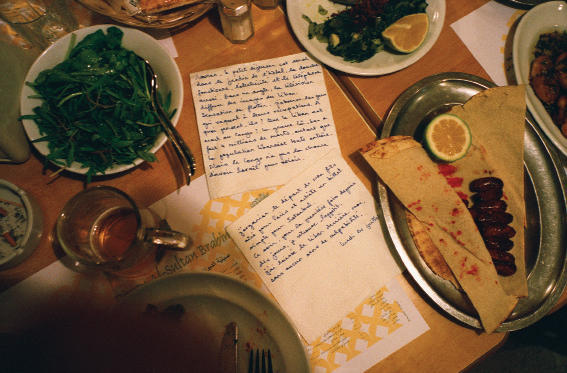
While in previous work Elkoury had set stills to film (in Letters to Francine, for example), here he reversed the process. The artist worked as a documentary photographer during and after the civil war, and it was tempting to see this work as the end of an affair with Lebanon as well as with Elkoury’s girlfriend. But the glibness of that reading would have obscured the work’s play on narrative, hindsight, and the layering of perception and memory.
Elkoury appeared to rely as much for news of the war on dinner party discussion and taxi drivers’ opinions; Hadjithomas and Joreige’s photographer documented events but wove in minute observations and his own personal narrative.
Tarek Al Ghoussein’s large-format photographs of walls, taken in the UAE, implicitly referred to his Palestinian background and the Wall. The images were explicitly constructed and performed and exactingly composed and printed. He built tension by focusing on his subject — the finality of the concrete, the heaviness of the barrier — and then dragging attention away from it, by studying the detritus of construction in the foreground or positioning himself alongside or between the walls.
For the most part, the exhibition succeeded in walking the familiar high wire, but there were occasional tumbles. In addition to three images from Ghoussein’s B Series (of walls) was one from the A Series, with the artist wearing a kaffiyeh next to some industrial gravel pits; it jarred in this context. Likewise jarring was Laila Shawa’s one-liner, Weapons of Mass Destruction (2002), an oversize slingshot of a wooden branch and taut industrial elastic, about to ping a boulder.
Roads Were Open was the kind of inquiry that would be ambitious in a museum, let alone in a commercial gallery. In the absence of any public arts buildings in Dubai, galleries like Third Line attempt to fill the discursive gap with organized debates, reading clubs, and film nights. Curators willing to engage with difficult themes — curators in general — are few and far between, and their determination should be lauded.
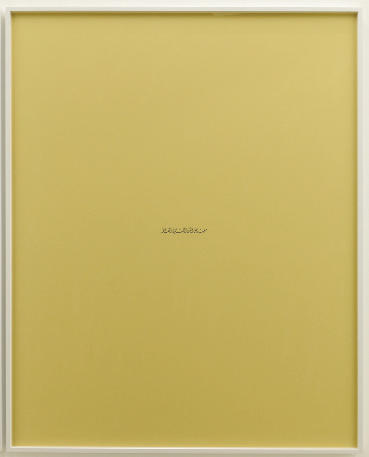
Beirut
Walid Raad: A History of Modern and Contemporary Arab Art
Galerie Sfeir-Semler
July 17–November 8, 2008
There is still no official word on whether Lebanon will return to the Venice Biennale in 2009 with a second iteration of its national pavilion. Such silence both confirms the exceptional nature of its inaugural outing in 2007 and openly questions the notion of national representation itself, particularly for a country still in the process of building a viable government some sixty years after independence. Politically engaged artists often question what Lebanon has actually achieved.
In 2005, Andrée Sfeir-Semler, the owner of Galerie Sfeir-Semler, with spaces in both Beirut and Hamburg, attempted to get the first Lebanese national pavilion off the ground with an exhibition of work by Walid Raad, to be housed in a structure designed by the architect Bernard Khoury. It didn’t happen, due in part to the assassination of former Prime Minister Rafik Hariri and to an assortment of other political disasters and intrigues, including a cabinet shake-up that saw one minister of culture come and another go.
A reference to that effort appeared in the form of a letter, blown up to the size of a poster, in Walid Raad’s A History of Modern and Contemporary Arab Art: Part 1/Chapter 1: Beirut (1992–2005), an exhibition that was hosted by Galerie Sfeir-Semler this past fall.
If the development of modern and contemporary artistic practices in a place like Lebanon is inextricably linked to the country’s recent political history, then Raad, in this new exhibition — which introduced a new, post-Atlas Group body of work — used the cultural sphere to consider how Lebanon’s past has traumatically affected its present. At the same time, Raad used the work of artist and theorist Jalal Toufic to insist on the impossibility of seeing, engaging, or representing that history, understood as a “tradition that has been withdrawn past a surpassing disaster” — in this case, the many wars and conflicts that have long plagued Lebanon and the region. Beyond the challenge of resurrecting a tradition that has been withdrawn, it is also necessary to grapple with the ethical implications of making history visible when it runs the risk of being immediately fed into a global art establishment, the market having recently taken hold in the region. Raad addressed these challenges directly; his new show also explored the spaces, names, institutions, and relations that constitute the art world as we now know it. Sfeir-Semler’s letter on behalf of Lebanon’s Ministry of Culture may have struck some viewers as an inside joke, but it was part of a larger inquiry pondering how certain materials have come to form the narrative of modern and contemporary art in Beirut. The extent to which Raad and a tight-knit group of his peers are implicated in that narrative, and in the formation of one narrative over others, lent the show an added layer of complexity.
This exhibition was the first chapter in what will surely unfold as a larger, more complicated project in the months and years to come. In considering how historical perspective is created, how critical distance is achieved, how art history is “shown,” and how near or far people need to be to make it, see it, understand it, or reject it, this project stands to be an important one.
To present his material, Raad, in his usual fashion, adopted a system of delineation. Different sections were presented in the gallery space like pages of a missing art history book — Preface: Title 23; Appendix XVIII: Plates, The Atlas Group (1989–2004); Museums; Walid Sadek’s Love is Blind (Modern Art, Oxford, UK); Index XXVI: Artists.
The show was divided along a central spine into two parts. On one side, works that were more spatial or sculptural in nature were installed in separate rooms. On the other side, a series of large-scale color prints were arranged in triptychs along the length of a long wall — Appendix XVIII: Plates.
The plates delved into an important part of Raad’s research — the information he gathered from primary and secondary sources about the creation of Lebanon’s national pavilion (the first, failed attempt and the second, successful effort); a series of indexes taken from international art magazines, journals, and catalogs dedicated to contemporary art in Beirut; title pages from real and imagined books on the subject; and an archive on modern Lebanese art compiled by the anthropologist and art historian Kirsten Scheid, who teaches at the American University of Beirut. But the information conveyed was nearly indecipherable. Some plates seemed magnified to the point of abstraction; others, such as Scheid’s archive, were reduced to total illegibility. The emphasis was on formal concerns, such as layout, typography, and color. The effort to grasp what was presented moved the viewer back and forth in a kind of game.
The same applied to the sculptural works. The Atlas Group (1989-2004) was an impressively executed mini-size mock-up of the Atlas Group retrospective held at the Hamburger Bahnhof in Berlin. The poetic détournement of Operator #17, who every day would redirect his surveillance camera monitoring Beirut’s seaside promenade to videotape the sunset, was projected onto a miniature screen the size of a postage stamp. The mock-up, often used to visualize the final execution of an exhibition, was presented like an open grave, demanding that viewers bend their heads in reverence. A note on the wall admonished: Do not touch.
Echoing the gallery, the mock-up raised questions as to how it differed from the space in which it stood. Rather than collapsing local and international settings — a white-cube private gallery in Beirut, a public museum in Berlin — Raad emphasized the asymmetry of spatial experience.
This show was Raad’s first in the region, and his first to take up art proper as subject matter. The performative, and potentially transformative, aspects of his multifaceted practice were replaced here by object-based works. If viewers were always reminded of their own physical presence, the silent echo of Raad’s missing voice also inevitably resonated. Self-reference and the continuous deferral of the critical questions at hand, reflective surfaces, physical limits, and the impossibility of accessing information certainly provoked reactions, occasionally enigmatic ones, but it did not make for an entirely generous or generative encounter.
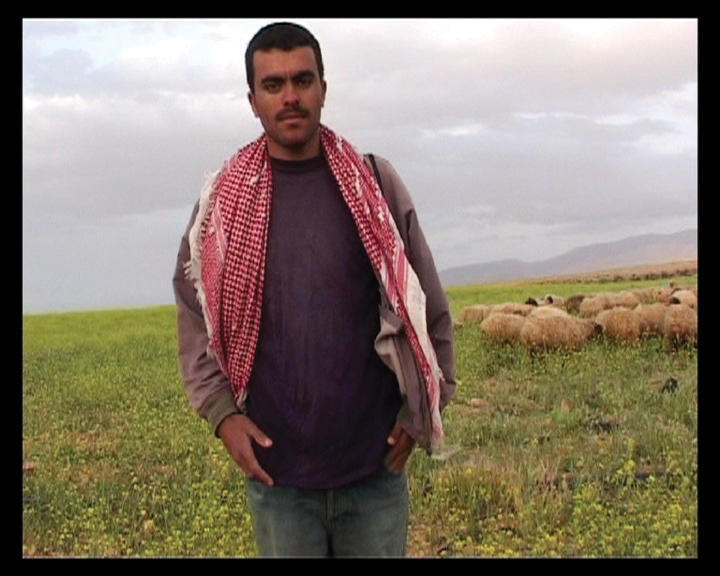
Taipei
Taipei Biennial
September 13, 2008–January 4, 2009
The opening of the 2008 Taipei Biennial coincided with international bank collapses, global stock market crashes, and the threat of Typhoon Sinlaku. So when curators Manray Hsu and Vasif Kortun described the biennial as a “community situation” and a “democratic process” exploring neoliberalism, globalization, and environmental disaster, they articulated some astonishingly timely concepts. The inauguration inspired an appropriately communal response to the curators’ ambitions.
Though the atmosphere could have been paranoid or pessimistic, the artworks spoke in optimistic terms, suggesting strategies of self-organization, DIY intervention, and anti-capitalist activism. And while the curatorial approach could have appeared fetishistic or naive, the exhibition worked, due in part to the fact that so many of the pieces — such as Lara Almárcegui’s successful procurement of a pledge to conserve an uninhabited island in Taipei’s Danshui River; IRWIN’s Neue Slowenische State, a state only in the territory of time, to which anyone can apply for citizenship and receive a passport; Superflex’s ongoing Free Beer project, in which the beverage is accompanied by an open-source recipe and branding rights available for anyone to use — were already conceived to challenge opinions and models considered acceptable in the public domain. So while other large-scale, politically orientated exhibitions — Documenta 7, the 2007 Istanbul Biennial, and the 2007 Venice Biennale — have lately taken a classical documentary approach, Taipei 08 did not shirk the responsibility of literal intervention or the danger of appearing dewy-eyed in intent. It was motivated more by potential answers than by questions, and the works were not only more immediate but also actively involved in the issues at hand. They offered proposals of hope with attitude, irony, and even humor.
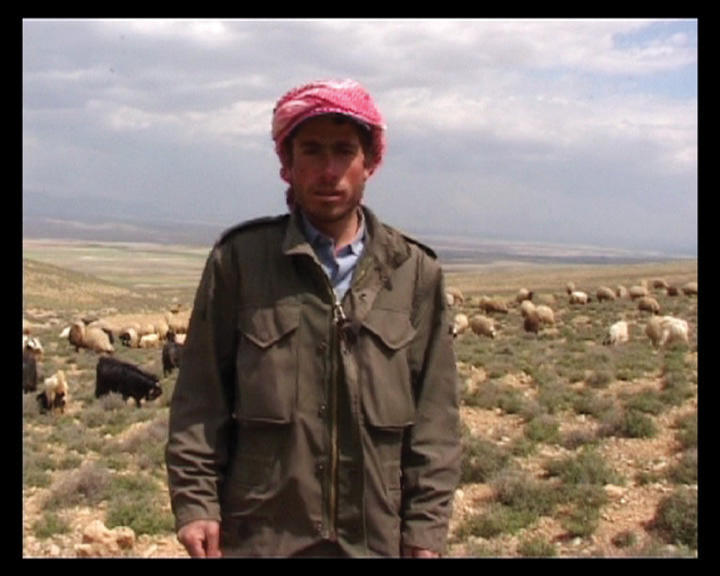
The exhibition was divided into three sections. The first part consisted primarily of commissioned works that referred specifically to local situations in Taipei. Among several references to migrant labor was Mario Rizzi’s film Chicken Soup, part documentary, part enacted observation, which traced the lives of two foreign women who arrived in Taiwan as bought brides. The women’s individual accounts were shocking; at the same time, they were narrated with unsettling acceptance. Between scenes, Rizzi flashed contradictory statements from the US State Department and Taiwanese dating agencies, pinning blame on authoritarian structures rather than on processes of individual disempowerment.
The second section proposed strategies of self-organization. Christodoulos Panayiotou’s slide installation Wonder Land explored a Disney Carnival staged in Limassol, Cyprus. A slide projector showed photographs found in the municipal archives of Limassol that were taken at different renditions of this annual event. The carnival condition, which should be a cause for celebration and liberation, was treated by Panayiotou as a sign of global cultural hegemony displacing local post-colonial history. In Roderick Buchanan’s I Am Here, footage of two marching bands from Glasgow, one republican and one loyalist, was shown on either side of a dividing wall (neither band would agree to participate if they were to be shown in a film together), and a pendulum edit ensured that their music never overlapped. By means of a similar dichotomy of space, Yochai Avrahami focused on two sites located between Jerusalem and Ramallah. Video filmed at the site and taken from satellite imagery was projected three hundred sixty degrees in a circular construction that resembled a well. The necessity of looking down on Avrahami’s footage positioned the audience as both tourist and spy.
The third section bristled with humor, thanks to Ziad Antar’s Tokyo Tonight, a video that playfully confused time, place, and extremely divergent economies. Shot in the arid landscape of northern Lebanon, the video showed a succession of farmers who approached the camera and simply stated the name “Tokyo.” Their script bore no relation to their context or activity, so that “Tokyo” became a reference to something both instantly recognizable and at the same time unreachable, a metaphor for much more than the city itself. Anetta Mona Chisa and Lucia Tkacova’s video of a provocative bedroom conversation, in which they rated various world leaders, all of them male, purely in terms of sexual aplomb, teetered on hilarious satire but was at the same time overly populist in its tabloid-style use of advertising language.
During the biennial, Oliver Ressler invited curatorial responses to the anti-neoliberalism theme by way of a symposium held under the heading “A World Where Many Worlds Fit.” Here, the momentum of inspiring propositions and exhibitions as democratic exercises flagged. The works presented were not diverse enough, and it was here that the Biennial’s dearth of artists and projects from Asia was severely apparent (during the symposium, there were none). The mainly documentary-based presentations of past actions also contributed to setting a tone like that of a members-only club. The one relevant question seemed to be: “Can such activist activity be disseminated by non-artistic practice?”
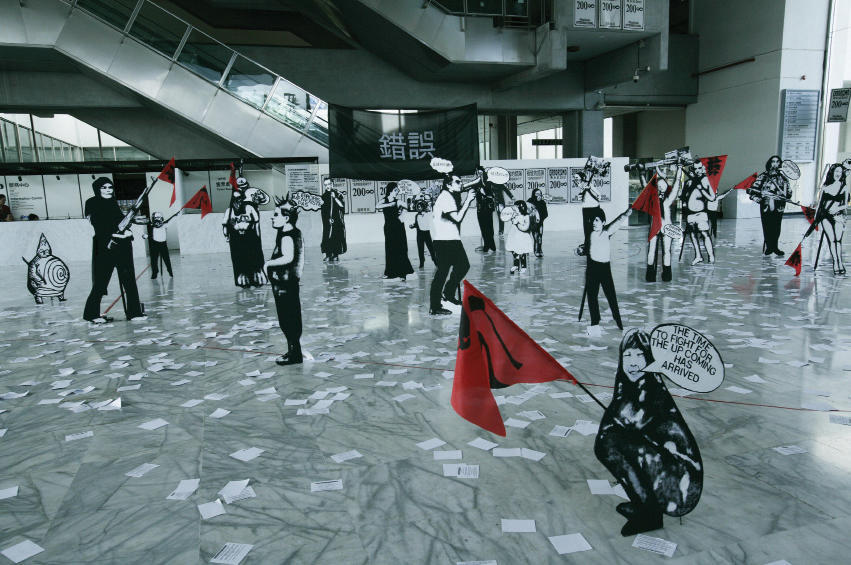
The differentiation, if there is one, between art and action, as well as the potential end of neoliberalism and the return to the local and the regional, fuelled a second, internal debate, which was entertained in a hotel lobby thanks to Sinlaku. The conversation also turned the notion of “democratic luxury” — a concept proposed by the late Hüseyin Alptekin that curators Manray and Kortun quoted in their opening gamut — inside out. Can the development of the biennial and its international criteria, which ultimately stems from the growth of a globally networked economy, now be read as a luxury taken too far? The opening days of Taipei 08 hosted a tight-knit group of artists who clearly experienced a democratic engagement with an exhibition. That, in and of itself, inspires hope that maybe art can change the world. The possibility to participate in the experience and to share in the communal dynamic was a luxury indeed.
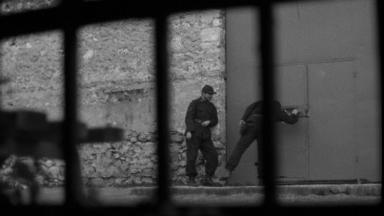
Paris
Pia Rönicke and Zeynel A. Kizilyaprak: Facing
GB Agency
October–November 2008
The film Facing opens in a wooded Istanbul park in autumn, with a middle-aged man walking toward us, thinking aloud. Then his hands, close up, leafing through snapshots of friends and events — the activist Turkish left of the 1970s. He ponders the possibility of making a film about that time, with those people — an exuberant film, a film we will not see. The remainder of Facing is a version of that film, set in a Turkish prison cell during the 1980–83 military coup, in which a younger version of the man is tortured but survives.
Adapted from the Kurdish writer and publisher (he also operated the banned publishing house Pele Sor) Zeynel A Kizilyaprak’s autobiographical short story “Knock… knock… knock,” Facing unfolds as the prisoner, Kadir, and another prisoner console each other in whispers through a tiny hole in a prison wall. Like Kizilyaprak, Kadir is a youth organizer and political prisoner. The other is an older man, affectionately called Uncle, imprisoned because of his faith. Kadir and Uncle take turns giving assurances and getting tiny glimpses of each other — the gap between the political prisoner and the religious one is too small for them to see and speak at the same time. Kadir and Uncle are tortured by unseen wardens for unknown, perhaps unknowable, reasons.
Facing is grounded in both Kizilyaprak’s memories of liberation culture and the echoes of that culture in contemporary Kurdish activism. To this context — in which a memory of radicalism meets a negotiated political present — Danish artist Pia Rönicke brought the oddly externalized apparatus of international art production. The fact that Facing was made at all feels miraculous, and credit goes to Rönicke, whom Kizilyaprak has described as something like a collaborative force of nature.
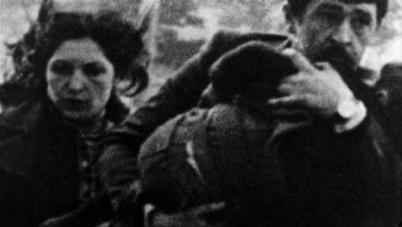
Kizilyaprak and Rönicke met at a party in Los Angeles while each was on an artist’s residency in October 2006. They developed a correspondence, and Rönicke eventually proposed making a film based on Kizilyaprak’s story. Rönicke is known for her installations about the social context of design, urbanism, and post-war architecture. With her topics ranging from the manmade environments of planned communities, to Rosa Luxemburg’s letters, to the family-run Danish design firm Le Klint, Rönicke’s films of obscured radicalisms have been foremost in her practice. Her encounter with Kizilyaprak introduced witness-bearing to research in the most generative of ways. Naively expecting a Hollywood production to tell the story of his near-murder by the state, as he describes in a diary of the shoot, Kizilyaprak instead scrambled for locations and gas generators on behalf of Rönicke’s fluid historicism.
The film is subtitled A Usual Story from a Nameless Country, a contradictory descriptor because it claims the broadest of ethical agendas, even though Kizilyaprak’s individual and literary testimony isn’t usual, and Kurdistan, if not a country, is no longer nameless. “Usual” and “nameless” also belie the cinematic qualities, the achievement in language and idea, that make this work such a striking event. Facing resembles European art films of the 1960s and 70s, like early Fassbinder and Bresson — spare films that are painterly in their pacing and literary in their plotting, with actors trained in the theater and cinematographers trained in black-and-white photography. Those decades are a visual and intellectual era invoked by Rönicke as a historical marker, a reference to political memory as well as a source of artistic inspiration. In the exhibition at gb agency, Rönicke showed the fifty-two-minute film and displayed production stills — the installation equivalent of lobby cards.
It’s not unusual, across the European continent, to hear discussions of Turkey’s prospects of joining the European Union, a national aspiration that has dramatically improved the situation of its Kurdish citizens as a precondition set by Turkey’s western neighbors. The popular attention drawn to its shifting political status within and outside of Europe is an awareness of continental statecraft that one encounters with Facing in the intimacy of a Paris gallery. Once again I find myself marveling at the phenomenon of galleries and museums as venues both of choice and of last resort for an enormous range of films and videos. With a handful of hard seats inside darkened rooms, miniature digital projectors with improvised sound systems, a non-paying audience free to come and go, and no definite start times to the screenings, we can wander into far more, and more extraordinary, time-based productions than ever before. This odd intimacy of the new material conditions of film-watching gets stranger as the films get better, as more and more artists become self-taught auteurs, and galleries persevere as boutique studios of films only saleable as limited editions. And so proceeds the memory of struggle, of liberation, and of strained times: a personal cinema in which one can say, as Kizilyaprak begins his story, “If I were a filmmaker…”
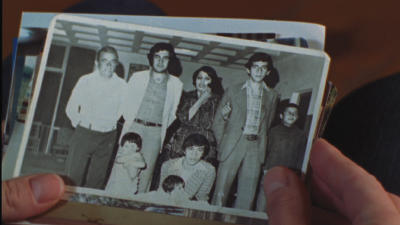
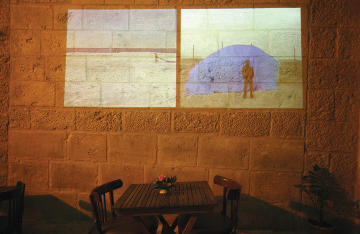
Jerusalem
The Jerusalem Show Edition 0.1
Al-Ma'mal Foundation for Contemporary Art
July 9–19, 2008
There was no permit to enter Jerusalem. Not for the Ramallah-based artist Inass Yassin, whose specially commissioned paintings were on view at the opening of this edition of the Jerusalem Show, and not for myself. Still, we were both adamant about going, and after much brainstorming, we found an imperfect solution: someone would have to smuggle us. According to Ra’fat the driver, we needed an ajnabi, or foreigner, who would be willing to play the casual game of “salute the soldier” as we drove into Jerusalem. We found one, a Mexican artist who, oddly enough, was here exactly one year ago, at the first Jerusalem Show. So it was our Mexican “smuggler” who got us in after all, with a litter of laughs and much, much anxiety.
On opening day, some two hundred people were crammed into the alleyways leading to the Al-Ma’mal Foundation, anxiously awaiting curator Jack Persekian’s signal to start the tour. Inass Yassin’s paintings, hung in the old gallery rooms, made it possible to accept the long walk ahead. Her large-scale canvases — landscapes composed of pastel strips layered over drawings of buildings, rooms, or even banal Washingtonia palm trees — were stirring. In each painting, there was a subtle trace of migrating birds, almost as if they were passing from one canvas to the other. The birds seemed to signal a movement away from the claustrophobia of the urban.
This year’s Jerusalem Show came with a subtitle: Walks in the City. We found ourselves following Persekian around on one of the many walks led by him and others. I like to think of Jack as the ultimate flâneur in this context. How do you deal with a place laden with doom except with a fine dollop of humor, combined with a patience that can only be born of familiarity? How do you navigate a place that shuns you?
Perhaps by using the space as a tool in and of itself, by positioning oneself, literally, within its confines and walls. Artist Manar Zuabi, for example, installed red cable wires in the cracks of the walls in the city’s Alleys of Kisses (Zqaq Al-Bos), in a piece entitled O’shb Akhdar Akhdar (Green Green Grass). Nida Sinnokrot invited us to take a phantasmagorical journey searching for his light installation Untitled Cracks, composed of fairy-like firefly lights that shone a brilliant blue. These lights were positioned throughout the Old City, within the cracks of the walls, and were truly difficult to locate — which only made the search more satisfying.
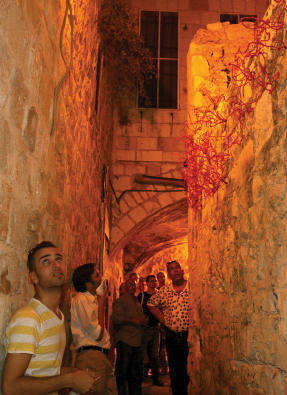
Another piece took the architecture of the city itself as a point of departure — Sulieman Mansour’s Introducing the Other. Last year, the artist took portraits of people from both the Armenian and African quarters; he wanted to place the photos of the Armenians in the African quarter and vice versa. Apparently the Armenians refused, for no clear reason. It was going to escalate into a feud, and a sulha (settlement) had to be arranged in order to contain it. This year’s episode was between the Syrian and Roma communities. As far as we know, no drama resulted.
Sophie Elbaz’s impressive photos allowed us to visit a place at two moments in time. In 1991, she came to the area and took images in the midst of the first Gulf War. In the show, she juxtaposed images of the place, one next to the other, in a series of diptychs, allowing for their contamination via organic bacterial processes. Located in the depths of an abandoned bathhouse, these banal images were distorted by time and the elements — a welcome riposte to the stereotypical nature of imagery as it tends to be evoked in this corner of the world.
Tarek Al-Ghoussein’s Blue Diptych was composed of three projections onto walls. In one of the images, a solitary figure was juxtaposed against a blue shroud or tent, while adjacent to that image were two expanses of open desert land. At some points, the central image altered to show the figure engulfed by the shroud. Emily Jacir, in the meantime, presented Untitled (servees), a daytime site-specific sound installation in front of the Damascus Gate, composed of sounds of the “servees” (service taxi drivers) calling to take people away, from Jerusalem to Beirut, to Amman, to Baghdad and even to Kuwait. Her installation couldn’t help but evoke nostalgia for a lost mobility, a jostle of memories and goosebumps. A toast to the long-gone cosmopolitanism of a forgotten mecca.
Likewise, Luchezar Boyadjiev’s work seemed to epitomize many of the artists’ insistence on a lost cosmopolitan. The artist literally provided cinema seats on the tops of buildings in the Old City, in order to turn the viewer’s gaze to other cities. In his site-specific installation A City with a View(s), one found oneself encapsulated by the city, entranced by its limitations, mysteries, and tragedies.
Unfortunately, many artists seemed intent on falling into the trap of pity and forgiveness. Artist Henrik Placht, for example, should stick to his wonderful paintings, depictions of light and color from Jerusalem, and offer no apologies. I am referring specifically to his piece Apology, in which he installed the words “We Apologize” in red neon light on top of an old building in the Old City. He also had the word “Sorry,” written in Arabic, Hebrew, and English, distributed as pins for visitors to wear.
All of these works provoked important questions: Can we move beyond pity/piety? Can we look beyond the exalted image of what Jerusalem was, or are we destined to revisit it time and again, whether for the allure or just for the view?
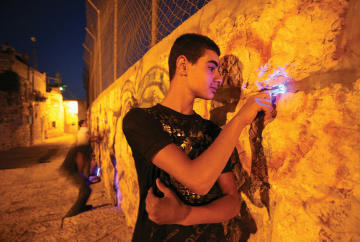
Maybe pilgrimages in a place like Jerusalem are doomed to be endless hermeneutic loops toward an imagined past, exercises in nostalgia. The Jerusalem Show Edition 0.1 at its best gave us the opportunity to revisit such claims and think aloud about whether we could work toward a new version of the cosmopolitan — a strange one in which the Mexican with whom we began this journey may hold all the keys.
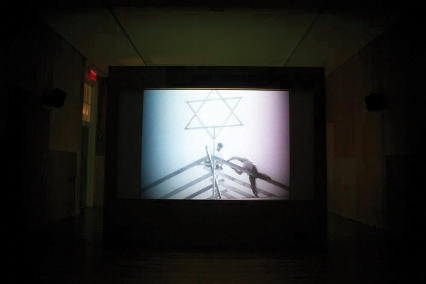
New York
Yael Bartana
PS1 Contemporary Art Center
October 19, 2008–January 19, 2009
The 2001 video Trembling Time documents a two-minute pause for Israel’s war dead, as observed on a busy highway. Stretched to fill six-and-a-half minutes, the work is a slow-mo procession of cars that stop, start, and recede, from which ghostly figures emerge and stand silently.
Trembling Time was one of five videos featured in Yael Bartana’s recent show at PS1 Contemporary Art Center, organized by curator Klaus Biesenbach. Although all of these works had been exhibited internationally, this was the Israeli artist’s first solo outing in New York. The earliest of the videos included, Trembling Time introduced the central leitmotifs of the exhibition: time protracted, frustrated progress, shivers and pauses — Israel as a nation with, one might say, a “stuttering” sense of identity.
In Kings of the Hill (2003), men off-roaded their cars and trucks, maneuvering up and down dunes of sand and dirt. Others watched nearby, as if at an X Games event; a mother and daughter picnicked, unbothered by the exhaust-filled air. Although the work was understated, the machismo of the men, the tank-like vehicles, and the never-ending, slip-sliding, uphill battle — as well as the passive approval implied by the spectators — combined to form an undeniable and powerful metaphor.
The artist’s affection for slow motion and freeze frame as formal strategies was also evident in Low Relief II (2004), in which video of a demonstration had been manipulated to appear like a silvery relief. Installed on four small screens in a row, the images resembled a commemorative set of coins, the kind that celebrates a nation’s heroes — here, not just soldiers but protesters as well.
Bartana seemed to abandon her established conceptual model, however, in Summer Camp (2007), which was shown at PS1 as a double-screen projection in a large wood-paneled room. One side showed the artist’s edited, twelve-minute version of Awodah (1935), a Zionist propaganda film. It began with a man walking over rocky land, searching for a suitable spot to build, and ended with the construction of a village. On the other screen was projected Bartana’s 2007 video of members of the Israeli Committee Against House Demolitions (ICAHD) rebuilding the home of a Palestinian in the West Bank, which had been demolished by Israeli authorities. (This installation of Summer Camp was much stronger than its presentation at Documenta 12 in 2007, where Awodah was not included.)
Similarly structured, the two videos synced at times — in sound and image — such as when both showed a hammer pounding nails into a wooden beam. But the ICAHD video was primarily oppositional. While Awodah was in high-contrast black and white, with romantic shots of laboring bodies — a 1930s specialty — Bartana resisted aestheticization in her own color video. In the propaganda film, although a few Arabs could be seen (with goats and camels), the landscape appeared unbuilt; in the 2007 work, the plot of land was undeveloped because the Israeli state had destroyed it.
Summer Camp thus countered the Zionist mythology that led to the founding of the state of Israel, and the ideology that continues to underlie its relations with the Palestinians. There was nothing hesitant about the action onscreen, which, although workmanlike rather than triumphant as in Awodah, progressed forward to the resolution of a rebuilt home, constructed by Israelis and Palestinians together. The stutter was gone. But then, a final image: an Israeli police car drove by, silent as the hawk that earlier flew through the sun-bleached sky. As the looped videos repeated, so did the cycle of occupation and destruction.
Islam and the West: A Conversation with Jacques Derrida
By Mustapha Chérif
Translated from French by Teresa Lavender Fagan
University of Chicago Press, 2008
In the spring of 2003, Mustapha Chérif and Jacques Derrida sat down in Paris’s Institut du Monde Arabe and disagreed. Derrida had come directly from the hospital, having just been diagnosed with the pancreatic cancer that would kill him fifteen months later. Upon arriving he specified that “for anything else I would not have come.“
Chérif and Derrida’s discussion concluded a conference on relations between France and Algeria. There were excellent professional reasons for Derrida to have been invited, and excellent personal ones for him to have come. Over the course of the preceding decade, Derrida had increasingly turned to explicitly ethical questions of reconciliation, pardon, amnesty, and hospitality. The personal reasons related to Chérif and Derrida’s shared homeland, Algeria, and what Derrida had taken to calling his “nostalgeria.”
Islam and the West: A Conversation with Jacques Derrida is less the record of that event than a reflection on it. Instead of reproducing the discussion that was of such importance to Derrida, Chérif chose to replace his part of the conversation with what he “wanted to say,” “was trying to say,” “endeavored to express,” “attempted to explain,” “had been thinking,” and so on, while leaving Derrida’s responses tel quel. In every case, the reader can more or less make out what Chérif must have asked Derrida, but his lengthy asides interrupt any sense of “conversation.” In an apparent attempt to re-inject a sense of the event, he offers a smattering of narrative details, from how he felt when he saw the full auditorium (“I was immediately struck by how many impressive people were in the audience”) to how Derrida interacted with him (“He looked at me warmly,” “He responded gently, but firmly,” “He said to me with a mix of humility and vehemence”). Chérif’s choice of form — a hybrid of transcript and memoir — seems all the stranger given that his positions find such ample expression elsewhere in the book, in not one but two introductions, as well as in a conclusion and an appendix. (The English translation includes an additional introduction by Giovanna Borradori, making the structure of the book still more like a set of Russian nesting dolls, with a diminutive Derrida at the center.)
While Chérif’s manner of recounting this encounter tends to blur its contours, it does not efface all signs of their disagreement. Both as a scholar (he is a respected specialist on Islam and philosophy) and a politician (he has served both as an ambassador and as Algeria’s Minister of Education), Chérif’s goal, whether in conversation with Derrida or with Pope Benedict XVI, has been to check two sorts of excesses. On the one hand, he wants to combat the stereotypes of those in the West who see Muslims as practicing a religion whose essence is intolerance, which is misogynistic, xenophobic, anti-rational, pre-modern, and, at its core, violent. On the other hand, he wants to check the influence of those in the Muslim world so consumed by resentment, so angered by betrayal, or so blinded by faith, that they fall into fanaticism, practicing and preaching intolerance at times and in places where that intolerance leads directly to bloodshed. Chérif is the author of Islam: Tolerant or Intolerant? (2006) and has argued again and again for, well, tolerance.
That said, he does not argue for a secular society, either for his native Algeria or elsewhere in the Muslim world. Reason untempered by religion is something he sees leading to a devastating “de-signification of the world,” one that shakes “the foundations of humanity as it has existed since Abraham.” In its stead he advocates the “reasonable reason” he finds invoked, as he recalls for this readers, more than forty-five times in the Qur’an.
Derrida, however, had a different vision of reason and secularization. “I think that we must,” Derrida said, “consider as our primary task to ally ourselves with those elements in the Muslim and Arab world that are working to further the secularization of politics,” to which he added, “and to do so through and out of respect not only for the political realm and democracy, but also through and out of respect for faith and religion.”
The discussion between the two men does not, however, fall into the well-trodden path of faith versus reason, Islam versus Enlightenment. Derrida’s is indeed not the “reasonable reason” of the Qur’an, but it is also not a pure reason that would light up every darkness. Reason and knowledge are of paramount importance, he stresses, but they also have limits — and what lies beyond those limits is something a lot like faith. For him, reason, however reasonable, will never be able to provide us with a guide wherein each rational cause and effect can be calculated in advance. “If we simply knew what to do,” he says, “if knowledge could simply guide our actions, then there would be no real responsibility.” A responsibility worthy of the name involves a risk that can as little be covered by following the tenets of reason as by adhering to the dictates of religion. As a result, it always involves what he calls “a leap of faith.”
This play on words is more than mere play and points to the other point of disagreement between the two thinkers — a disagreement about the meaning of faith and its independence from religion. Chérif and Derrida have no trouble agreeing on the importance of tolerance, openness, patience, and courage, just as they have no trouble agreeing in their denunciation of the Bush administration and the fanaticism it has fueled. But they do disagree about the relation between faith and religion. Chérif is willing to go far in his positions, but not to the point where Derrida stands. Replying to Chérif’s concern that secularization will lead to a “de-signification of the world,” Derrida remarks that, “I don’t think there is any contradiction between political secularization and what you call life’s mystery.”
The line Chérif walks between secularism and a sense for life’s mystery is a fine one; it frequently leads him to choose airy declarations of the importance of openness over a sharpening of the points under discussion. His clearest, and nicest, touch, however, is one he saves for last. The cover of the French edition of Islam and the West shows Brueghel’s painting The Tower of Babel, presumably as a subtle gloss on Chérif’s parting words: “May the wheel of time not close us in, may the wheel of worldliness not crush our differences, may we not forget what is needed of us. For this to come about we must foster a shared awareness that the other, different from us, is indispensable to our lives. ‘If God had wished, he would have made of you one community. But what he wished,’ says the Qur’an, ‘was to test you through the gift of difference.’”
The English translator has a hard time with this final paragraph. The ensuing awkwardness is understandable; less understandable is the quotation from the Qur’an. French citation practices being different from English ones, the he said, she said, the Qur’an says, when they occur in the middle of a French sentence, are left inside the quotation marks (“Please, he said, translate this correctly” instead of “Please,” he said, “translate this correctly”). The English edition curiously fails to render this, leaving the reader with the impression that Chérif is quoting some unnamed person paraphrasing the Qur’an. But he is, of course, doing what he says: quoting the Qur’an. The passage in question (5:48) can be rendered as, “If Allah had so willed, He would have made you a single people, but (His plan is) to test you in what He hath given you” (Yusuf Ali).
Chérif chooses to call this unnamed thing through which God tests us “the gift of difference,” and thereby gracefully names the two central terms of Derrida’s late philosophy, “gift” and “difference.” In place, then, of the notion that difference exists, that it is a burden and a problem, Chérif emphasizes an idea that is at once more reasonable and more mysterious — that our differences are the most precious gift we possess.
Rice Pudding For Two
By Rehab Bassam
Arabic
Dar El Shorouk, 2008
Rehab Bassam’s new short story collection, Rice Pudding for Two, appears as part of Dar El Shorouk’s Shorouk Blogs (Mudawwanat Shuruq) series, which explores the worlds of bloggers and makes them accessible to general readers as print books.
Rehab’s blog is called Hawadit (Tales). One can deduce from the title that the site has been devoted, from its inception, to narrative. The style Rehab uses in her stories is peculiarly Egyptian, one increasingly found in the works of young Egyptian writers. It consists of a gushing torrent of words that treats the literary language as if it were colloquial and the ideas expressed as if familiar to all. It fashions its sentences with extreme nonchalance, so that expressions to which one might take exception are tossed in as though they’re part of normal speech that just happens to have become a literary text.
The impact of the blog form on these texts manifests itself in the stories’ content, Rehab having no compunction about making “I” the central axis of the book. She relates the adventures of this “I” with people, society, life, laughter, melancholy, her cat, her mother, her memories of being a little girl, her professional and personal reality, and how she imagines she’ll be when she grows older. Rehab tells us these stories, with their charm and richness of detail, to inform us of what she is experiencing and reading in the Egypt of everyday life.
Speaking of what it’s been like to publish a book after having been a blogger, Rehab says, “I treated my blog as my private writers’ workshop, where I could drill my hand and mind, and discover readers’ reactions… . Bloggers have managed to somehow liberate writing (and especially the writing of the young) from the demands and criteria of publishers, from the costs of publication, and even from the critics! Sometimes the blog is more real than the book, because, before the book, I would learn people’s opinions from their comments on what I was writing as I wrote, while the resonance and impact of a book are a bit slower.”
Rehab’s narrations rely on the flow of ideas and the evocation of illustrative examples, the ideas being presented in whatever form they enter the writer’s head. Her narrations respect coherence of topic and the axis of the tale but avoid delimiting it in time and space or by what precedes or follows, relying instead on an emotion that may link, for example, an event that took place twenty years ago to a poem published thirty years before that.
There is a special logic to the way in which the author makes verbal leaps from topic to topic, a logic that becomes easier to understand in the light of her great love for Alice’s Adventures in Wonderland. Alice is a presence in the texts as both observer and participant. Of her relationship to the novel by Charles Lutwidge Dodgson (better known as Lewis Carroll), the thirty-one-year-old author says, “Alice is my dearest love! I ask you now, is there another book in the world that contains so many words of wisdom and lessons for life? And with an entertaining story, and crazy characters? And pictures, too! It’s the perfect book, a magical mixture of wisdom and nonsense. I love Alice because I feel she’s like me and thinks like me, because she’s always asking questions and the questions she asks are strange, and because she has a cat!”
Rice Pudding for Two presents one with a rose-tinted view of the daily lives of the Egyptian middle class, a class better placed than others to find rosiness in life, situated as it is at a distance from the harshness of Egypt’s poverty and the constraints of its riches, a class that can savor Egypt without being suffocated or ground down by it. As one of its offspring, the author is adept at playing with news of the doings of the Dusky Land, which form the essence of her subject.
Today, Rehab works as a project manager and editor in the children’s book department of a major Arab publishing house and says it’s the most beautiful job she’s ever had. “My boss is always complaining that I enjoy my job too much.”
Rice Pudding for Two has been printed five times in one year. “The bloggers were very happy with me and for me, and the comments I heard most often during discussions of my book were ‘We’re very proud of you’ and ‘You’ve given us the hope that one day we too will be able to publish our stories.’”
Once the initial brouhaha over the book died down, “I went back to blogging without any fuss at all, as though nothing had happened. But I’d won a lot of new fans for the blog!”
The Turban & the Hat
By Sonallah Ibrahim
Arabic
Dar al-Mostaqbal al-Arabi, 2008
Throughout his career, Sonallah Ibrahim, one of contemporary Arabic literature’s most respected figures, has balanced a sense of outrage at the political and moral corruption permeating the neocolonial situation, against the subtler devices of literary writing.
In the novels Zaat and Warda, Ibrahim manages to bring a high-powered lens to the consciousness of two very different subjects — a middle-aged bureaucrat and housewife in Cairo in the early 1990s, and a revolutionary female Marxist guerilla in the mountains of Oman in the late 1960s. These are characters drawn in a precise manner, who somehow remain contextualized by the public events unfolding around them. This is no mean feat and was largely achieved through Ibrahim’s masterful utilization of a large amount of material — newspaper headings, advertisements, statistics, diaries fictional and actual — juxtaposed with his restless yet intimate observation of his subjects’ daily lives, in the kitchen, in a government office, in the faraway mountains of Oman. In these novels, one encounters a consciousness that is complex and autonomous as well as historically determined.
But in his latest outing, The Turban and the Hat, Ibrahim spectacularly fails to achieve that balance. Here he eschews his razor-sharp montage of the historical document to attempt producing one himself. The Turban and the Hat is the fictional memoir of an unnamed protégé of Abd Al Rahman Al Jabarti, the scholar and celebrated Azharite sheikh whose History of Egypt is one of the prime sources for the historiography of the French in Egypt. This protégé, like his master, witnesses firsthand the three years of French occupation at the turn of the eighteenth century.
Through our narrator’s diary, we’re introduced to Cairene society as it adapted to the region’s first experience with Western colonialism. The diary takes us from highly improbable events, like a torrid affair with Napoleon’s French mistress in Egypt, to the prison of the citadel; from the plague-swept battlefields of Acre to the offices of the French-established Institute of Egypt, where the protagonist works as a translator; and, of course, to Al Jabarti’s household, to which our protagonist belongs. Despite the range of events, one is mostly haunted by a growing sense of tedium as he endlessly sifts through accounts of their unfolding. One suspects that the reader’s inability to engage with the consciousness of the protagonist, our only source of access here, in any meaningful fashion beyond the rudimentary and well-rehearsed positions inhabited by the Arab political left, greatly damages the work.
Using the past to comment on the present has been a staple of modern and contemporary Arabic literature. It is also one of Arabic literature’s great limitations, forcing texts to rely on symbolism, restricting the possibilities of engaging with an Other, transforming all into shades of the contemporary self. It is therefore surprising that in a recent review published in a local daily, it’s this very trope that is praised by the critic. The novel is peppered with embarrassing instances, like claims that Napoleon once had plans to turn Palestine into a homeland for the Jews (which sounds to these ears like purely xenophobic fantasy). Comments about Egyptian national selfhood also ring false — this might have been a historical turning point where a sort of national self-consciousness was being forged; however, one finds it highly unlikely that declarations for national unity by the Coptic militia leader Yaqoub would have come out of the mouths of these eighteenth-century Cairenes. It is a tone that to a large extent manages to betray the very historical veracity that Ibrahim so strenuously strains for (a period piece in an almost cinematic sense — well-researched usage of names and turns of phrases, a wealth of geographical details from the period, and a font from the historical era). In the end, these lines seem more fitting to the mass-produced, feel-good nationalist dramas broadcast on Ramadan TV sets every year.
One has to acknowledge, however, that what makes The Turban and the Hat different from many of the historical dramas in recent Arabic writing is Ibrahim’s insistence on profoundly implicating the local order in its own downfall. Al Jabarti opens his own chronicle of the French presence in Egypt with a Qur’anic quote to the effect that it is only darkness that brings darkness upon itself. This is a sophisticated critique of the social system and especially its oppressive and exclusionary policies toward slaves and dhimmis — practices that are implied to be at the root of socioeconomic, and thus political, evil. It is also not the easy, oft-repeated mantra about the short-sighted corruption and weakness of Arab rulers that is the efficient disclaimer inhabiting any self-respecting hysterical patriotic text. But again, if this is a victory, it is one that Ibrahim the moralist, rather than Ibrahim the novelist, scores.
Our protagonist and narrator, who is Al Jabarti’s young apprentice and secretary, follows his master in keeping a diary of the events that unfold around him, starting with the Mameluks’ rout at the hands of the French and ending with their humiliating departure. He, however, draws an important distinction between his and his master’s practice: “The sheikh concentrates his writings on public events avoiding the discussion of private matters — I decided not to imitate him and I narrated my encounter with the slave girl.” By choosing to reveal the realm of the private, Ibrahim strives to produce a fiction that might possess more truth than the mere recounting of events via historical documents.
If only it were so. The stylistic limitations of the diary, especially a fictional one removed a couple of centuries into the past, leave us with a tedious recounting of one public happening after another. Although the protagonist’s affair with Pauline (Napoleon’s mistress) is recounted with lots of physical detail, the overall tone remains rather too literary. A tone that might have been acceptable in a novel becomes a problem in a diary because it detracts from the illusion of its being personal. Ibrahim fails to communicate the sense of urgency or wonder that that exotic relationship must have produced. The limitations of the form are most apparent at the end, where the protagonist’s sudden transformation into a nationalist activist rings false. For if our sometimes naive hero stands in for the prototypical colonial intellectual, a slow acquisition of a growing political consciousness is the arc he has to follow.
Still, the book is not without redeeming elements. And because the text that is produced is forced — being a personal diary — to reflect the consciousness of the subject, interesting (and possibly accidental) side effects are produced. When we note that horrific events like pogroms directed against the Coptic population, or the casual rape of a slave girl by our untroubled protagonist, are recounted coldly and almost casually, a potentially sentiment-free literary space becomes possible. The possibility of encountering the crystal-hard false consciousness typical of a self-serving member of a local intelligentsia becomes clear. If only this incongruity were pushed further, it could have yielded a more brutal and infinitely more engaging text.
East Coast Europe
Edited by Markus Miessen
Sternberg Press, 2008
East Coast Europe opens with a quote from Dr. Saad Bashir Eskander, the director general of the Iraqi National Archive: “Europe represents a tangible paradox: it unites us as much as it divides us. The Middle East has been ‘Europeanized’ and Europe has been similarly ‘Middle Easternized.’” It’s these paradoxes and attendant ambiguities that make this little book a timely and interesting one — for Europe, after all, is a space in flux, constantly in the midst of defining what it is, as much as what it is not. Where does Europe’s eastern border fall, anyway? When does geography become psychology? Why does the city of Mostar in Bosnia and Herzegovina boast a life-size statue of Bruce Lee (paid for by the German government, no less)? East Coast Europe tackles these questions and more, as one piece of a long-term project that started in the spring of 2008. Here, polymath cum editor Markus Miessen compiles conversations (HUO-style — he even blurbs the back!) with the likes of Marina Abramovic, Zdenka Badovinac, Sislej Xhafa, Taryn Simon, and even our own Lisa Farjam. Finally, East Coast Europe is printed as a handsome paperback, which makes it all the more worth your dime.
Prishtina is Everywhere
By Kai Vöckler
Archis Interventions, 2008
Lending a microscope to postwar Kosovo’s capital Prishtina, Kai Vöckler, along with Archis Interventions, identifies a phenomenon they refer to as “opportunistic urbanization.” Prishtina Is Everywhere is divided into three parts: a diagnostic investigation, prescriptive projects originating in workshops held by the Archis Foundation, and a concluding essay focusing on the problems of urban development without governance. The schematics are designed so that the crisis of Kosovo, post-1999, could be applied to the experience of any postwar country. Vöckler identifies the forces that propel “turbo urbanism” into the crisis seen in Prishtina repatriated refugees and employees of international organizations (Kosovo Force troops and United Nations workers) doubling the population and causing a grand-scale housing shortage. The solution to such a problem may seem an obvious one: build! Family members who fled the war send remittances to their families back home, funding this fast-paced urbanization. The discussion of turbo urbanism is divided into starkly defined sections, each complete with its own set of elaborate diagrams and photographs. Prishtina Is Everywhere is the first in a series analyzing urbanization in postwar countries.
The Book of Stamps
Edited by Jeffrey Kastner and Sina Najafi
Cabinet Books, 2008
Since their introduction in England in 1840, stamps have been the most heavily circulated images in the world, with governments issuing portraits of everyone from Queen Elizabeth to Colonel Sanders, Stalin to Mickey Mouse. A century after the adoption of stamps, artists began succumbing to “the subversive appeal of creating an unofficial version of a recognizable emblem of the state,” write the editors of this collection of artist-stamp projects assembled by the publishing wing of Cabinet magazine. Stamps had already been used to transmit hidden messages during wartime, and artists like Yves Klein (who produced an International Klein Blue stamp, which contained no data and indicated no value) and Robert Watts (who created stamps for the Fluxus movement) saw them as opportunities to intervene in a state-controlled system of representation. Drawing on this tradition, but recognizing the distance the internet has put between us and those thumb-sized collectibles, the fifteen projects in The Book of Stamps use the format as a canvas to explore issues of national identity, territorial dispute, global exchange, and portraiture. Palestinian-American artist Emily Jacir plays on the US government’s stamps “honoring” Native American leaders in her issue of Palestinian icons and “folk traditions.” Photographer Walead Beshty maps out the ruined Iraqi embassy in East Berlin — “a symbol of a former regime in a country that itself no longer exists.” Perhaps most germane is the project by Swedish artists Carl Michael von Hausswolff and Leif Elggren, whose issue celebrates the fifteenth anniversary of the imaginary Kingdoms of Elgaland-Vargaland, consisting of the border regions between all countries on earth.
Peripheral Visions: Publics, Power, and Performance in Yemen
By Lisa Wedeen
University of Chicago Press, 2008
In 1999, Yemen held its first democratic elections, delivering ninety-one percent of the vote and the presidency to Ali Abd Allah Salih, who had been the president of Yemen since unification in 1990 and of North Yemen for twelve years prior. By 2001, Salih was making plans for his son to succeed him in office. When asked by a reporter how he could justify such a position, Wedeen writes, he said that he was simply following the American model. Bill Clinton, he explained, was simply a muhallil, or “legal facilitator” — Islamic law dictates that if a divorced woman wants to remarry her ex-husband she must first marry a muhallil, an “interim husband who makes possible the return of the actual one.” He eventually reconsidered his approach, and won his reelection in 2006 with seventy-seven percent of the vote.
As its democracy has slipped into the rhetorical ether, the Yemeni state has faltered. Weaving together anthropological fieldwork, political analysis, and reportage, Wedeen argues that nationalism and democracy have failed to deliver any tangible benefits to the population; as a result, people have directed their desire for identity and community elsewhere, creating “other publics.” While this may seem like stultifying dissertation fodder, Wedeen’s attention to how politics is played out in dining halls and tearooms, her attunement to the way in which people filter conceptual structures through their daily lives, animates the material. An exemplary section of the book deconstructs the communal chewing of qat, a ubiquitous plant that supplies an amphetamine-like kick, producing mild euphoria and diminishing hunger. If electoral politics and a unified state have failed to provide Yemenis with a greater identity, qat-chews and the hours of conversation they engender offer an alternative understanding of “the substance of democratic practices” — or at least a good buzz.
Displaced Allegories: Post-Revolutionary Iranian Cinema
By Negar Mottahedeh
Duke University Press, 2008
There is precious little writing in English on Iranian cinema, outside of the work of Hamid Dabashi, whose 2001 book Close Up: Iranian Cinema Past, Present and Future is a touchstone. That book was foundational, with probing essays on the Iranian New Wave; the effort to develop a national cinema after the 1979 revolution; the country’s signature auteurs, Abbas Kiarostami and Mohsen Makhmalbaf; and the “perils and promises” of the festival circuit, which have both bolstered and deracinated Iranian cinema.
Mottahedeh’s book is a leap forward: foregoing general history and cheerleading, she presents a sober reading of post-revolutionary Iranian film, which she considers to be a sort of apotheosis of 1970s theories of the feminist gaze, thanks in part to the Islamic regime assuming a male spectator and proscribing voyeurism. The irony here is as acute as her argument is elegant. She deliberately, pointedly tracks the development of Iranian cinema and locates the kernel of its current state — Khomeini’s consideration of the nation’s “state of self-estrangement” in his last will and testament, due in part to what some would call “Westoxification.”
The state went on to encourage, and financially support, a cinema that produced a spectator severed from Western ways of looking. Kiarostami (the king of “philosophical long shots”) and Makhmalbaf (a maker of “commercial art films”) have since transported this cinema to the festival circuit, and their creations have begun to resemble “global” or “third world” film more than anything else. But, as Mottahedeh writes, “if color is what Iranian films are celebrated for, then so be it.” Color is not just a characteristic, but a strategy that undermines the typical Western cinematic discourse, which relies “on the conventions of realism as a coefficient of cultural truth.” It is refreshing to hear an actual argument about Iranian cinema, rather than an appeal that we pay attention. Mottahedeh’s book is not boosterism, but critical history of the enthusiastic variety.
Transit Tehran: Young Iran and Its Inspirations
Edited by Malu Halasa & Maziar Bahari
Garnet Publishing, 2008
Rare is the (English-language) book about Iranian art, film, or literature that does not, to some extent, position itself as a corrective to Western perceptions of the country. I imagine cartloads of these books piling up in the mailrooms of the secretary of state and the National Security Agency, their covers all issuing some version of the sentiment expressed in this quote from an anonymous contributor to Transit Tehran, included in the book’s introduction: “Iran is moving from something like a traditional society to something resembling a modern one!”
But here, that antiquated assertion is, thankfully, made superfluous by a wealth of stories, photographs, and essays reflecting on life in Tehran. One series of photographs with accompanying essay describes the creation of female police units. Upon graduating from the Law Enforcement Force Academy, one class was told by the police chief, “You’re the police, but you shouldn’t lose your maternal instincts and commit violent acts.” Then they were sent off, chadors, pistols, and all, on Special Guidance Patrols targeting women dressed inappropriately in public. Elsewhere, in an endearing, if overly earnest, memoir, a Tehrani rapper boasts of keeping a house party “going straight through the night,” pausing only for morning prayer.
Though the book spills too much ink reiterating the fact that life in Tehran is highly “paradoxical” — See, we’re a lot like you, but also not! — those tired assurances are eclipsed by the acuity and candor of the work as a whole, which shows the “paradox” to be a simplification of life in a place that, like all cities, can’t be characterized as belonging to one distinct or discrete culture or history.
White House Redux
Storefront for Art and Architecture
Control Group, 2008
In January 2008, Storefront, the art and architecture organization based in New York, sent out an open call for ideas: “What would the White House look like if it were to be designed today?” In the excitement of the forthcoming US presidential election, 487 projects were submitted from 42 countries. As an opening page of statistics reveals, the most popular option was for the White House to be rebuilt as a tower (31 proposals), while others opted for a gigantic media screen (23), painting it black, making it part of a network, taking it into the air or onto the water, and so on. The White House, writes Storefront director Joseph Grima, is “a complex, polyhedric and formidable… house above all houses”; rather than facilitating an entertaining diversion, Grima and company hoped the competition would “act as a trapdoor to a deeper reading of our surroundings, a way of questioning and re-evaluating the physical and cultural landscape.” A lengthy photo essay of the judging process by Marty Hyers sets the scene, followed by the projects themselves, including winners JP Maruszczak, Roger Connah and Ryan Manning’s Revenge of the Lawn, a surreal mix of texts, photos, animations, and architecture. This sets the tone: White House Redux is a glorious mix of architectural drawings, cartoons, photography, and earnest texts. A block of a book, printed on newsprint-style paper, and akin in weight to a public phone book, it’s good for dipping in and out of.

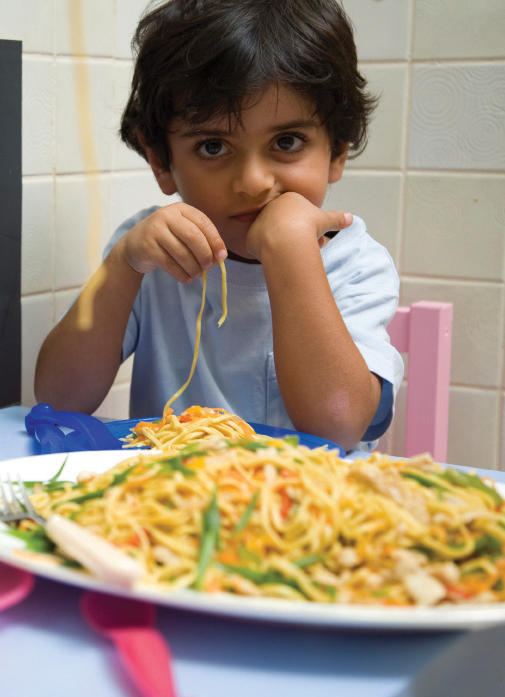
Ingredients:
(serves 4)
1 large chicken breast
1 package egg noodles
1 carrot
3 peppers (mix of colors)
1 onion
1 teaspoon garlic
1 tablespoon olive oil
1 tablespoon sesame oil
1 spring onion (for garnish)
Salt and pepper to taste
Preparation:
Slice the vegetables and chicken into thin strips.
Cook the noodles in boiling water according to the instructions on the package. Heat 1–2 tablespoons of olive oil in a large pan or wok and brown the chicken.
Remove the chicken from the wok and set it aside while you sauté the onion and garlic.
Add the sliced carrots and peppers to the wok, followed by a half-cup of water. Simmer for 5 minutes, then add the drained noodles.
Add a dash of sesame oil and season to taste. Sprinkle a handful of chopped spring onion on top as a garnish.

Ingredients:
(serves 4)
1 whole grouper fish
(approximately 300g, gutted)
For the marinade:
2 cloves garlic
¼ teaspoon chili powder
½ teaspoon lemon salt
For the tartar sauce:
½ teaspoon chili sauce
½ teaspoon soy sauce
Handful chopped parsley
5 gherkins, chopped in a blender
2 tablespoons mayonnaise
1 teaspoon white vinegar
Salt and pepper to taste
Preparation:
To make the marinade, mix together the garlic, chili powder, pepper, and lemon salt and use your fingers to rub the aromatic powder into the fish. Make diagonal incisions into the flesh to allow the marinade to penetrate the fish. Marinate in the fridge for at least 2 hours.
For the tartar sauce, combine the vinegar, mayonnaise, chili sauce, and soy sauce with a handful of chopped parsley and the chopped gherkins.
Bake the fish in the oven at 180 degrees Celsius (350 degrees Fahrenheit) for 20 minutes, turning once halfway through. Then grill for 5 minutes on one side until the fish begins to crisp up and brown. Transfer to a serving dish and dress with the tartar sauce and a handful of parsley.

Ingredients:
(makes 6–8 large glasses)
6 large lemons
150g granulated sugar
(approximately 2/3 cup)
Preparation:
Scrub the lemons in warm water, then remove the outer zest from 3 of them, using a potato peeler or zester.
Squeeze the juice from all the lemons into a large bowl and add the lemon zest and the sugar. Pour in 2½ pints (1.4 liters) of boiling water, stir well to dissolve the sugar, cover, and leave overnight in a cool place.
Next day, stir again and taste to check the sweetness, adding a little more sugar if it needs it. Strain, using a fairly coarse sieve, as it’s nice if some of the pulp remains. Serve with mint and ice.
